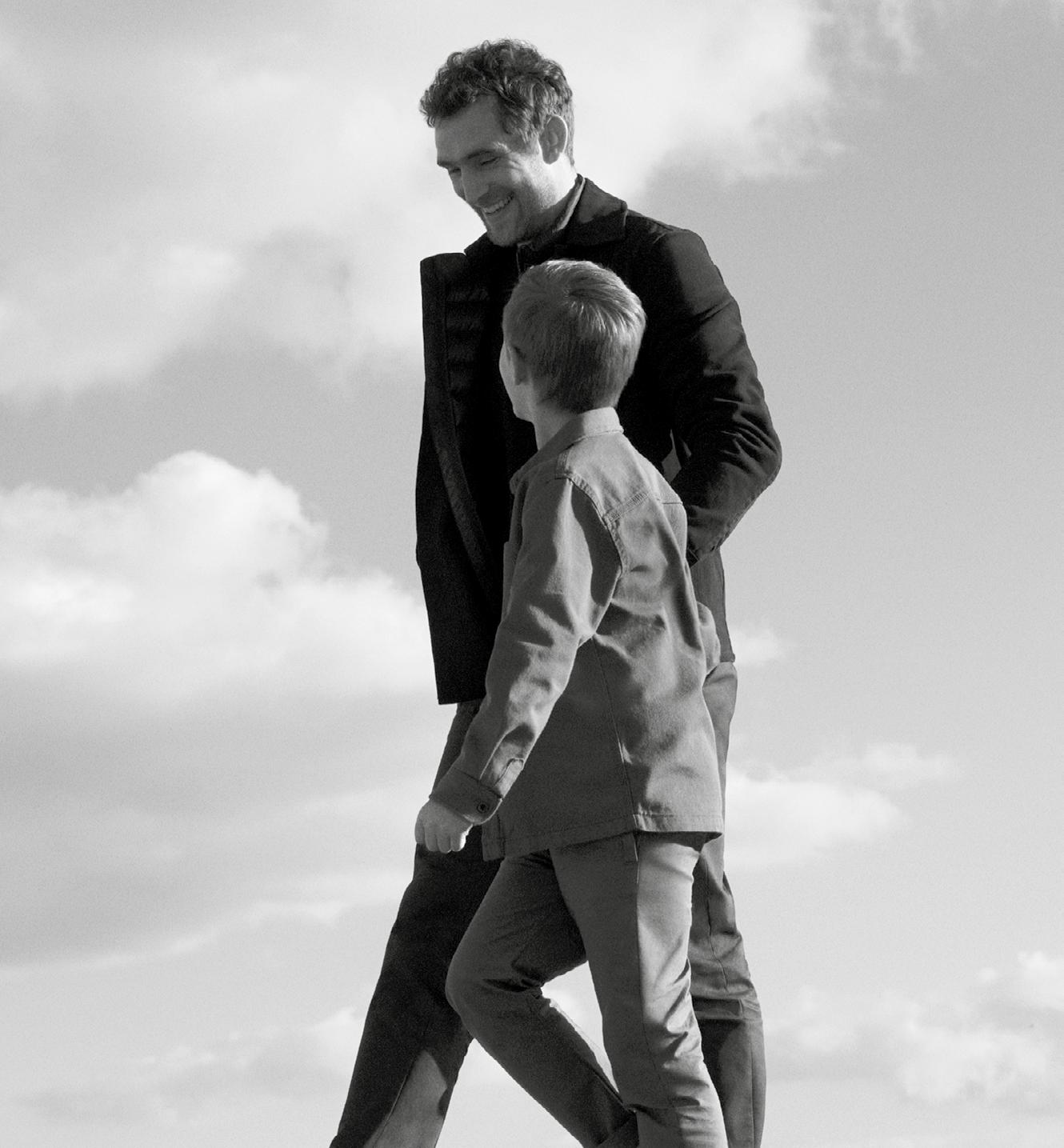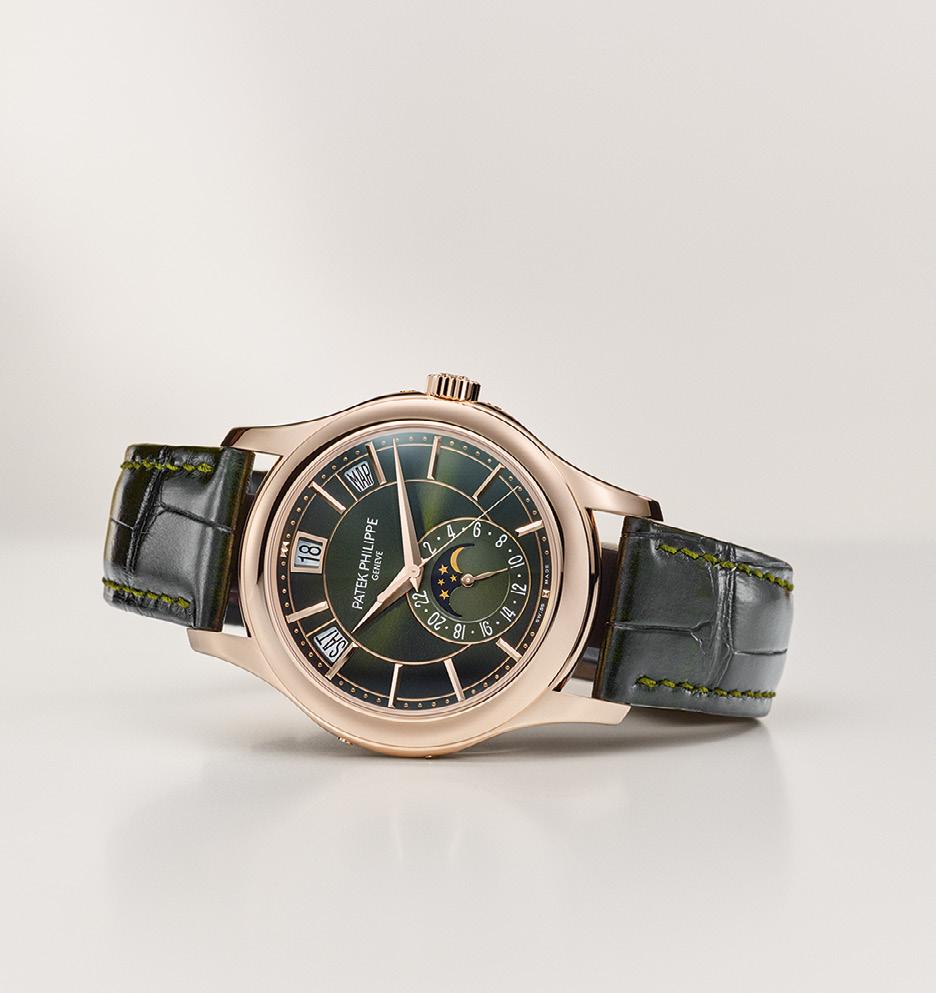

ARQUITECTURE & DESIGN SERVICES
Make an Extraordinary Home for your Everyday Life.



Make an Extraordinary Home for your Everyday Life.
Welcome to this one-of-a-kind architectural masterpiece, built on the most spectacular plot with breathtaking views of Puerto Banús and the entire coast. This luxurious property is set to be completed and delivered in the summer of 2025.
PLOT 6.909 m²
TOTAL BUILT 2.674 m²
COVERED AND UNCOVERED TERRACES 1.055 m²
BEDS 6
BATHS 6 ( +6 )
ORIENTATION South / Southwest
FORECASTED COMPLETION DATE Summer 2025
PRICE INDICATION: 35-40 M€
Don’t miss the opportunity to own this extraordinary property that offers the ultimate in luxury living experience. Information available exclusively through the Zagaleta Estate Developer’s private office at sales@lazagaleta.com PART OF ZAGALETA® GROUP

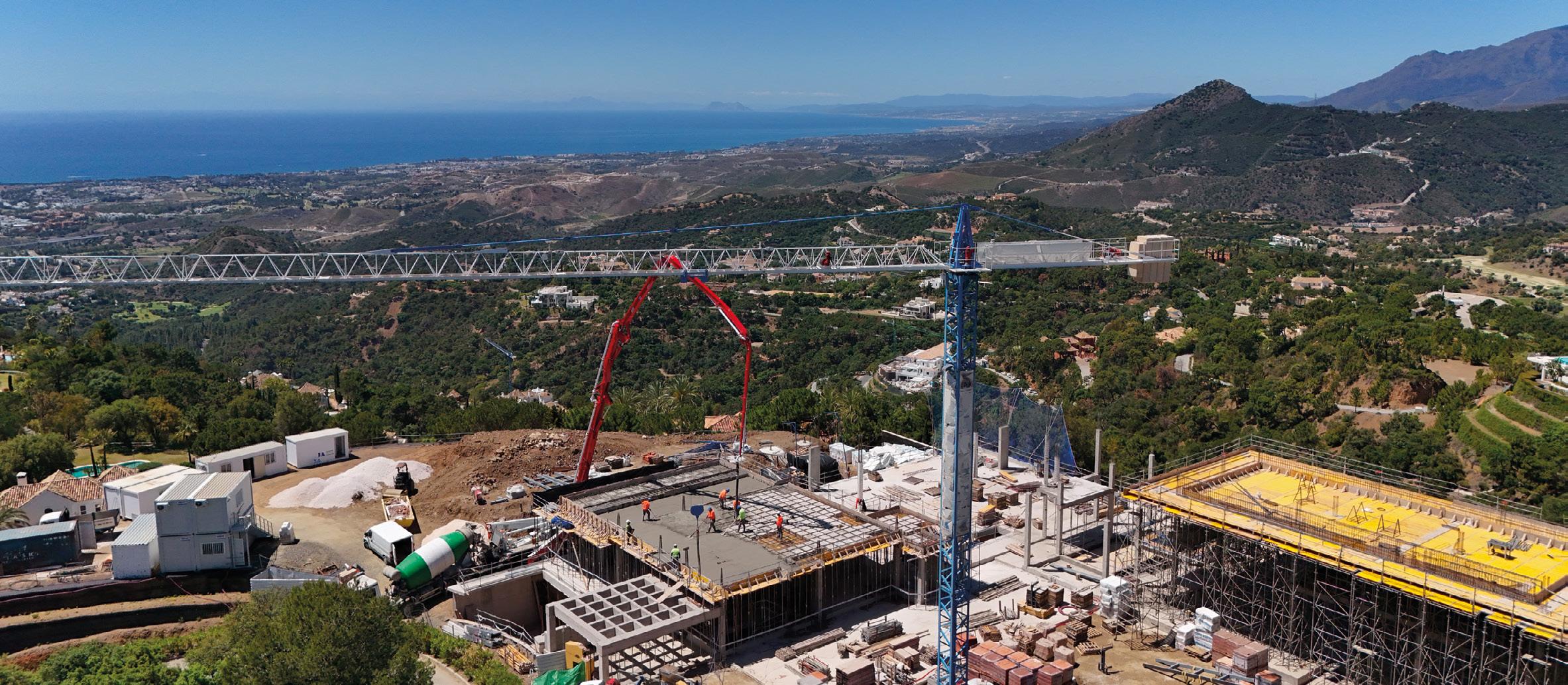

Indoor and Outdoor Pool: Enjoy the convenience of both indoor and outdoor swimming pools.
Gym and Spa: Stay fit and relax in the comfort of your own home with a fully equipped gym and spa facilities.
Fully-Fitted Kitchen: The property boasts a modern and fully-fitted kitchen, perfect for culinary enthusiasts.
Landscaped Garden: Step into a serene oasis with a beautifully landscaped garden.



Villa Z’Unica
GOLF AT ZAGALETA The
Team triumphs over U.S. at the 2023 Ping Junior Solheim


166 NATURE
Lilium: Introducing the First Electric Vertical Take-Off and Landing Jet
Landscapes: A Journey Through Our Estates
186 CULTURE
Zagaleta Security Upgrade at North and South Gates.
Efficiency Club Visits
Clubhouse at Zagaleta Country Club: A Haven of Elegance and Culinary
Remarquables de Martell
Balenciaga Museum
194
EXCLUSIVE INTERVIEW
Dr. Recatero: The best medicine is your mind.
CULTURE
Malaga: a City of Art, Museums and Masterpieces
226 CELEBRITY
Meryl Streep
232 FASHION
Thom Browne by Frette

Nº 31 | 2024
Editor: Ignacio Pérez Díaz ignacio.perez@lazagaleta.com
Publishing supervisor: Bruno Facchetti
Editorial Coordinator: Carmen Rodríguez carmen@legrandmag.com
Advertising lifestylemagazine@lazagaleta.com
Twitter: @Zagaleta www.lazagaleta.com
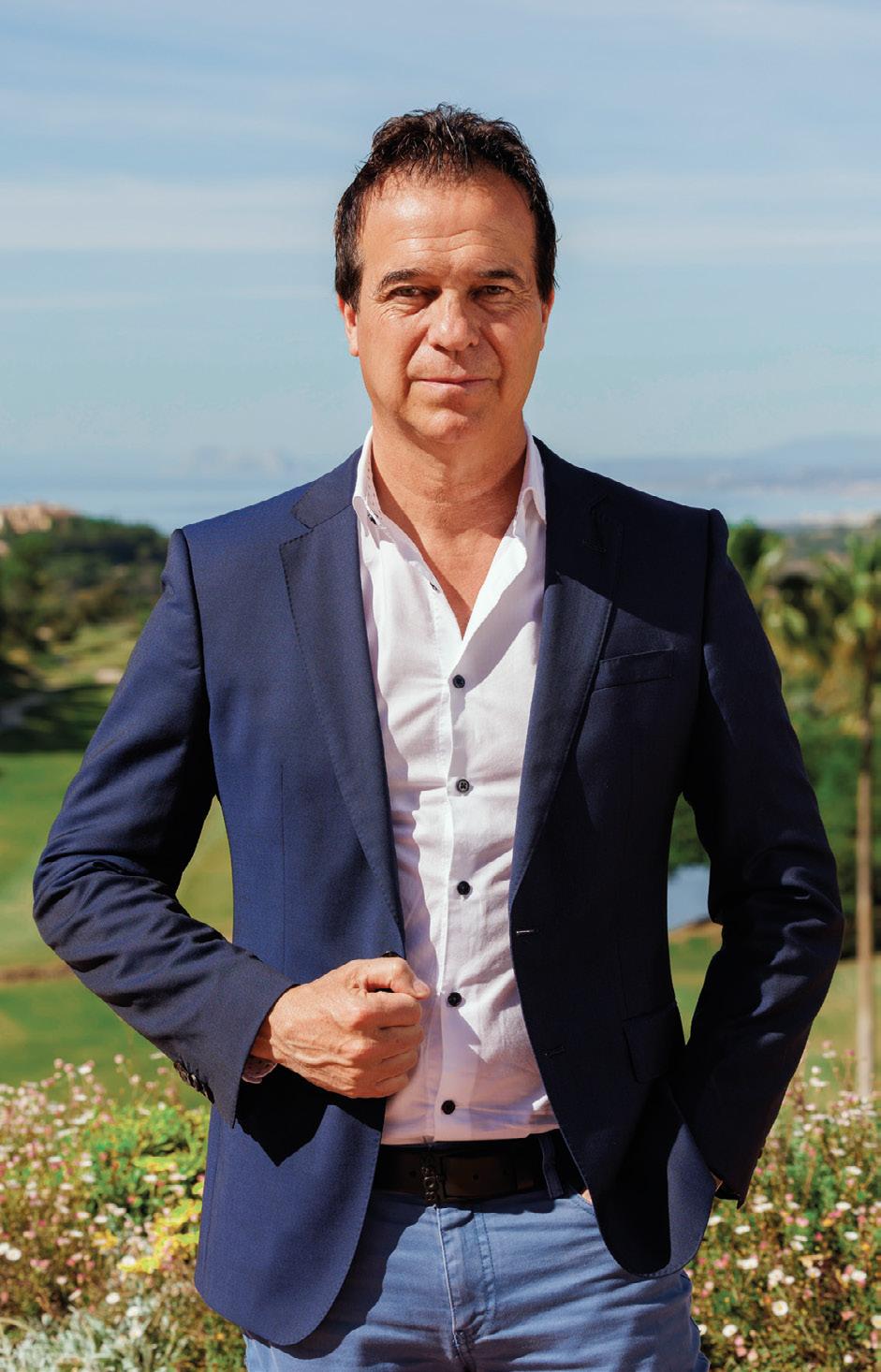
Dear Reader,
With great enthusiasm, pride and respect, I welcome you to the 31st edition of ZAGALETA LIFE MAGAZINE, a reflection of continuous growth and evolution. This issue is more than just a collection of articles; it is a tribute to the true strength behind our brand: the people. On every page, you will find stories that embody the resilience, creativity, and dedication of those who are part of our community, in one way or another.
The importance of the human talent cannot be underestimated. This strength is manifested in the ability to overcome challenges, positively influence our environment, and contribute to collective progress. We firmly believe that the power of each individual is essential for the success of our company and the satisfaction of our clients. This edition is dedicated to highlighting how the strength of people drives every aspect of our operation: from a golf experience, to conceptualizing a unique house or the organization of an exclusive and personalized service for a client.
Starting on page 76, I invite you to meet the key executives of our group. These articles offer an in-depth view of the strategic minds leading ZAGALETA®, but we also want to acknowledge all our employees. Although not everyone appears in this publication, each one plays a crucial role in what we have achieved and what we continue to build.
In addition to celebrating our people, this edition also explores a theme close to our hearts: heritage. It is not just a word; it is the core of our identity. Founded in 1991 by the visionary, His Excellency Don Enrique Pérez Flores, our company has grown on the pillars of tradition, innovation, and excellence. This legacy is a
“At ZAGALETA®, we firmly believe that the power of each individual is essential for the success of our company and the satisfaction of our clients.
This edition is dedicated to highlighting how the strength of people drives every aspect of our operation, from customer service to innovation in our products and services.”
Ignacio Pérez Díaz Executive Chairman, Zagaleta® Group
combination of our history, our values and our culture, all of which we have transmitted over the years.
ZAGALETA’s legacy, combined with the constant effort, talent, and vision of our team, is what distinguishes us. Each member of our organization, from the executives to the field staff, brings their own strength and dedication, making a vibrant and dynamic community.
In this edition, we not only celebrate our past but also look to the future with a mix of optimism and determination. Our commitment is to continue building on the foundational values that have brought us here, while innovating and growing to offer the best to our community. The strength of people and our heritage are the pillars on which we will continue to develop our future.
We invite our readers to immerse themselves in the world of ZAGALETA®, to learn the inspiring stories of the people who make it possible, and to appreciate the rich legacy we have built together. We hope this edition provides you with a deeper understanding of our MISSION and the VALUES that guide us.
On behalf of the entire team, I thank you for your continued support and trust. I wish you a pleasant reading and hope you find inspiration and appreciation in what we have built together within these pages.
Welcome to our ZAGALETA® world! Enjoy the content and have a great summer.
Warm regards.

Majarambuz: a preview of Zagaleta Group’s new project next to Sotogrande
36 holes Championship golf by TOM DOAK
SINGLE VILLAS | LUXURY HOTEL | BRANDED RESIDENCES | MARKET PLACE | BEACH CLUB | EQUESTRIAN CLUB NATURE | LIFESTYLE | EXCLUSIVE | FAMILY ORIENTATED | SECURITY | GATED COMMUNITY

La Zagaleta Group, synonymous with luxury living and innovative developments, unveils its latest endeavor: Majarambuz. This prestigious project, located next to the Sotogrande area, is set to elevate the golfing experience to unparalleled heights. Spearheaded by renowned golf-course architect Tom Doak, Majarambuz aims to set a new standard for luxury golf clubs in continental Europe. Formerly known as Valderrama II, Majarambuz is poised to become a beacon of exclusivity and sophistication. With plans for either 18 or 36 holes, the project has obtained all necessary permits and is ready to begin construction once Doak’s designs are finalized. Valderrama 07, a subsidiary of La Zagaleta Group, is dedicated to ensuring that Majarambuz emerges as one of the most sought-after golf destinations on the continent.
Jacobo Cestino, CEO of La Zagaleta Group, provides insights into this ambitious project. From its inception in 2016, Majarambuz has been meticulously planned to offer a holistic resort experience. The development comprises four key components: residential, hospitality, golf, and leisure. With 62 single villas, 40 luxury condominiums, and a boutique hotel, Majarambuz promises to cater to the most discerning clientele.
Set against the backdrop of Castellar de la Frontera, Majarambuz boasts breathtaking natural beauty and unparalleled tranquility. Nestled within 220 hectares of pristine landscapes, the resort offers a perfect blend of seclusion and accessibility. Its proximity to Sotogrande, a renowned tourist destination, further enhances its appeal, making it a prime location for both leisure and sport.
The selection of Tom Doak as the architect for Majarambuz reflects La Zagaleta’s unwavering commitment to excellence. Doak’s minimalist design philosophy, coupled with his illustrious portfolio, ensures that Majarambuz will be a masterpiece of golf course architecture. With six courses ranked among the world’s top 100, including Pacific Dunes and Cape Kidnappers, Doak brings a wealth of experience and expertise to the project.
Tom Doak, the Mastermind Behind Majarambuz’s Golf Course, Redefining Sporting Excellence in Sotogrande.
Majarambuz is not just a golf club; it’s a lifestyle destination. With amenities such as equestrian facilities, commercial areas, and bio facilities, the resort caters to the diverse interests of its guests and residents. Moreover, its commitment to environmental sustainability underscores its dedication to responsible development.
Majarambuz Golf Club, set to be one of Continental Europe’s most exclusive clubs, will offer membership strictly by invitation. With a limited membership of approximately 300, the club will boast impeccable facilities and unparalleled service. Its secluded location and stringent access policies will further enhance its allure, making it a coveted destination for golf enthusiasts.
As construction progresses and plans take shape, Majarambuz stands poised to redefine luxury golf in Andalucía. With its blend of opulence, sustainability, and exclusivity, Majarambuz promises to set a new benchmark for golfing excellence in Europe. Whether you’re a passionate golfer or a discerning traveler, Majarambuz invites you to experience the epitome of luxury living amidst the stunning landscapes of southern Spain.
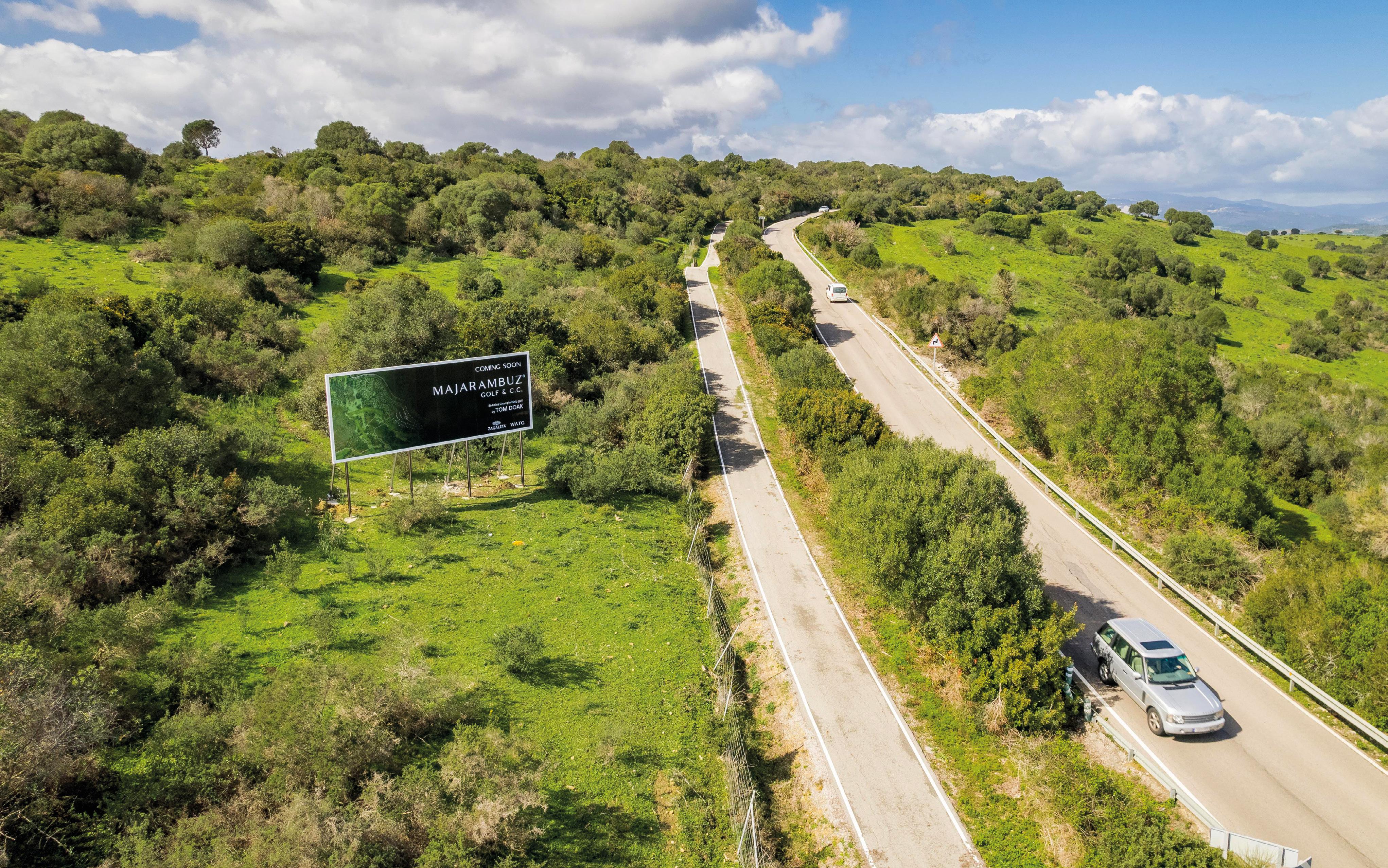

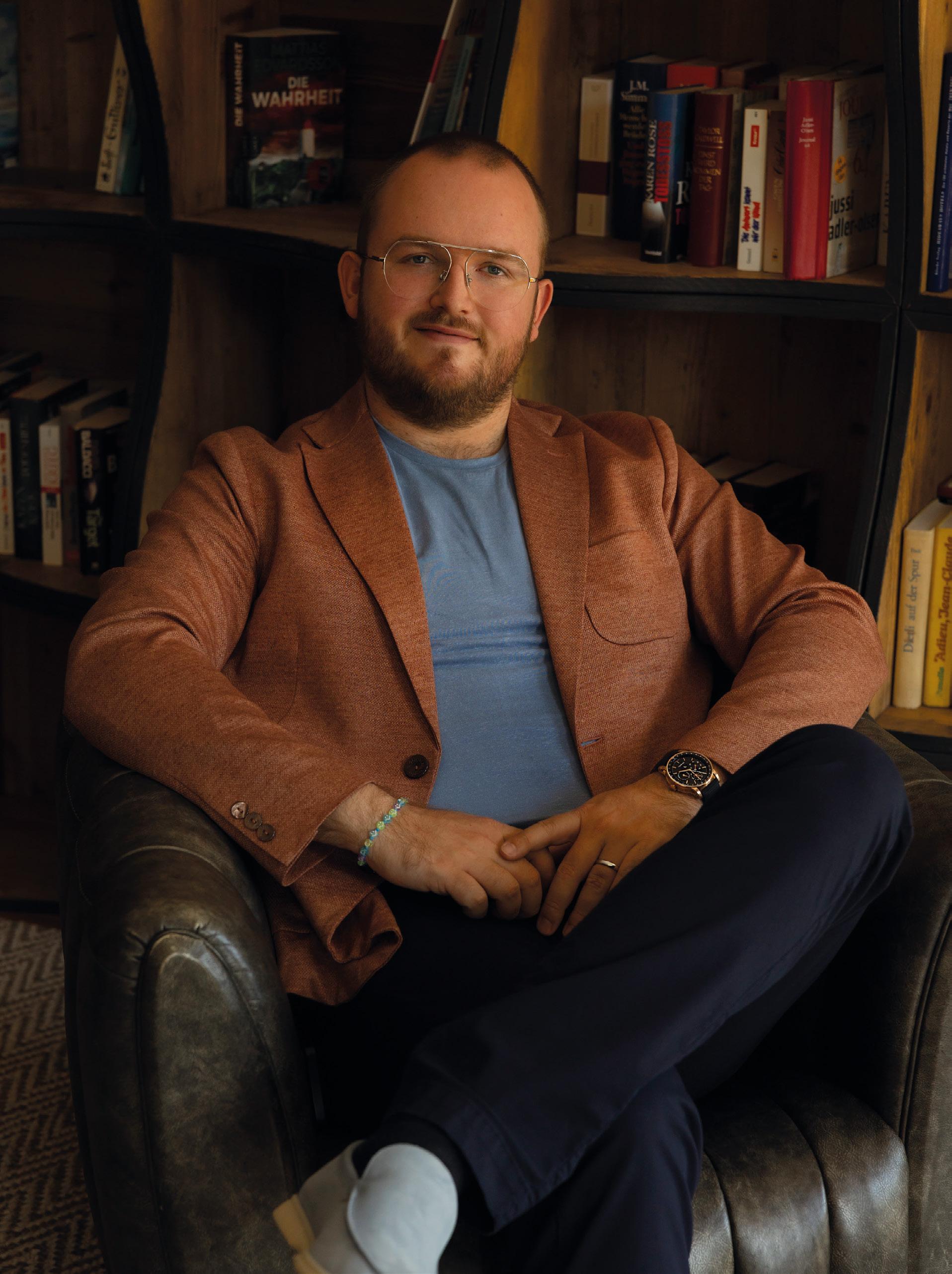
Entrepreneurial Visionary and Innovator
In the bustling landscape of global entrepreneurship, and the quick changing of interests and needs in the global market, Gregor Piëch found his place to create a structure of companies which follows successfully his new solutions and innovative technologies for users in aspiring markets. His entrepreneurship is leaded by the interests of customer needs and opportunities in various markets.
The journey started right after his graduation in school in the very beginning of his twenties. He decides not to move on with an academic degree, rather he chose the world of opportunities in his entrepreneurial path. Together with his wife Franziska Maria Piëch they lead their companies as a team. Their collaborative dynamic, complementing skills, and steadfast mutual support underpin their success. Through diligence, determination, and a profound bond, they build their own flourishing entrepreneurial foundation, a testament to their love, commitment, and forward-thinking vision. Gregor’s entrepreneurial journey, deeply influenced by his familial heritage, showcases a seamless fusion of legacy, innovation, and personal commitment to both business and family life. As the son of Ferdinand Piëch, a towering figure in the automotive industry, Gregor has not only inherited an understanding of business but has also embodied the pioneering spirit that characterized his father’s tenure at Volkswagen and Porsche.
Ferdinand Piëch’s influence on the automotive world cannot be overstated. As the grandson of Ferdinand Porsche, the founder of Porsche and the designer of the original Volkswagen Beetle, Ferdinand Piëch was destined for automotive greatness. His career at Volkswagen Group is particularly noted for transforming the company from a regional manufacturer into a global powerhouse. Under his leadership, Volkswagen aggressively expanded its portfolio, acquiring brands like Bentley, Bugatti, and Lamborghini, which diversified the company’s offerings and cemented its status in the luxury and performance segments.
The Genesis of a Visionary Entrepreneur.
Gregor Anton Piëch embarked on his path to entrepreneurial world by founding his first company, Top Cap Holding GmbH, introducing the revolutionary click cap can solution to the market. The beginning of the company already started in his early twenties. This patented innovation revolutionized the realm of can packaging, offering unparalleled convenience and functionality. It exemplified the steadfast belief in Gregor Anton Piëch’s visionary idea and foresight into an emerging market need, long before it became apparent to the market. The success of Click Cap was not a mere flash in the pan; by the age of 30, Piëch had already founded five successful companies, each a testament to his uncanny ability to identify latent market needs and address them through innovative solutions.
entrepreneurial range but also underscores a shared mission to nurture startups and cultivate powerful, enduring brands.
Graphit Lifestyle focuses on the fusion of luxury and utility, investing in avant-garde lifestyle products and services that enhance everyday life. Among its notable investments is BoBofin, a fintech marvel revolutionizing financial services.
Graphit Neotaste, on the other hand, not only redefines dining experiences but also fuels culinary startups with the same fervour and dedication that drives their family’s success in the automotive industry.
Graphit Performance exemplifies Gregor’s dedication to transforming the landscape of mobility and automotive industries. Firmly anchored in the legacy of the Piëch family, Graphit Performance extends beyond conventional automotive services to deliver an exceptional array of premium offerings. It represents a domain where meticulous logistics seamlessly integrate with exhilarating road adventures, where the art of car detailing achieves its zenith, and where access to the most coveted supercars materializes for discerning enthusiasts.
“Innovation is not just about having a good idea; it’s about making it a reality and continuously refining it until it surpasses expectations”
Graphit Performance additionally focuses on crafting unforgettable track days, vibrant celebrations of speed, precision, and the joy of driving. These events are more than just about pushing performance limits; they’re immersive experiences that unite enthusiasts, fostering a vibrant community bonded by a love for automotive excellence.
For this company, the devotion to impeccable vehicles is more than just a duty—it’s determination. Their dedication to preparing and perfecting each automotive gem is fueled by passion for brilliance, ensuring that every vehicle that leaves their care is not just flawless, but a true masterpiece.
Beyond these early triumphs lies the expansive realm of Graphit Holding, a conglomerate proudly co-owned with his wife, serving as the umbrella entity for three distinct yet synergistic firms: Graphit Lifestyle, Graphit Neotaste, and Graphit Performance. This triumvirate of companies not only encapsulates Piëch’s vast
Through Graphit Performance, Gregor Anton Piëch offers a gateway to a world where mobility transcends utility to become an art form. It’s a world where every road experience is an epic journey, every event is a celebration of automotive culture, and every supercar is a treasure of engineering and design. Within this company, the legacy of the Piëch family continues to thrive,
Franziska’s profound understanding of the luxury market and her meticulous attention to customer experience complement Gregor’s innovative vision.
pushing the boundaries of what is possible in the world of automotive excellence.
Gregor Piëch’s entrepreneurial philosophy is encapsulated in his belief that innovation is the cornerstone of success, coupled with the relentless pursuit of excellence and continuous refinement.
“Innovation is not just about having a good idea; it’s about making it a reality and continuously refining it until it surpasses expectations,” Piëch reflects, a principle that permeates every facet of his business endeavours. His holistic approach to business—focusing on creating synergies and tailored solutions—ensures that his companies not only meet but exceed partner expectations.
In the conviction that family and entrepreneurial life are not a contradiction, but rather can represent a synergy, a harmonious unity manifests itself in this family. Since the birth of their two children, Louis and Lilly, their motivation to be aspiring in business and at the same time to be a loving family role model has grown daily. Whether in the role of entrepreneurs or parents - the connection between these two spheres is characterised by joy and responsibility. This synergy of the familys success and their personal satisfaction provides a more holistic view of their lives, underscoring what it truly means to lead a meaningful and impactful existence.
Gregor’s philosophy integrates a strong work-life balance, ensuring that his professional endeavours do not overshadow his family commitments. By setting boundaries and prioritizing time with his family, he maintains a rich and fulfilling personal life, which in turn fuels his professional energy and creativity. This balance helps sustain his long-term vision both for his business ventures and his family’s well-being, reflecting a modern approach to leadership that values personal fulfilment as much as professional achievements.
A pivotal aspect of Gregor’s success is his partnership with his wife, Franziska Maria Piëch, whose expertise in luxury hospitality has been instrumental in shaping the strategic direction of Graphit Holding. Franziska’s profound understanding of the luxury market and her meticulous attention to customer experience complement Gregor’s innovative vision, making her an invaluable co-strategist in all their business ventures.
Franziska’s background brings a unique perspective to the management and growth of the Graphit enterprises. Her insight ensures that each business initiative under the Graphit umbrella not only meets, but also exceeds the expectations of their elite clientele. This is evident in the detailed attention given to customer service, the quality of the consumer experience, and the overall aesthetic and functional standards of their offerings.
Together, Gregor and Franziska have created a dynamic partnership that effectively merges sharp business acumen with a profound personal commitment. They approach decision-making with a unified strategy that reflects both their professional objectives and their family values. This collaborative approach extends to all aspects of their life, enhancing their effectiveness as business leaders and as parents.
Their teamwork is built on a foundation of mutual respect and shared goals, ensuring that both their business and family life thrive. By working together on all projects, they have not only strengthened their relationship but also their business’s market position, setting a powerful example of a successful personal and professional partnership in today’s fast-paced and challenging business environment.
In sum, the life of Gregor Anton Piëch encapsulates the essence of modern entrepreneurial leadership, marked by an impressive blend of business innovation, strategic partnership, and dedicated family involvement. His story is a compelling narrative of achieving professional heights without compromising on the joys and responsibilities of family life, making him a possible role model for aspiring young entrepreneurs.
As we peer into the future, it is evident that Gregor Anton Piëch’s entrepreneurial journey is far from completion. With his unwavering commitment to innovation, excellence, and strategic investment, Piëch is keen to introduce even more transformative developments to the world. The Piech family is showcasing a possible family friendly approach, which meticulously balances diversity, strategic foresight, continuous improvement, and the harmonious blend of professional and personal life.
Gregor Anton Piëch’s legacy is a beacon for aspiring entrepreneurs, illuminating the path to success through innovation, perseverance, and a deep understanding of the intricate tapestry of global business dynamics. As the business world eagerly anticipates his next ventures, Piëch’s story remains a compelling narrative of visionary entrepreneurship, destined to inspire generations to come.
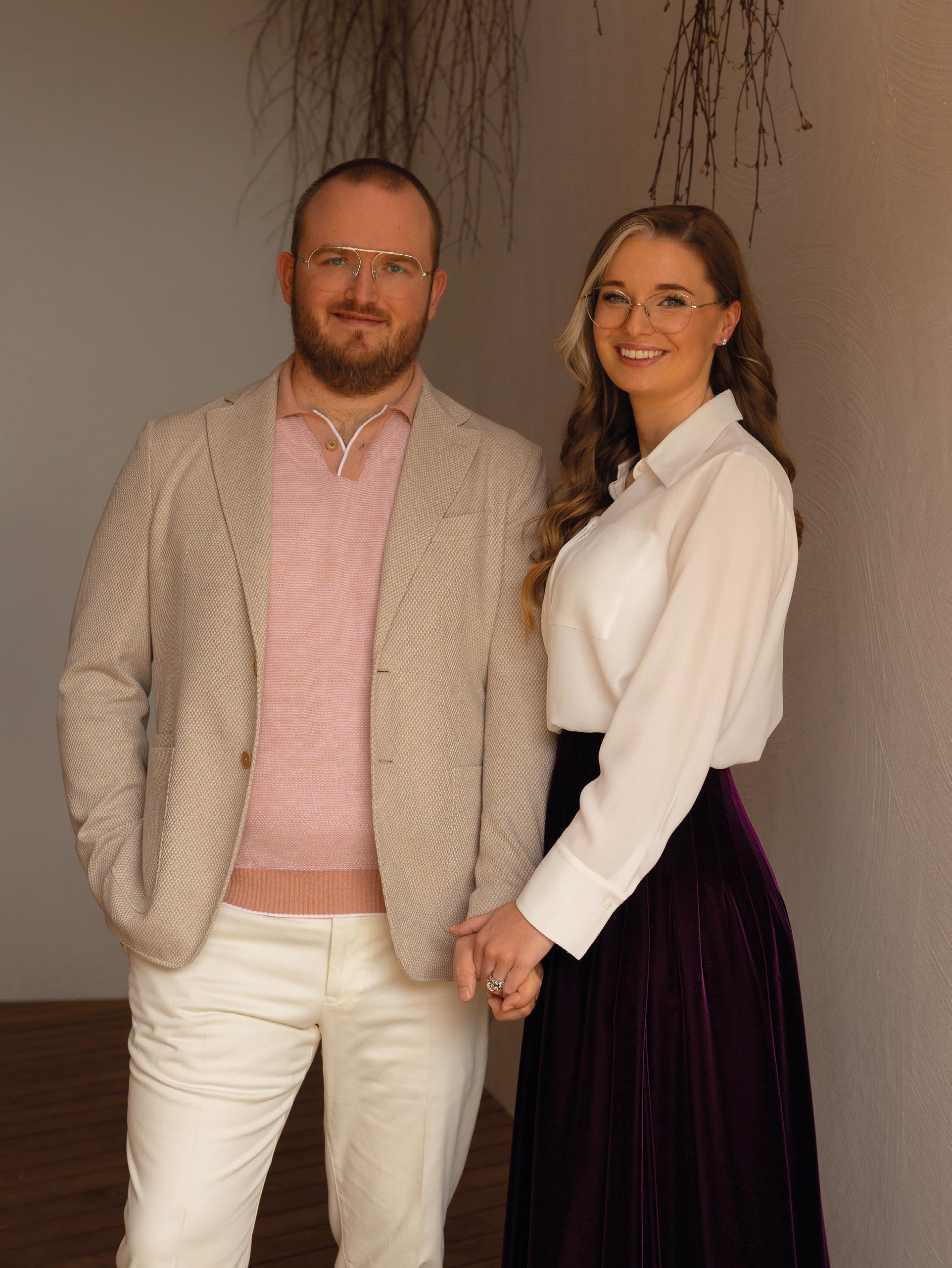
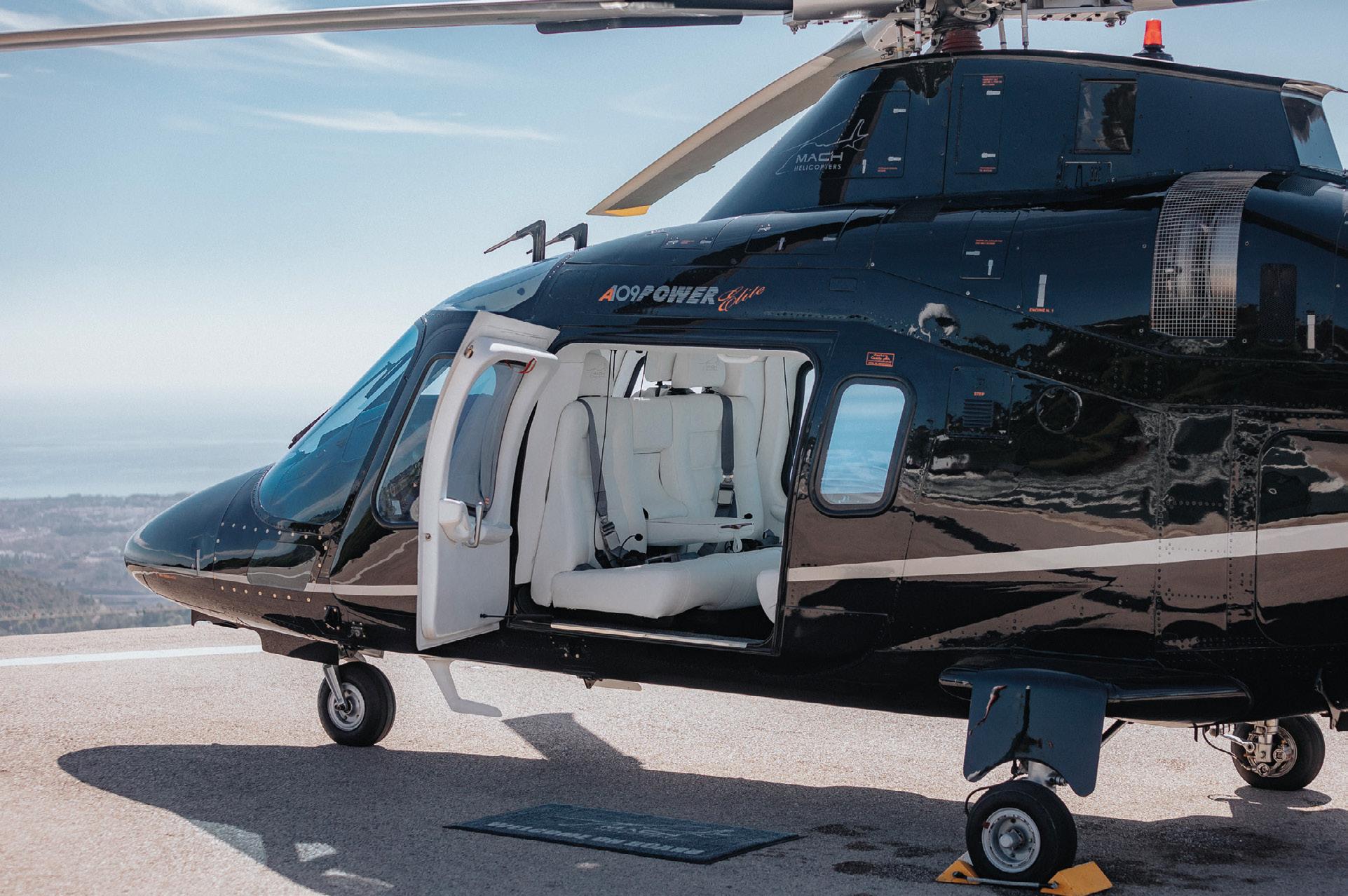
Private and personalized transfers
Powerful 6 seater twin-turbine helicopter
Range 800 + km
Average cruising speed 275km/h
The safety of passengers is our priority. Liability insurance related to the helicopter service is solely the responsibility of the company providing the service, which is also the owner of the helicopter, ensuring peace of mind. and protection during the flight.

Experience

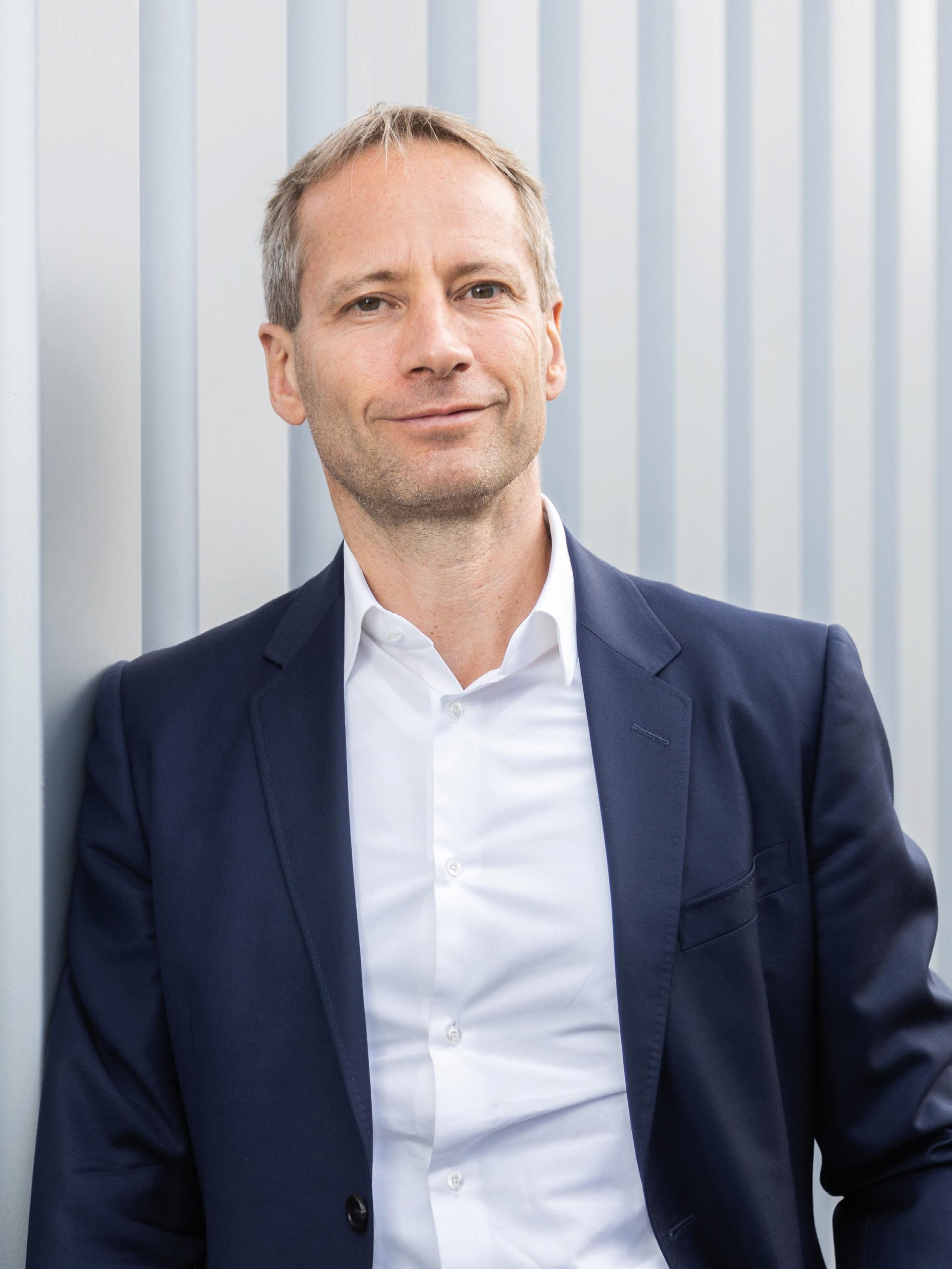
CHAIRMAN AND OWNER OF INTERZERO AND ALBA GROUP ASIA; PRESIDENT
“Working together for a world without waste”.
From the climate crisis to scarce raw materials and fragile supply chains, an array of global challenges makes a sustainable circular economy an absolute necessity. One of the most committed and successful advocates of this approach is Dr Axel Schweitzer, owner of Europe’s leading circular economy service provider Interzero and ALBA Group Asia. The entrepreneur harnesses his foresight, passion and sporting ambitions to create forward-looking circular systems designed to create value. His vision is a world without waste – a world worth living in today and for the generations of tomorrow.
“ Recycling instead of wasting resources ” was the motto of Berlin-based waste management company ALBA back in the 1970s. Axel Schweitzer got involved in his parents’ company at an early age and took charge of the family business with his brother Eric in 1998. Since then, he has actively helped to shape and promote rapid development in the waste management and recycling industry, not just in Germany but around the world. Schweitzer is driven by his belief that global challenges can only be solved by working together and require an open and constructive dialogue across corporate and international borders. As we move towards a world without waste, we need to learn from each other and combine our strengths, particularly when it comes to technology, digitalisation and artificial intelligence. Collaboration and knowledge sharing between Europe and Asia is particularly close to the engineering graduate’s heart. Schweitzer, who lives in Singapore with his family, has served as vice-chairman of the AsiaPacific Committee of German Business (APA) for many years. This is why he assumed responsibility for plastics recycling and circular solutions worldwide as well as the Asia business when the family business was realigned in 2022.
A pioneer of sustainable transformation. The name of the realigned company reflects Schweitzer’s vision. Interzero stands for a world in which raw materials are systematically recycled, waste is avoided as much as possible, and no resources are wasted. Interzero works for and with its customers to develop tailor-made closed loop solutions – both analogue and digital –and handles every step in the plastics recycling process. In doing so, the company combines decades of experience with innovation and modern technology. With operations including five sorting
plants for lightweight packaging in Germany, Interzero sorts more than 800,000 tonnes of waste each year. Its key objective is to ensure that raw materials are brought back into manufacturing. Yet it can’t do this alone. Interzero relies on many different alliances, networks and collaborative business models to close loops sustainably. Examples of this include the digital platform for efficient waste management – the Zero Waste Manager – in partnership with Resourcify, or the global Encory joint venture from Interzero and the BMW Group for the recycling of vehicle parts.
“ If you can think it, do it! ”.
Sustainability is much more than a pie-in-the-sky idea for dedicated triathlete and basketball fan Axel Schweitzer. Instead, it is all about clear goals, effective strategies and measurable results. Take the Global Footprint Network’s latest calculations as an example. Without Interzero’s recycling activities, the threshold for Earth Overshoot Day would have been passed seven minutes and 16 seconds earlier worldwide in 2023. Researchers from the renowned Fraunhofer UMSICHT Institute calculated that Interzero saved more than 8.7 million tonnes of primary resources by managing about 2.1 million tonnes of recyclables in a closed loop, and avoided one million tonnes of greenhouse gas emissions in 2022 alone – figures that should serve as encouragement and inspiration for the circular economy service provider’s customers and partners. It is no coincidence that the company has just been awarded the 2024 German Sustainability Award in two different categories. “This award belongs to everyone who is already working with us to shape the circular economy of tomorrow,” says Schweitzer, and it strengthens our belief that we can achieve great things if we work together!
“Whether in sport or in business, anyone who is prepared to step out of their comfort zone and stand up for their beliefs in a disciplined way will achieve lasting success.”
Dr Schweitzer, as well as being a successful entrepreneur, you are also a keen athlete and president of the ALBA BERLIN basketball club. What shared values do sport and entrepreneurship have ?
First of all, sport is very important to me personally; it gives me energy and is the ideal counterpoint to my professional life. No matter where my business trips take me, I always make sure I have a pair of running shoes in my suitcase. And yes, there are plenty of parallels you can draw between sport and entrepreneurship. Whether in basketball or business, anyone looking to succeed needs to be able to work as part of a team, be willing to collaborate with others and fight for a common goal. Ambition and bravery, staying power, discipline and resilience are also vital in both areas. Ultimately, it’s also important to be able to overcome obstacles, adapt rapidly to new situations and carry on when others give up, and then celebrate successes together. Last but not least, it’s all about fair play. Only those who are prepared to take responsibility, stand up for what they believe in and stick to their mindset no matter what the ‘mainstream’ thinks about it will achieve lasting success and recognition. That’s as true for sports clubs as it is for international companies.
How did your special relationship with basketball begin – and how are you helping to boost top side ALBA BERLIN today ?
ALBA and Interzero have been very closely associated with the “Albatrosses” for more than 30 years now. After my father formed the partnership with ALBA BERLIN in 1991, it’s an honour for me to continue as the club’s president and owner today. I’m particularly proud of the unique mindset, team philosophy and exceptional youth development activities we’ve been able to establish there. Interzero plays an active role as the team’s sponsor and environmental partner. To give one example, we’ve just launched a smartphone collection campaign so that the fans can get involved in putting as many resources as possible back into the loop. With ALBA BERLIN our goal is to be an institution that still exists in 100 years’ time and we are aiming to turn the serial German league and cup winner into sustainability champions, too.
Talking of champions, Interzero just scooped two prizes at the 2024 German Sustainability Award, the biggest accolade of its kind in Europe, winning in the Waste Management and Recycling Industry category and collecting a special award in the Resources field of transformation. In what ways does your work add particular value ?
The expert jury highlighted Interzero as a pioneer of urgently needed sustainable transformation and trailblazers for the circular economy of the future. That’s the kind of acknowledgement we can be very proud of. The fact is that closing material loops plays a major role in conserving resources and reducing climatedamaging emissions. Scientific analysis carried out by institutes such as Fraunhofer UMSICHT regularly highlights the specific contribution Interzero makes by working with its customers and
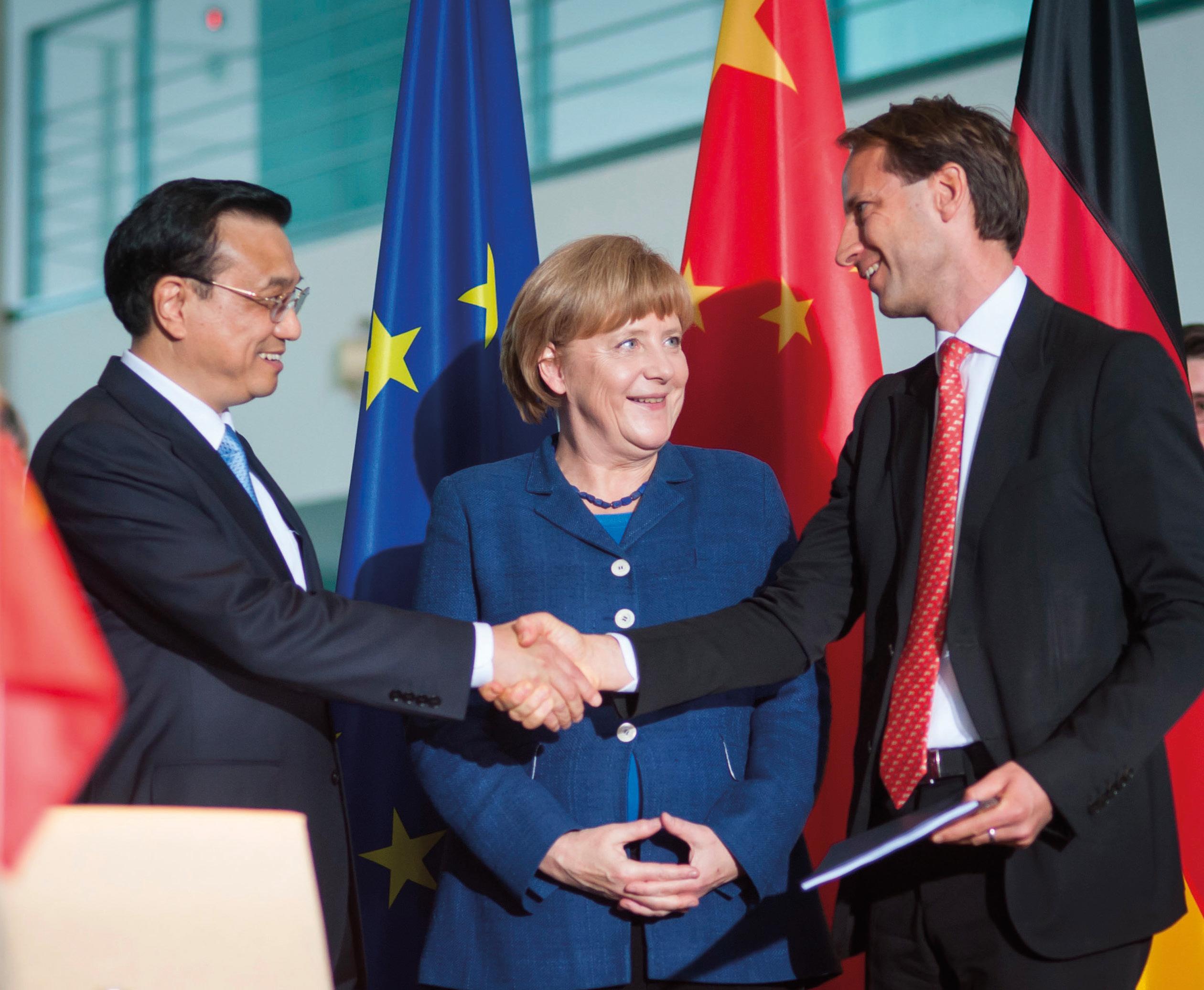
Dr
Axel Schweitzer, former German chancellor Dr Angela Merkel and Li Keqiang during the visit of the former Chinese Prime Minister to Berlin in May 2013.

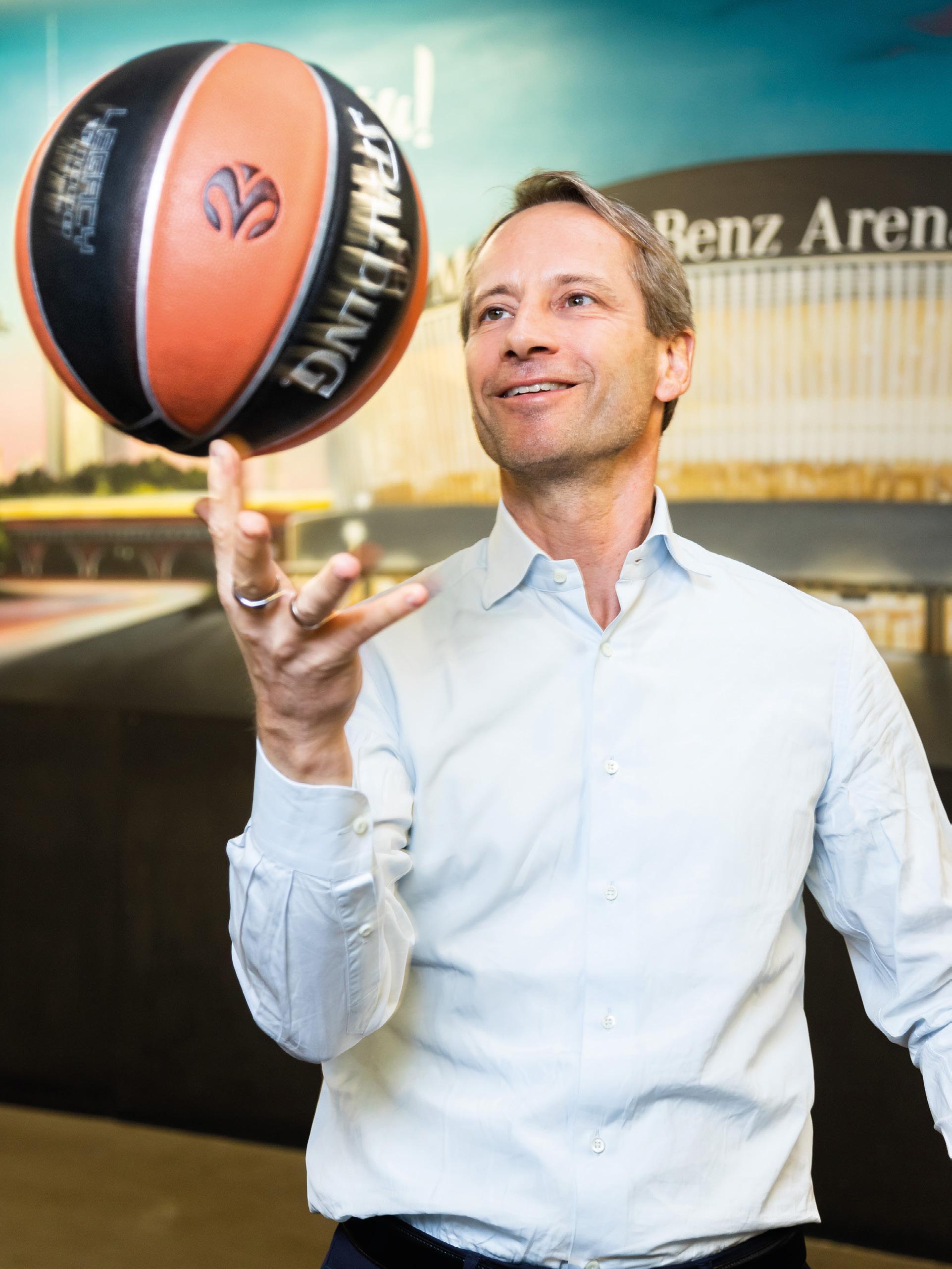
Dr Axel Schweitzer is an enthusiastic basketball fan and President of the ALBA Berlin basketball club, with which he has been associated for over 30 years through his commitment to the sport. He is particularly proud of the club’s work with young players - even across national borders. Just recently, ALBA Berlin Basketball and the Ministry of Sports in Singapore entered into a co-operation agreement with the aim of setting new standards in sports education and talent development.
partners. The impact of our work becomes particularly clear when you look at Earth Overshoot Day – the day on which humanity exhausts all the natural resources theoretically available to it in that year. The Global Footprint Network (GFN)’s latest calculations for Interzero revealed that without our recycling activities, we would have passed the imaginary threshold for Earth Overshoot Day seven minutes and 16 seconds earlier in 2023. Results like this encourage us to continue directing all of our passion and effort into creating a world without waste.
Can you tell us more about your mantra “For a world without waste”? How did it come about ?
Our journey started with a simple question: “What if?” What if we stopped wasting waste and thinking in linear terms? What if everything we consume could be put back into the cycle? Ultimately we have made this question our vision. Every day, we work to bring this vision to life.
We’re all familiar with the images of islands of plastic in the oceans – and we’re all feeling the effects of climate change. Minimising pollution and tackling the climate crisis are huge global challenges and the subject of much debate. We want to take responsibility and create a world for our grandchildren that is still worth living in. We want to take decisive action, and do it now. Step by step, we are working with our customers and partners to create a genuine circular economy that protects our climate and resources. We are fully committed to achieving our vision and are working flat out, as waste prevention, re-use and materials recycling not only make a contribution to easing the burden on our planet but also open up new long-term prospects for the economy and society. A Win-Win in the truest sense !
What role does having the right mindset play – for you personally and for your team’s collaborative work on Interzero’s mission ?
I firmly believe that the timeless and essential factor in personal growth is discipline – essentially, setting a goal and sticking to it. It’s about stepping out of your comfort zone and working on yourself. You don’t have to run a marathon every day, but you should set goals and strive to achieve them – whether the sun is shining or a storm is raging. This discipline is what leads to progress and success in my opinion. What’s more, your mindset is key and provides the foundation for every successful company. The way we think has incredible power. It’s the fuel for discipline
100% for a world without waste:1 million tonnes of greenhouse gas emissions were saved by Interzero’s recycling activities in 2021.
50.000 customers across Europe around 2,000 employees.
37,700 tonnes of plastic recyclates produced in 2022.
7 minutes and
16 seconds is how far Interzero and its customers pushed back Earth Overshoot Day 2023.
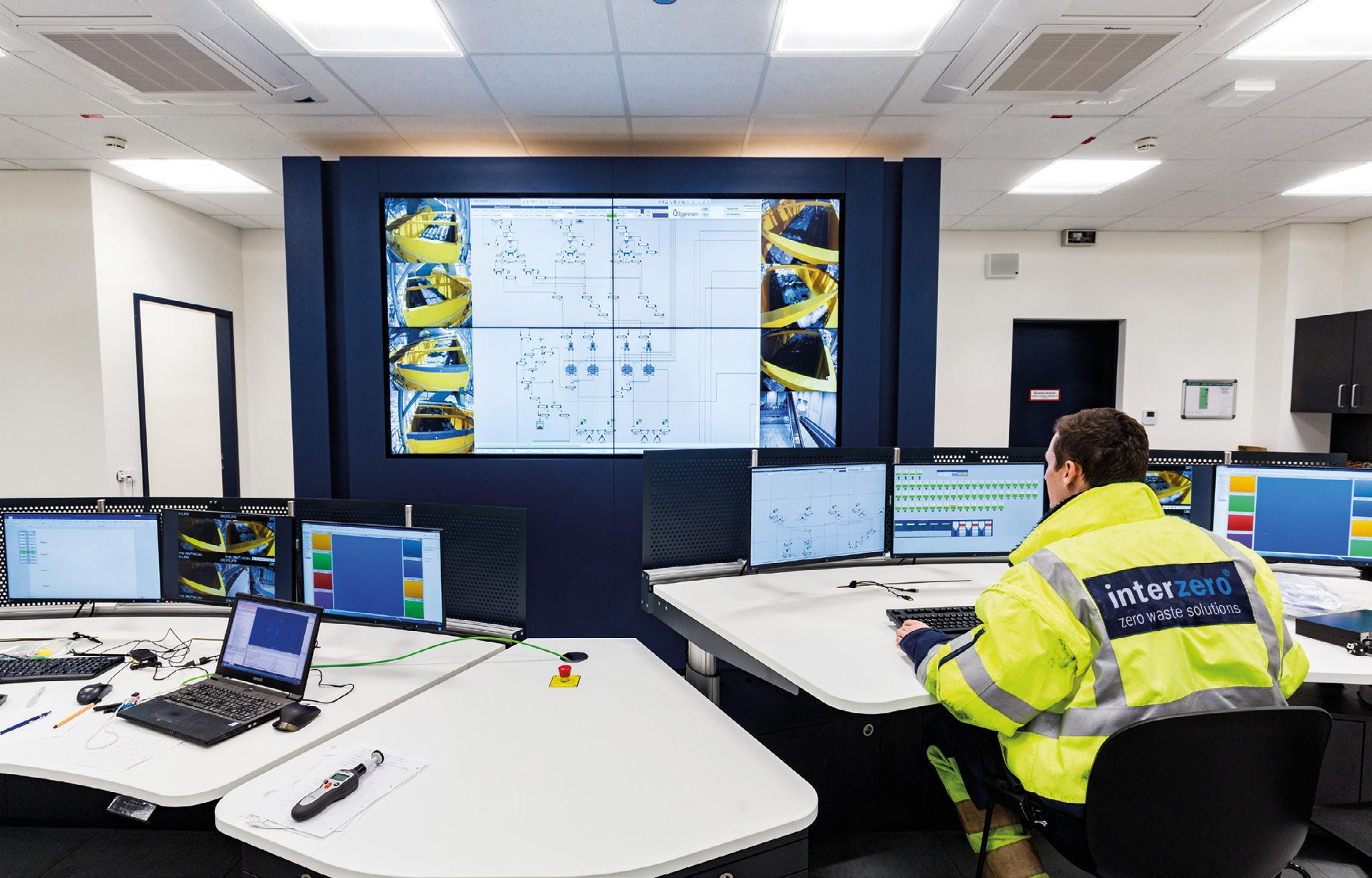
Interzero operates five of the ten largest sorting plants for lightweight packaging and mixed recyclables in Germany, as well as three recycling plants. All processes are monitored in the control centre of Interzero’s sorting plant in Marl. (large picture) Small pictures: Sorted bales of recyclables waiting to be recycled. Big bags with regranulates in one of the Interzero recycling plants.


and perseverance that helps us achieve our goals. The power of a positive mindset is very special. It starts with one person but can quickly spread to an entire team. It creates a corporate culture that encourages each individual to grow beyond themselves. Shared inspiration and mutual support lead to a greater whole. We cannot change every individual, but we can create the framework in which growth and positive change can flourish. It is essential that culture and mindset don’t just read well on paper but are lived out in our daily actions. It’s about sharing a common approach and clear purpose, despite our diverse backgrounds. This creates a deep connection within the team and changes motivation from the inside out, making leadership and collaboration much easier. And that is exactly what drives and motivates me personally.
What role does knowledge transfer play on the journey to zero waste ?
We are calling on companies and consumers alike to join us on our journey to a future without waste. Ultimately, ‘waste’ is simply whatever cannot be avoided, reused or recycled. We want to reduce these residuals as far as possible – for example, by setting up multi-use systems, designing packaging to be recycling-friendly, and closing one material loop after another. We also founded our own Interzero Academy to raise the necessary awareness. Our experienced experts support communities by providing training sessions across several European countries and making companies fit for the requirements of the circular economy.
The switch from linear to circular processes poses a challenge for many companies. How do you specifically support businesses – and where do you see the biggest opportunities ?

The PET plant in Liebenau is a fully automated, ultra-modern PET recycling plant in which food-safe rPET is manufactured for the production of new PET bottles (large picture). Small pictures: Re-sorting of the cut PET flakes to ensure the quality of the raw material for the new PET bottles (rPET granulate). With recycled plastics from Interzero, manufacturers help conserve resources: as shown in a study by Fraunhofer Institute UMSICHT, Procyclen and Recythen improve the environmental footprint.
Let’s take packaging as an example. European legislation is imposing wide-ranging requirements on retailers and manufacturers in this area with regard to recyclability and the use of recycled plastics, for example. We advise and support our customers with everything they need to make the transition successfully. With our ‘Made for Recycling’ quality seal, for example, we offer an internationally recognised standard for optimising packaging. We also have the only accredited centre of competence in the EU that specialises in the analysis and development of recycled plastics – and we support companies in using recycled materials in their products and packaging. This helps them to meet increasingly strict statutory requirements and set themselves apart with their customers as responsible players in the market. The circular economy also offers tremendous opportunities for companies by creating a resilient supply of sustainable raw materials. Digitalisation is a key driver here. For example, Interzero has developed a digital twin of the recycling process chain – something we call a ‘material account’. This is already helping companies to map out their entire raw material loop and efficiently return their production scrap, products and packaging to their own loop at the end of their lifecycle.
How did your expansion into Asia come about, and what kind of projects are you pursuing there with the ALBA Group Asia ?
I’ve always been interested in different countries, cultures and practices. That might have been down to my parents’ influence, but perhaps it was just natural curiosity that drove me. Either way, ever since I was little I knew I wanted to see and explore the world while ‘building bridges’ at the same time. That’s why I also jumped at the chance to take our family business international. Key milestones in our commitment to Asia came in 2015, when we won

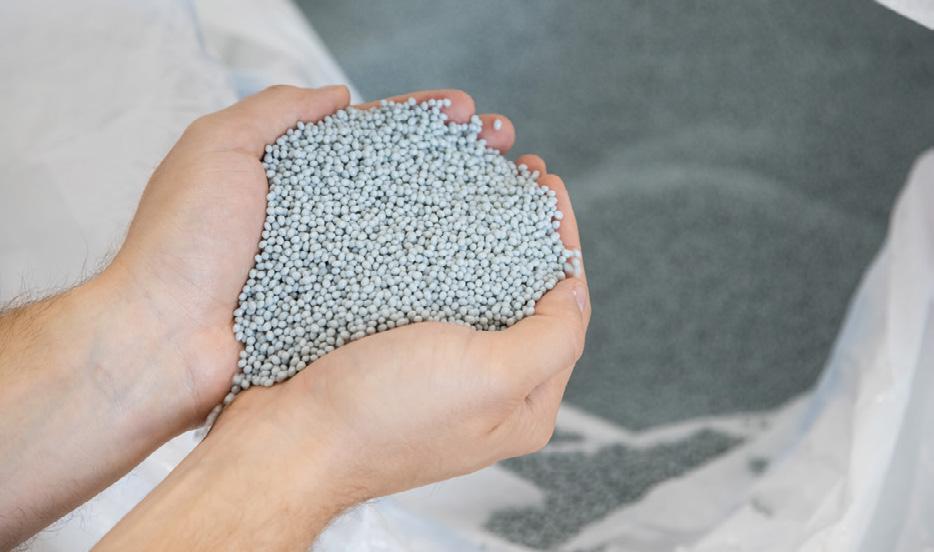
Dr Axel Schweitzer, Dr Robert Habeck and Desmond TAN, COO Wah & Hua
Pte Ltd. on the sidelines of the AsiaPacific Conference of German Business in Singapore in November 2022.
a contract to collect and recycle all electronic waste in Hong Kong, and in 2019, when we were awarded a contract to digitalise waste disposal in Singapore. At the time, these were some of the most ambitious environmental projects yet seen in Asia. Since then we have worked with our partners in Asia - such as the IFC, a member of the World Bank Group, - to launch numerous further projects. One current example is building the biggest recycling plant for food-grade PET/HDPE plastic in Central Java, Indonesia together with our partner ADB (Asian Development Bank). The project is helping Indonesia to address its growing deluge of plastic waste, as well as creating a considerable number of sustainable ‘green’ jobs and improving the social situation of many people. For me personally, that’s just as important as the project’s environmental and economic value.
Is Germany still a pioneer in the waste management sector as it was 30 years ago, and how does the European recycling market differ from its Asian counterpart?
Germany did genuinely groundbreaking work by introducing the ‘polluter pays’ principle (to make manufacturers and retailers responsible for recycling their packaging) and developing the concept of packaging recycling 30 years ago. German expertise is still in demand across the globe, particularly when it comes to modern sorting and recycling systems. At the same time, however, we can and must learn from other countries. We are experiencing an exciting period of change in the world of recycling. Europe is driving innovation with its sophisticated technology, while Asia is achieving impressive levels of material purity with manual sorting while also emerging as a world leader in the field of AI. Our aim is to connect both worlds and build a bridge between differences. One example of this is landfill mining in Thailand, which is financed by government aid – a standard we must also strive to reach in Europe. We can now support this process in Asia with European expertise and respect for local circumstances, cultures, laws, storage facilities and cultural preferences. Our aim remains the same, however –to keep materials in the loop and safeguard quality.
In November 2023, you led the German Economic delegation at the German-Chinese government meeting in China to discuss environmental issues. How can meetings like these support international cooperation?
As vice-chairman of the Asia-Pacific Committee of German Business (APA), I had the privilege of heading up the trade delegation for the seventh Sino-German Environment Forum in Taicang alongside the Federal Environment Minister Steffi Lemke who led the government delegation. The summit made one thing clear above all else: we can only tackle climate change by working with China, not without them or against them. This one country alone is responsible for around a third of our global carbon emissions. The effects of a strategic environmental partnership are immense for the world’s sustainable development. China has made great strides towards environmental protection in the last 20 years – and German companies have contributed expertise, technology, investment and social engagement to this transformation. Dialogue and a willingness to cooperate are also crucial to these efforts. Only by working together will we be able to successfully develop sustainable solutions for a global circular economy.
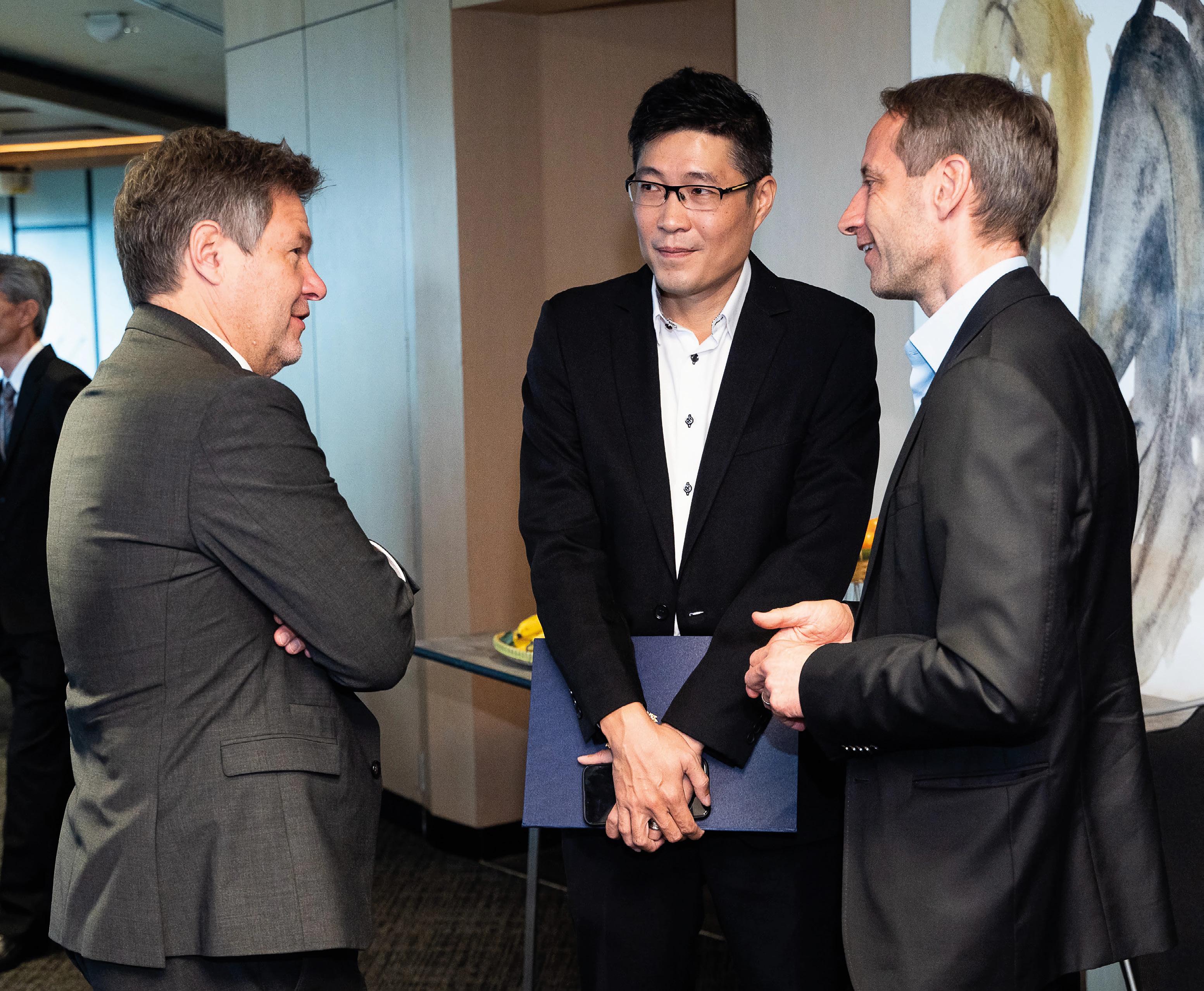


A remarkable year for women in the Nobel.

The year 2023 has been exceptional for women in the Nobel Prizes, with four female laureates being recognised alongside seven male recipients. Notably, three women— Claudia Goldin in Economic Sciences, Katalin Karikó in Medicine, and Anne L’Huillier in Physics—were awarded in disciplines traditionally dominated by men since the establishment of the Nobel Prizes in 1901. Throughout the history of the Nobel Prizes, women have been laureates 65 times, predominantly in the categories of peace and literature. An analysis of individual Nobel Prize recipients reveals a significant gender disparity, particularly in the fields of chemistry, physics, and economics, where fewer than five per cent of the awardees have been women.
Four women were awarded the Nobel Prize in 2023 for creating vaccines, for achievements in attosecond physics, for fighting against the oppression of women, and for peace.
The Nobel Prize symbolises remarkable feats in human history, honouring individuals whose contributions have profoundly impacted society. Women have played an integral role in shaping the course of history. From the trailblazing Marie Curie to the latest cohort of laureates, their remarkable accomplishments span across Chemistry, Physics, Medicine, Economics, Literature, and Peace. However, despite the progress made, the gender gap remains a stark reality, even among Nobel Prize laureates, reflecting the broader systemic inequalities that persist in today’s labour market. Fields such as chemistry, physics, and economics, in particular, continue to see significantly lower female representation. This underrepresentation is a symptom of deeper issues, most of which are caused by the fact that women step back while men step forward in their jobs, which still impedes women’s progress in science and innovation.
And no one knows more about it than the 2023 Laureate in the Economic Sciences, Claudia Goldin, a Harvard University professor who has meticulously documented women’s earnings and labour market involvement over the centuries. Her extensive research identifies the drivers of change and the key factors sustaining the gender wage gap. Goldin is the third woman to receive the Economics Prize and the only female solo winner since it was first awarded in 1969.
Women remain significantly underrepresented in the global workforce and typically earn less than their male counterparts. By delving into archives and amassing over two centuries of data from the United States, Goldin has illustrated the evolution of gender disparities in earnings and employment rates. Goldin’s findings reveal that female labour market participation did not steadily increase but rather followed a U-shaped trajectory. Married women’s participation declined during the shift from an agrarian to an industrial society in the early 19th century, only to rise again with the expansion of the service sector in the early 20th century. She attributes this pattern to structural changes and shifting societal norms regarding women’s domestic and familial roles. Throughout the 20th century, women’s educational attainment steadily rose, and in many affluent nations, it now surpasses that of men. Goldin highlighted the significance of access to contraceptive pills, which
“Goldin is the third woman to receive the economics prize and the only female solo winner since it was first awarded in 1969.”
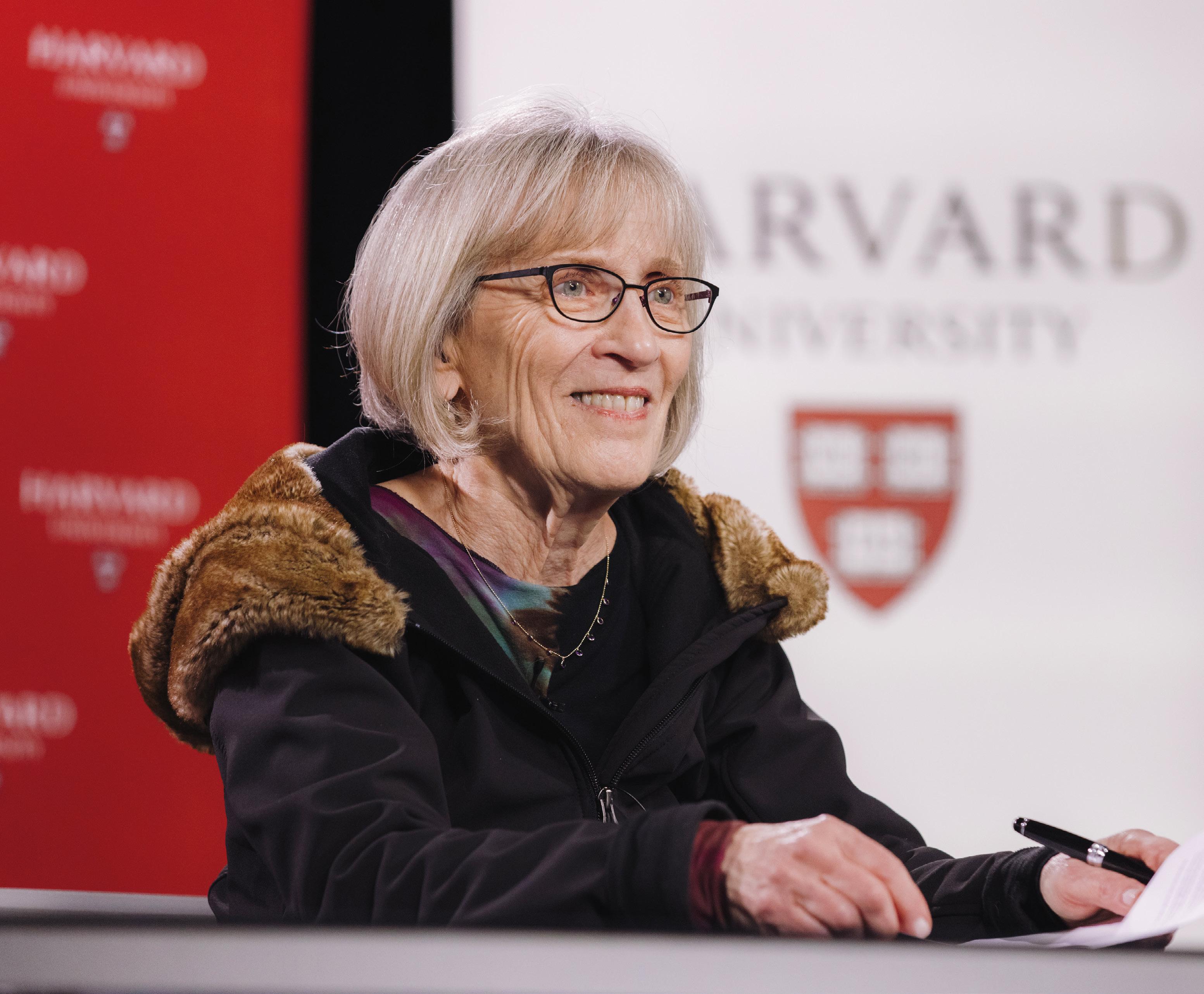

“Understanding women’s role in the labour is important for society. Thanks to Claudia Goldin’s groundbreaking research we now know much more about the underlying factors and which barriers may need to be addressed in the future,” says Jakob Svensson, Chair of the Committee for the Prize in Economic Sciences.
facilitated new possibilities for career planning and advancement. Despite economic progress, modernization, and an increasing number of employed women in the 20th century, the wage gap between genders persisted for an extended period. Goldin suggests that this is partly due to the fact that educational choices, which shape career trajectories, are made at a young age. The experiences of previous generations, such as mothers who delayed re-entering the workforce until their children were older, can influence young women’s expectations, leading to a slow pace of progress.
Historically, differences in education and career choices accounted for much of the gender wage gap. However, Goldin has demonstrated that the majority of the earnings disparity now occurs between men and women within the same occupations, with a significant portion emerging after the birth of a first child.
Anne L’Huillier, a recipient of the 2023 Nobel Prize in Physics, along with Ferenc Krausz and Pierre Agostini, is a big believer in the importance of inspiring more young women researchers to embrace STEM careers. L’Huillier, a French and Swedish physicist who works as a professor of atomic physics at Lund University in Sweden, received the Nobel Prize “for experimental methods that generate attosecond pulses of light for the study of electron dynamics in matter”. L’Huillier works on the interaction between short and intense laser fields and atoms and is excited about the developments ahead in her field, focusing on the early stages of using attosecond processes to study electron behaviour. She suggests that new methods could help solve the mysteries of radiation interaction, providing ideas that might lead to controlling fundamental phenomena. L’Huillier posits that the use of attosecond pulse techniques could potentially elucidate and alter the functioning of molecules.
Exploring the nuances of her experience as a female scientist, L’Huillier illuminates the gender dynamics that have shaped her career. She recognises the advantages of increased visibility and the opportunities to participate in initiatives and programmes designed for women in a predominantly male domain. However, she also openly discusses the obstacles she has faced, including unconscious biases and occasional comments suggesting her achievements are solely due to her gender.
Recent data highlights a significant disparity in the representation of women within the fields of Science, Technology, Engineering, and Mathematics (STEM). Despite women receiving nearly half of all doctoral degrees in the EU (SheFigures 2021 report), they only make up a third of the research workforce in Europe. Addressing possible remedies for this imbalance, L’Huillier notes the complexities inherent in the issue. She underscores the importance of the wider societal context, stressing the necessity for a greater number of role models. “Hopefully I can contribute to inspire women to stay in science—this is what I tried to say in my Nobel speech”, said L’Huillier in an interview with the European Research Executive Agency. “Because the problem is that there are women who do their PhDs, but then they don’t proceed with their careers. I think this may be partly due to the difficulty of getting a permanent position, a problem that exists everywhere in Europe. And this often coincides with the time when women have children, making it even more challenging.”
Encouraged by the shifting dynamics in the STEM fields, L’Huillier

“A scientific vocation can coexist with familial responsibilities, challenging the antiquated notion that women are compelled to make a binary choice between the two.”

“120 years ago, Marie Skłodowska Curie was the first woman to be awarded the Nobel Prize in Physics. I am the fifth. For more than 100 years, only two women were awarded the Nobel Prize in Physics. During the last five years, already three women have been awarded the Nobel Prize in Physics! I hope that this is a new trend, which will inspire new generations!” Anne L’Huillier expressed hope to see more women in science during her speech at the Nobel Prize banquet.
“If there were no women in STEM, then humanity would be missing half of its possible researchers to push science forward”. Anne L’Huillier, 2023 Nobel Prize in Physics
highlights the positive trend of increasing numbers of women undertaking doctoral programmes and continuing their careers in scientific research. “I see more and more women becoming doctoral students and who stay in science. Although women’s equal participation in STEM is a process that will take time, the slope is positive, and they need to know that things are improving. This is important because if there were no women in STEM, then humanity would be missing half of its possible researchers to push science forward.”
When approached for guidance for young women aspiring to pursue STEM disciplines, L’Huillier ardently encourages them to wholeheartedly follow their scientific interests. She fervently promotes the idea that a scientific vocation can coexist with familial responsibilities, challenging the antiquated notion that women are compelled to make a binary choice between the two. Drawing upon her experiences in Sweden, she underscores the flexible childcare and school systems that support parents in this country. Contrary to prevailing misconceptions suggesting that a scientific career necessitates an all-consuming time commitment, she states that passion and contentment can seamlessly intertwine with a balanced equilibrium between the professional and family spheres. L’Huillier perceives diversity as a vital catalyst for fostering a dynamic and pioneering research environment.
Katalin Karikó, jointly with Drew Weissman, received the 2023 Nobel Prize in Physiology or Medicine “for their discoveries concerning nucleoside base modifications that enabled the development of effective mRNA vaccines against COVID-19”. Karikó, Hungarian by birth, is affiliated with Szeged University, Szeged, Hungary, and the University of Pennsylvania, USA.
A vaccine prevents diseases by activating the body’s immune system to create a shield against harmful pathogens. One type of vaccine employs mRNA, which transfers genetic instructions
“If I get an award, I have an opportunity to thank people. I also thank the people who tried to make my life miserable because they made me work harder and become more resilient”, said Karikó in a podcast series Nobel Prize Conversations with Adam Smith. A fan of Janos Selye, who coined the term stress, Karikó concentrates on self-improvement and not despair when life deviates from the plan, turning negative stress into positive and taking anything that you cannot change as a learning experience.
“Many times during award ceremonies I often say to the girls that they can be mothers and my daughter also turn out quite right…”
Katalin Karikó, 2023 Nobel Prize in Medicine
from DNA to initiate protein synthesis. The groundbreaking discoveries unveiled by the two Nobel Laureates proved pivotal in the advancement of effective mRNA vaccines against COVID-19 during the infamous pandemic that started in early 2020. Two of the swiftest and most efficacious COVID-19 vaccines were formulated using this innovative mRNA technology. Although the concept of utilising mRNA for vaccination and delivering therapeutic proteins in vivo was introduced more than 30 years ago, numerous challenges needed to be surmounted to transform this idea into clinical reality. Initial experiments revealed that in vitro transcribed mRNA triggered undesirable inflammatory responses and inefficient protein production in cells and tissues. In 2005, Karikó and Weissman unveiled that particular modifications of the RNA’s building blocks not only prevented detrimental inflammatory responses but also augmented the production of vital proteins. Their findings, which have significantly altered our comprehension of the intricate interplay between mRNA and our immune system, played a paramount role in expediting the unparalleled pace of vaccine development amidst one of the most formidable challenges to public health in contemporary history. These breakthroughs, coupled with the development of efficient in vivo mRNA delivery systems, the stabilisation of the SARSCoV-2 spike antigen, and unprecedented investments, culminated in the approval of two highly successful mRNA-based COVID-19 vaccines in late 2020. The contributions of Karikó and Weissman were instrumental in rendering the mRNA vaccine platform clinically viable precisely when it was most urgently needed, marking an extraordinary advancement in medicine and laying the groundwork for future applications of mRNA technology. The life of Karikó, the 13th woman in history to win a Nobel Prize in Physiology or Medicine, is a testament to hard work and resilience. Despite encountering demotions, rejections, and setbacks, as well as losing a university job without much warning, she has never lost hope or focus. She kept on working. When she had no money to hire a technician, she did most of the work herself. “I was 58 years old, I did all of this still myself, all of these experiments”, remembers Karikó. She encourages parents to not be overprotective and lead by example, putting diligent work and duties at the centre. “Don’t over-assist your child, no tough love. You have to love, but you have to let them contribute to the family life”, said Karikó in a podcast series Nobel Prize Conversations with Adam Smith. Who could serve as a better inspiration for an aspiring girl scientist or a young female researcher struggling to balance professional and familial life than a Nobel Prize winner who is also the mother of a two-time Olympic gold medalist? As we reflect on the journeys of the women awarded the Nobel Prize in 2023, it is evident that they have not only shattered glass ceilings but have also paved the way for future generations of female scholars and innovators.
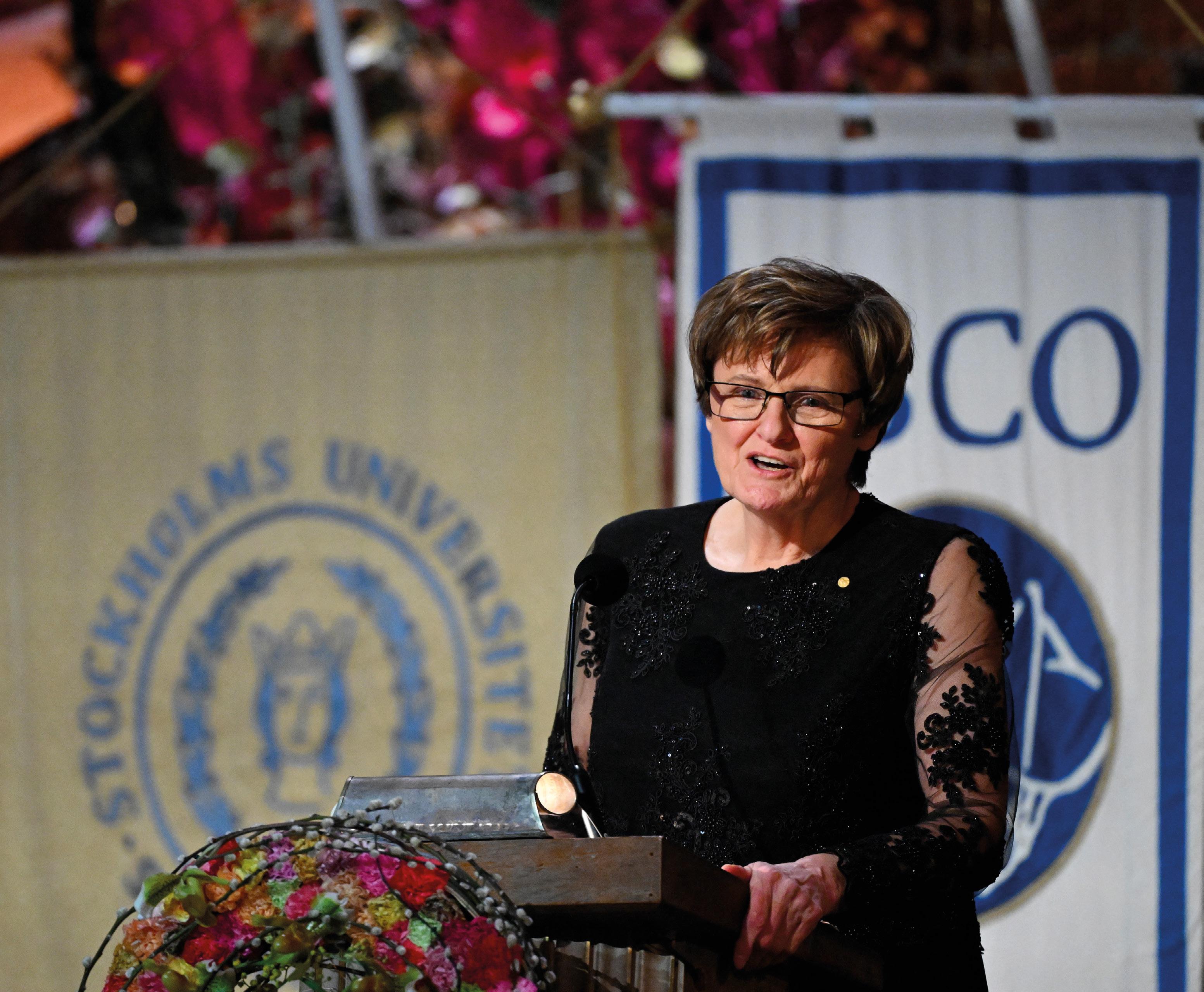

MODIFICATIONS OF THE RNA’S BUILDING
The list of Nobel Prize 2023 winners for Physics, Chemistry, Medicine, Literature, Peace and Economic Sciences is announced. Check complete list of Nobel laureates 2023 in this article.
Alfred Nobel, a Swedish inventor, scientist, and philanthropist, created the highly esteemed international award known as the Nobel Prize in 1895. His will established a range of prizes to acknowledge noteworthy contributions to humanity in the fields of physics, chemistry, physiology or medicine, literature, and peace. The winners for the categories of Physiology or Medicine, Physics, Chemistry, Literature, Economic Sciences, and Peace for the Nobel Prize 2023 have been announced.
Nobel Prize 2023 Winners List
Nobel Prize Category Winners
The Nobel Prize winners for 2023 have been announced for all six categories i.e. Physiology or Medicine, Physics, Chemistry, Literature, Economic Sciences, and Peace. Katalin Karikó and Drew Weissman received the Nobel Prize in Physiology or Medicine, while Pierre Agostini, Ferenc Krausz, and Anne L’Huillier were awarded the Nobel Prize in Physics. Moungi Bawendi, Louis Brus, and Alexei Ekimov were the recipients of the Nobel Prize in Chemistry. Claudia Goldin received The Sveriges Riksbank Prize in Economic Sciences.
Announcement Date Institution
Physiology or Medicine Katalin Karikó and Drew Weissman 2nd October
Physics
Chemistry
Pierre Agostini, Ferenc Krausz and Anne L’Huillier 3rd October
Moungi G. Bawendi, Louis E. Brus and Alexei Yekimov 4th October
Nobel Assembly at Karolinska Institutet, Stockholm
Royal Swedish Academy of Sciences, Stockholm
Royal Swedish Academy of Sciences, Stockholm
Literature Jon Fosse 5th October Swedish Academy, Stockholm
Peace Narges Mohammadi 6th October
The Sveriges Riksbank Prize in Economic Sciences
Claudia Goldin 9th October
The Nobel Prize is a highly regarded award that is acknowledged globally for recognising the accomplishments of many influential individuals in different fields since its founding. Nobel laureates have made important contributions to advancing knowledge, promoting culture, and enhancing the lives of people around the world.
As per Alfred Nobel’s will, the Nobel Prizes in 2023 was granted in several categories to the chosen Nobel laureates by various Nobel Prize-awarding committees.
1. Nobel Prize in Physics: Recognising contributions to the understanding of the physical world.
2 Nobel Prize in Chemistry: Honouring advancements in the field of chemistry.
3. Nobel Prize in Physiology or Medicine: Awarded to Nobel laureates for achievements in the field of medicine and physiology.
4 Nobel Prize in Literature: Celebrating outstanding contributions to literature.
5 Nobel Prize in Peace: Presented to Nobel laureates who have made significant efforts to promote peace and resolve conflicts.
6 The Sveriges Riksbank Prize in Economic Sciences in Memory of Alfred Nobel 2023: Awarded for outstanding contributions in Economics or Social Sciences.
On October 6, 2023, Narges Mohammadi, an Iranian human rights activist, was honoured with the Nobel Peace Prize 2023 “for her fight against the oppression of women in Iran and her fight to promote human rights and freedom for all”. As per reports, Mohammadi faced 13 arrests, 5 convictions, 31 years in prison, and 154 lashes.
Norwegian Nobel Commitee, Oslo
Royal Swedish Academy of Sciences, Stockholm
Jon Fosse has been honoured with the Nobel Prize in Literature 2023 “for his innovative plays and prose which give voice to the unsayable”. Every year, the Nobel Prize in Literature is given to a writer from any country who has produced exceptional work in the field of literature with an idealistic direction.
Katalin Karikó and Drew Weissman have won the Nobel Prize in Physiology or Medicine 2023 “for their discoveries concerning nucleoside base modifications that enabled the development of effective mRNA vaccines against COVID-19”.
This year, Pierre Agostini, Ferenc Krausz and Anne L’Huillier are honoured with the Nobel Prize in Physics 2023 “for experimental methods that generate attosecond pulses of light for the study of electron dynamics in matter”.
The Nobel Prize in Chemistry 2023 has been awarded to Moungi G. Bawendi, Louis E. Brus and Alexei Ekimov “for the discovery and synthesis of quantum dots.” Independently of each other, Ekimov and Brus succeeded in creating quantum dots, and Bawendi revolutionised chemical production. The prize rewards the discovery and development of quantum dots, nanoparticles whose properties are determined by their size.
Claudia Goldin received The Sveriges Riksbank Prize in Economic Sciences in Memory of Alfred Nobel 2023 “for having advanced our understanding of women’s labour market outcomes


Nestled along the sun-kissed shores of the Costa del Sol, iJet stands as the premier beacon of opulence in the realm of air travel. With a distinguished presence as the sole company headquartered in this radiant locale, iJet epitomizes exclusivity and refinement
Covering short, medium, and long-range aircraft, iJet’s fleet embodies both speed and comfort, ensuring streamlined to any global destination. With a state of the art hangar space at Malaga Airport, iJet guarantees the utmost security and care for cherished aircraft.
Step into the world of iJet, where luxury knows no bounds.


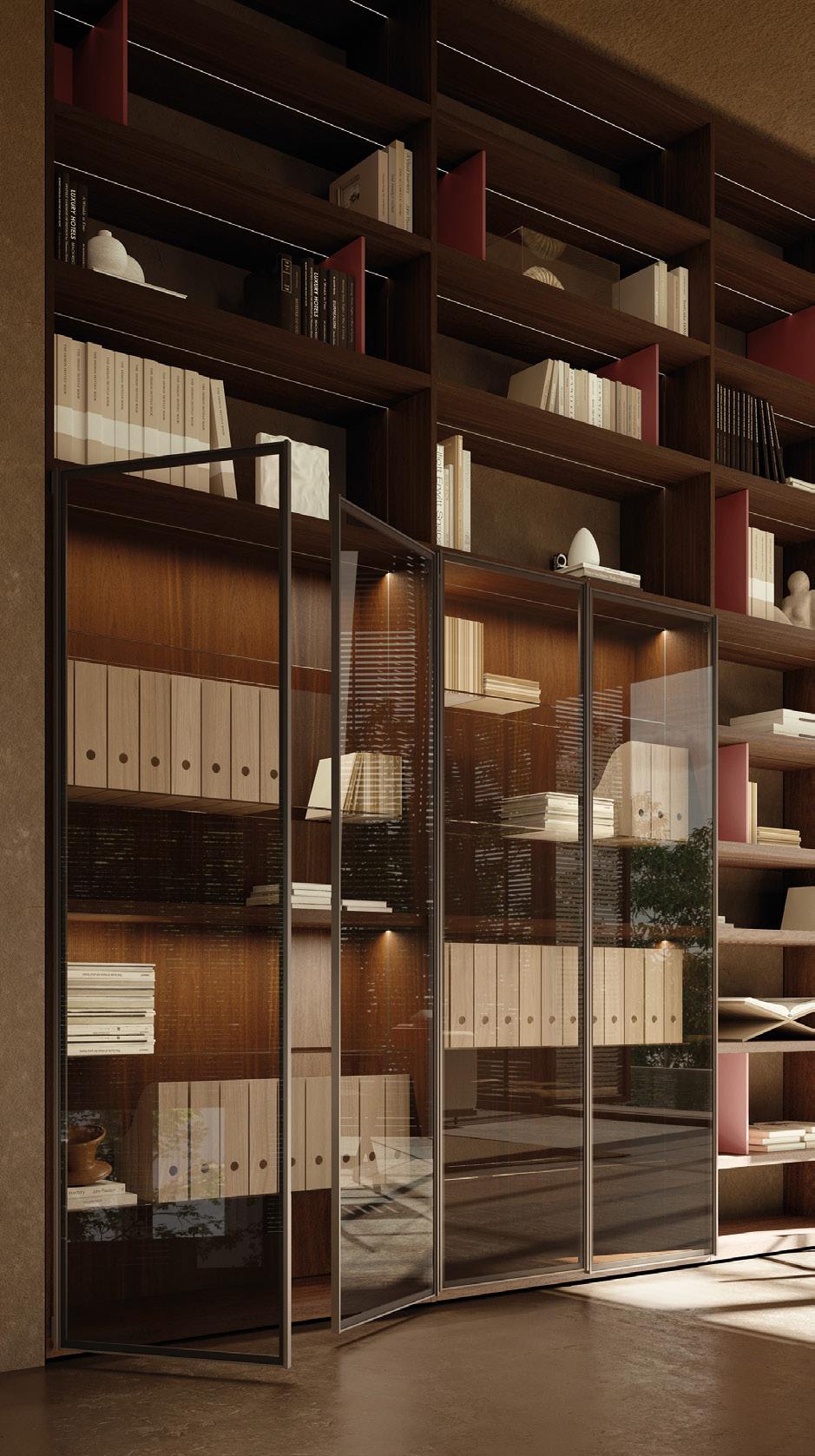


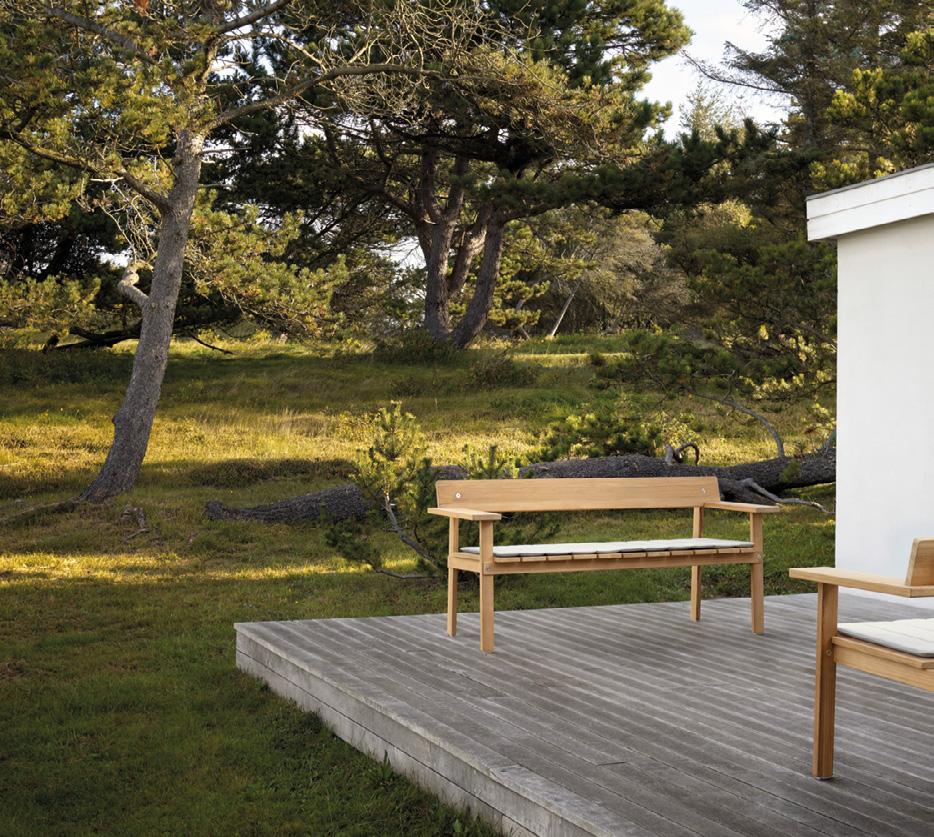
The return of bourdeaux and orange to the reinterpretations of marble, metal, and glass. Then there are the materials, colours, and trends most in vogue at the moment. From the stages of Milan’s Design Week, Maison Objet in Paris, and the showcases of London and New York, the trends are total softness, vintage style, glass, glossy paint, shimmering leather, and the timeless beauty of marble. A return to nature and a desire to get closer to it, in both forms and colours.
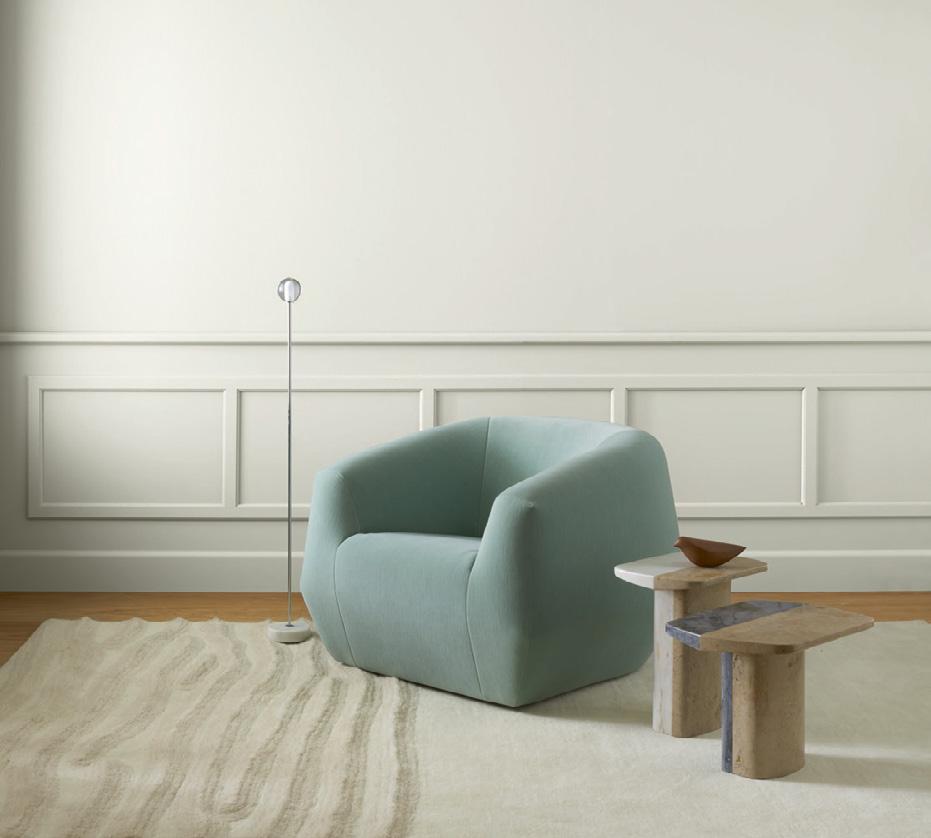
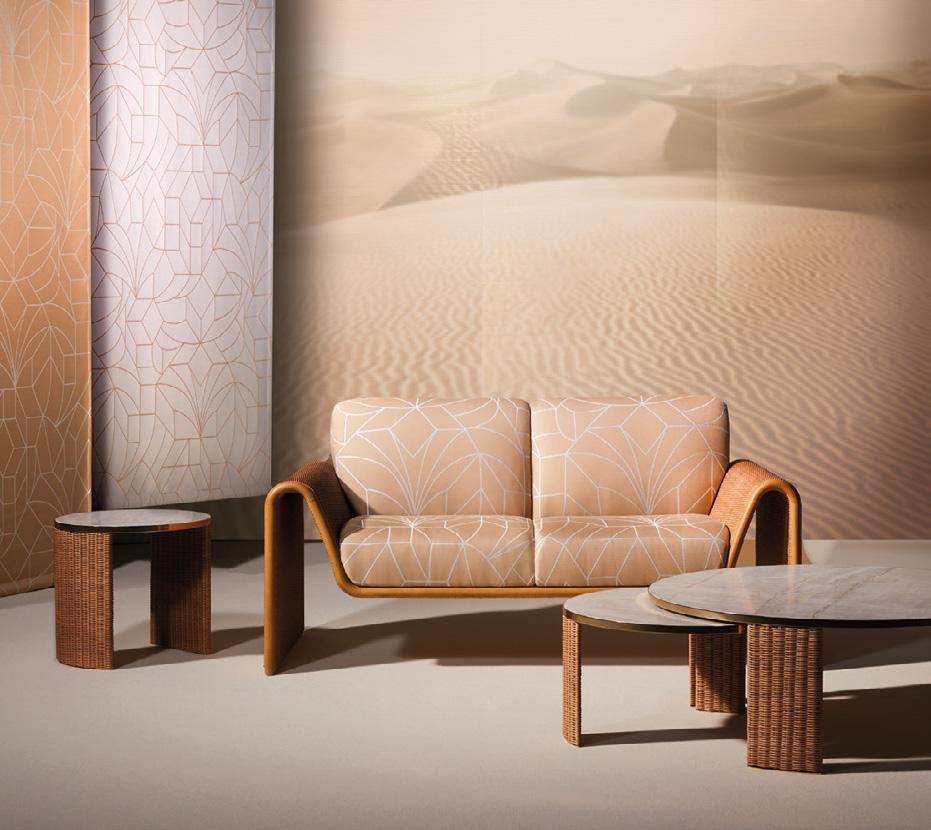


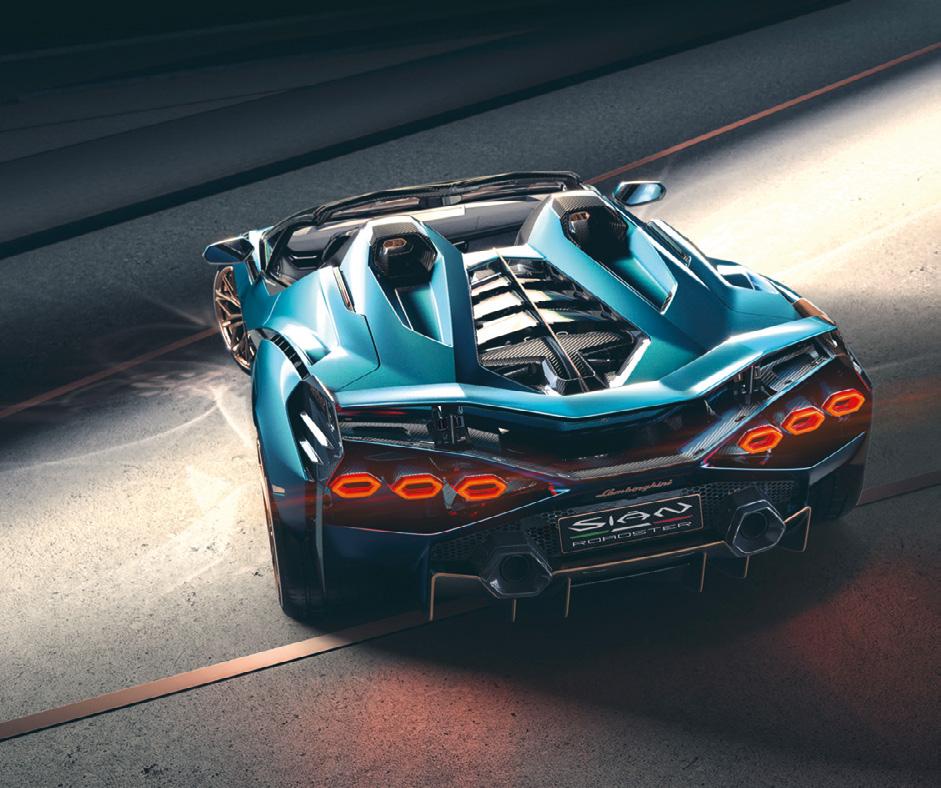
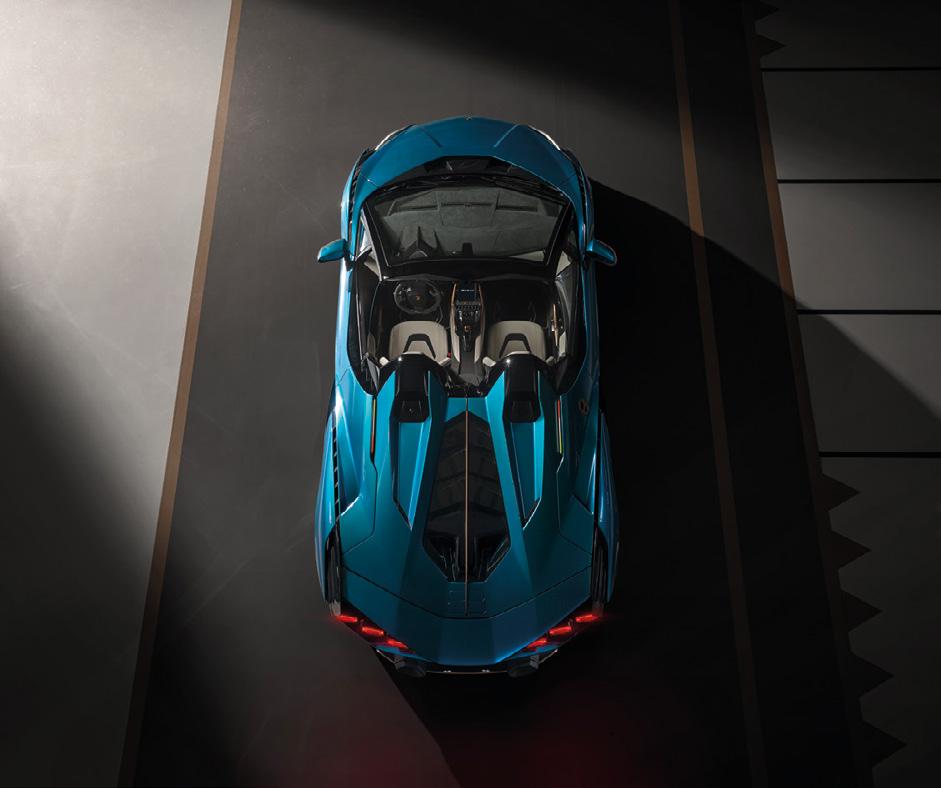

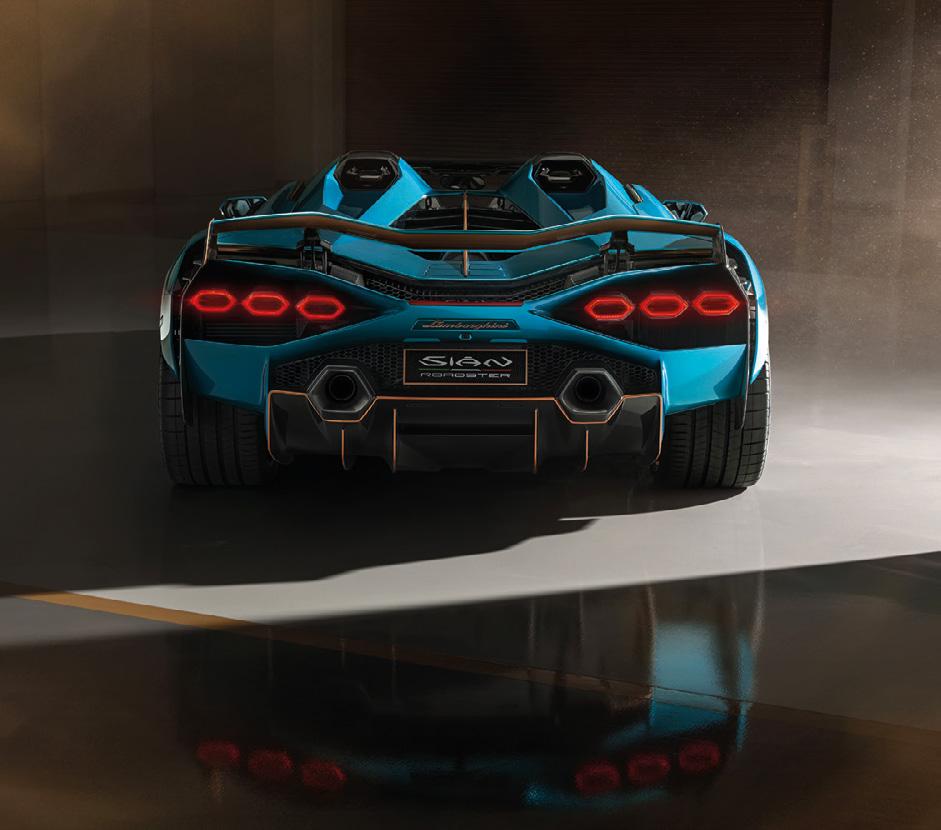
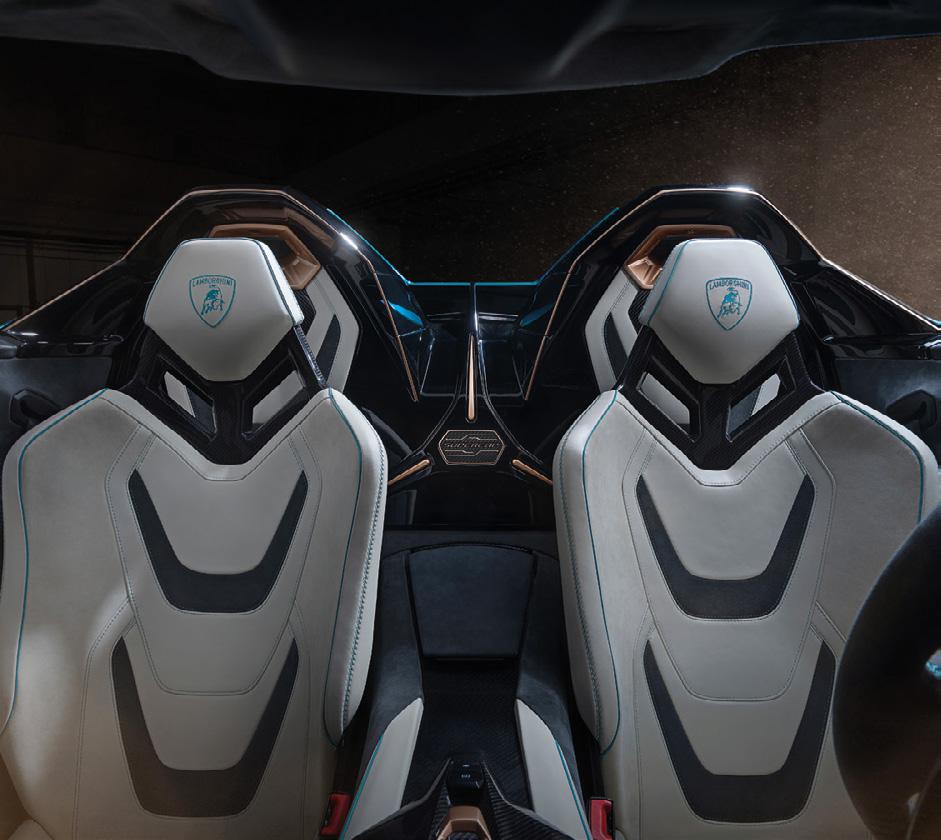
Built around Lamborghini’s V12 engine and featuring innovative hybrid technologies, the Lamborghini Sián Roadster is a limited edition, open-top hybrid super sports car. Its roofless design offers a breathtaking driving experience, distinctive V12 engine sound, and exceptional performance. The Sián Roadster embodies Lamborghini’s pioneering approach to hybrid technology and plays a pivotal role in Lamborghini’s journey towards future hybridisation.
The Sián sports Lamborghini’s innovative supercapacitor application, a world-first technology storing ten times the power of a lithium-ion battery. Located in the bulkhead between the cockpit and engine, it ensures perfect weight distribution. Three times more powerful than a battery of the same weight and three times lighter than a battery producing the same power, the electric system with the supercapacitor and e-motor weighs only 34 kg, thus delivering a remarkable weight-to-power ratio of 1.0 kg/hp. Symmetric power flow ensures the same efficiency in both charging and discharging cycles. The V12 engine, incorporating titanium intake valves, combines with this technology to boost its power to 785 hp
(577 kW) at 8,500 rpm. Combined with the additional 34 hp from the hybrid system, the Sián Roadster delivers a total of 819 hp (602 kW) and reaches a top speed of over 350 km/h. Lamborghini developed the regenerative braking system for the Sián. Unlike Li-Ion batteries, its supercapacitor can both charge and discharge at high power. This system fully recharges the Sián’s energy storage every time the vehicle brakes. This stored energy provides an instant power boost, delivering increased torque for faster acceleration up to 130 km/h. At this speed, the e-motor automatically disconnects, improving manoeuvrability and making the Sián more than 10% faster than a car without this technology.
The Lamborghini Sián Roadster benefits from a heightened level of driving comfort facilitated by the hybrid system alongside dynamic handling and performance. The moment when deceleration and missing torque are felt during gear changes powered by a traditional combustion engine is eliminated by the torque upshift fill provided by the hybrid’s e-motor, allowing the pilot to feel only the pull backwards of acceleration, thereby eliminating uncomfortable jerking movements.
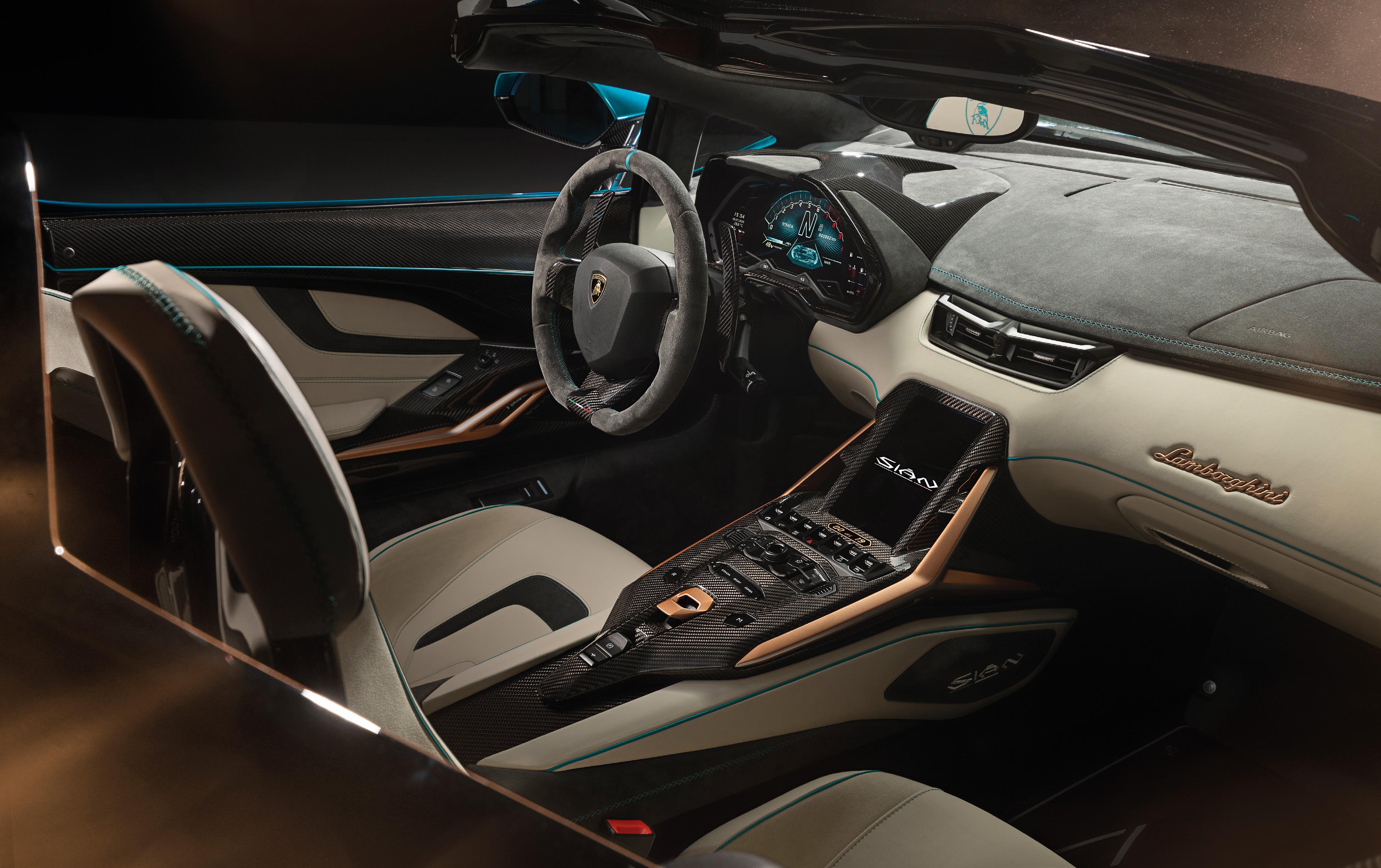
Oro Electrum wheels complete the Blu Uranus model, which captures the blue of the sky and the green of the fields. The complementary interior is a combination of white with Blu Glauco detailing and aluminium elements in Oro Electrum. New-design air vents made via 3D printing allow for customization with a client’s initials.
The innovative system delivers instant acceleration in low gears, with improved traction force provided by the combination of the V12 engine and hybrid system. The Sián Roadster accelerates from 0 to 100 km/h in less than 2.9 seconds. Even more evident is the improvement in elasticity manoeuvres; for instance, third gear enhances traction force by up to 10%.

It provides the highest power possible via the lightest solution, combining the V12 engine with a new powertrain. A 48-volt e-motor, delivering 34 hp, is incorporated into the gearbox to provide immediate response and improved performance. The e-motor also supports low-speed manoeuvres like reversing and parking with electric power.



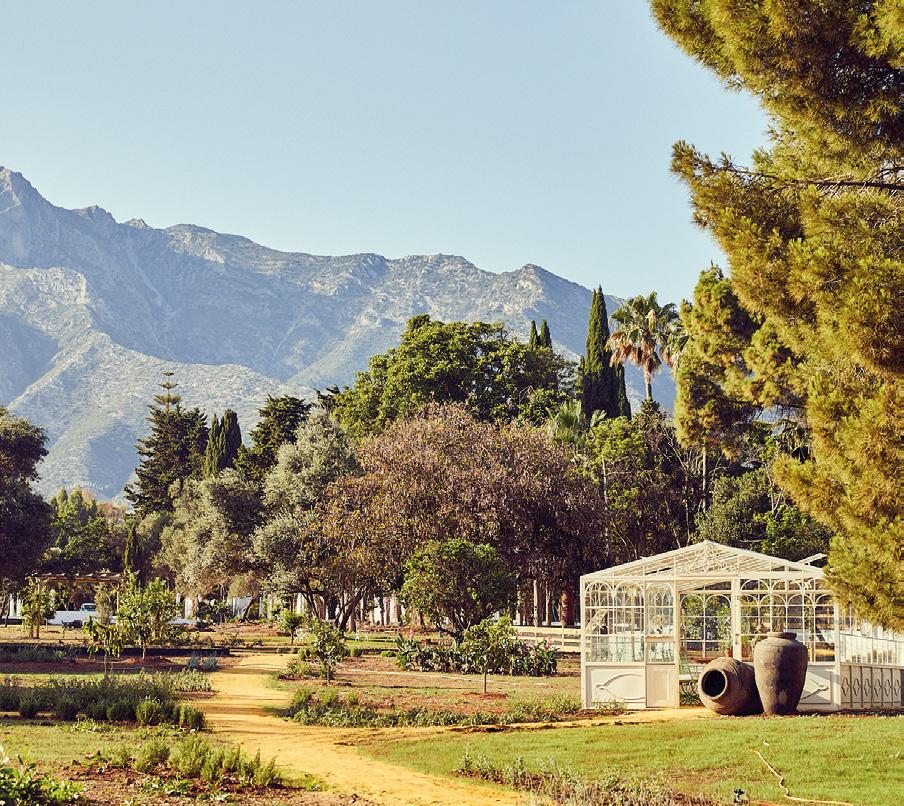
2024 marks a momentous occasion as the Marbella Club, a beacon of sophistication and refinement, commemorates its 70th anniversary. Since its inception by Prince Alfonso von Hohenlohe, this esteemed establishment has stood as a bastion of style and unwavering commitment to preserving the essence of old-school glamour. A year-long series of events will unfold, each crafted to embody the hotel’s core pillars: gastronomy, culture & arts, sustainability, and wellbeing.
Events will extend throughout the hotel and onto a newly acquired 50,000 sq m. plot adjacent to the main property, called Finca Ana María, boasting Mediterranean Sea views and the Concha Mountain backdrop. Formerly owned by the von Bismarck family, over the next five years, the land will offer holistic wellbeing activities as the hotel plans to integrate Finca Ana María into its sustainable expansion.
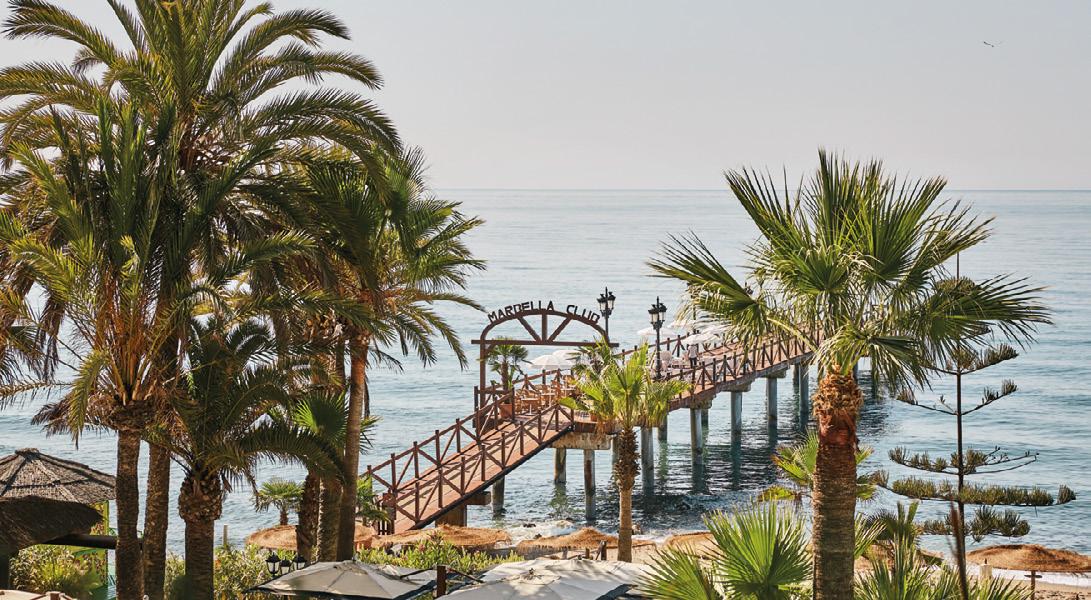
The celebration, meticulously curated by owner Jennica Arazi, illustrates Marbella Club’s progression into a new epoch, all the while upholding its rich heritage and tradition. Weekend festivities kick off on April 25th with a lively birthday bash featuring piano sing-alongs, flamenco, guest DJs, and a special Heritage Menu at the Clubhouse.
At El Patio, Assouline will showcase destination-inspired books. In May, guests can enjoy “Garden Games” at Finca Ana María and explore Deyrolle’s Cabinet de Curiosities. June brings the San Juan festival with wellness activities and a beach party. Summer promises perfumeries, cultural events, and a seafront open-air classical concert.
In the fall, the hotel will host a sustainability summit with industry leaders to drive change in hospitality. Bespoke experiences from top museums and theatres will invite guests to explore Malaga’s art scene.
Alongside the festivities, Marbella Club continues to encourage slow and mindful living, providing an array of facilities and therapeutic offerings designed for ultimate relaxation and healing to a multigenerational community of like-minded spirits.
The botanical heritage takes centre stage. Partnering with the Deyrolle institute, the hotel has expanded Prince Alfonso Hohenlohe’s original gardens into Finca Ana María. Featuring a Kitchen Garden with 100+ heritage tomato varieties, a storytelling tree, a Cabinet of Curiosities, glamping experiences, and a natural maze of Acacias, the garden not only preserves the Marbella Club’s ecosystem but also serves as an inspiring, educational space.
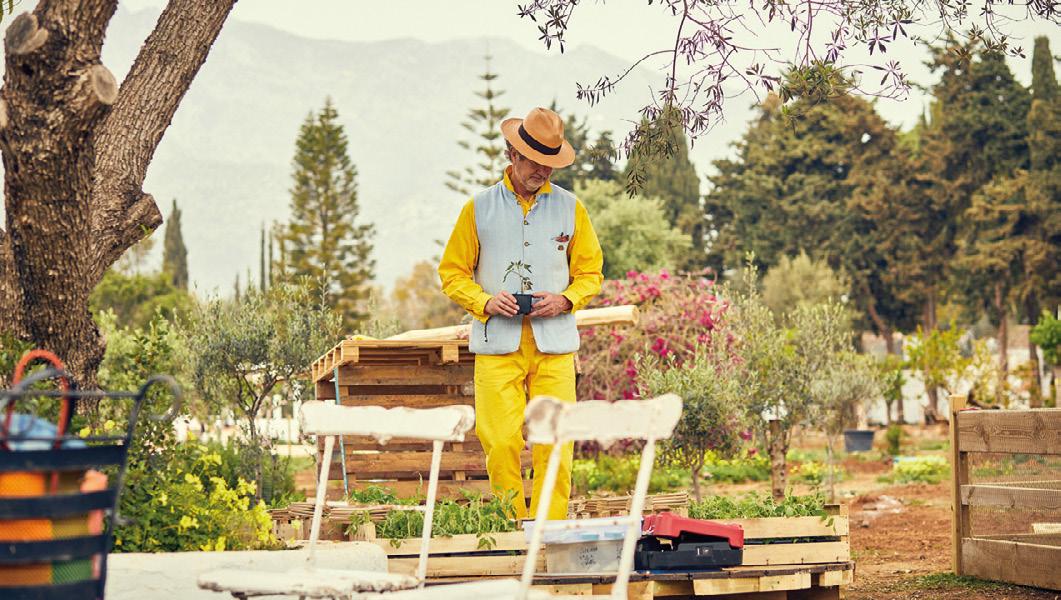


2953 cc V12 engine

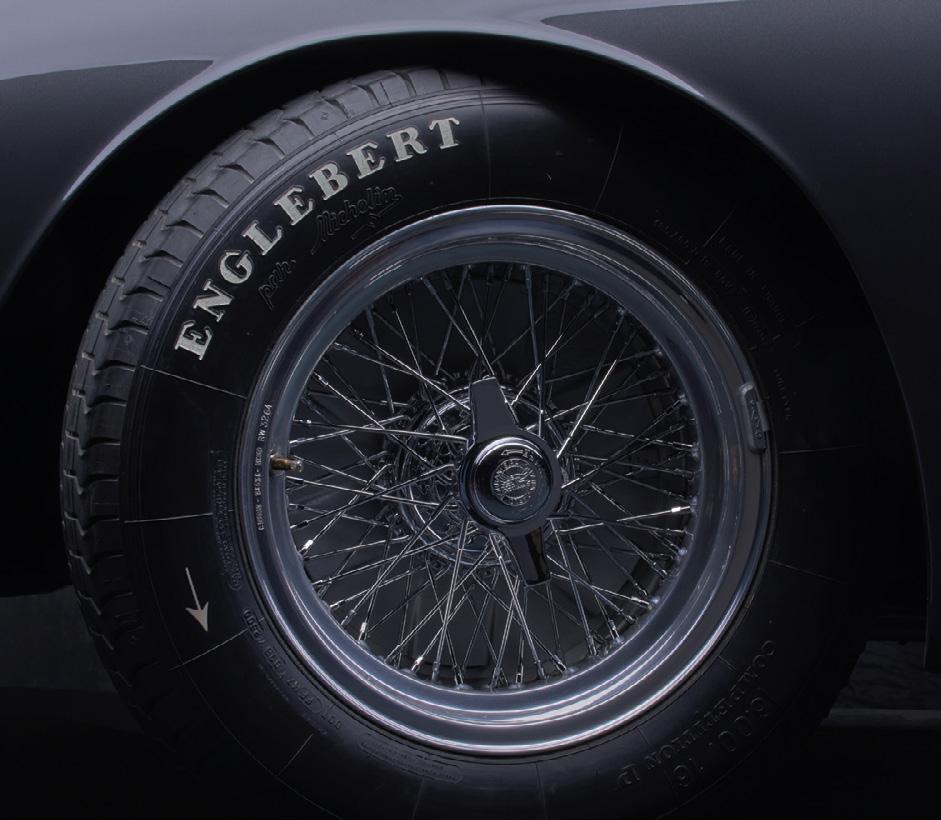
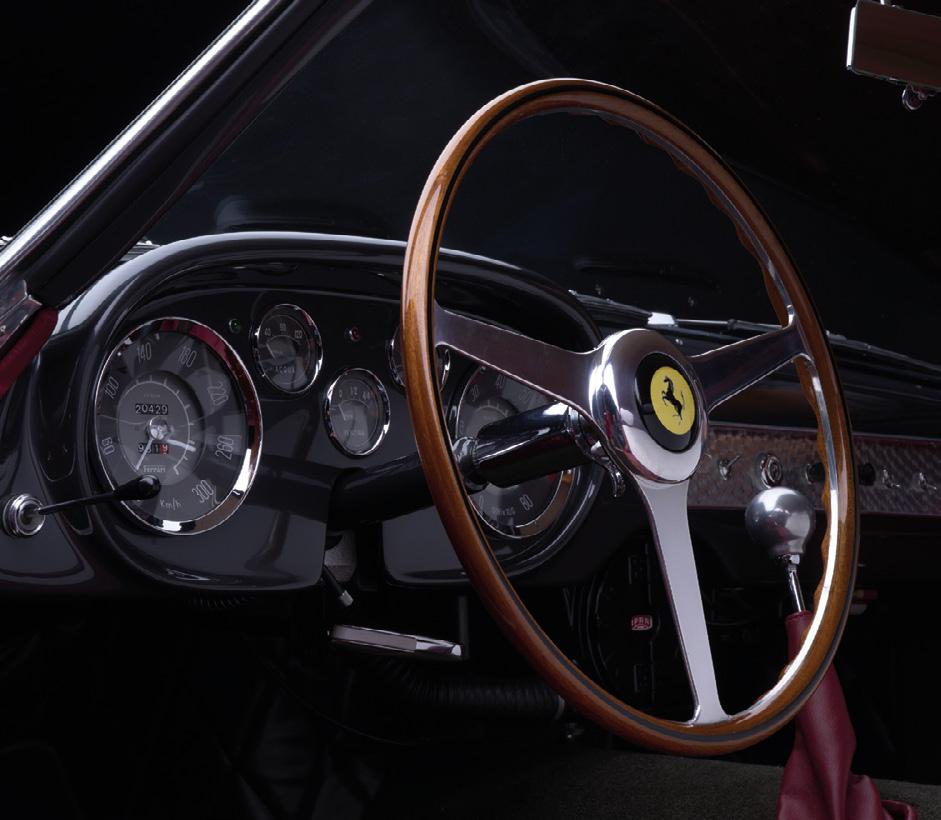

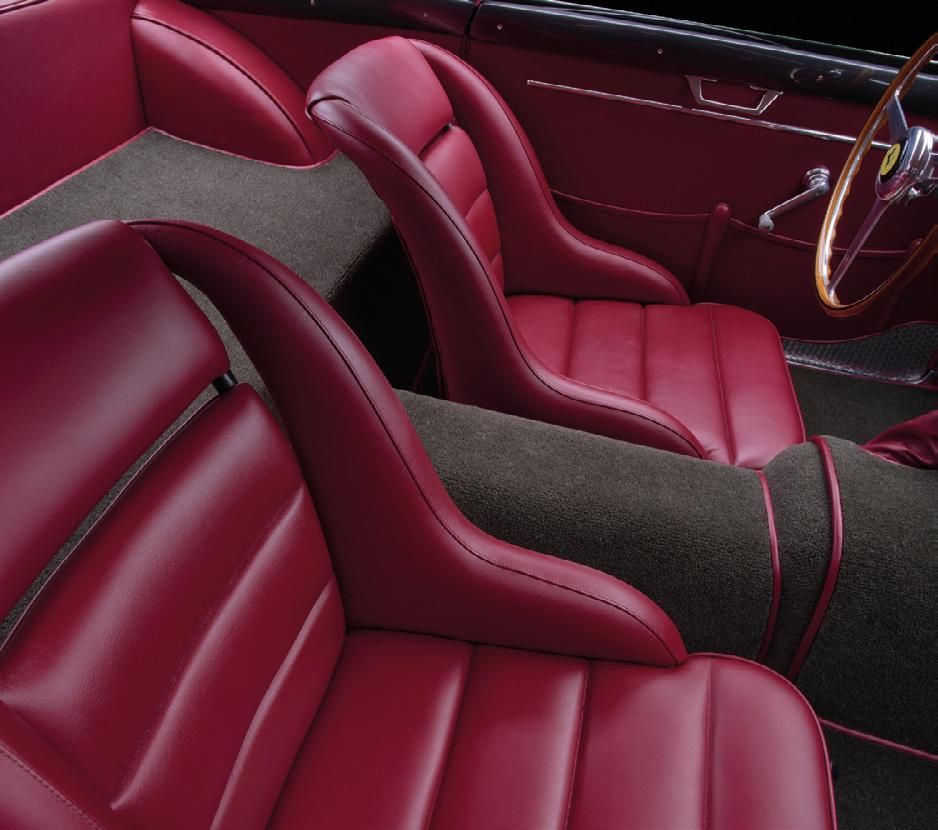

One of the most desirable Ferrari sports cars in existence—a 250 GT LWB Berlinetta ‘Tour de France’ with coachwork by Zagato. One of just five bodied by Zagato and of just three to feature the carrozzeria’s trademark double-bubble roof, the car is a true one-of-a-kind as the only double-bubble example with the desirable covered headlights astride a narrowed grille and a softened rear end, among myriad numerous smaller stylistic changes. It is not a one-off, yet it approaches that status due to these details.
Chassis 0665 GT was created to compete at the highest level, finishing 6th overall and 2nd in class at the 1957 running of the famed Mille Miglia—the final iteration of perhaps the greatest-ever road race. It lined up on 11 May wearing #441 and an advertisement for Idriz, a company that specialized in effervescent digestive powders; the pairing is believed to be one of the earliest examples of motorsport sponsorship.
The Zagato 250 GT ‘Tour de France’, now 67 years old, exudes a brand-new appearance due to multiple restorations, including two in the past decade. Its striking two-tone finish features a gunmetal grey body complemented by a contrasting silver roof, reminiscent of its Mille Miglia days, complete with its original start numbers. The interior, reupholstered in luxurious red leather a couple of years back, adds to its opulence. This fully numbers-matching example retains its original 2.95-litre Colombo V-12 engine, transmission, and transaxle. Although it has made only sporadic appearances on the U.S. concours circuit over the past twenty years, it has consistently performed admirably, notably winning the Strother MacMinn Most Elegant Sports Car Award at 2022 Pebble Beach Concours d’Elegance.







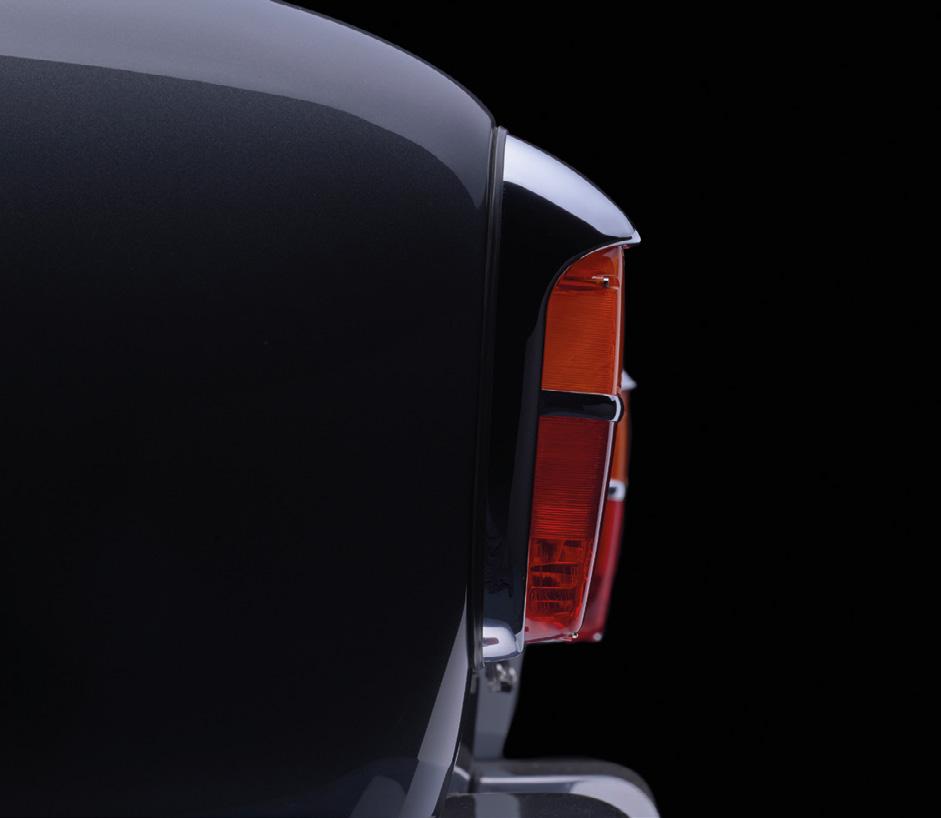
This special ‘Tour de France’ was ordered on behalf of Camillo Luglio by his wife, Mrs Cornelia Vassalli, and was built at Maranello between January and April 1957. It was registered in April of that year and was entered into the Giro di Sicilia by its new owner that same month, who finished an impressive 5th overall and 2nd in class. That outing proved a useful shakedown run for what would be the car’s greatest challenge: the 1957 Mille Miglia, the final “original” Mille Miglia, where it finished 2nd in class and 6th overall with a time of 11hr 2min 58s.
Following its impressive performance at the Mille Miglia, chassis 0665 GT participated in various races and hill climbs throughout 1957: the Mont Ventoux Hillclimb, the 12 Hours of Reims, and the Aosta-Gran San Bernardo Hillclimb. The car also secured class titles at the Bruno & Fofi Vigorelli Trophy and the Coppa Constantini. In September, Luglio achieved 1st in class at the Coppa Inter-Europa at Monza and claimed an outright win at the Pontedecimo-Giovi Hillclimb.
In March 1958, Luglio entered the 250 GT into the 3 Hours of Pau but didn’t race. Instead, the Ferrari was sold to Vladimiro Galluzzi, who had it refurbished by Zagato and painted claret red. Galluzzi raced it in late April at the Coppa San Marino and in May at the Mille Miglia Rally. His first podium came with a 2nd place at the Campiano/ Vetta d’Enza race in July, followed by a 3rd place at the Coppa Sant Ambroeus at Monza in November 1958.
In 1959, Galluzzi sold chassis 0665 GT to the Milanese Ferrari dealership Gastone Crepaldi. It was imported to the U.S. and sold to J.C. Meade, who raced it once before selling it to E. Marshall in 1967.
By 1972, William H. Wright of Pennsylvania owned it and began a restoration that was completed by Richard Milburn in Indiana in 1977. The car was then sold to Ed Weschler of Wisconsin, who displayed it at the 1978 Ferrari Club of America annual meeting. Peter Kaus later acquired it for his Rosso Bianco Collection in Germany, where it remained until 1999 when a renowned U.S. collector bought it. Fully restored and painted metallic silver, it was shown selectively on the U.S. concours circuit, including the 2004 Pebble Beach, the 2005 Cavallino Classic, and the 2006 Amelia Island. The car was later restored to its 1957 Mille Miglia colours, winning 1st in class at the 2009 Pebble Beach Concours d’Elegance and multiple Platinum Awards between 2010 and 2014. Restored by Rare Drive, Inc. in New Hampshire, it was featured at Casa Ferrari during the 2019 Pebble Beach Concours d’Elegance with its original 1957 Mille Miglia livery. Its most recent appearance was at the 2022 Pebble Beach Concours d’Elegance, where it won the Strother MacMinn Most Elegant Sports Car Award. In 2023, it was offered for sale at Sotheby’s Sealed.

Building radically better ways of moving
A REVOLUTION IN SUSTAINABLE, HIGH-SPEED REGIONAL AIR MOBILITY

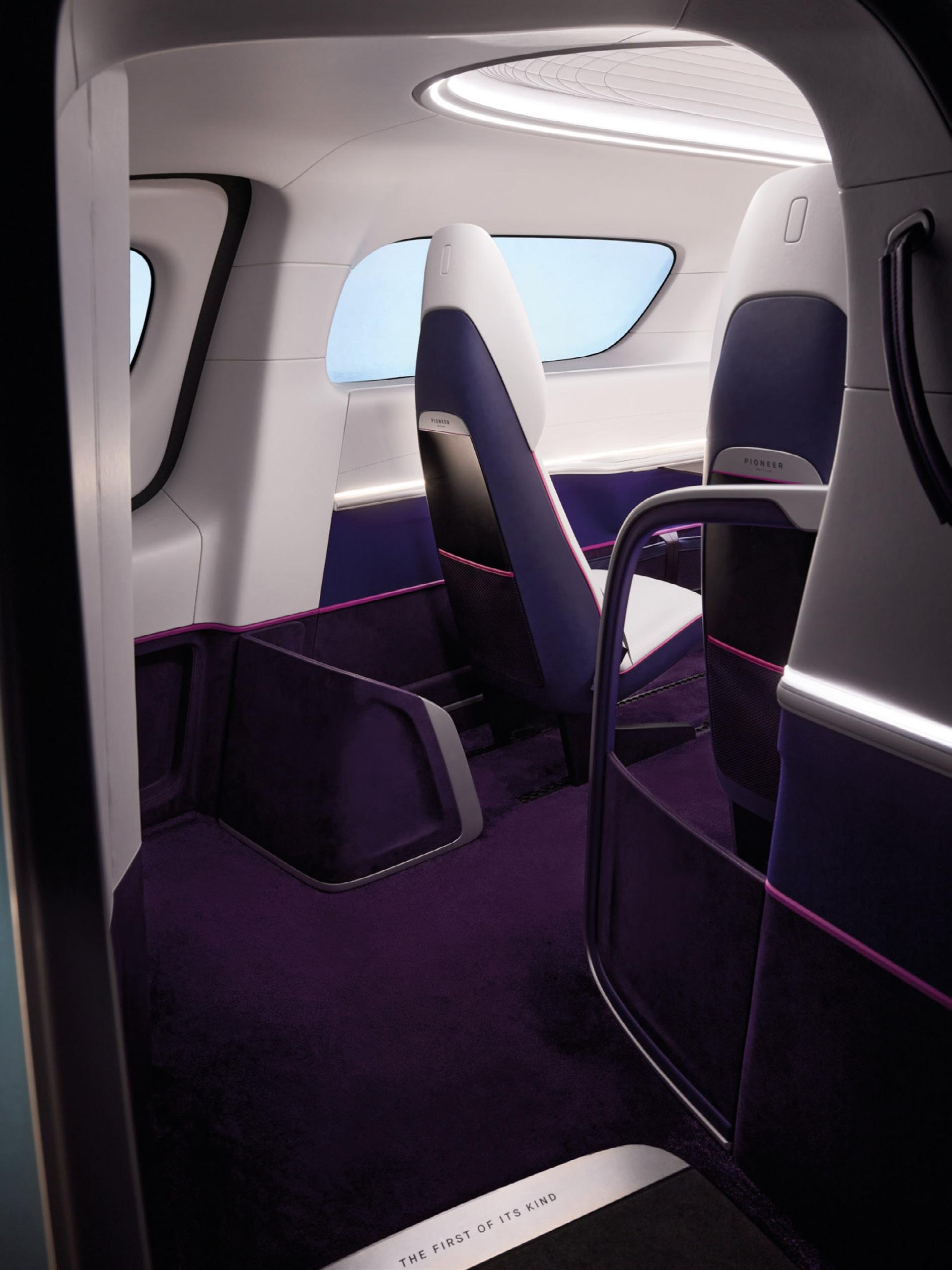
Lilium will enable faster travel than existing alternatives, opening direct connections to create a new, sustainable network for regional transportation for people and goods.

km (109 miles)

The Lilium Jet, an all-electric vertical take-off and landing jet, designed to offer leading capacity, low noise, and high performance with zero operating emissions, represents a significant leap in sustainable aviation. With its pioneering architecture leveraging the advantages of Ducted Electric Vectored Thrust (DEVT), the Lilium Jet will bring remarkable efficiency and accessibility to regional aviation. Lilium started production of the Lilium Jet in 2023. Production of the Lilium Jet is taking place at Lilium’s state-of-the-art facilities in Germany, covering an area of 175,000 square feet (16,250 sqm).
The proprietary technology at the core of the Lilium Jet is Ducted Electric Vectored Thrust (DEVT) which the company refined through successive generations of aircraft demonstrators. Electric jet engines integrated into the wing flaps provide advantages in payload, aerodynamic efficiency and a lower noise profile, whilst also providing thrust vector control to manoeuvre the Lilium Jet through every phase of flight. The aircraft has 30 DEVT fans on the aircraft’s front canards and main wings. The front wings have 12 and the rear wings have 18 DEVT fans. The DEVT fans have a low noise profile, not only due to the fact they are electric ducted fans, but the company has also added acoustic liners to help capture
and dissipate noise before it reverberates into the atmosphere. Traditional jet engines power 95% of commercial aircraft and the company based their design on the same principles, yet far simpler.
The electric jet engines rely on just a single “stage” rotor/stator system driven by an electric motor with zero emissions.
The Lilium Jet can adapt to a range of customers and uses, with each configuration optimized for an unparalleled experience. The most spacious cabin arrangement is designed for private flights, with luxurious club seating. Alternatively, the cabin can be configured with 6 seats for passenger flights, or without seats to serve the zeroemissions logistics market.
Lilium is one of the only pioneers in eVTOL seeking dual certification with EASA and the FAA. Since 2015, the company has designed, built and tested 5 generations of technology demonstrators and invited the world to watch as they pioneer an aircraft and flight control system never seen before.
Simplicity is one of the key design elements for Lilium. There are many things you can leave out of an aircraft to keep complexity to a minimum which translates into lower manufacturing costs, lower maintenance costs, greater safety (10-9 safety standard), greater
The low noise profile will provide a much quieter ride for the pilot and passengers when compared to conventional aircraft. It will be six to seven times quieter than a helicopter.



affordability, less weight and increased efficiency. The company believes that every component that is not there, does not have to be developed and does not need to be maintained. Listed below are a few items about the importance of simplicity of the Lilium Jet eVTOL aircraft: no folding propellers or wings, no tail, no rudder, no propellers, no gearboxes, no tilting wings, no water cooling, no liquids (petroleum fuel or oil), no single point of failure. Wings provide greater efficiency for forward flight; each electric motor has one moving part; 30 ducted fans provide ultra-redundancy. The Lilium Jet (7-seater) is expected to have a cruise speed of 250 km/h (155 mph), a 175+ km (109+ mi) operating range and a cruise altitude of 3,000 m (10,000 ft). The company expects the range to increase as battery density becomes greater. The maximum take-off weight of the aircraft is estimated to be 3,175 kg (7,000 lb).
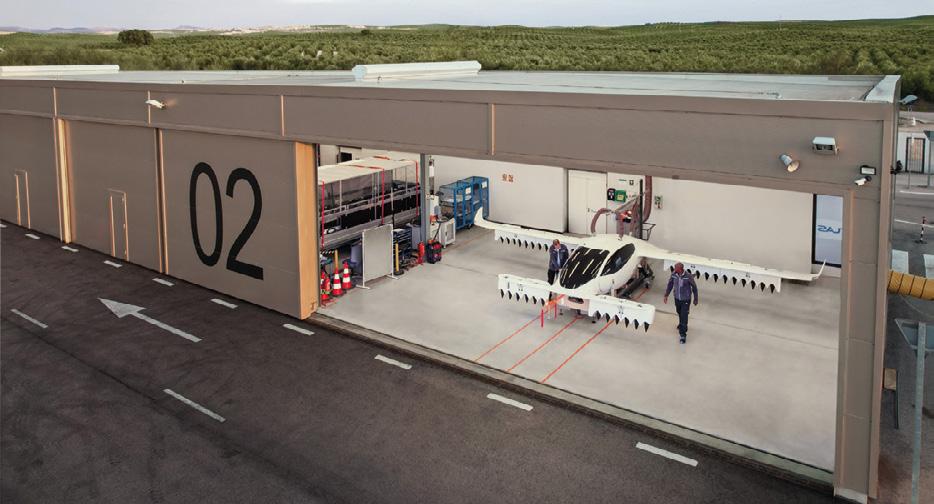
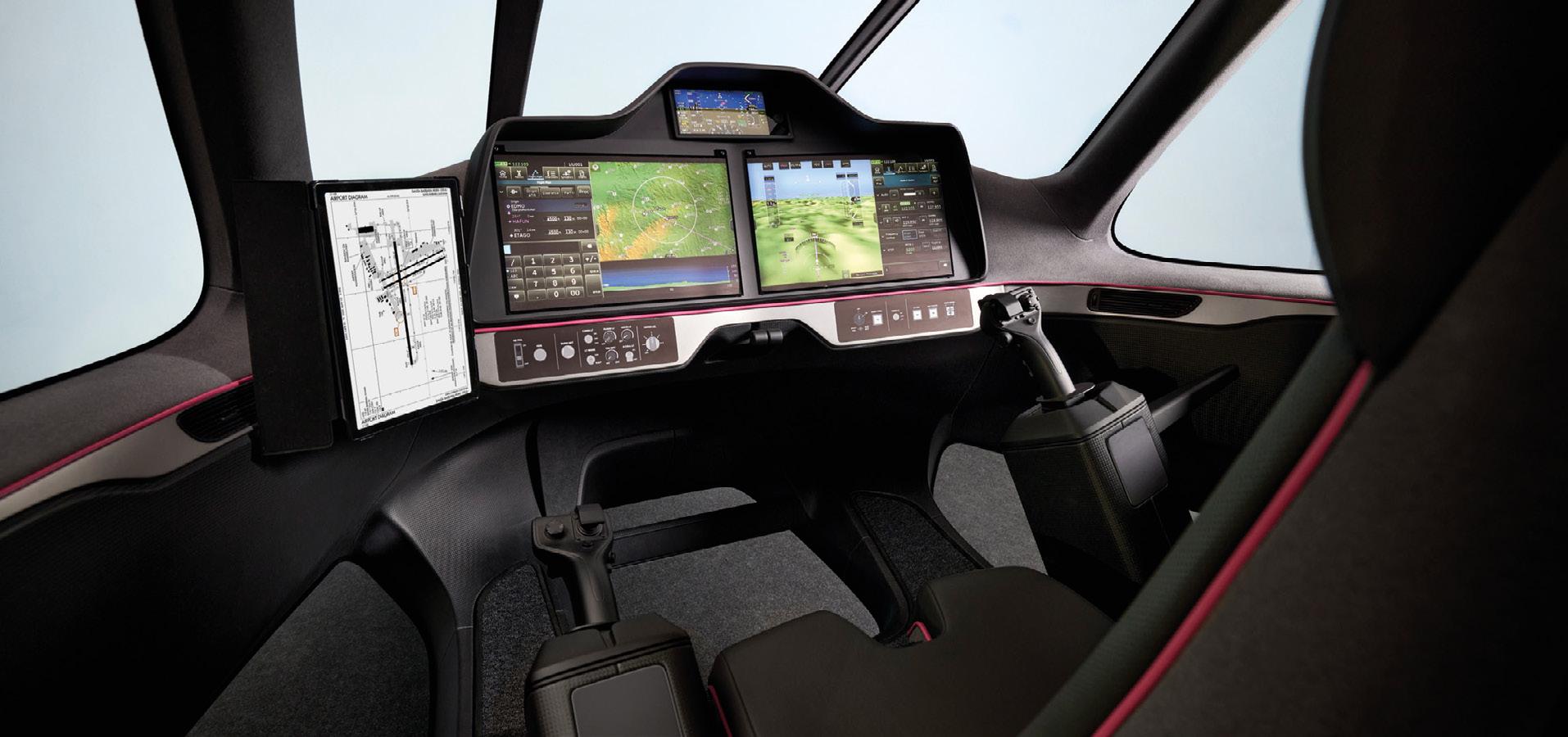

Daniel Wiegand, Lilium Co-Founder and Chief Engineer for Innovation and Future Programs, at a full scale mockup of the Lilium Jet at Lilium´s headquarters near Munich, Germany.
Daniel Wiegand is Co-Founder and Chief Engineer for Innovation and Future Programs at Lilium. A specialist in propulsion, Daniel pioneered Lilium’s aircraft architecture while studying Aeronautics at TUM.
How soon can we fly in a Lilium Jet?
Soon – we are targeting entry into service in 2026 and will change regional air mobility! Lilium is writing aviation history now and we are incredibly happy about the progress we have achieved so far. Within only nine years, Lilium has grown from four founders to a 1.000+ strong team including approximately 500 aerospace engineers and a leadership team responsible for delivering some of the most successful aircraft in aviation history. We have raised ~$1.4bn, have an order pipeline of over 780 aircraft right now, and are working with top tier aerospace suppliers. A lot has happened within the last several months as we started production of the Lilium Jet at end of last year at our headquarters near Munich, Germany. This is an exciting year for us: we’re planning our first piloted flight by the end of this year.
Can my pilot learn to fly a Lilium Jet easily?
Absolutely, pilots will find transitioning to the Lilium Jet quite approachable. Thanks to our partnership with FlightSafety International and Lufthansa Aviation Training, we are developing programs to qualify pilots to fly the Lilium Jet. FlightSafety International is currently crafting cutting-edge, mixed-reality simulators specifically for the Lilium Jet, which not only mirror the jet’s cockpit but also integrate seamlessly into our testing and development processes. These simulators, including an early flight simulator called the e-Sim, will allow pilots to familiarise themselves with our aircraft long before they take to the skies. This advanced training infrastructure ensures that when it comes to learning to fly the Lilium Jet, pilots will be fully prepared to meet high standards of safety and efficiency while operating our revolutionary eVTOL aircraft. We expect the Lilium Jet can be flown with traditional
pilot licenses for fixed wing aircraft and helicopters. All that will be required is a type rating training similar to other aircraft models.
Will the range increase over time?
Yes, the range of the Lilium Jet is expected to increase over time, making our eVTOL jet the first aircraft that will increase in value over time. The jet’s design is particularly efficient in its cruise phase, which means any improvements in battery technology can significantly enhance its range. As battery technology continues to advance, with increases in energy density, we anticipate that these enhancements will directly translate into greater travel distances for the Lilium Jet since reserve energy stays constant. Currently, we anticipate our operating range will be 175km with reserves at launch, and as battery technology improves, this figure will only grow.
Will the Lilium Jet be able to land on my helipad or what do I need at my helipad to make it happen?
The Lilium Jet is designed to be versatile, specifically to ensure that it can operate with existing infrastructure as much as possible. It was important for us from the beginning that large-scale infrastructure is not needed. That´s why the Lilium Jet will be able to land on your current helipad with minimal modifications. The most essential addition a customer will need is an electrical charger with a standard CCS automotive plug. This installation is crucial as it will charge the energy storage system that powers the jet’s all-electric systems. Beyond this, no dedicated vertiport infrastructure, such as thermal management systems, will be required. This approach not only simplifies the integration of our aircraft into current transportation networks but also helps support
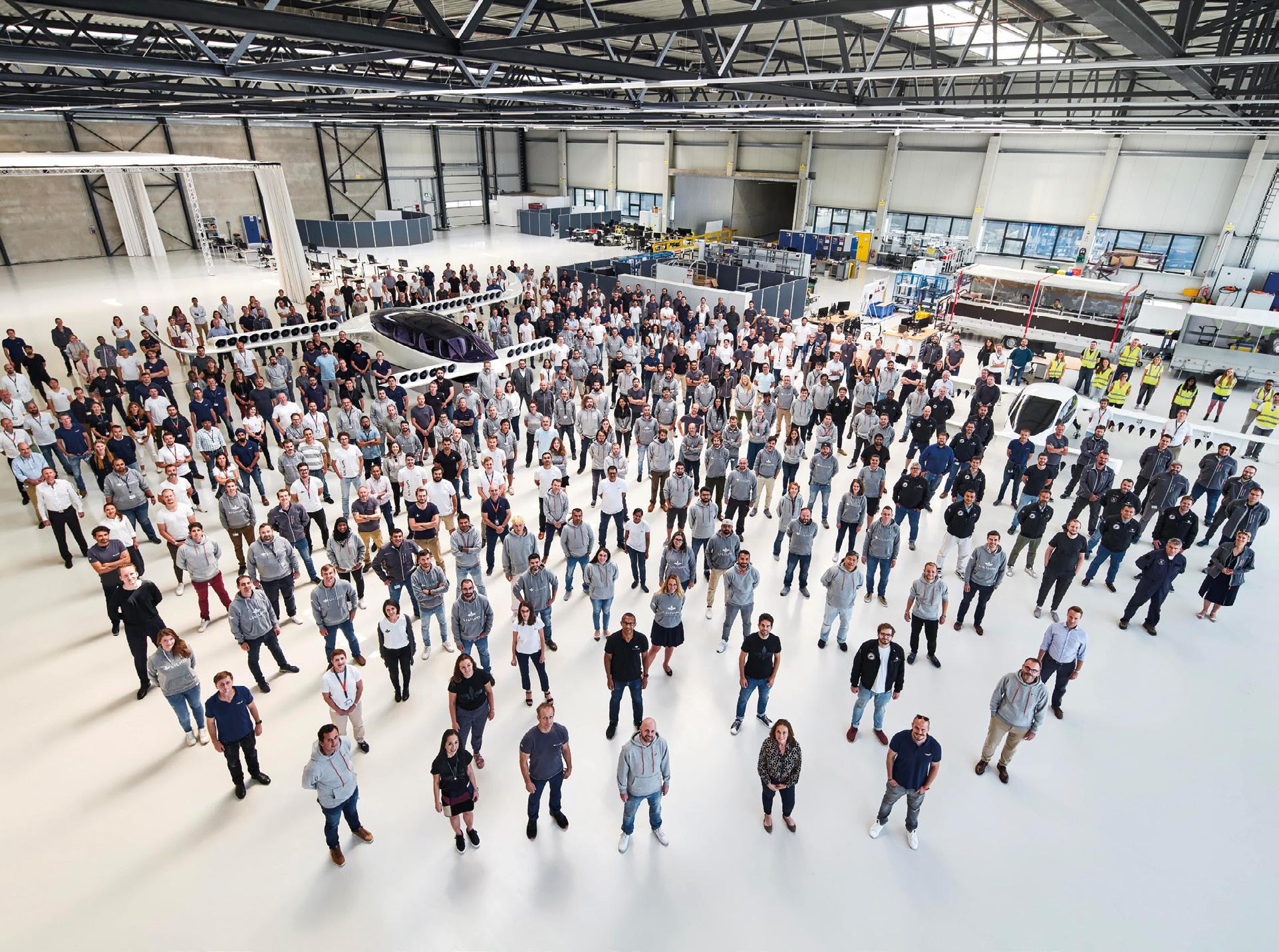
our vision of making advanced air mobility accessible and practical from the very beginning of service entry.
The Lilium Jet is in production, your dream has come true. What are you passionate about now?
The dream will come true once we have thousands of Lilium Jets in operation. Still a lot of work to do. But we already hit a lot of key milestones in our efforts to bring the Lilium Jet to market. We received Design Organization Approval (DOA) from the European Union Aviation Safety Agency (EASA), and we are the first eVTOL manufacturer with an EASA and FAA certification basis for a powered lift eVTOL aircraft. As you mention, we also started production of the first Lilium Jet late last year at our production facilities at our headquarters in Germany. These are exciting times and I´m really proud of our dedicated team who is working very hard every day to change the future of aviation. We’re all now looking forward to one of the next major milestones for the team — the first piloted flight of the Lilium Jet, targeted for the end of the year. I am further passionate about scaling the aircraft and technology to carry more passengers and reduce cost per seat mile after initial entry into service.
How does your cabin compare to a private jet and/or a helicopter?
The Lilium Jet has the largest cabin in the eVTOL market, it is very spacious, and resembles a home-like environment. Encased by its award-winning design, the cabin is also versatile depending on our
customers’ needs and offers several customization options. It can be configured to accommodate for a spacious four-person layout for private flights with luxurious club seating, or up-to 6 seats for passenger flights. With the absence of large, spinning rotors above, the cabin experience is characterized by minimal noise and vibrations. This eliminates the need for uncomfortable headsets, paving the way for effortless conversations and a memorable journey. Using modern, lightweight, and sustainable materials, the interior of the Lilium Jet redefines standards and is setting a new benchmark for advanced air mobility.
Well, that’s one of the remarkable things about the Ducted Electric Vectored Thrust (DEVT) architecture we selected for the Lilium Jet. Besides being completely zero-emission in its operation, it also has a low noise profile. The in-cabin experience is one that’s spacious but also low noise and low vibration—at odds with the traditional in-flight helicopter experience we know today. Noise is a key factor outside the cabin too, and can be a significant issue for operating near populated areas. That’s why the Lilium Jet’s DEVT architecture and its low noise signature serves it well for inner city operation. The duct casings and acoustic liners — together with its optimised fan blade and stator vane aerofoil design — help reduce noise to such an extent that peak values from a 100m distance are around 68dBA (the same as a typical one-to-one conversation) and become inaudible during cruise flight from the ground.
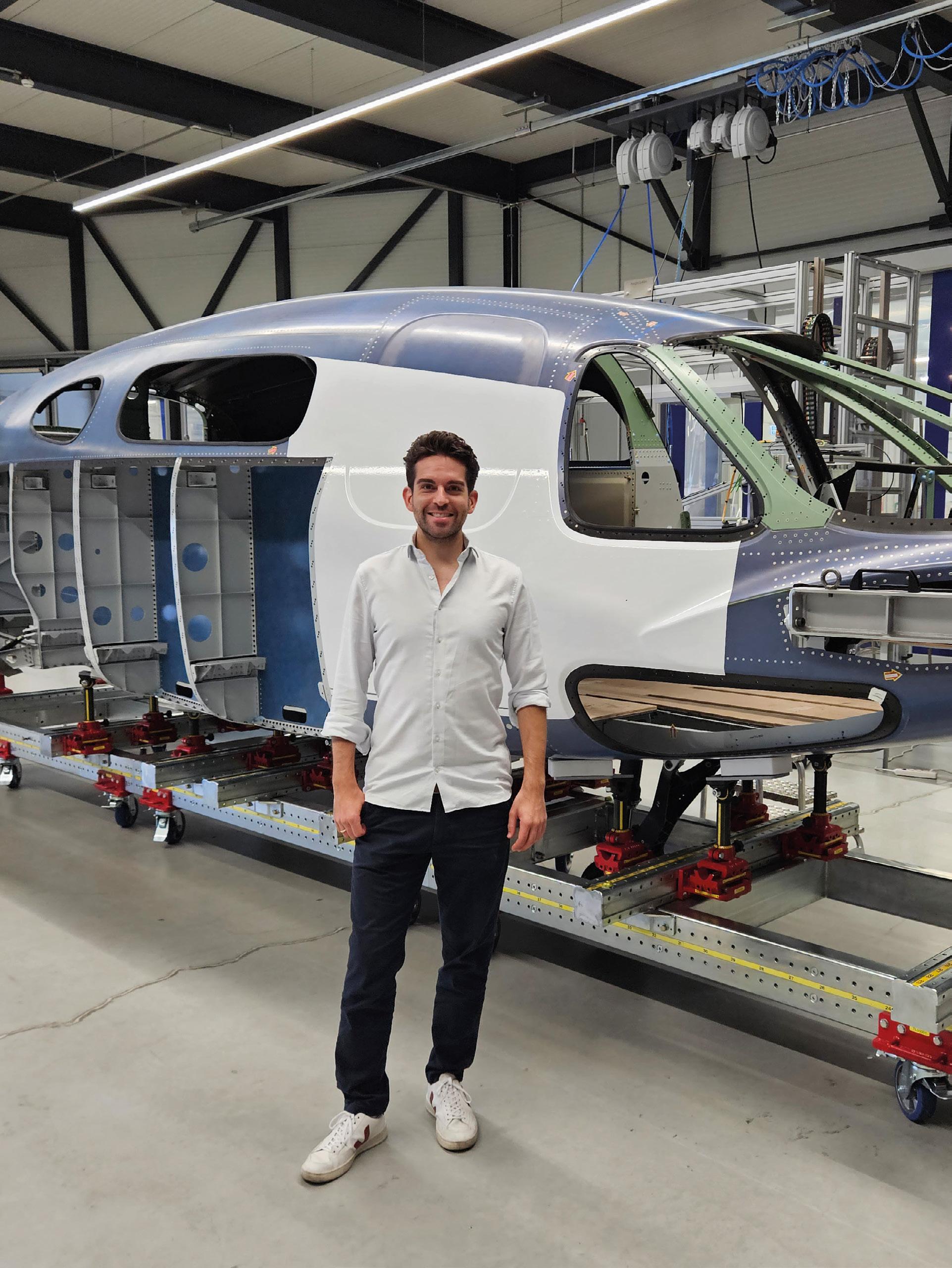
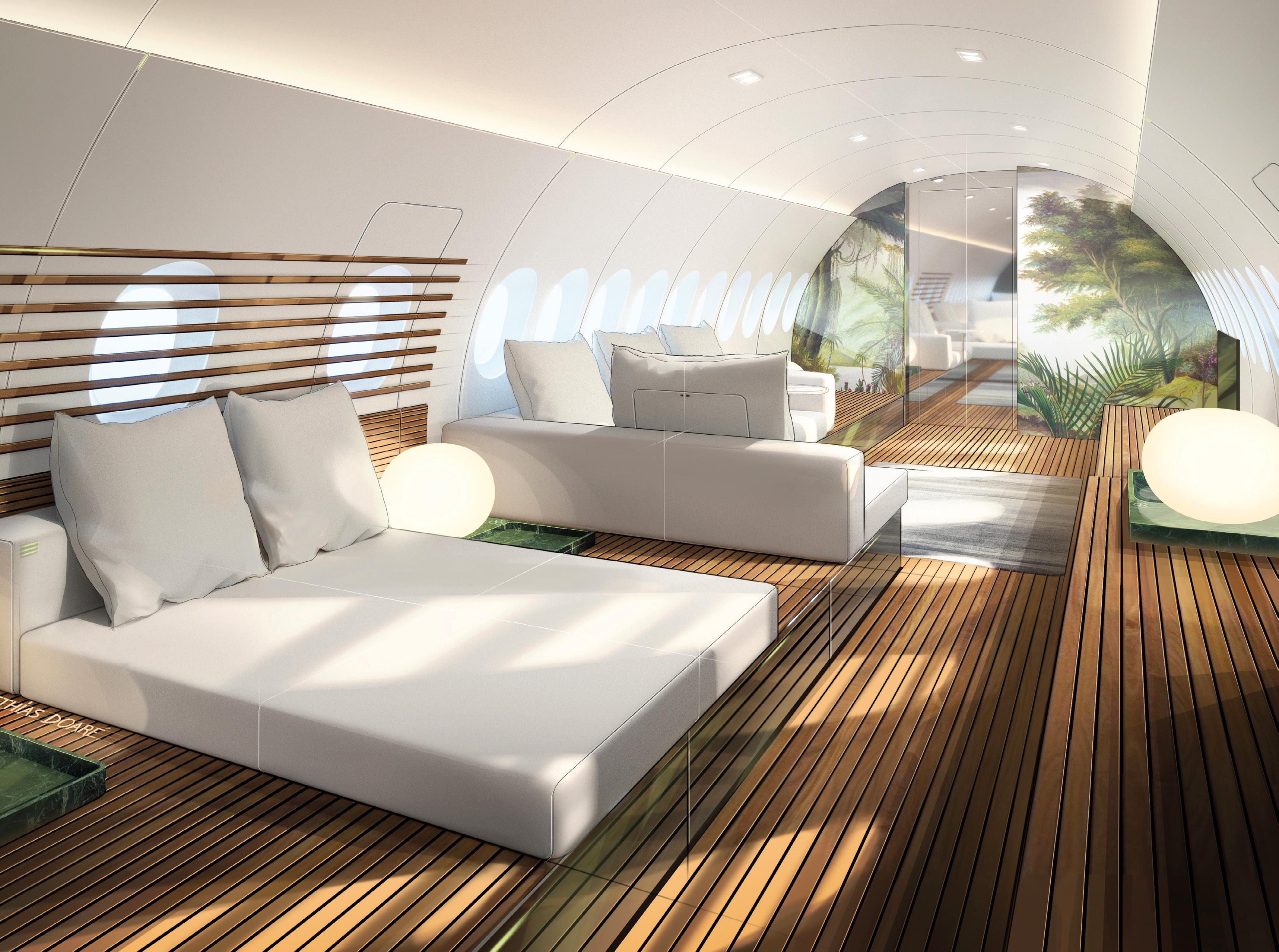

“Cabin’s design, though enriched by a number of modern technical features, never inhibits the natural feel of the cabin and its “barefoot experience” for passengers. ”
SkyRetreat introduces a new level of freedom for the Airbus A220.
The Lufthansa Technik SkyRetreat design study for the cabin of an Airbus A220 envisions a minimalistic approach based on natural materials and offers an open, versatile place of retreat above the clouds. Wooden decking, spacious design, and the latest technical features create an atmosphere of pure relaxation. It translates a luxury yacht’s travel experience into a never-before-seen aircraft interior.
The main idea behind the spacious SkyRetreat design is to create a natural look based on authenticity, dominated by the striking wooden floor and the pure and calm design language of the various cabin monuments. The latter’s design, though enriched by a number of modern technical features, never inhibits the natural feel of the cabin and its “barefoot experience” for passengers.
True relaxation calls for a reduction to the essentials. This is why Lufthansa Technik eliminated every unnecessary element in the cabin interior. The minimal use of materials contributes to a calm and restful travel experience. The simple division of the cabin space into three zones enhances the spacious ambience: a variable utility area at the rear, a spacious and open lounge, and the revolutionary observation deck at the front.
The centrepiece of the concept is the Observation Deck which, for the first time in VIP aviation, extends the passenger cabin seamlessly into the aircraft’s flight deck, allowing all occupants to enjoy unprecedented and totally immersive views of new horizons.
Moreover, the cabin’s design discreetly incorporates the newest high-end
Lufthansa Technik revenue in the first quarter of 2024: 1.8B
Revenue increase compared to the first quarter of 2023 : 15%
Number of contracts signed in the first quarter of 2024 : 174
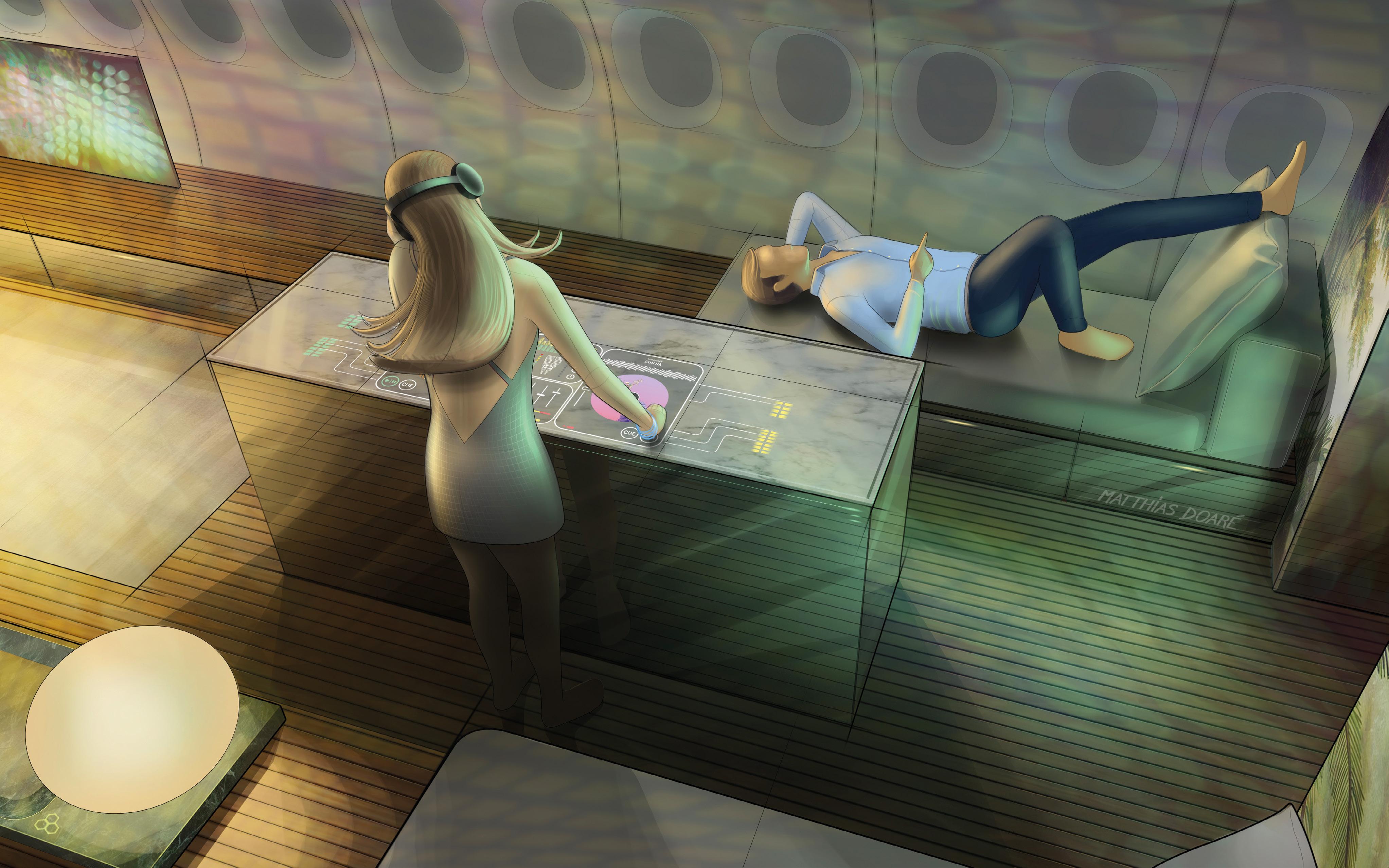



technologies, from smart touch surfaces and a distinctive lighting concept to an open deck with a central buffet as the main element. This multifunctional element allows for flexible use in any direction. With just a touch of a finger, its surface turns into a pair of turntables, transforming the cocktail zone into a chill-out lounge or even a party area. The DJ console can effortlessly transition into a catering buffet or a gaming interface, fostering a personalised lifestyle on board. A smart interactive surface enables you to display anything you can imagine on a screen, be it a game of chess, a movie, or important business data.
The open space concept enables a versatile and individual use of the cabin, offering passengers even more possibilities to enjoy their flight time. With SkyRetreat, travelling to one’s destination becomes the highlight of the journey.
The nature-inspired design is dominated by the distinctive wooden flooring and the upper cabin section. The numerous technical features in the interior are discreetly integrated into the design. Stateof-the-art equipment such as 4K displays, smart touch surfaces, mood lighting, and the latest connectivity solutions are always within easy reach, ready to satisfy passengers’ personal needs.
As Wieland Timm, Senior Director Sales, VIP & Special Mission Aircraft at Lufthansa Technik states: “With its immersive Observation Deck and technical features, SkyRetreat provides a revolution when it comes to offering a unique and pure flying experience. Tailoring the concept to the Airbus A220, we are targeting an entirely new business section in which especially first time VIP jet owners benefit from this extremely versatile VIP design for a reasonable investment.“
Besides the VIP completion capabilities, Lufthansa Technik already supports the Airbus A220 family with a comprehensive portfolio of services ranging from line maintenance and component services to engine services for its PW1500 geared turbofan engines.
Certified internationally as a maintenance, production and design organization, the company has a workforce of more than 25,000 employees. Lufthansa Technik provides tailored maintenance programs, modification, completion and conversion as well as innovative cabin products, material pooling or engine services.
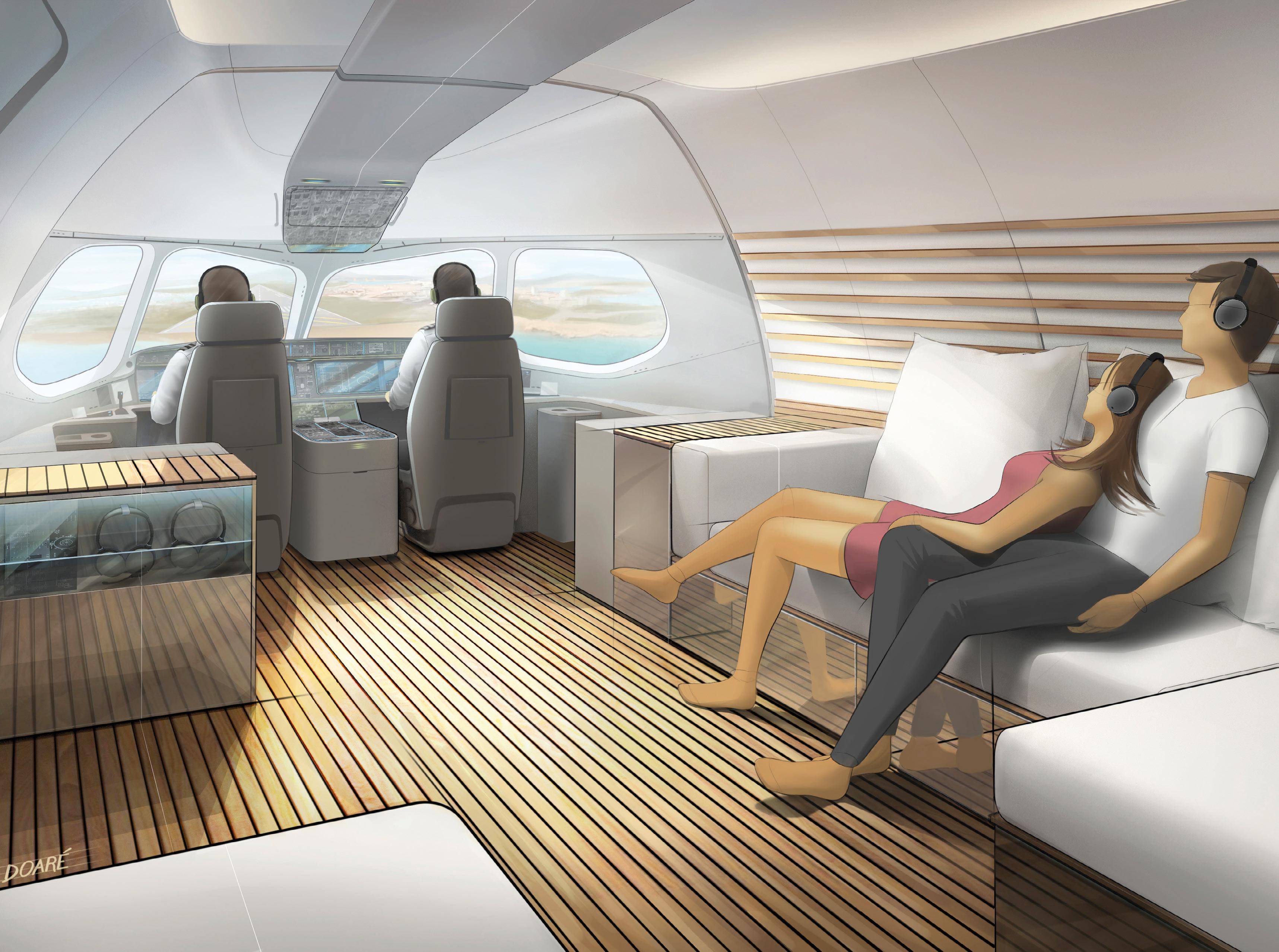

LUFTHANSA TECHNIK’S PORTFOLIO COVERS THE ENTIRE RANGE OF SERVICES OF AIRCRAFT MAINTENANCE, REPAIR, OVERHAUL AND MODIFICATION SERVICES FOR CIVIL AIRCRAFT, FROM COMMERCIAL TO VIP AND SPECIAL MISSION AIRCRAFT.





REID HOFFMAN, CHRIS YEH
When growing at a breakneck pace, getting to the next level requires very different strategies from those that got you to where you are today. In a book inspired by their popular class at Stanford Business School, Hoffman and Yeh reveal how to navigate the necessary shifts and weather the unique challenges that arise at each stage of a company’s life cycle, such as: how to ignite and sustain relentless growth; strategies for hiring and managing; how the role of the founder must evolve, etc.
MAN’S SEARCH FOR MEANING
VIKTOR E. FRANKL
Viktor Frankl’s memoir vividly recounts life in Nazi death camps and offers profound insights into spiritual survival. Drawing from personal experience and patient narratives, Frankl contends that while suffering is inevitable, we have the power to choose how we respond, discovering meaning within it and forging ahead with a renewed sense of purpose. Central to his theory, known as logotherapy, is the belief that our primary human motivation isn’t pleasure but the pursuit of meaningful goals.
THE BEGINNING OF INFINITY
DAVID DEUTSCH
Renowned physicist and celebrated author David Deutsch guides us through an expansive exploration of science, art, moral values, civilisation’s history, and political theory. According to Deutsch, we are governed solely by the laws of physics, which place no theoretical limits on our capacity to understand, control, and accomplish. Ambitious, innovative, and convincingly articulated, “The Beginning of Infinity” uncovers profound links between natural laws, human existence, knowledge, and the prospects for advancement.
NICK BOSTROM
The fate of our future rests on machine superintelligence. Can we create a seed AI or safeguards to control an intelligence explosion? To answer, Bostrom explores oracles and genies; boxing, tripwires, and mind crime; our cosmic potential; normativity, convergence, brain emulation, and technology integration; Malthusian economics and dystopian evolution; AI, biological cognitive enhancement, and collective intelligence.
WINNING
JACK WELCH AND SUZY WELCH
Jack Welch presents an extensive management handbook tackling the complex strategic, organisational, and personal obstacles encountered throughout one’s career. Filled with candid stories from his own experience, direct advice, and essential guidelines, Welch outlines the four foundational principles that drove his success. This book serves as the ultimate guide for navigating the challenges of business at any career stage.
“Brave New World”, an influential classic by Aldous Huxley, portrays a future society characterised by inequality and advanced technology, where humans undergo genetic engineering, social conditioning, and drugging to uphold an authoritarian regime, potentially sacrificing their freedom, humanity, and even their souls. Written in response to 1930s fascism, the novel remains relevant today, reflecting a world controlled by mass entertainment, technology, medicine, pharmaceuticals, and the subtle influence of powerful elites.
Learn how venture capitalists think to launch or grow your business successfully. Kupor reveals how VCs decide on investments and how entrepreneurs can secure favourable deals and nurture valuable VC relationships. Key insights include why VCs often limit investments within specific business categories, the importance of storytelling in fundraising, strategies for handling “down rounds”, managing VC involvement in operations, and building early relationships with potential acquirers.
In “The Startup Playbook”, Kidder provides unparalleled access to the experiences of influential CEOs and founders, revealing their most closely held advice. Through face-to-face interviews with 40 visionaries, including those behind PayPal, LinkedIn, AOL, TED, Flickr, and more, readers gain exclusive insights into building iconic brands. This essential guide covers everything from idea selection to finding funding and overcoming inevitable challenges.
In this illuminating journey, Kahneman introduces us to the dual systems that steer our thoughts: System 1, swift and instinctive, and System 2, deliberate and analytical. Unveiling the strengths and pitfalls of rapid thinking, he exposes the impact of intuitive impressions on our decisions—from corporate strategies to personal happiness. Through engaging examples and practical advice, Kahneman unveils the intricacies of our cognitive biases and offers strategies to navigate them.


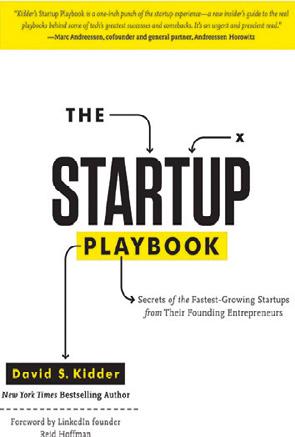
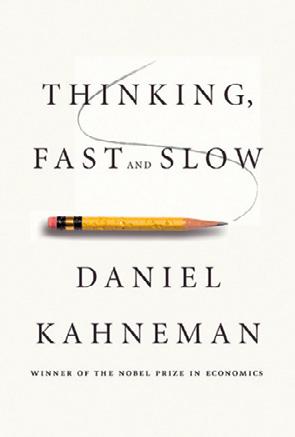
BLAKE MASTERS
In “Zero to One”, discover the roadmap for building the most valuable companies of the future. This book unveils the strategy for creating entirely new industries and products that defy competition. Learn how to identify untapped markets, develop unique products, and scale up to establish lasting monopolies. This essential guide isn’t just for tech startups—it’s a must-read for anyone seeking to break free from the zero-sum game of competition.
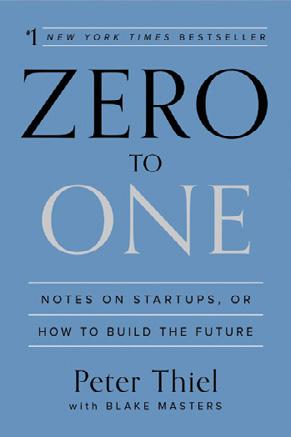
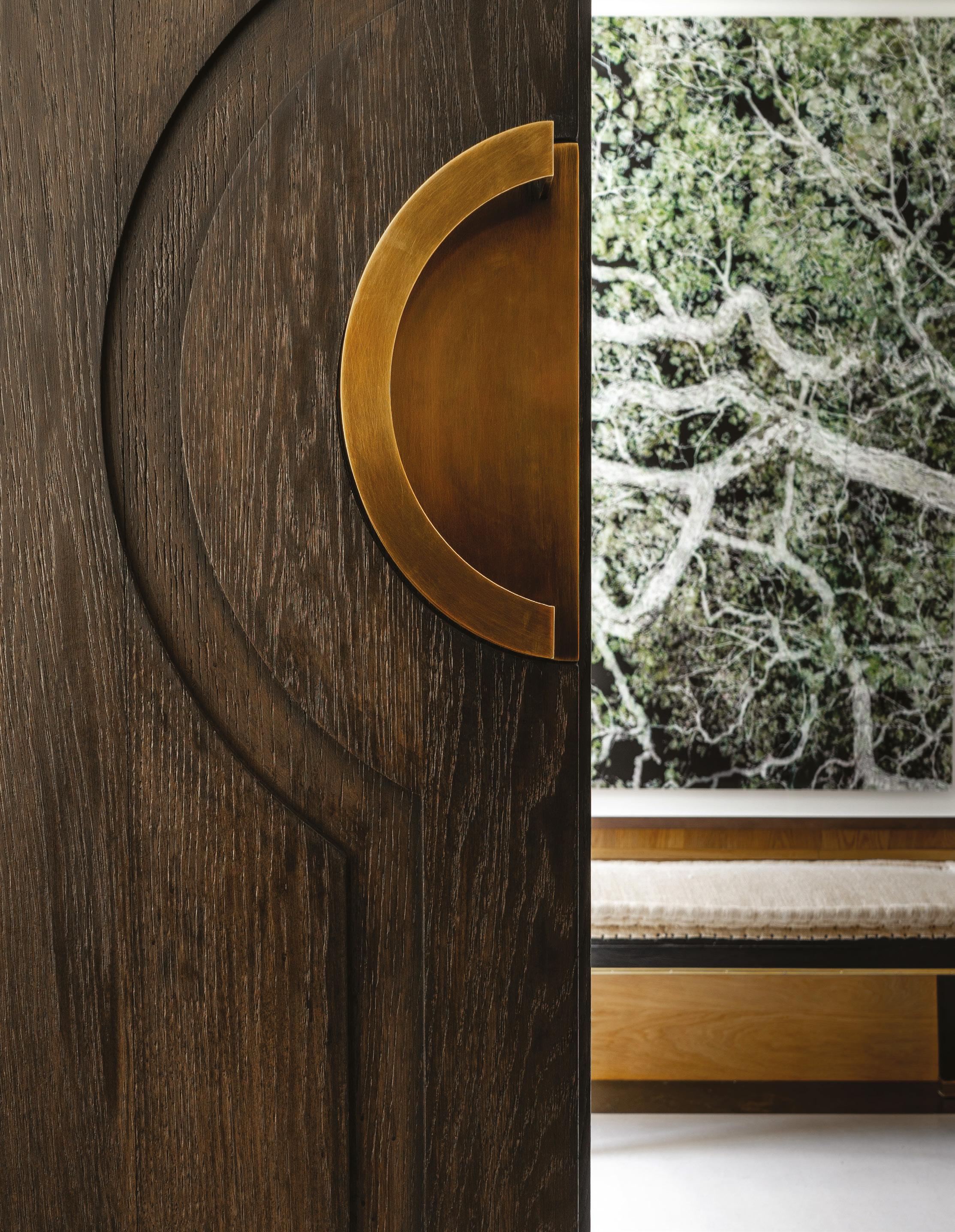
Every year, editors at Wine Spectator assess the wines reviewed in the preceding 12 months to curate the top list, focusing on quality, value, availability, and excitement. This yearly compilation celebrates outstanding wineries, regions, and vintages globally. In the 2023 rankings, classic wines continue to impress. Bordeaux secured two spots in the Top 10. California shines prominently overall, especially with Cabernet and Chardonnay selections. Italian wines make up 20% of the list (the Top 100), notably those from Piedmont and Tuscany. The Rhône Valley in France also features prominently. The global premium wine market is expected to gain market growth in the forecast period of 2022–2029. Data Bridge Market Research predicts that the market will grow at a compound annual growth rate (CAGR) of 6.5% from
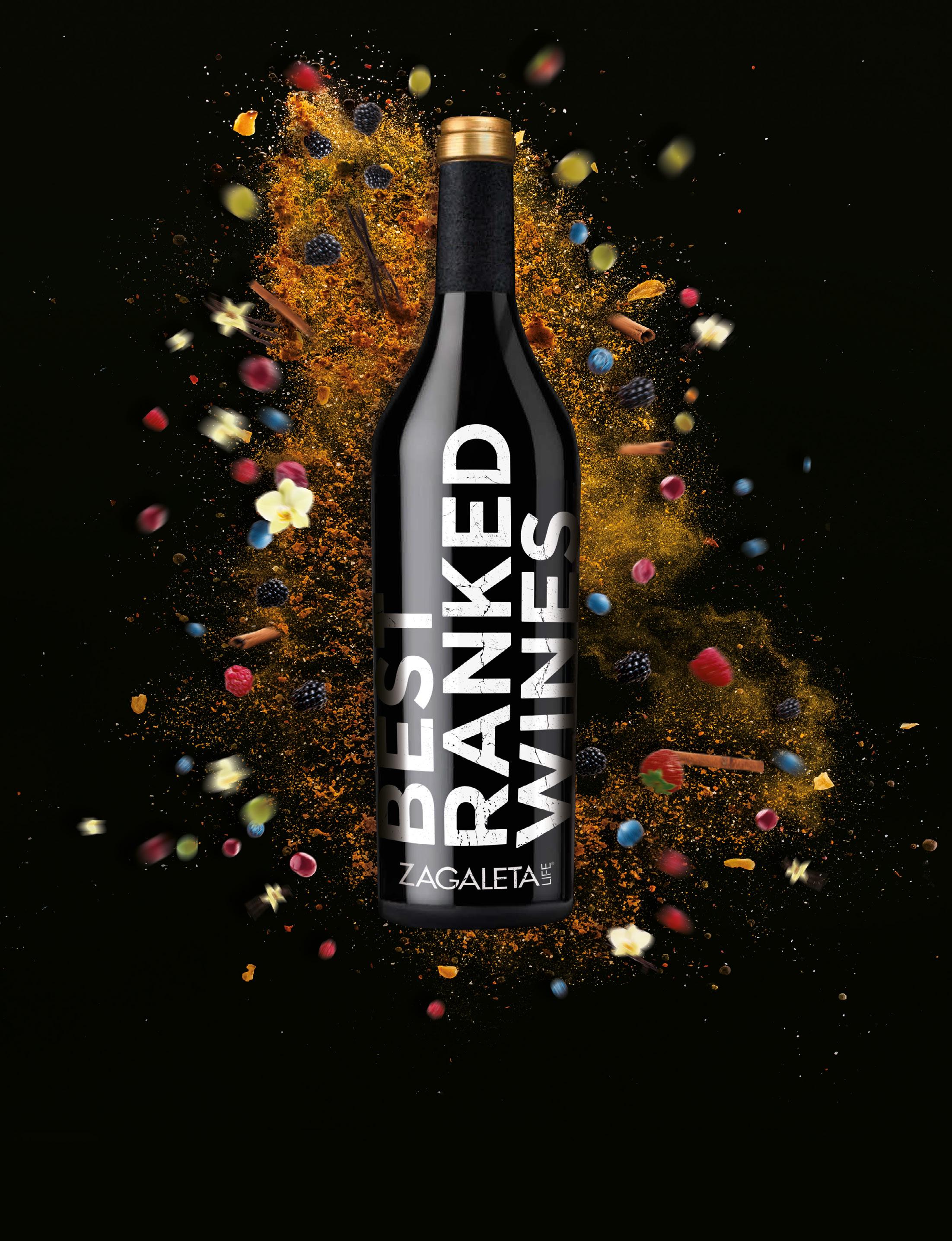
2022 to 2029, with a projected value of USD 89,087.95 million by 2029. Europe dominates the premium wine market in terms of market share and market revenue, and it will continue to thrive during the forecast period.
The European premium wine market is expected to grow due to a rise in wine consumption with meals, consumption of premium wine at social gatherings and celebrations, an increase in consumer preference for premium wines, and an increase in options to customise the flavour, colour, and packaging of premium wine. These factors are expected to drive the regional market.
The rapid technological advancements and perfection in the traditional art of winemaking are increasing the demand for premium wine. The growing population of alcohol-consuming adults is further fueling market growth. Moreover, the different packaging options of premium wine, along with its

customisation, online availability, presence of major market players in the region, and high living standards, are also boosting the market’s growth. The global premium wine market is growing in the forecast year due to the rise in market players and the availability of various premium wine brands in the market. Along with this, manufacturers are engaged in producing different wines for the market. The increasing number of bars and restaurants is further boosting market growth. However, the high cost of wine production and the gradual shift of consumers towards other alcoholic beverages might hamper the growth of the global premium wine market. The various health benefits, changing lifestyles, and strategic initiatives by market players are giving opportunities to the market. However, the overconsumption of wine, hampering various serious diseases, and complications in meeting consumer demand are key challenges for market growth.
The growing demand for wine, owing to its different health benefits, helps boost overall market growth. The rising e-commerce, courier, wine delivery services are also contributing to the growth. The major market players are highly focused on various new wine launches. In addition, the rise in alcohol socialisation among consumers is also contributing to the rising demand for the market.
Some of the major players operating in the premium wine market are Vina Concha Y Toro, Treasury Wine Estates, Mount Mary Vineyard, Vins Grands Crus, Sula Vineyards, Moss Wood, Leeuwin Estate, E. & J. Gallo Winery, Constellation Brands, Inc., Castel Freres, The Wine Group, Accolade Wines, Pernod Ricard, Rockford, Henschke Cellars, Gioconda, Cullen Wines, Bass Philip, Changyu Pioneer Wine Company, Casella, Chateau Cheval Blanc, Miguel Torres S.A., Fetzer, GRUPO PENFLOR and among others.
According to the Global Innovation Index 2023, the top ten most innovative economies are Switzerland, Sweden, the USA, the UK, Singapore, Finland, the Netherlands, Germany, Denmark, and the Republic of Korea.
The Global Innovation Tracker 2023 provides a comprehensive analysis of the current state of global innovation, examines the pace of technological advancement, and looks into how innovation navigates through the global challenges posed by elevated inflation, rising interest rates, and geopolitical conflict in the immediate aftermath of the COVID-19 pandemic. The report delves into four critical phases of the innovation cycle: investment in science and innovation, technological progress, technology adoption, and the socioeconomic impact of innovation. By scrutinising these areas, the Global Innovation Tracker 2023 offers valuable insights into how innovation is evolving and adapting in an increasingly complex global environment.










Switzerland
Sweden
United States of America
United Kingdom
Singapore
Finland
Netherlands
Germany
Denmark
Republic of Korea
In 2022, science and innovation investment showed mixed performance amid numerous challenges and a decline in innovation finance. The number of scientific publications continued to grow, albeit at a slower rate. Global government R&D budgets are projected to grow in real terms, with significant increases in R&D spending by major corporate investors. However, it is uncertain if this will offset rising inflation. R&D expenditures in high, upper-middle, and low-income economies have surpassed pre-pandemic levels, with most regions returning to or exceeding these levels, except for Latin America and Central and Southern Asia. International patent filings stagnated, and venture capital investments sharply declined in value in 2022 after an exceptionally high level in 2021, reflecting a worsening climate for risk finance.
Significant technological advancements in the information technology, healthcare, transportation, and energy sectors continue to yield groundbreaking developments, opening new opportunities for global technological advancement. Computing power remains historically strong, and the costs of renewable energy and genome sequencing continue to fall.
There has been a gradual increase in the adoption of technology, enhancing access to safe sanitation and connectivity. The uptake of electric vehicles (EVs) is booming, and the demand for greater automation has led to increased robot installations. However, overall penetration rates for most innovation indicators remain medium to low, and radiotherapy availability for cancer treatment is still inadequate in many countries.
The socioeconomic impact of innovation remains subdued. The COVID-19 crisis caused volatility in labour productivity, which is currently stagnant, and life expectancy fell for a second consecutive year (with healthy life expectancy continuing to increase but at a slower rate). Carbon dioxide emissions continued to rise in 2022, albeit at a lower rate than the post-pandemic surge of 2021, with no global reductions in sight.
Figure 1 GDP growth and total and business R&D growth rates, 2007-2024
Source: WIPO estimates, based on the UNESCO Institute for Statistics database, Organisation for Economic Co-operation and Development (OECD) Main Science and Technology Indicators (March 2022), Eurostat, Ibero-American and Inter-American Network of Science and Technology Indicatorss (RICYT), China Statistical Yearbook 2022, and the International Monetary Fund’s World Economic Outlook Update, July 2023.
Socioeconomic impact
Notes: See Data notes at the end of this section for a definition of indicators and their data sources. Long-term annual growth refers to the compound annual growth rate (CAGR) over the indicated period. Historical data may have been updated and could differ from last year’s Global Innovation Tracker. Estimates or incomplete data are indicated by an asterisk (*). n.a. indicates not available.
“The mission that the founder, D. Enrique Pérez Flores, instilled in his advisors, shareholders, clients, and collaborators still lives on today, which is the permanent aspiration—the ambitious task—of ensuring the long-term development of the Zagaleta brand while respecting its identity, heritage of values, and management capacity.”
Jacobo Cestino, CEO, Zagaleta® Group
Being a witness to the last sixteen years of the life of our founder, D. Enrique Pérez Flores (1923-2020), has been a privilege, especially observing the dedication and passion he put into his daily work well into his nineties.
Ironically, the history of La Zagaleta begins at the end of the 1980s, during a real estate crisis. In those years, we witnessed significant events such as the weakness of the peseta, the announcement of the Universal Exposition of Seville for 1992, the European Union with its Monetary Union project, interest rates through the roof - loans at 15% -, American bombers flying over the Rota base and the Strait of Gibraltar heading to Kuwait and Saudi Arabia, the stock market crash of ‘87, Russia’s first economic crisis and the ruble collapse after the fall of the Berlin Wall, the fear of flying due to hijackings... In short, a challenging and hostile context that culminated in 1989 with the revolutions that overthrew the communist states of the Eastern Bloc. Along with the dissolution of the Iron Curtain in Europe and the fall of the Berlin Wall, symbols of the Cold War, they announced the disappearance of the Soviet Union two years later.
Undoubtedly, a Copernican turn for the West.
In that increasingly fast-paced and demanding world of the early 1990s, the search for a haven of peace and tranquility for the European elites became an urgent necessity in D. Enrique’s mind. It is in this context that the proposal for a luxury real estate resort emerges, designed to offer a unique lifestyle combining discretion, security, privacy, exclusivity, services, nature, golf, and top-tier experiences. A place where residents and guests could disconnect from daily stress and connect with themselves, nature, and the community. La Zagaleta is much more than just a place to live.
Much has been written about the values D. Enrique imparted to La Zagaleta, but if there are some that stand out especially, they are security, exclusivity, and discretion. I would add another, which perhaps was not consciously in the founder’s mind, but which is the result of the passionate work of everyone who contributed to the creation and consolidation of La Zagaleta: beauty.
Security has historically been a cardinal value. Thinkers of all eras have reflected on the nature of security, its importance for individual and social life, and the different ways to achieve it. In his work “The Republic,” Plato posits the idea that security is a necessary condition for justice and happiness. Aristotle defined security as “the absence of fear” and maintained that it is essential for individual and social well-being. In the modern era, in his work “Leviathan,” Thomas Hobbes argued that security is the most fundamental value for human beings. John Locke went even further, proposing that security is a natural right of individuals.
From its inception, the company clearly understood that security was a necessary condition for a fulfilling life within the resort, and therefore considered it a fundamental pillar of its philosophy, dedicating and continuing to dedicate significant efforts to it. We must also consider that security is not something that can be taken for granted; constant efforts are needed to maintain and strengthen it.
Exclusivity as a differentiating value for our founder was the “culprit” of the uniqueness our project acquired over the years and was pursued relentlessly in the early days. Being able to select clients meticulously, as was done, led to the sense of belonging to the La Zagaleta community being the most valuable asset we enjoy today. That highly risky bet at the time has borne fruit thirty years later and demonstrates that long-term vision is essential in projects that endure beyond the people who create and develop them.

Discretion has always been associated with positive concepts such as moderation, prudence, respect, and privacy, all essential values in a place like La Zagaleta, where the sense of community is very strong, and social life is paramount for the resort’s development. Discretion is necessary to protect our clients’ privacy and, therefore, respect each one’s autonomy. If something has characterized La Zagaleta’s professional teams, it has been discretion and confidentiality throughout the business value chain, as well as regarding life within the resort. This is undoubtedly one of the traits most valued by our clients, without which La Zagaleta and its brand would not be what they are today.
The beauty that graces every corner of La Zagaleta on the slopes of the Serranía de Ronda and Benahavís is the aesthetic experience that these landscapes and the resort’s configuration evoke in our clients and visitors. I have said it more than once, and I never tire of repeating it. As Schopenhauer wrote, “beauty is one of the few things that can provide us a temporary escape from the suffering that characterizes human existence.”
And La Zagaleta is certainly a privilege for the senses.
Anyone who enjoys studying the history of the great business successes of the last century knows with certainty that every great brand is the result of much effort, teamwork, innovation, adaptation, and wisdom around a simple concept: an idea. Indeed, and as obvious as it may seem, especially when dealing with it daily, without an idea there is no initiative and, therefore, no aspiration can be born. Every great brand, no matter how wellknown, powerful, or valuable, needs to constantly ‘confirm’ itself through dissemination in all its forms. The culmination of all these efforts translates into the sale of its products.
After thirty years of development, we have learned something: “every product is sold once,” and although today we may consider it something normal, the confirmation of that first sale was experienced at the time by the human team as a historic moment. The golf, residential, and hotel project - historically known as Valderrama II - that we are currently developing in Castellar, in the Sotogrande area, will allow us to once again perceive the magic of the first sales, the pride of having conceived and built a natural haven from scratch, and - of course - to continue expanding the founder’s dream in a consolidated destination just forty minutes from La Zagaleta.
If there is any obligation we have, both the management team and every single collaborator of our companies, it is to maintain our founder’s vision, ensuring the company’s sustainability and profitability, shaping the company’s character, guiding its strategy, and safeguarding the founding mission in the long term.
That, and no other, is our commitment to maintaining the legacy of D. Enrique Pérez Flores, and his original promise of value.
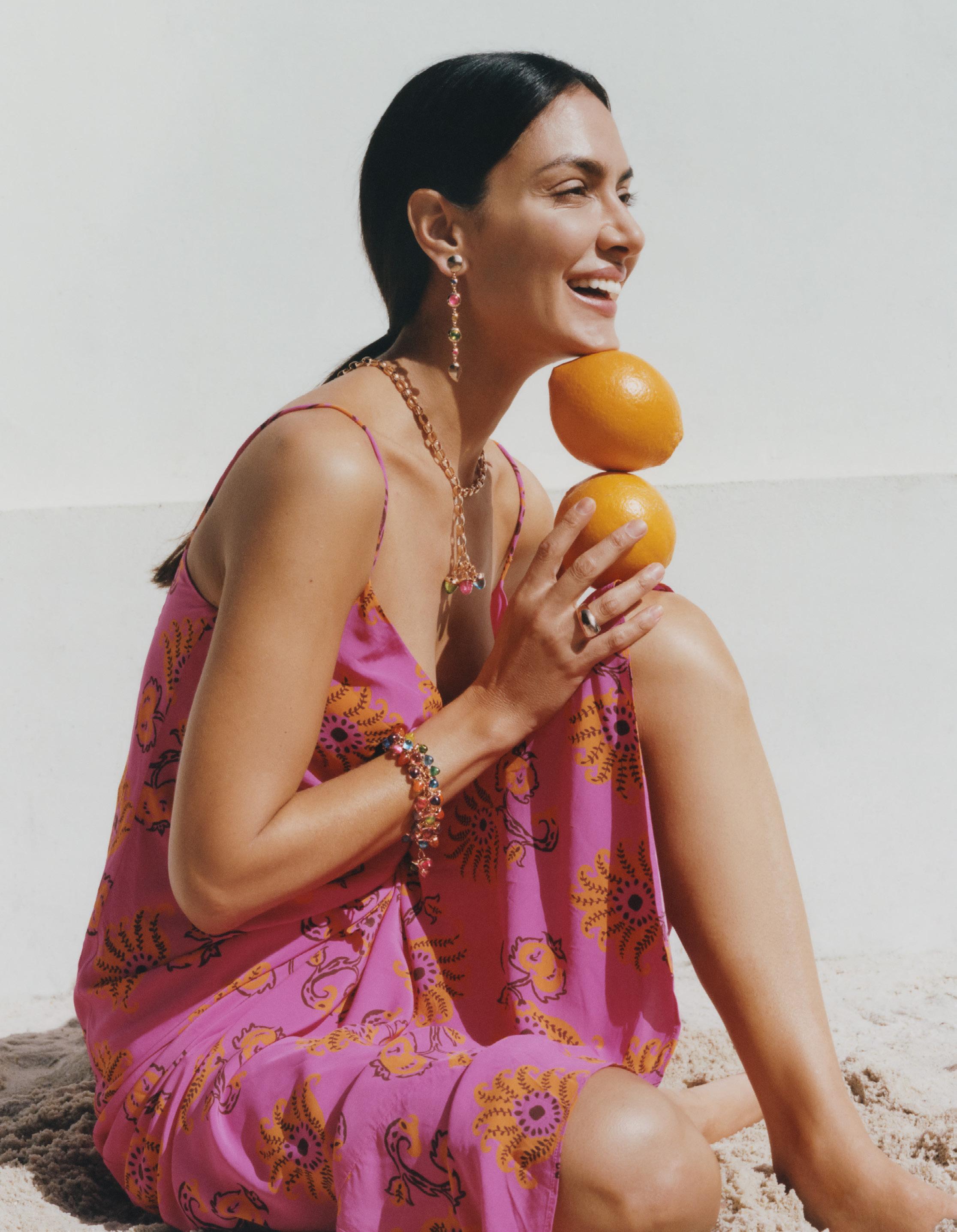
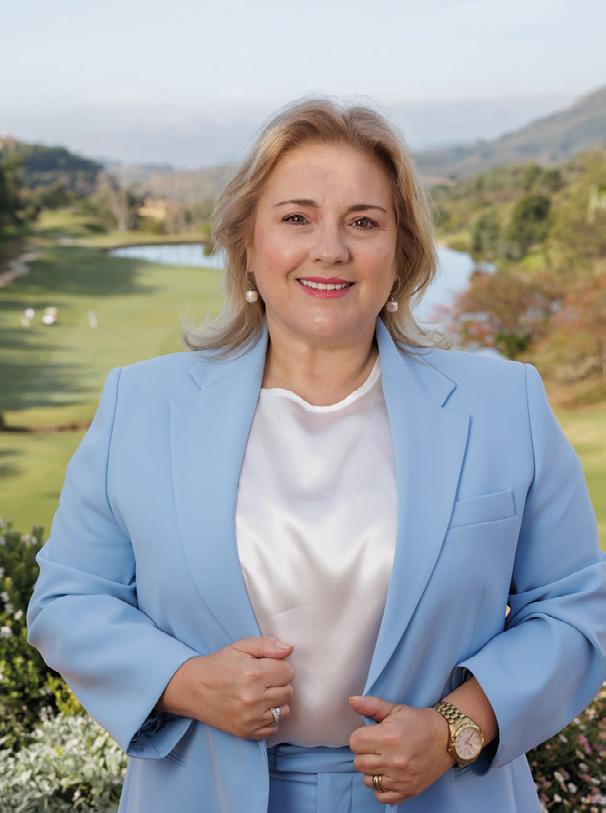
Belén Priede HUMAN RESOURCES DIRECTOR
Human capital stands as a company’s most valuable asset, underscoring the critical importance of adept management, regardless of the industry. The HR department assumes a pivotal role in this regard, tasked with ensuring employee well-being, regulatory compliance, optimal team sizing, sustainable wage structures, talent identification and retention, fostering a positive corporate culture, and adapting to evolving needs while harmonizing company and employee interests. This holistic approach forms a cornerstone of organizational success.
The multifaceted responsibilities of HR encompass job profile design, recruitment processes, onboarding, equality initiatives, occupational health and safety, contract management, conflict resolution, training, and professional development, offering avenues for specialization. Technological advancements and the integration of AI present new tools that streamline HR processes and enhance efficiency.
At Grupo Zagaleta, our teams distinguish themselves through unwavering dedication to our shared vision, striving daily to achieve collective objectives. This commitment stems from a mutual understanding of the company’s dedication to each individual within its human capital. Each day, I witness the embodiment of my personal mantra: “Strive to be the best version of yourself,” even on the toughest days—therein lies true strength!
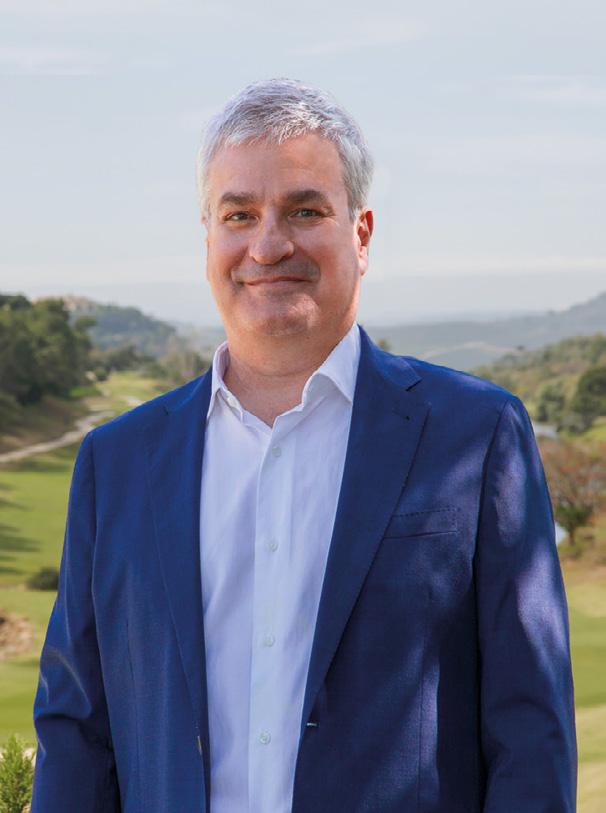
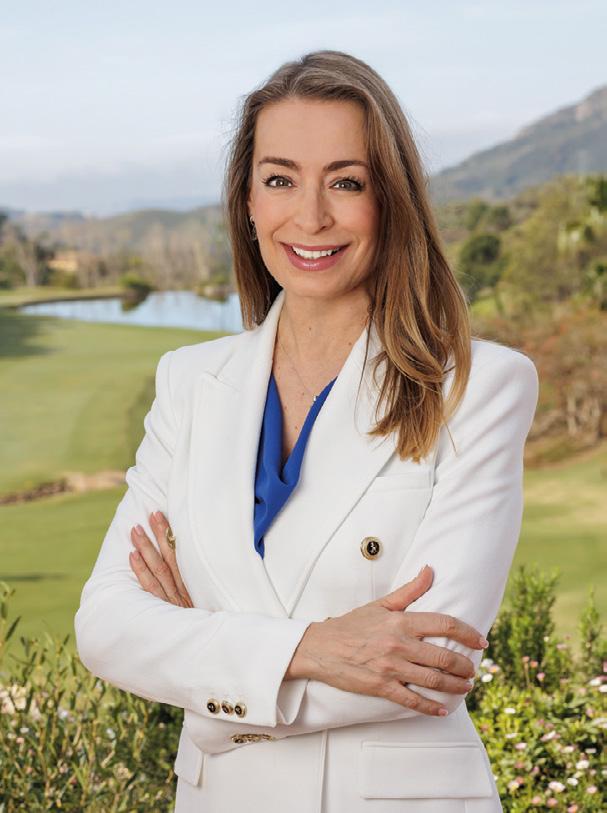
Javier Peña FINANCIAL DIRECTOR
Like every member of Zagaleta, I feel proud to be among those who define the standards of luxury, amid the pioneers in creating exceptional real estate experiences and distinguishing themselves by their focus on exclusivity, quality and attention to detail. Integrity, responsibility and transparency are values that guide my management; with collaboration, teamwork and respect being the means to achieve common goals. My objective is to lead, through inspiration and motivation, a team of professionals passionate about their work. Our vision is to maintain our position as the leading luxury developers on the Costa del Sol, as we continually challenge and exceed our clients’ expectations, without limiting ourselves to the pursuit of product perfection but striving to provide personalised attention, transparent communication and exquisite service.
This approach feeds the pride of being part of a unique organisation, for which each project is a masterpiece that reflects our commitment to quality and passion for luxury, which enjoys a motivating social recognition and whose future, thanks to its team, vision and commitment, looks bright and full of enthusiasm.
Each team member plays a vital role in upholding our reputation for excellence and providing unparalleled service to its residents. By maintaining high standards and continuously striving for improvement, Zagaleta ensure that the community remains a symbol of refined living.
As the Commercial Manager of La Zagaleta Service Management, it is a privilege to be an integral part of a company distinguished by its dedication to excellence in unparalleled services. Our vision extends beyond being a development company; we see ourselves as architects of exclusive experiences. I approach challenges with a strategic perspective, focused on continuous improvement and customer satisfaction.
In my management role, I emphasize the significance of After Sales, understanding that our relationship with clients doesn’t conclude with a transaction but marks the beginning of a long-term connection. The key is to provide personalized solutions that highlight not only our professional excellence but also the dedicated attention to our residents’ individual needs and preferences. Customer interaction forms the foundation of my approach, constructing strong relationships and implanting a sense of belonging to the exclusive La Zagaleta community. I take responsibility for projecting the company’s image with pride and commitment, strengthening our presence on the Costa del Sol and beyond.
Through consistent dedication, I contribute to La Zagaleta’s purpose to creating a unique and exclusive environment, where every client feels valued and special and every experience is created with enthusiasm and care.

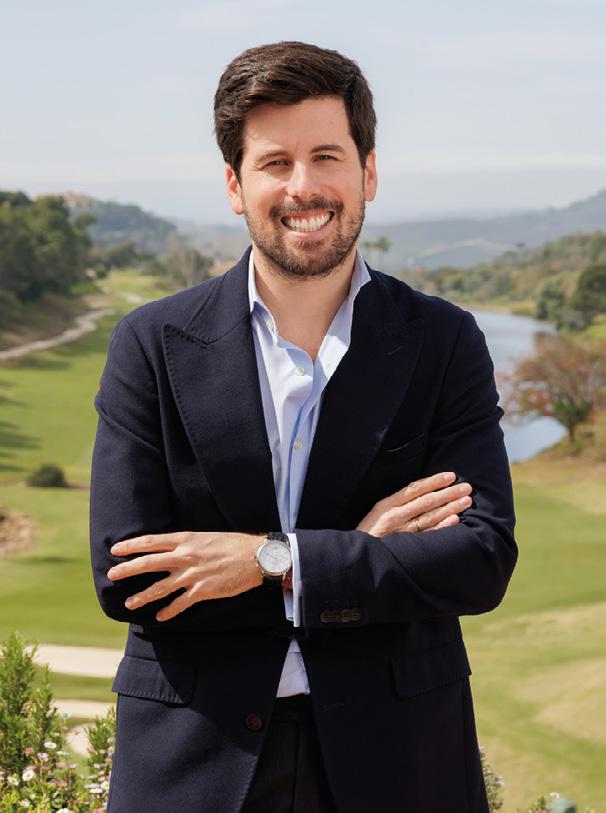
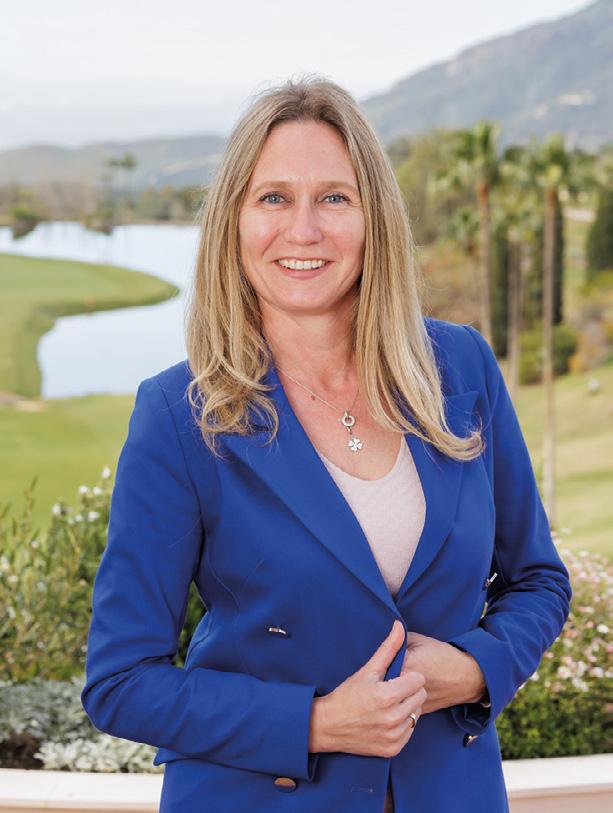
Morató GOLF OPERATIONS MANAGER
Working at ZAGALETA NEW COURSE is an unparalleled privilege, as it is undeniably a one-of-a-kind destination. With 13 years of expertise in managing and marketing golf courses, and a lifelong dedication to the sport since the tender age of 8, I’ve traversed tournaments across 15 diverse countries. Yet, none have quite captured the serene ambiance and harmonious spirit that permeates the landscape of Zagaleta New Course. Here, our seasoned team brings a wealth of experience in customer service, ensuring that every guest receives the utmost care and attention. Our meticulously maintained facilities and pristine course upkeep elevate Zagaleta New Course to a realm of pure excellence, where dreams of the perfect golfing experience become reality.
On a personal level, my foremost aspiration for the year 2024 is to enhance customer satisfaction. While we already uphold a commendable standard of service, I am committed to further elevating our guests’ experiences. Customer satisfaction is paramount, and I believe that by continually refining our approach, we can exceed even the loftiest expectations.
Leading the operations at Zagaleta New Course is not just a responsibility—it’s a thrilling adventure. Each day presents new challenges and opportunities for growth, and I am honored to be at the helm of such an extraordinary endeavor.
Pedro Lizarza TECHNICAL MANAGER
In the heart of a unique enclave, La Zagaleta stands as a bastion of luxury and exclusivity in the real estate market. Our uniqueness lies not only in offering exceptional properties but also in an unwavering commitment to quality and the total satisfaction of our distinguished clients. Contemporary construction, combined with innovation and respect for the natural environment, defines our essence.
Each residence in La Zagaleta is more than a home; it is an architectural masterpiece, designed with meticulous attention to detail, integrating cutting-edge amenities without compromising elegance or functionality.
We firmly believe that good architecture not only beautifies the environment but also enriches the quality of life of our owners. This approach has defined our construction, where every element, from materials to finishes, is selected for its superior quality, creating spaces that invite unique living experiences.
As the technical director, I am deeply proud to be part of this project that redefines luxury while simultaneously setting new frontiers in architectural excellence, where design and quality merge.
All of the above, combined with the wide variety of services available to our residents, guarantees a living experience like no other. From high-end security to top-notch sports and leisure facilities, everything is designed to offer an incomparable and effortless lifestyle.
Craig MARKETING MANAGER
As the Marketing Manager of ZAGALETA®, I am constantly challenged to develop creative and effective marketing strategies that showcase the lifestyle and unparalleled amenities our resort has to offer. I consider it an honour to be a key member of a company renowned for its unwavering commitment to excellence.
To address these challenges, it is of utmost importance to focus on maintaining a strong and recognisable brand, being part of prestigious alliances, building and sustaining solid networks with reliable and reputable partners, collaborating with specialised media, using customised digital platforms, and last but not least, hosting and participating in unique events.
Customer sentiment should be at the forefront of every business decision and their satisfaction is our priority and extends beyond just delivering a product or service. It involves ensuring that our residents remain satisfied by actively listening to their feedback, understanding and anticipating their needs and preferences, and striving to exceed their expectations in every interaction.
Pride in the products we create and deliver is essential to preserving quality. At ZAGALETA® we aim to further show our dedication and improve our clientele’s experience. It is our goal to not only attract new prospects and homeowners, but also to cultivate strong relationships with our existing community and foster brand loyalty.
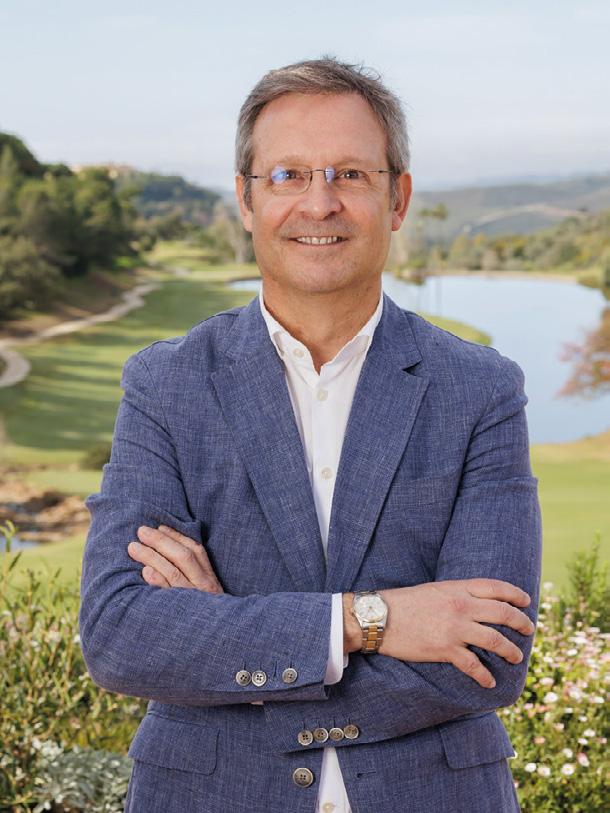
Rafael Mesa ADMINISTRATION MANAGER
In our market, where companies vie for the attention and loyalty of their customers, those that stand out are not only the ones offering quality products or services, but also those with a clear mission, rooted values, and a vision that drives every aspect of their operations. We have a clear and compelling image of what we aim to achieve and how we see ourselves in the future. Our vision provides us with a strategic guide to steer our decisions and actions, aligning all team members towards a common goal. What sets us apart? Beyond the services we offer, it’s the commitment of every member of our team to excellence and innovation. From the top executive to the last support staff, we all share a common vision and set of values that guide our daily actions and decisions to enhance the organization’s performance, focusing on variables other than the price of the services we provide. In a constantly evolving market, we face challenges that demand an agile and proactive mindset. This is where creativity and adaptability become our greatest allies. In my role as a financial manager, I strive to seek new ways to address challenges, leveraging emerging technologies and innovative strategies to drive the growth and profitability of our company. In every interaction with our clients, we aim to convey responsibility and pride in the products and services we offer.
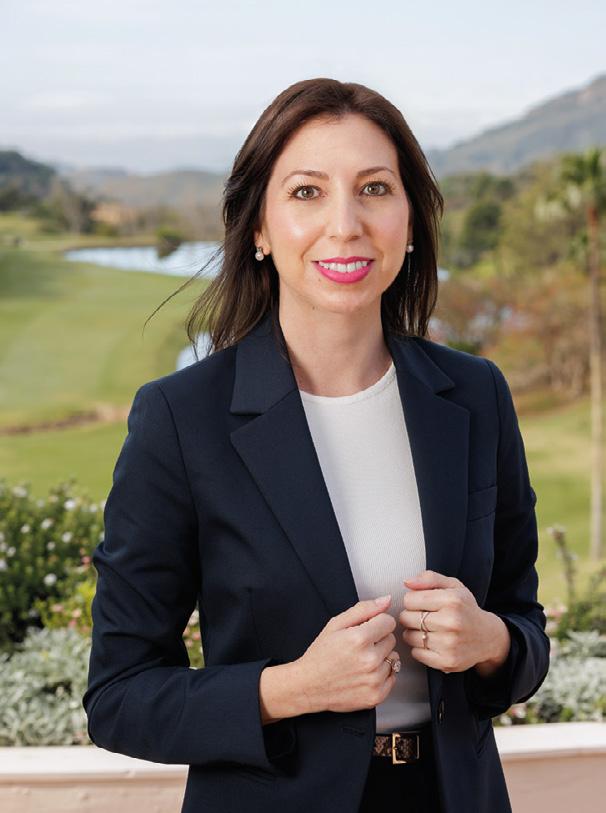
Olga Ramos SALES MANAGER
Being the Sales Manager of ZAGALETA® is a position of immense responsibility which instills in me a deep sense of pride in representing a brand that stands for excellence and innovation.
Selling luxury real estate goes beyond mere transactions; it’s about creating experiences that resonate on a profound level. La Zagaleta represents more than luxury properties; it embodies a lifestyle characterized by security, exclusivity, member-only facilities, and tailormade services.
We design homes with a soul, where every corner exudes warmth, comfort, and functionality. Every detail matters, as there is no second chance to make a good first impression. I am entrusted with the task of meeting the high expectations of our discerning clientele and my approach revolves around effectively communicating La Zagaleta’s essence and vision, ensuring that clients understand the story behind our properties and feel emotionally connected to the brand. This means being present at every stage of the customer journey, providing valuable content, building trust, and fostering ongoing engagement.
At La Zagaleta, we firmly uphold the belief that hard work, expertise, and a deep appreciation of what sets us apart are paramount to success. Moreover, the luxury real estate landscape is constantly evolving, and being able to anticipate and respond to these changes is key to leading the way.
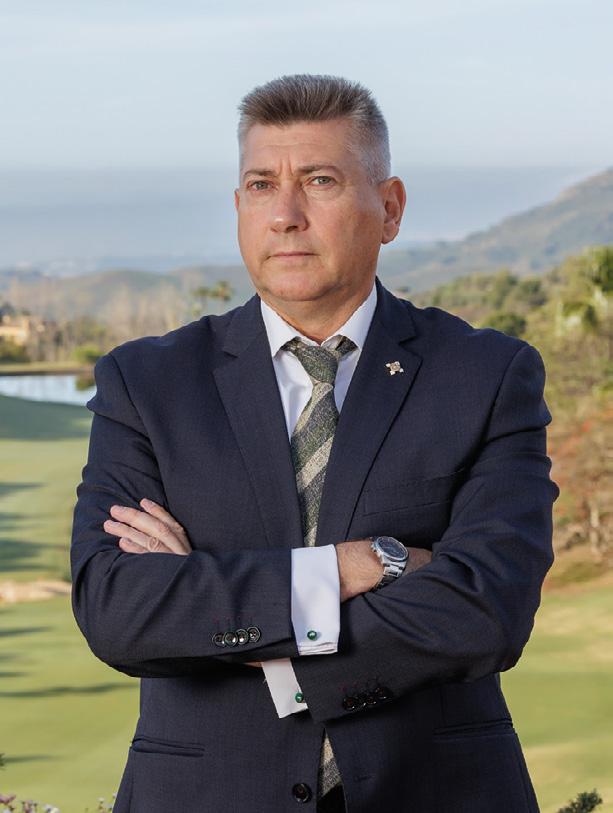
José Miguel Navarro SECURITY STRATEGY DIRECTOR
With over 30 years as a security professional, I have integrated various cultures and business experiences into my background, which I apply in safeguarding the personal and material assets of this unique enclave. Achieving the balance between cost/investment and performance/ effectiveness, in order to quantify the coveted “return on investment,” requires alignment with the Group’s strategy.
Maintaining low crime statistics and minimizing serious incidents faced by luxury developments on the Costa del Sol entails a thorough analysis of risks and vulnerabilities, as well as a commitment to the well-being of our “internal client” families. Continual awareness and training of security personnel are crucial to achieving excellence, which sets us apart from the competition. I believe that the Security Department of La Zagaleta contributes to attracting, consolidating, and satisfying our clients through its performance, as it is “the first impression any visitor to La Zagaleta will take away”; therefore, we support the business by adding our uniqueness to the other “distinguishing elements of La Zagaleta.”
Prioritizing investments to address our three main challenges—fires, crime, and medical emergencies—our Security Guards are the best advertising for the Property Owners. In times of extreme need, having the support of a professional team linked to “the Zagaleta brand” ensures the appreciation of their properties and assets.




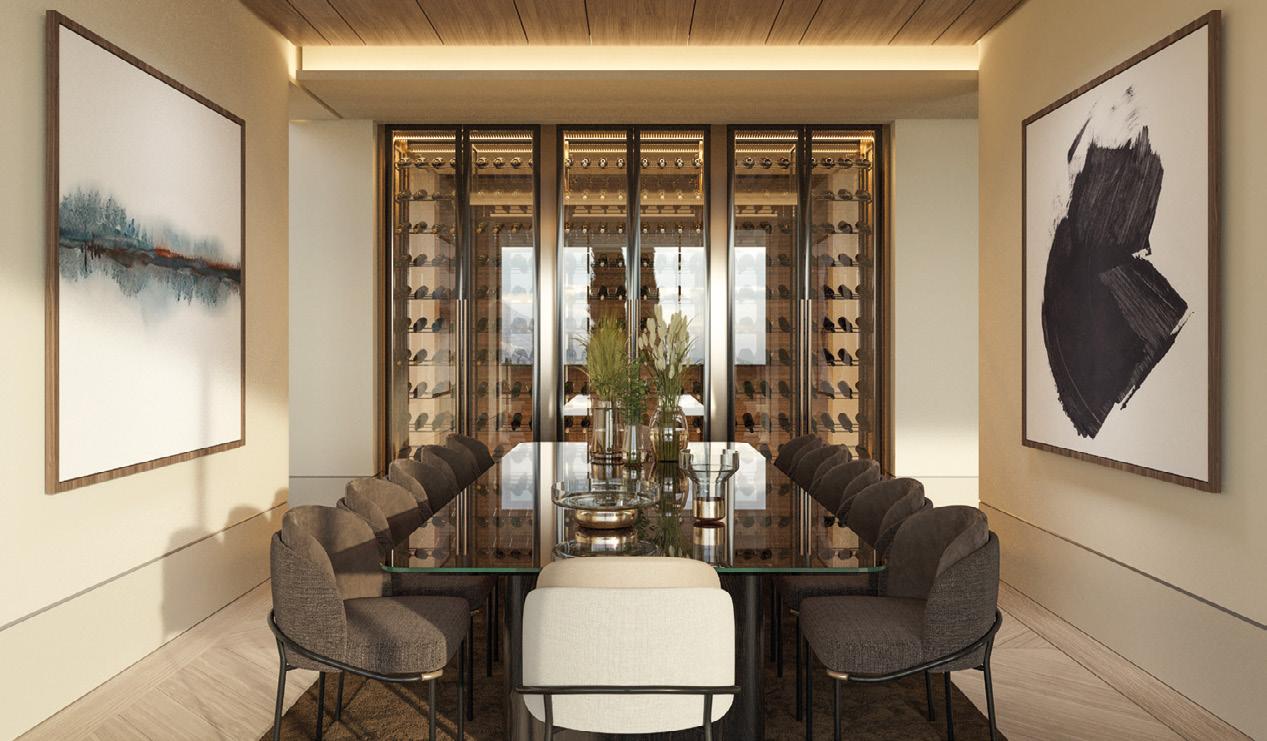


Shape a beautiful future at Villa Mirai.
This stunning contemporary home is designed to accommodate the latest technology, yet has a timeless feel. Natural light floods in, even to the indoor spa, while the glass walls open all the way to allow air and birdsong to flow around the house.
Colours and textures are in perfect harmony, from the crisp exterior to the opulent living areas and serene bedrooms, ready for you to add your stamp.
And while the infinity pool is a sociable focal point, the hectare plot ensures ample privacy and tranquillity.
Find your future home, at Villa Mirai.

PLOT 7.420 m² | TOTAL BUILT 1.450 m² | COVERED AND UNCOVERED TERRACES 660 m² BEDS 7* | BATHS 8 ( +2 ) | ORIENTATION West | VIEWS Golf and nature
*Includes staff and guest apartments with separate entrance



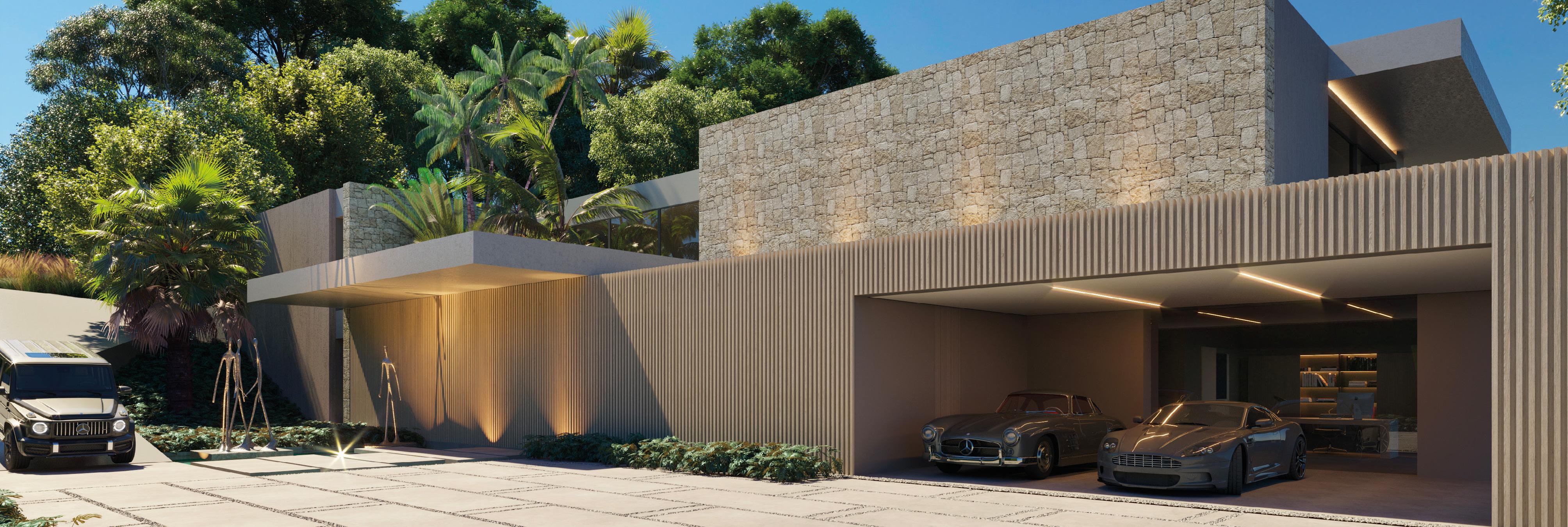

The most traditional of natural materials. The most contemporary of designs. Villa Savane is a place of dramatic contrasts, set in the hills above the New Course.
With stone on the interior as well as forming the elegant exterior, the borders blur between inside and out. Sweeping living spaces with high ceilings open on to the many terraces, accentuating the sensation of being part of nature, as do the manicured lawns that overlook a wild garden area.
This effortless style finds its apogee in the vast master suite, with a hot tub on the private terrace overlooking the rugged mountains.

*Includes staff or additional guest accommodation with separate entrance


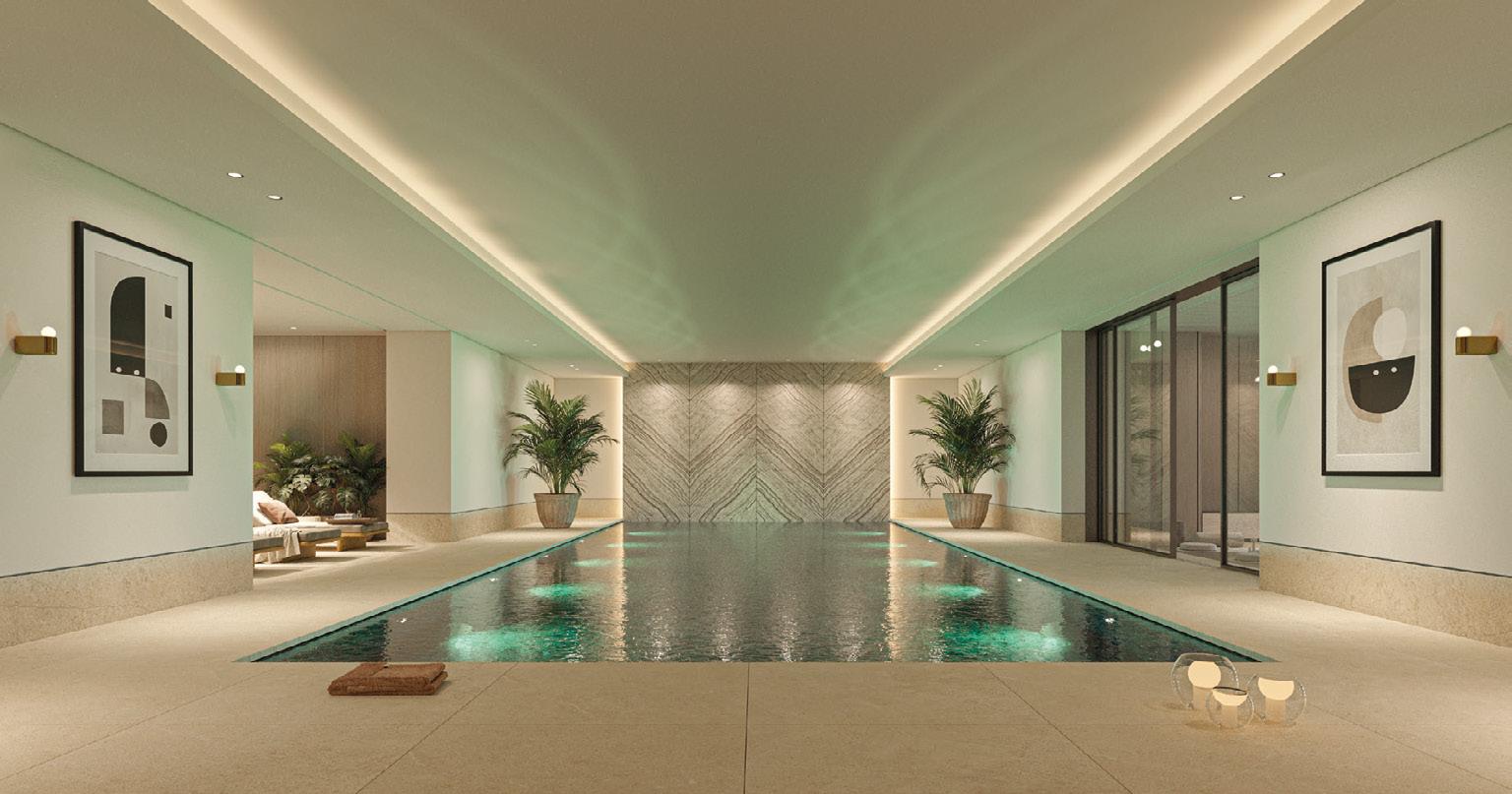



Inspired by the majestic uninterrupted panorama, Discovery 390 is quite simply on a different scale.
A spiral staircase leads from the imposing entrance hall to a 150 square metre master suite with private terrace.
The double-height living room and formal dining room provide spectacular settings for gracious entertaining. And all overlook the 158 square metre pool and sumptuously landscaped garden to the broad, bejewelled ocean beyond.
Spread over three storeys, this is a grand home waiting for its future owners to shape the finishing touches.
Make your discovery and make Discovery 390 yours.

PLOT 4.413 m² | TOTAL BUILT 1.199 m² | COVERED AND UNCOVERED TERRACES 466 m² BEDS 5* | BATHS 5 ( +2 ) | ORIENTATION West | VIEWS Nature and valley
Construction started
*Includes staff bedroom and possibility for 6 bedrooms in total
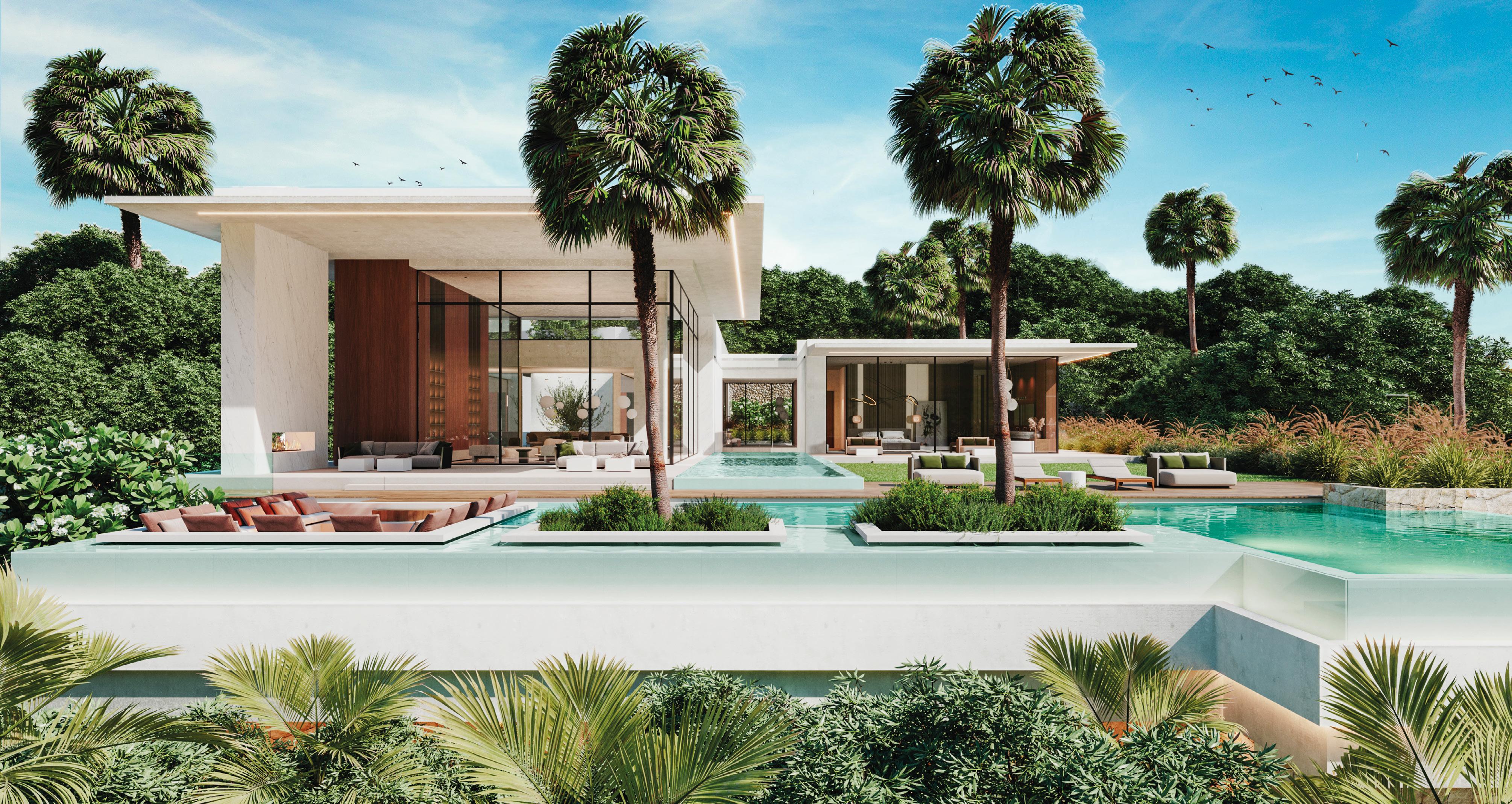
EMBRACE THE ELEMENTS

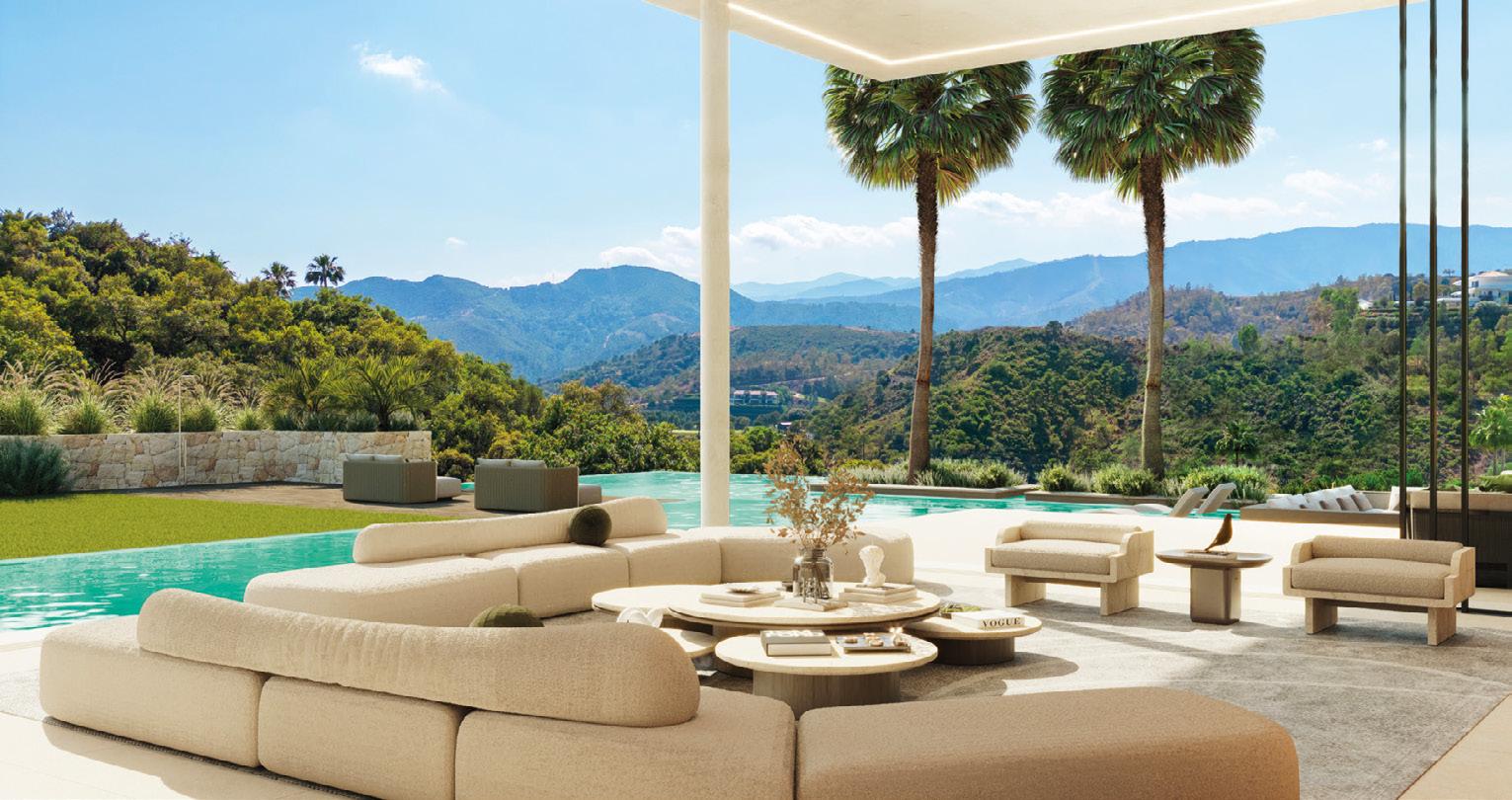

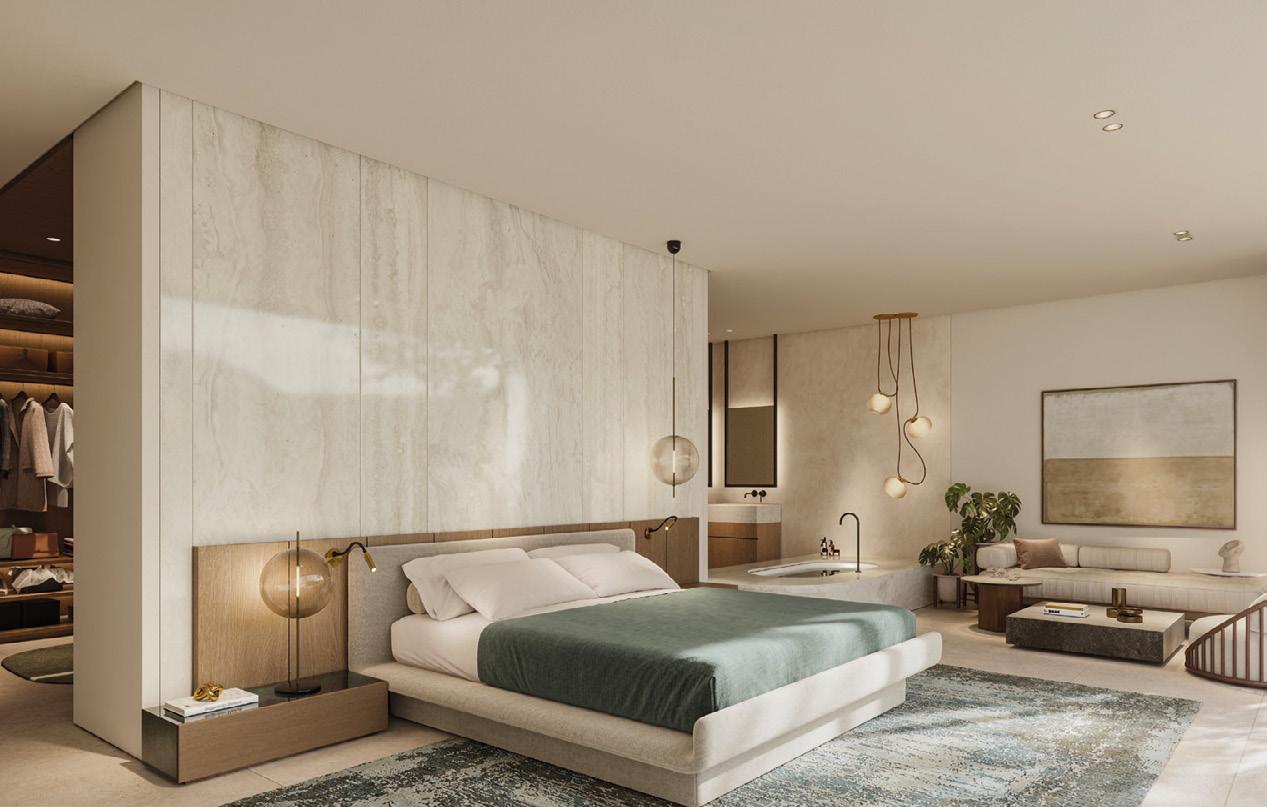


Earth, represented by the living roof that serves to hide the true scale of this contemporary masterpiece.
Air, the breeze that drifts in and across the vast high ceilings of the ground floor living area, imposing office and magisterial master suite.
Fire, in the stunning stone feature fireplaces and heating the hammam suite in the basement.
And above all, water. The inviting entrance fountain; the glass-bottomed pools that serve as a roof downstairs, bathing the area in light; and a heated outdoor pool, with stunning views and a sunken chillout zone.
Embrace the elements: discover Aqua et Natura.

PLOT 4.938 m² | TOTAL BUILT 1.289 m² | COVERED AND UNCOVERED TERRACES 302 m² BEDS 6* | BATHS 6 ( +2 ) | ORIENTATION West | VIEWS Mountains and valley
Platform already prepared | Construction ready to start
*Includes guest/staff apartment
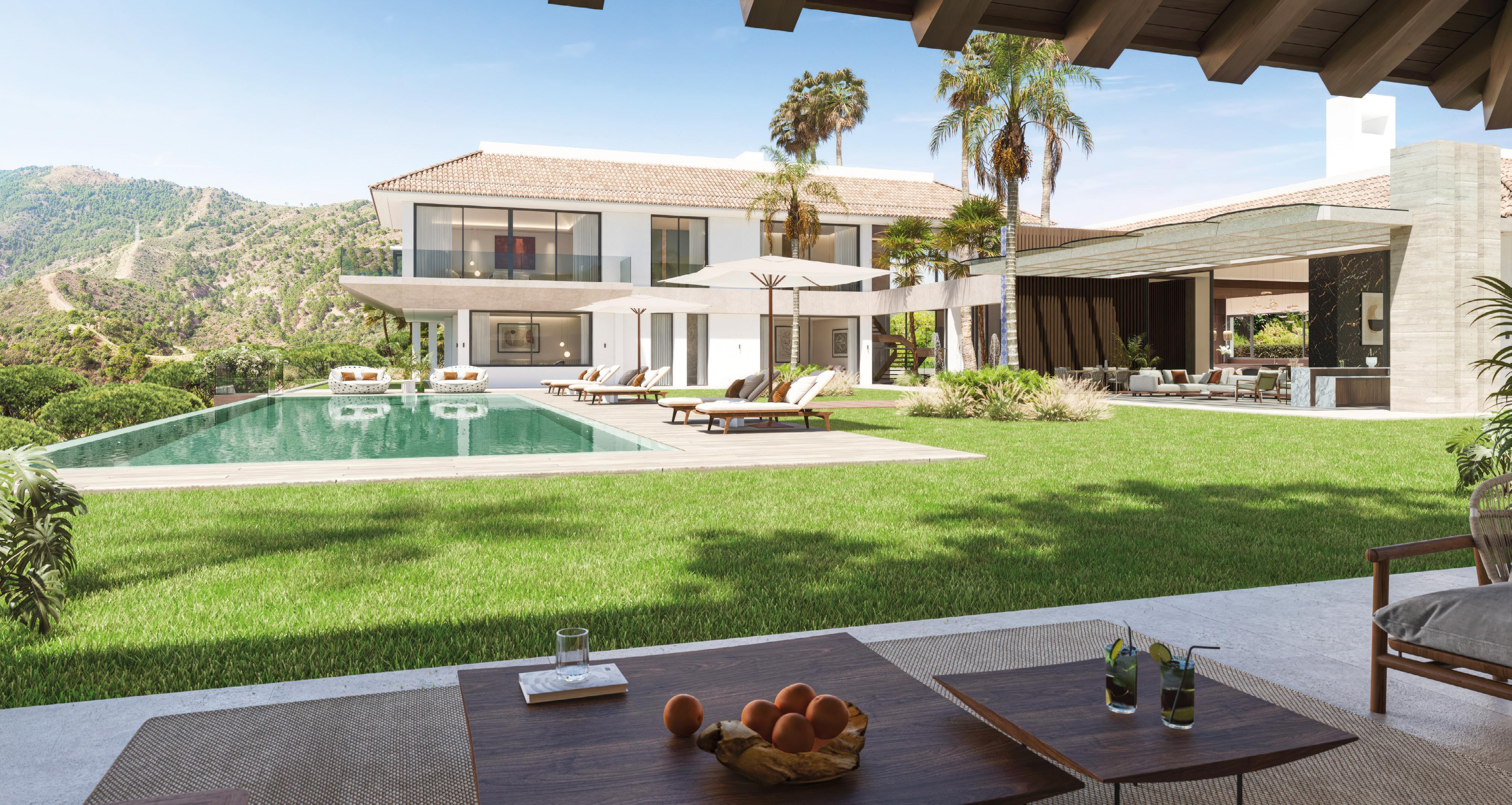

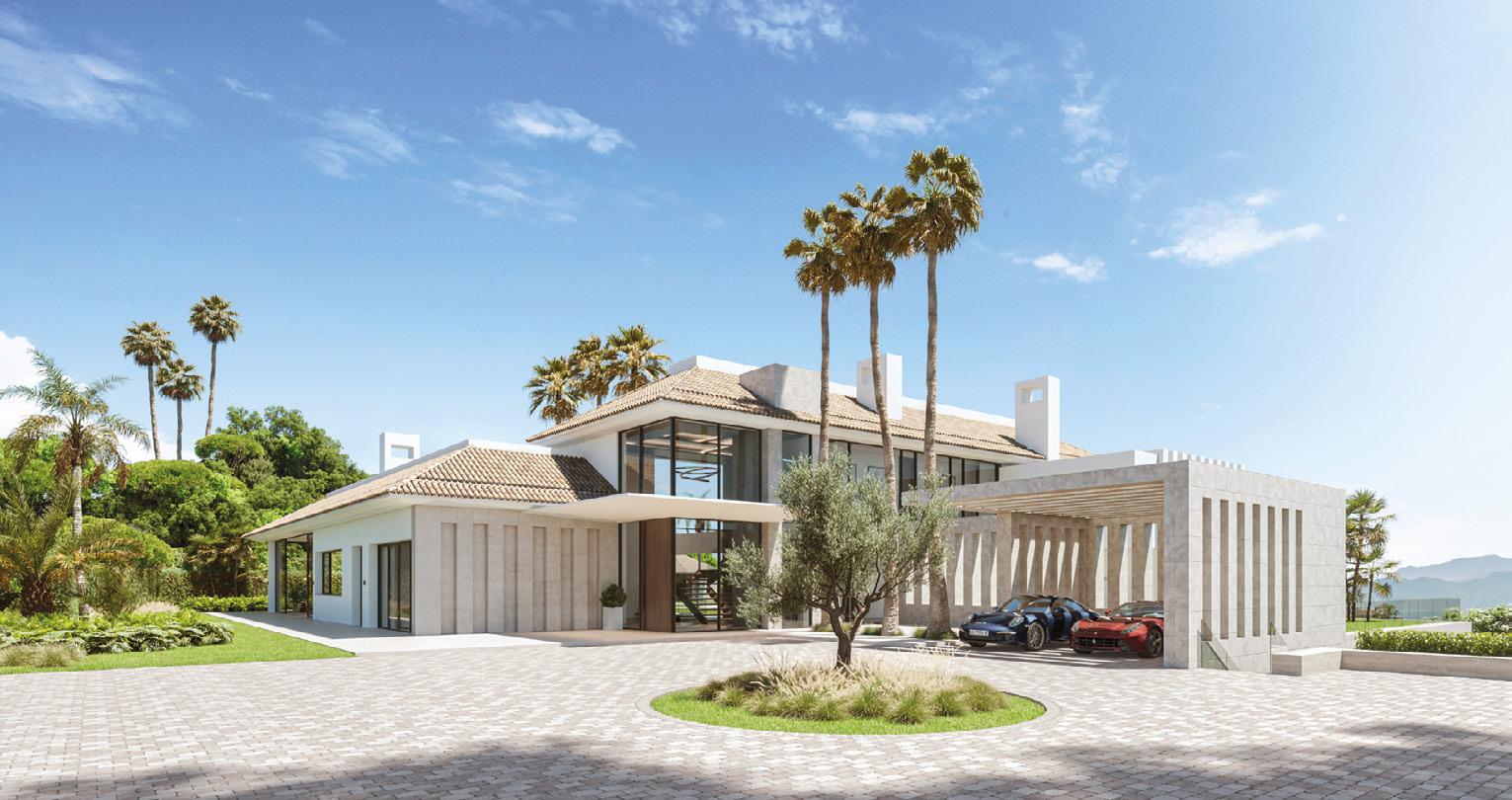
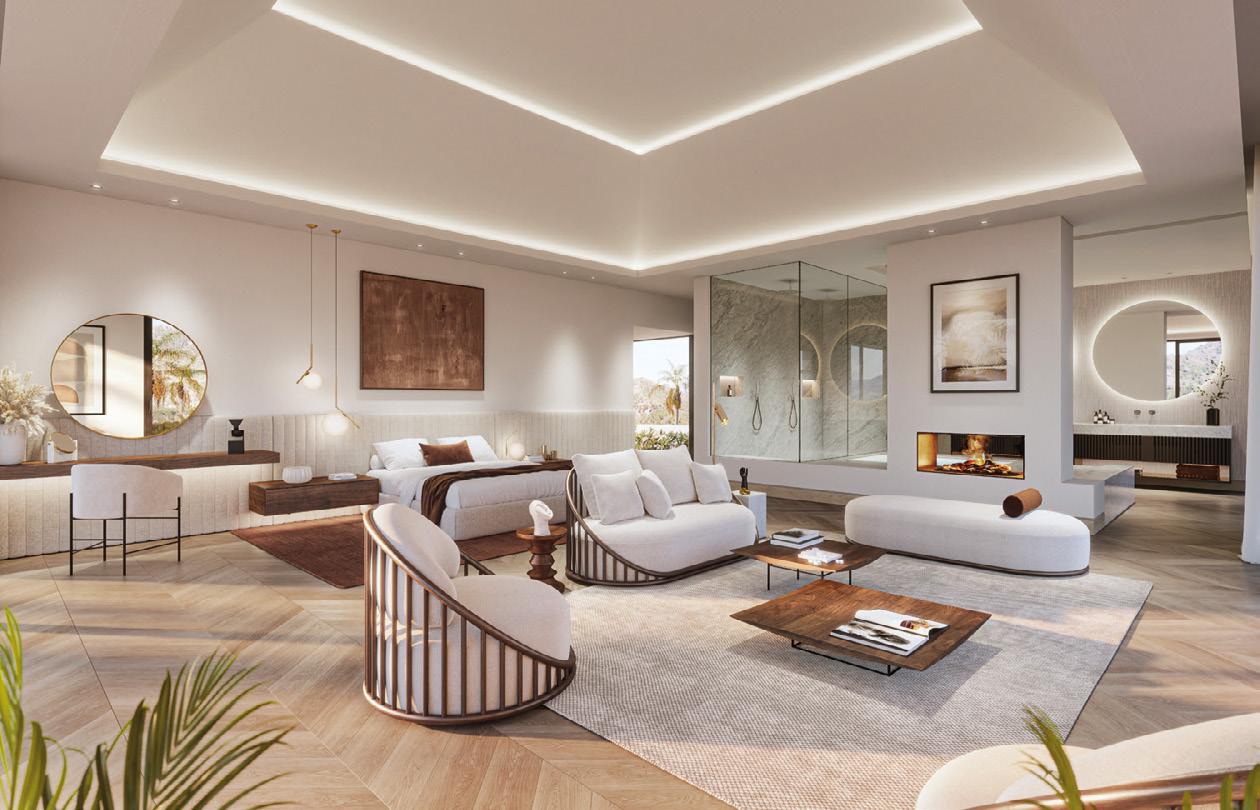


The warmth and light – the yang – swathe the open terraces, the stunning heated pool and pristine lawn. The interior embraces the yin, providing shade from the Mediterranean sun and featuring rich dark wood in the window frames and elegant contemporary panelling.
This is a place of order, among the untamed nature beyond. An immaculate garden, across multiple levels; a large dressing room in the master suite; a basement with games room, gym and spa.
The result: a place of total calmness and serenity, even when all six bedrooms are full with house guests.
Live in balance, at Equilibria.

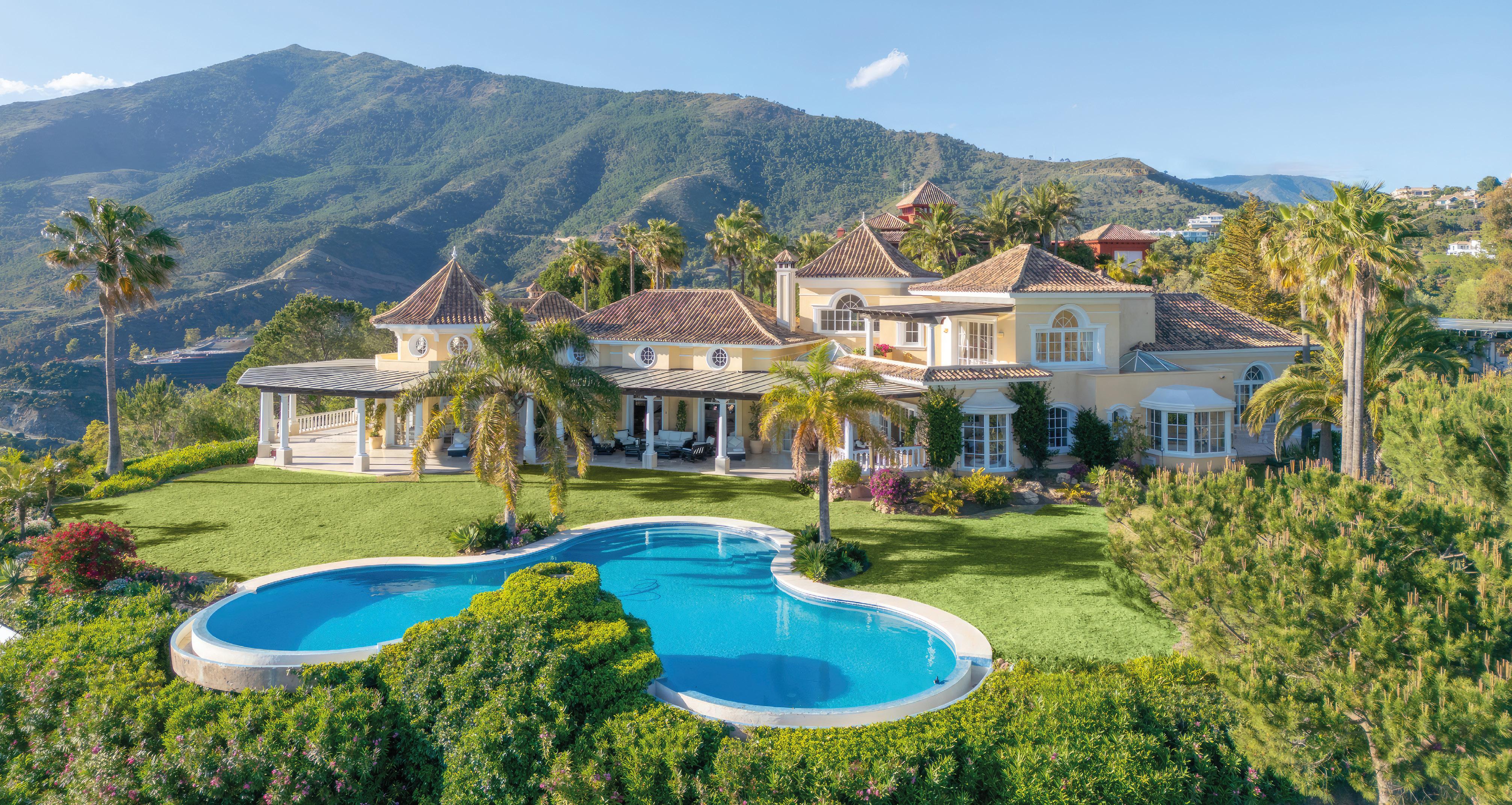
PANORAMIC VIEWS to the sea, Africa, Gibraltar, Old and New Course


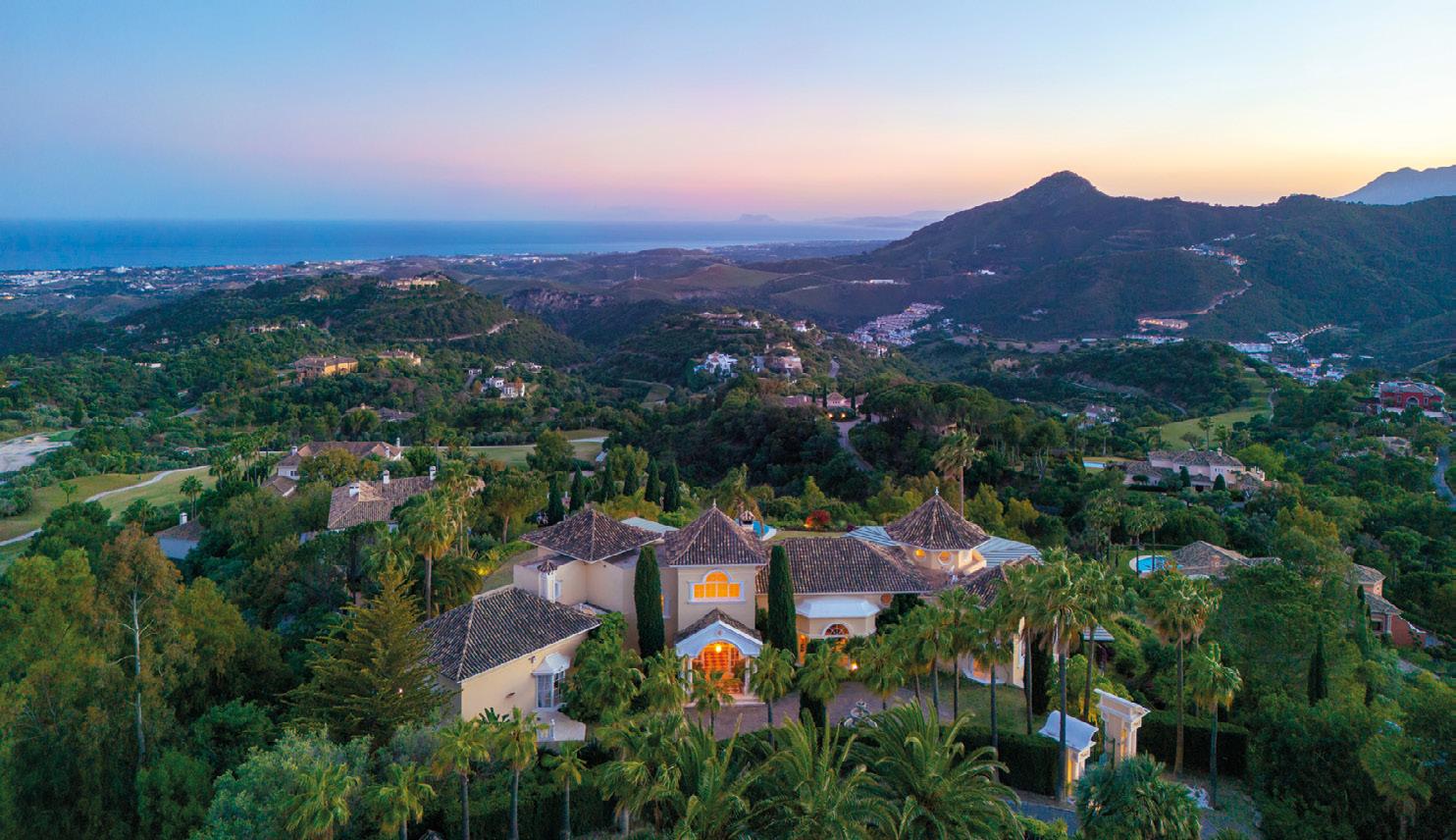



The location and landscape of the LA ZAGALETA® estate ensure a succession of spectacular views. Yet even amongst such company, the elevated central position of Villa Marevista stands out.
The golf courses curve through the lush valley. Beyond lies an unobstructed panorama of the gleaming Mediterranean.
With such natural riches to work with, the villa’s architects focused on framing the view, with every room of this Tuscan-inspired home, as well as its majestic garden, enjoying a unique outlook. The octagonal dining room, meanwhile, offers a different perspective through each of its elegant high glass arches.

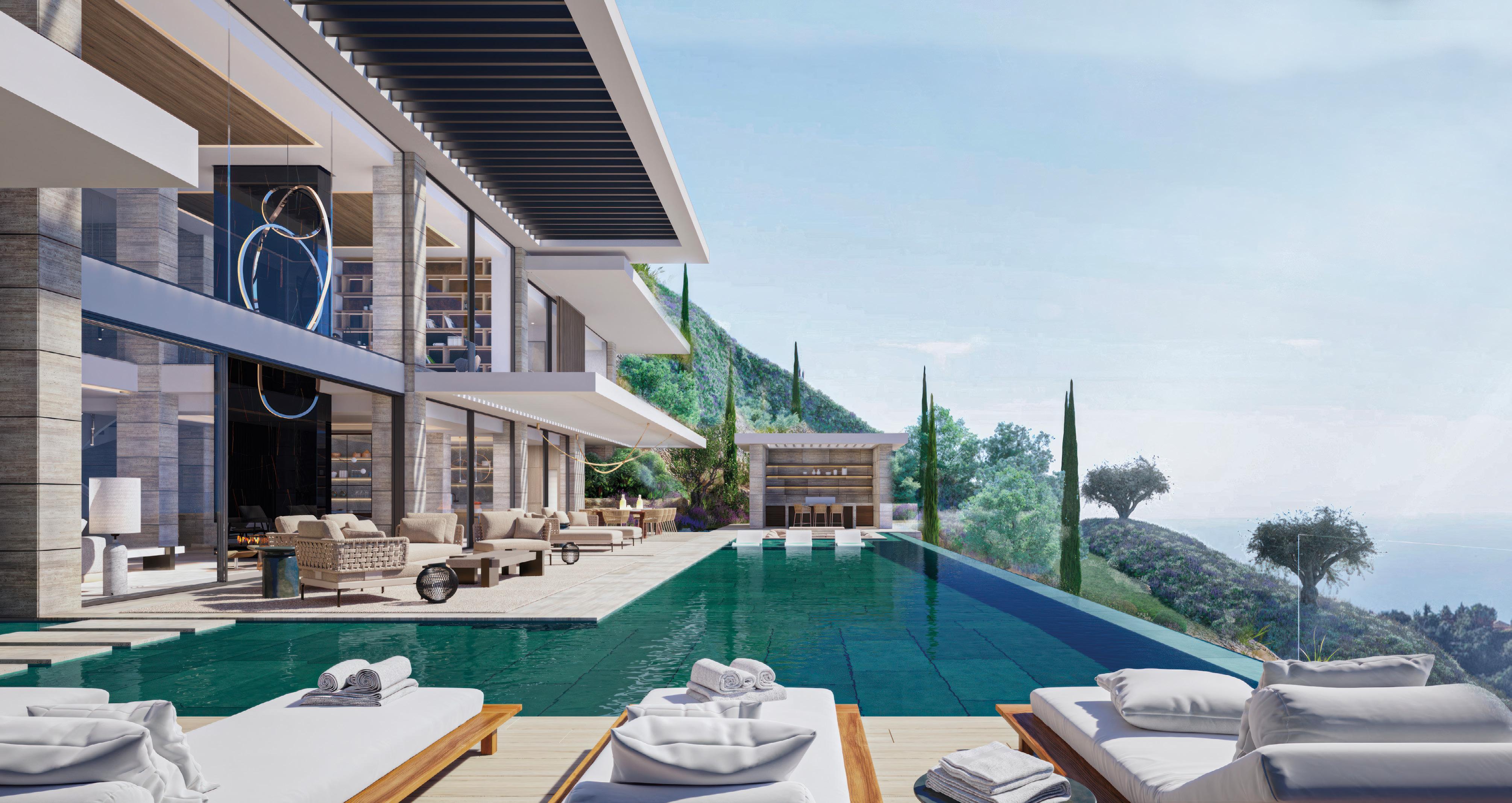



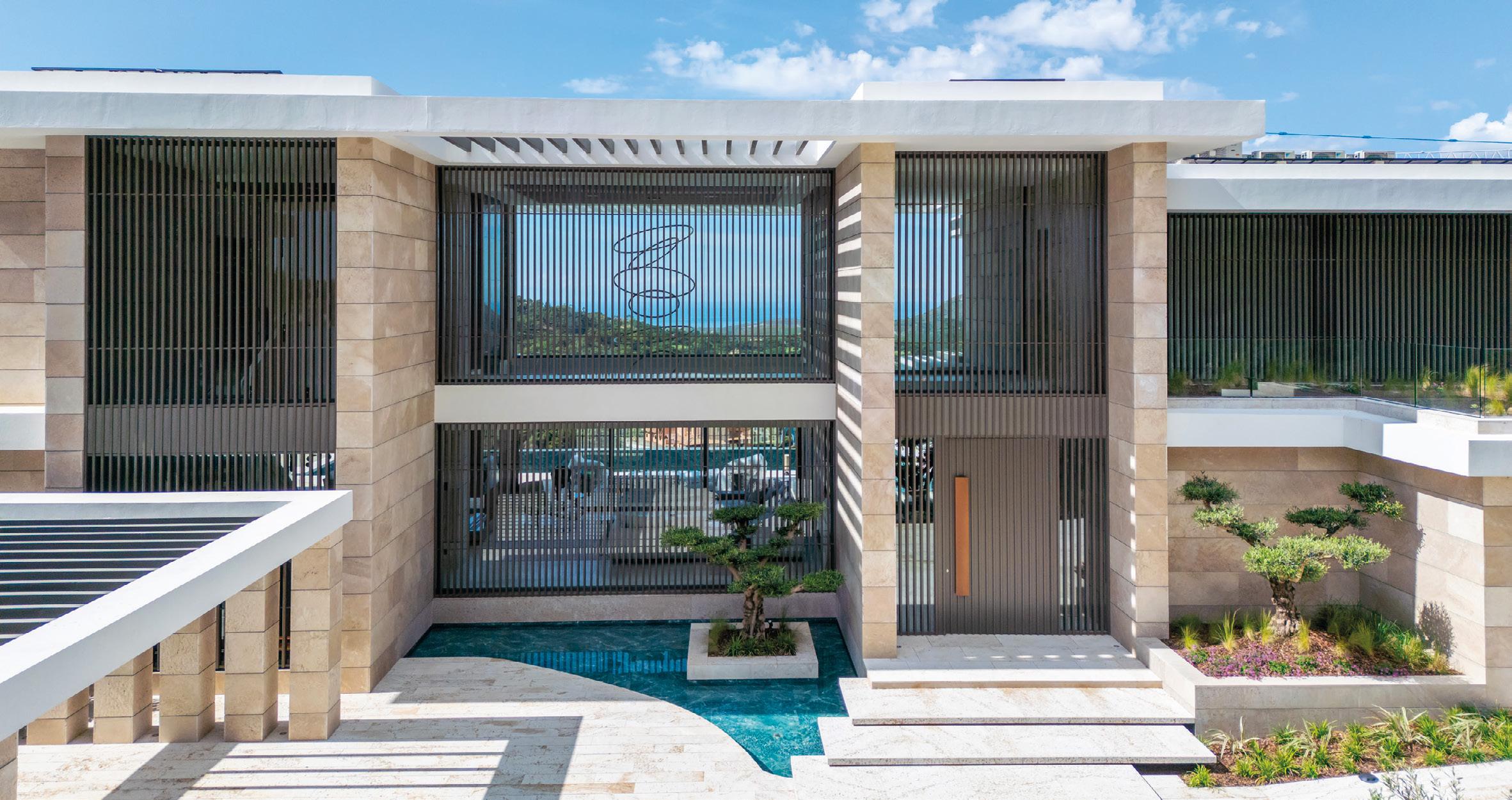

A home meticulously designed for daily life with unparalleled ease and convenience.
Where the impressive space is perfectly laid out for optimal use, whether relaxing as a family, hosting memorable gatherings with friends, or attending to matters in the awe-inspiring office.
Where every area has a purpose: from the basement bar, cinema room, wine cellar and spa with heated indoor pool, to the main living-dining area, elegantly divided by a feature fireplace.
And where the south orientation ensures maximal sunlight and stunning views across the pool to the North African coast.
Embrace a philosophy for better living at Villa Kaizen.



THE WARMTH OF NATURE
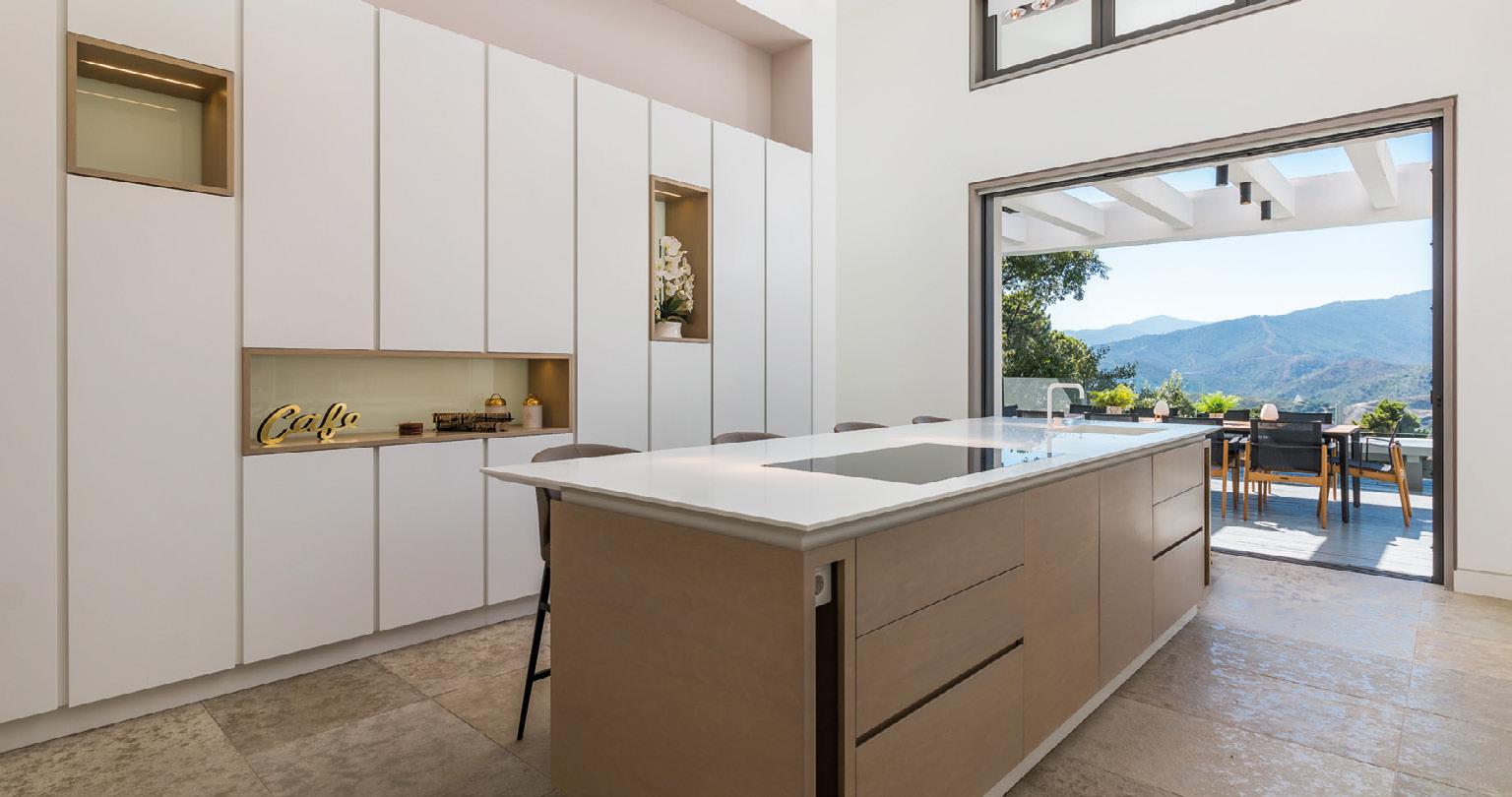


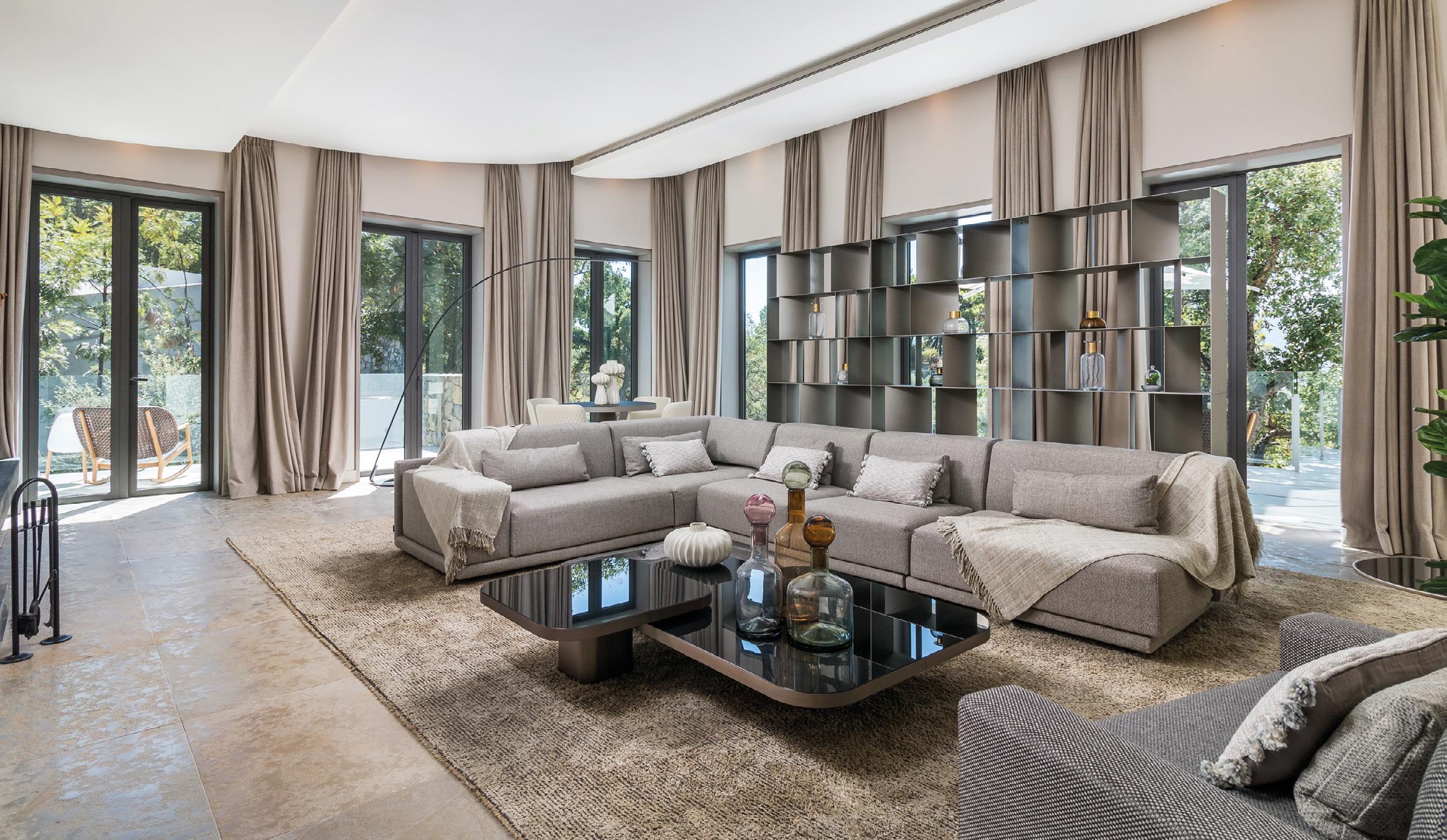

The dramatic Ronda Mountains are more than a backdrop here; they’re a design inspiration and even a source of heat, with geothermal energy powering the underfloor heating and hot water.
A cascading outdoor pool and jacuzzi are sheltered by a wall of rock. Mature shrubs and trees form an integral part of the many terraces, while internally the colour palette echoes the landscape.
Full height windows capitalise on the breathtaking views from every aspect while the contemporary style is matched by the ultra-modern cinema room and sound system.
Unique, even by Zagaleta standards: discover Villa Z’Unica.

Ref. 1023 6.840 m 2

PLOT REF. 1023

6.840 m 2 | BUILDABILITY 15% | MAXIMUM HEIGHT 8 m ORIENTATION Southwest | VIEWS Mediterranean Sea, Africa, Gibraltar and Old Course

REF. 1117
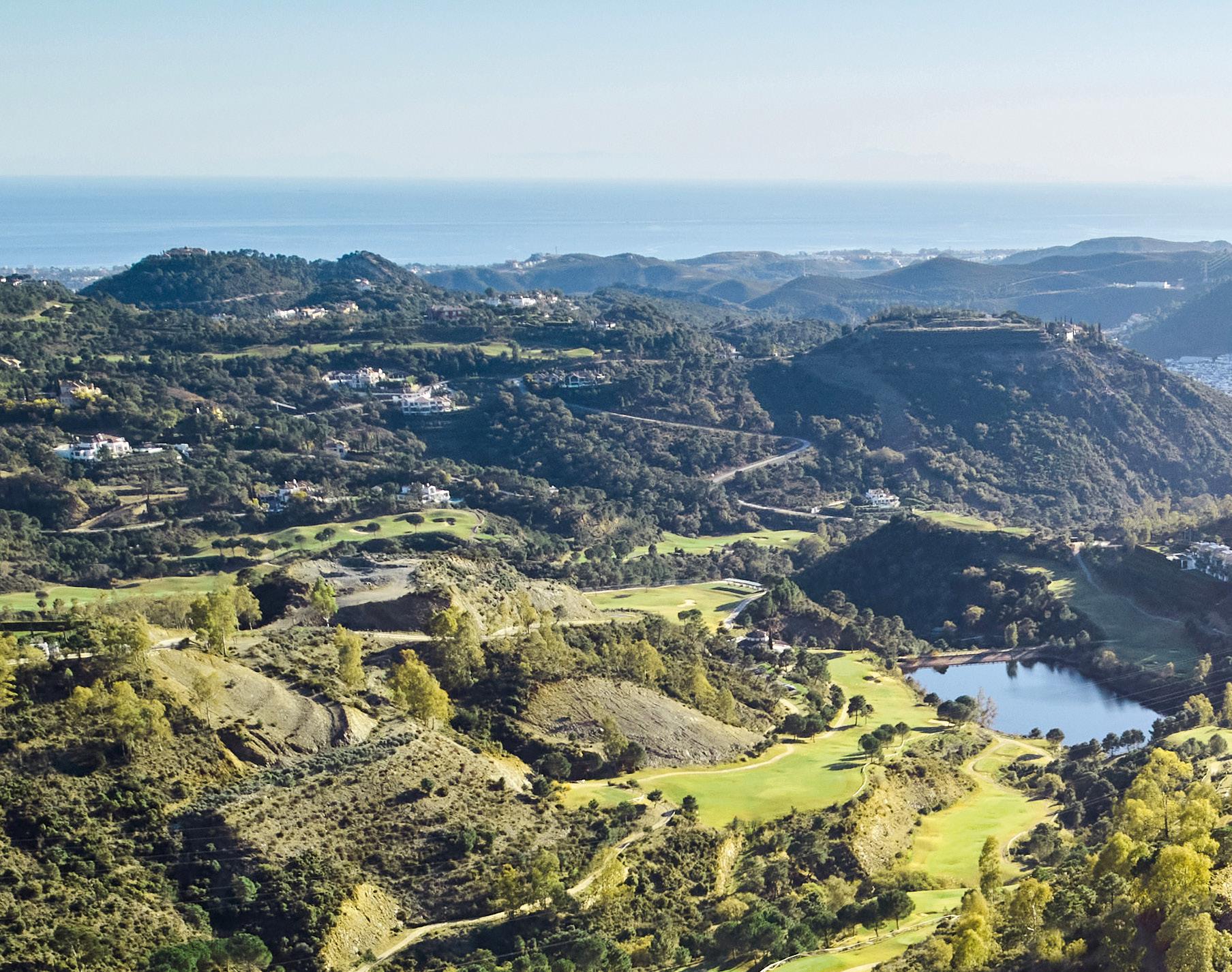
6.617 m 2 | BUILDABILITY 15% | MAXIMUM HEIGHT 7,5 m ORIENTATION Southeast | VIEWS Mediterranean sea, golf and valley
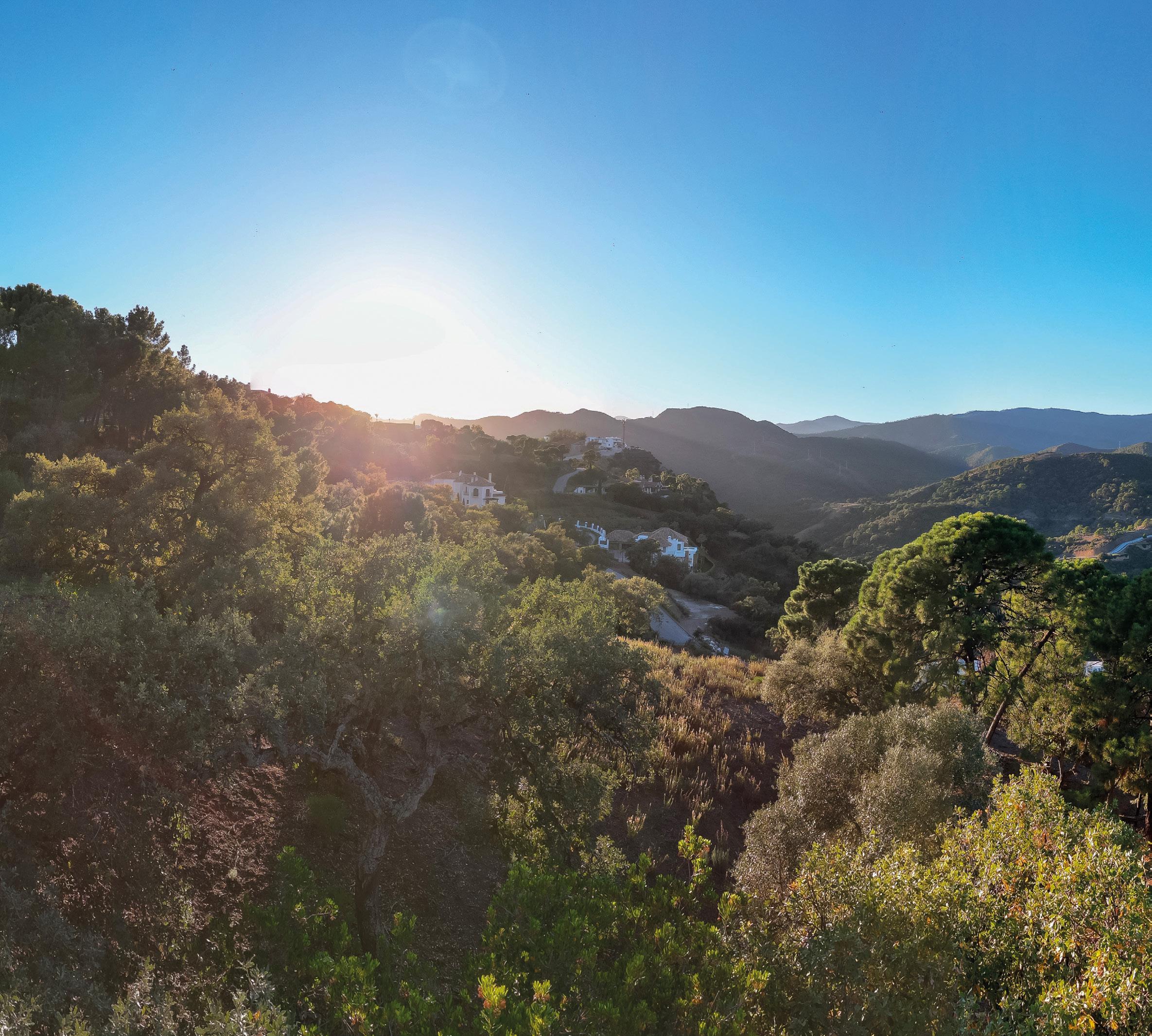
PLOT REF. 824


Ref. 824 8.973 m 2


PLOT 8.973 m 2 | BUILDABILITY 15% | MAXIMUM HEIGHT 7,5 m ORIENTATION West | VIEWS Golf and nature
m 2

PLOT REF. 629
PLOT 3.620 m 2 | BUILDABILITY 15% | MAXIMUM HEIGHT 7,5 m
ORIENTATION South | VIEWS Nature and valley
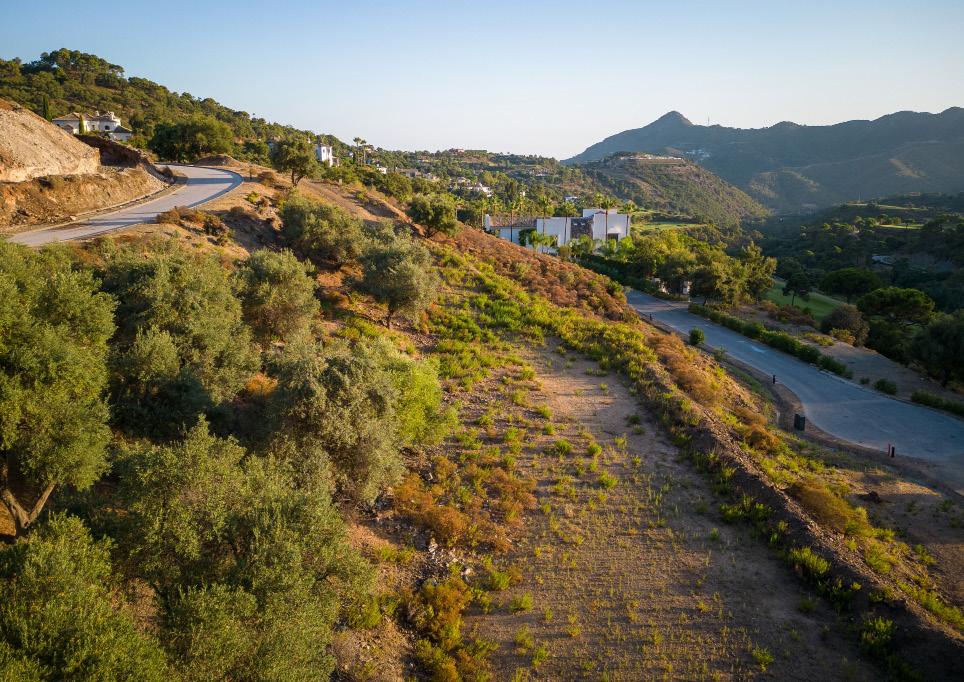
Ref. 918 4.389 m 2
PLOT REF. 918
PLOT 4.389 m 2 | BUILDABILITY 15% | MAXIMUM HEIGHT 7,5 m
ORIENTATION West | VIEWS Golf and valley
848
m 2
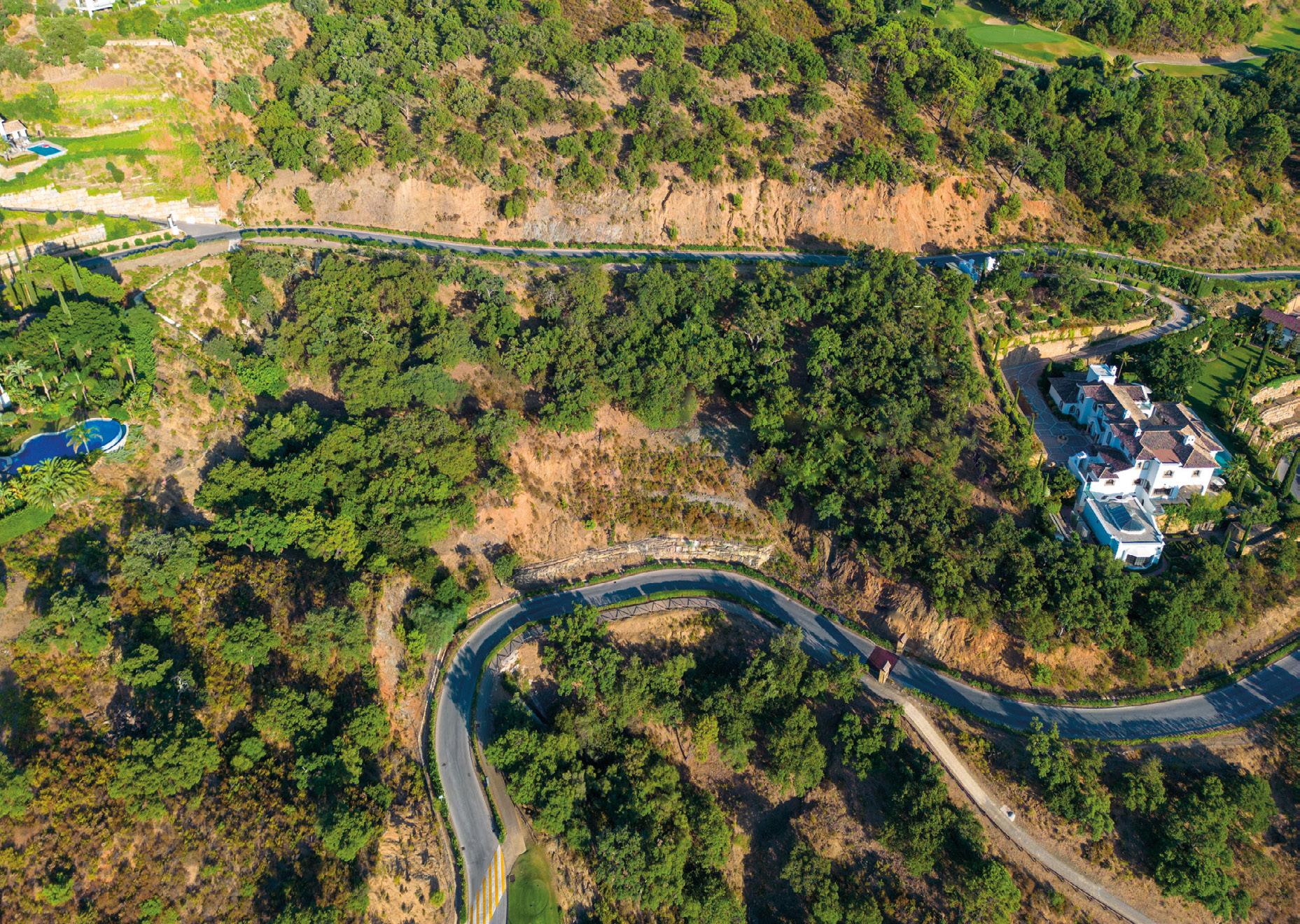
PLOT REF. 848
PLOT 5.306 m 2 | BUILDABILITY 15% | MAXIMUM HEIGHT 7,5 m
ORIENTATION West | VIEWS Golf and valley
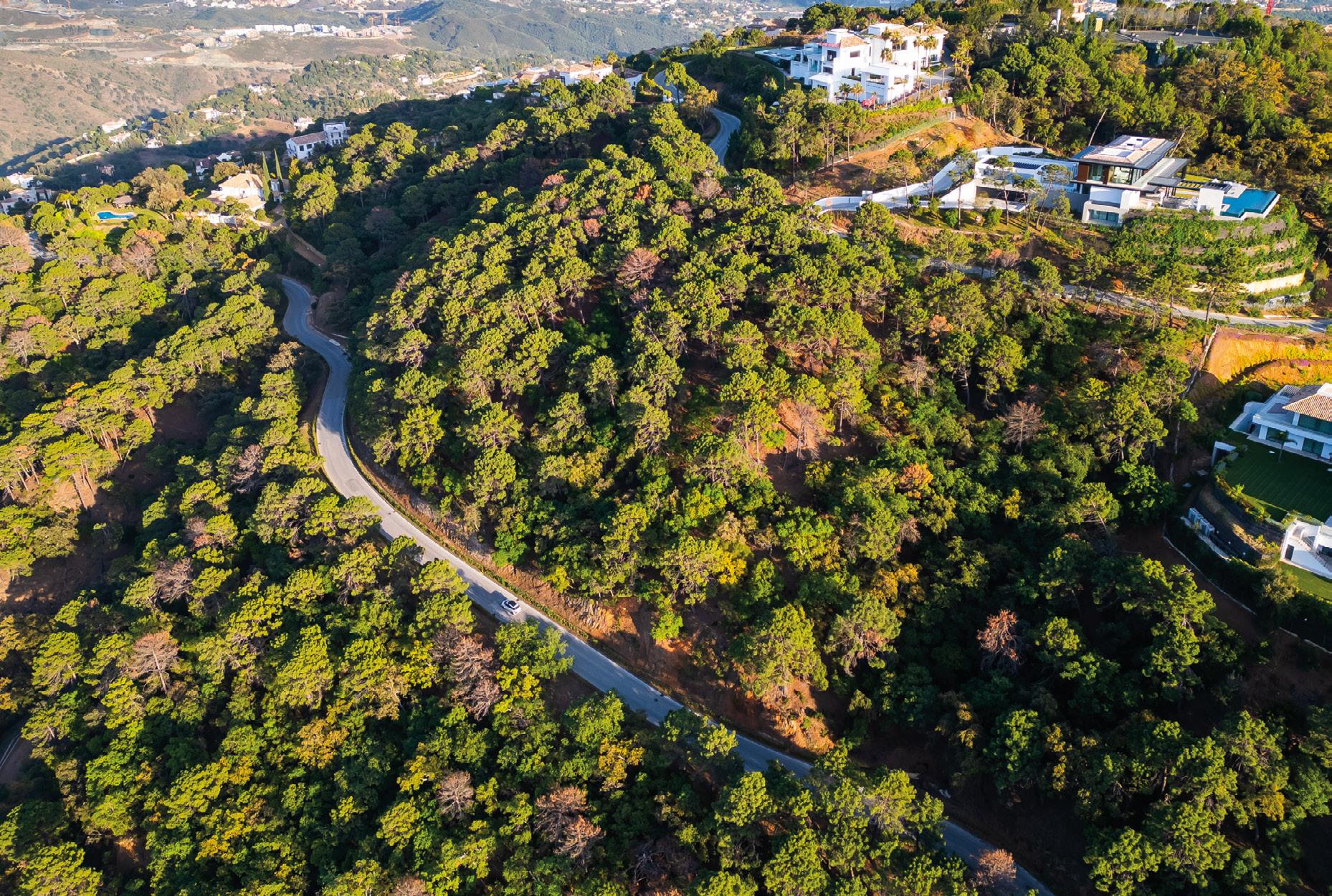
PLOT REF. 1052
PLOT 4.201 m 2 | BUILDABILITY 15% | MAXIMUM HEIGHT 7,5 m
ORIENTATION West | VIEWS Sierra de las Nieves mountains Ref. 1052 4.201 m 2
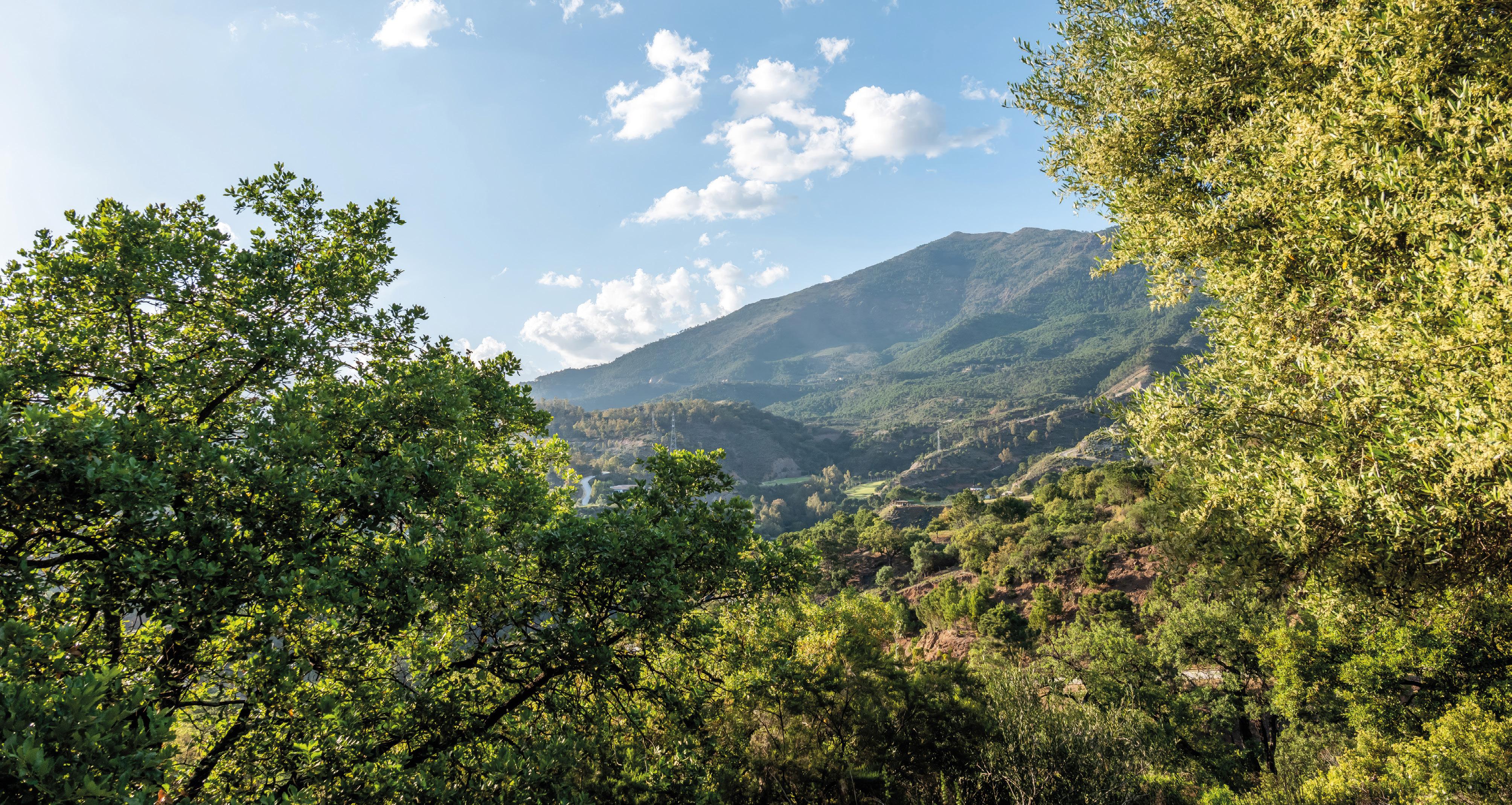
PLOT REF. 821

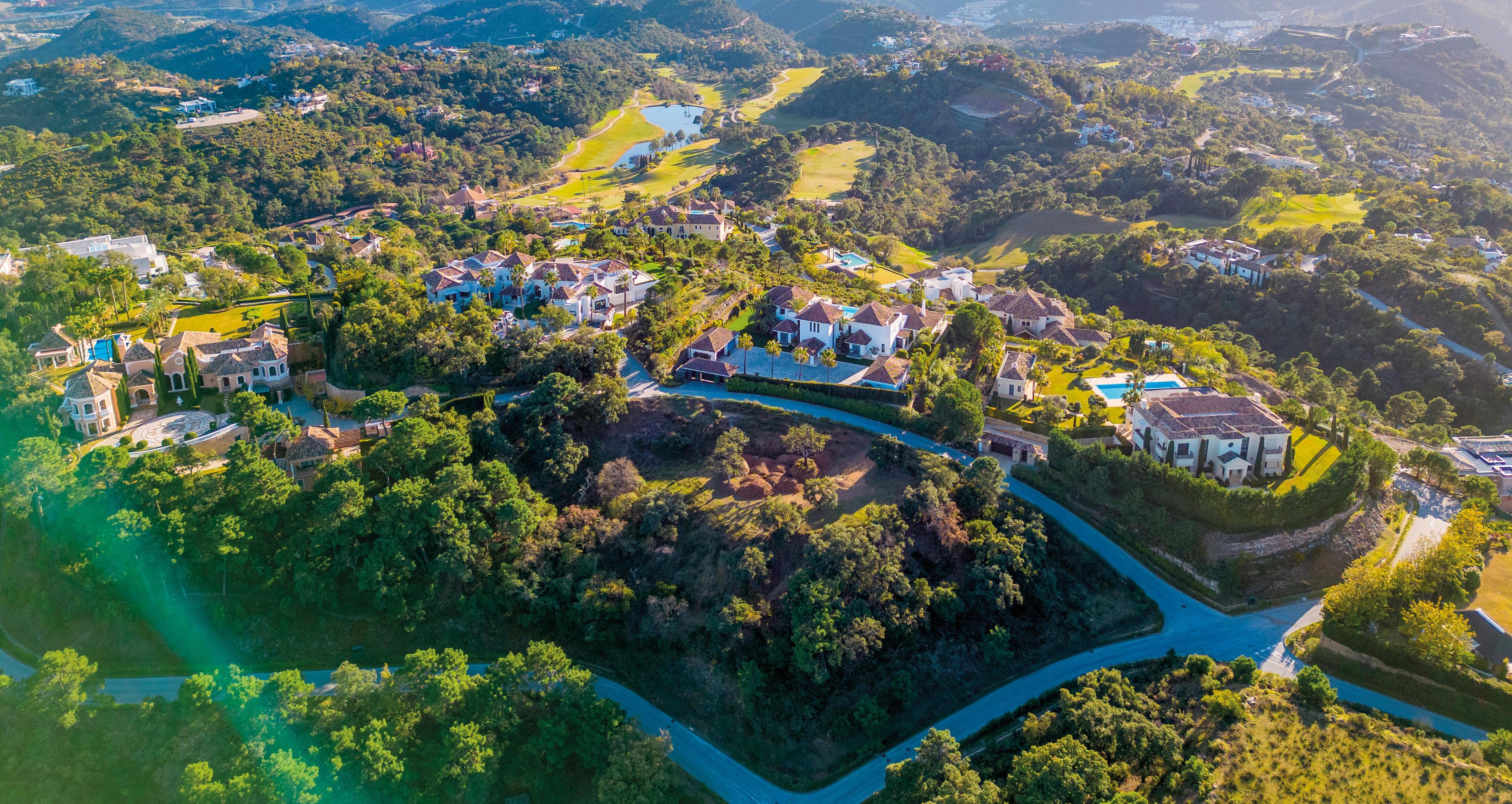
PLOT REF. 1031



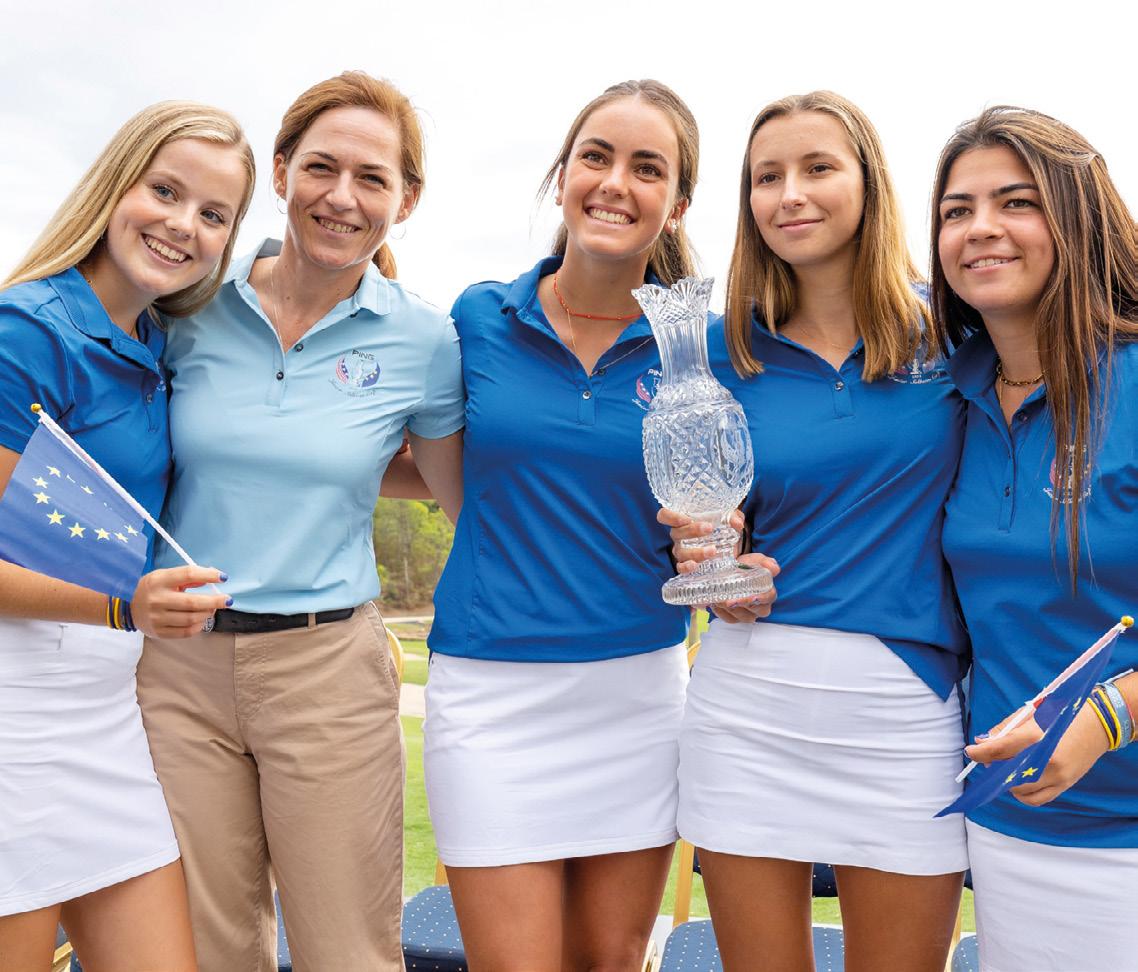
Europe showcased its dominance over North America in the PING Junior Solheim Cup, held at La Zagaleta’s Old Course. The thrilling event spanned two days, reaffirming Europe’s prowess in golf. This successful precursor to the Solheim Cup highlighted the continent’s significance in the sport, setting the stage for future triumphs.
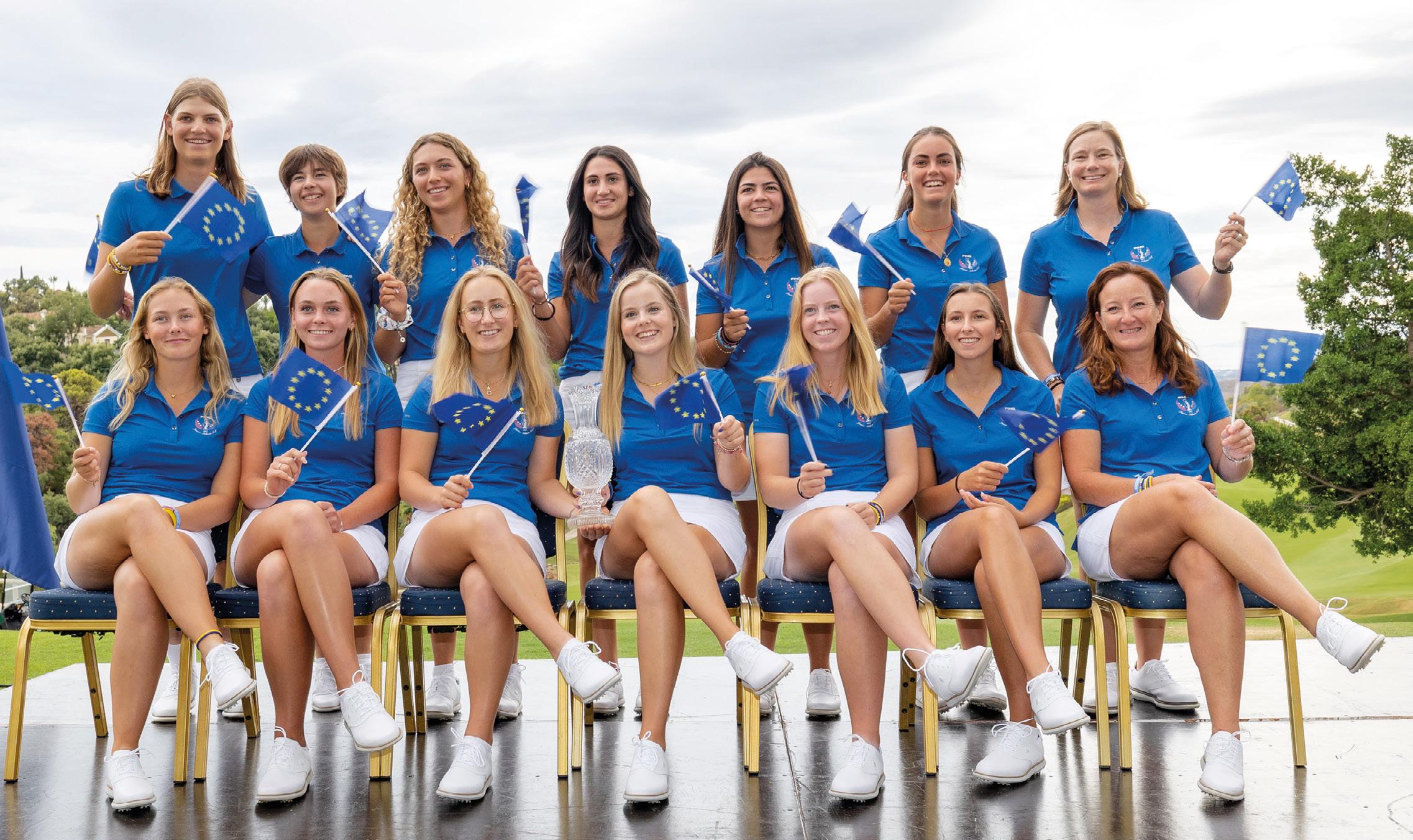

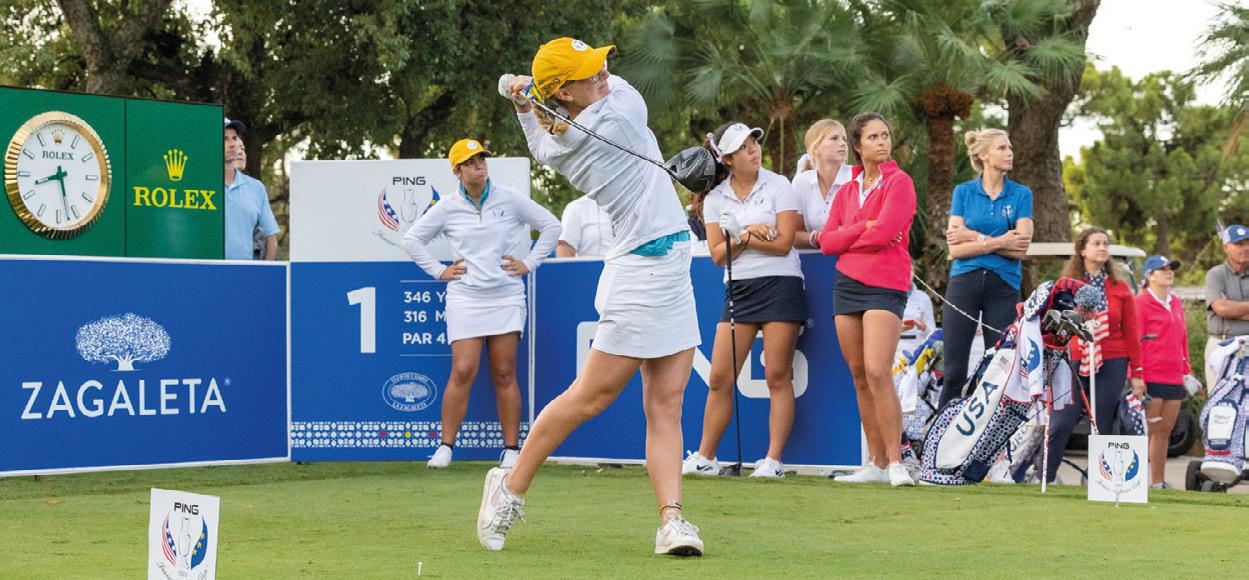
John Solheim, President of PING, officially declared the PING Junior Solheim Cup inaugurated, concluding an emotional opening ceremony. Also in attendance were Ignacio Pérez, Executive Chairman of Zagaleta® Group, Jacobo Cestino, CEO of Zagaleta® Group; Marta Figueras-Dotti, President of the LET; José María Arrabal, General Secretary for Sports of the Andalusian Government; and José Antonio Mena, Mayor of Benahavís. Other personalities present at this event included Manuel Cardeña, President of the Association of Municipalities of the Western Costa del Sol; Gonzaga Escauriaza, President of the Royal Spanish Golf Federation; and Pablo Mansilla, President of the Andalusian Golf Federation.


“Hopefully, we can motivate future generations as Carlota Ciganda and Azahara Muñoz did for us”, declared Cloe Amión with visible pride and satisfaction.

An exquisite display of European prowess swept aside the North American resistance over two days of competition, reaffirming Europe’s significance in the PING Junior Solheim Cup, the thrilling precursor to the Solheim Cup held with great success at La Zagaleta’s Old Course.
Cheers of “Let’s Go Girls!” and “Go Europe!” resounded as the young European players secured a strong 15-9 win over their american opponents.
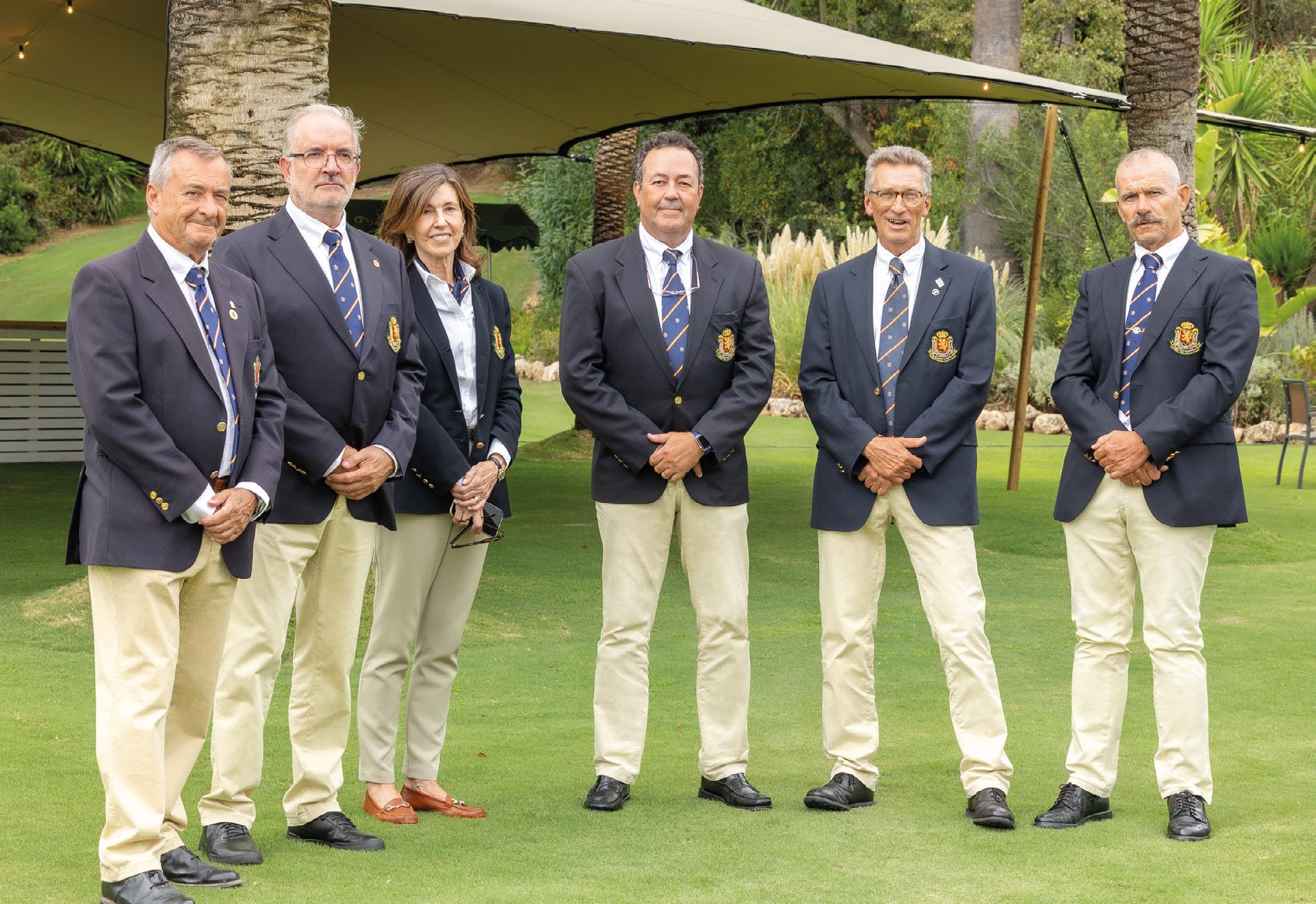
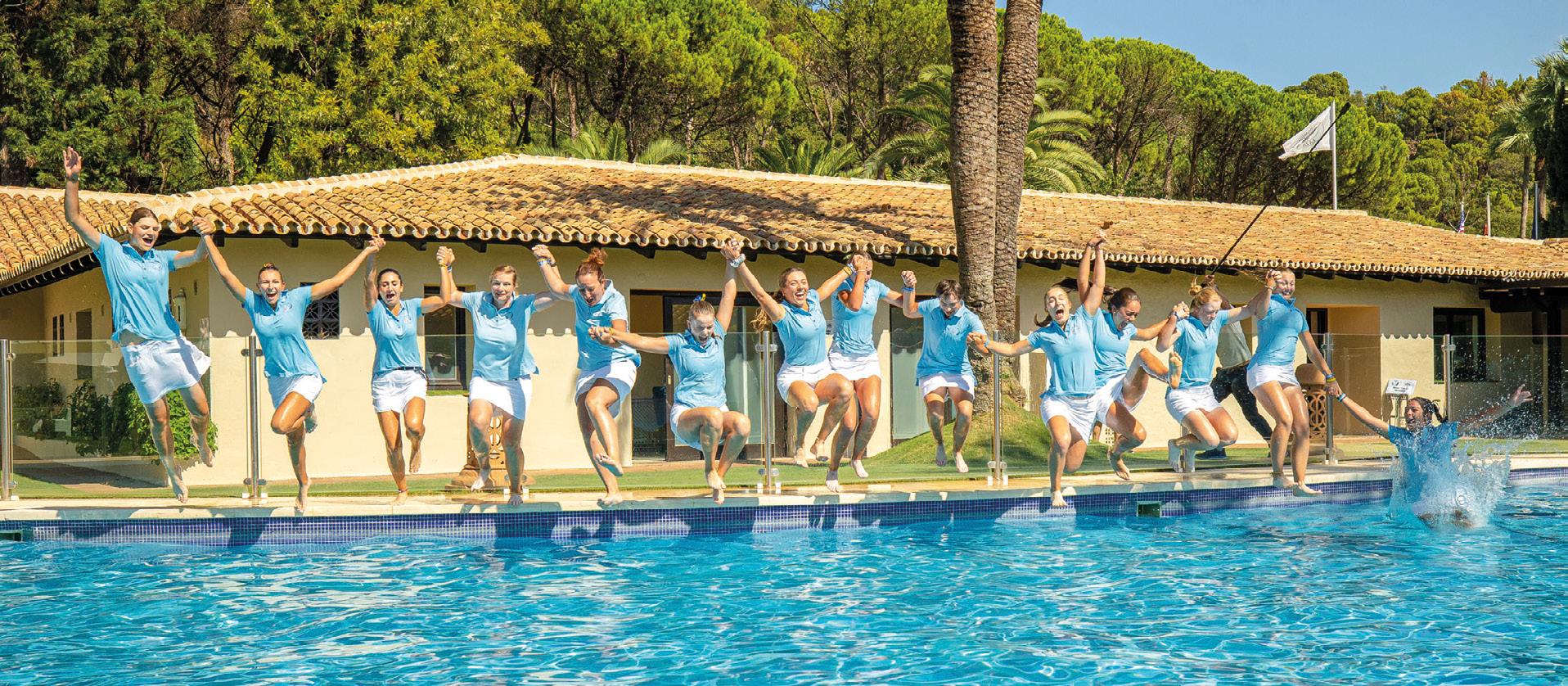

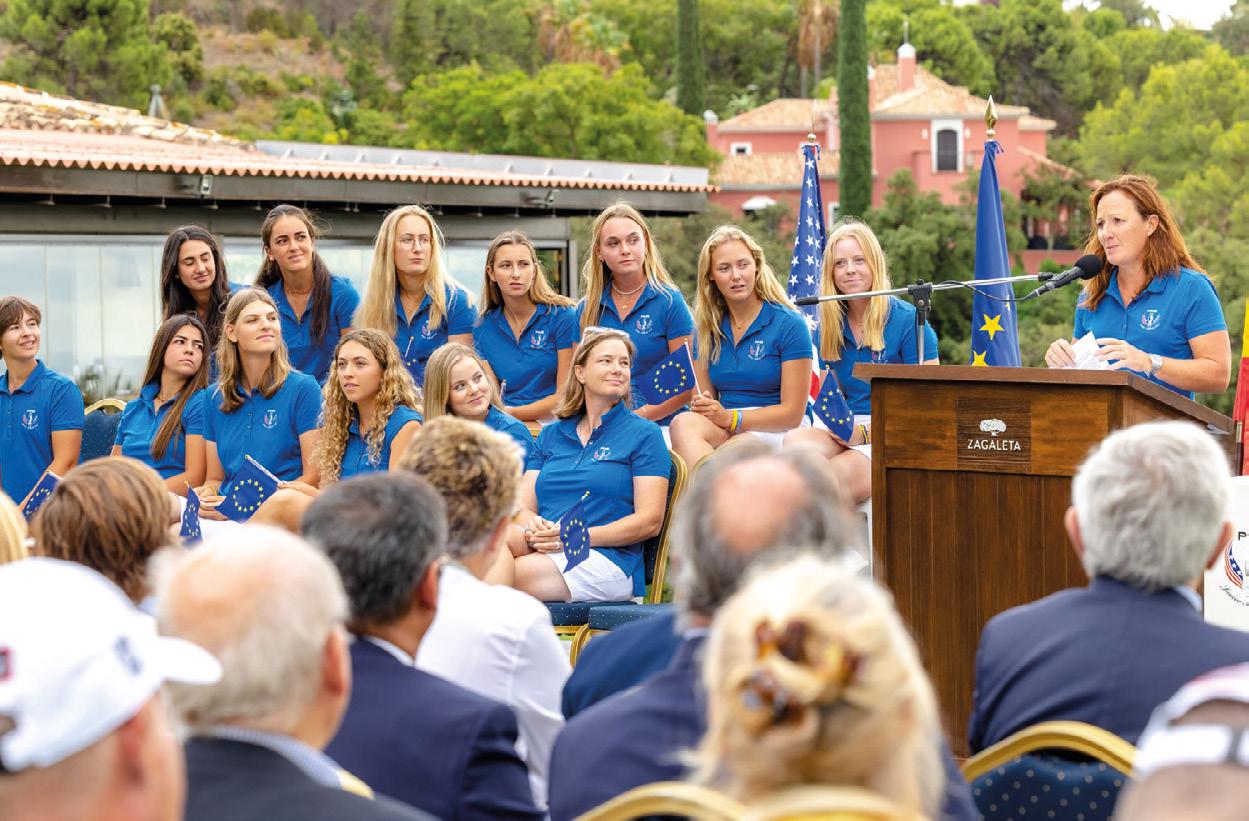


Led by French captain Gwladys Nocera, the European team excelled on day one, securing an impressive 8.5-3.5 lead. With only four points left in the individual matches, the European squad rallied like disciplined warriors from dawn on the decisive day.
Madrid’s Andrea Revuelta, leading in the first match, showcased the team’s resilience. Initially trailing by four holes against Jasmine Koo, Revuelta fought back, narrowing the gap.
The outcome didn’t matter - Revuelta conceded on the final hole - but the team’s warrior spirit prevailed. Some matches ended in victory, others in draws or defeats, yet each contributed to a memorable performance, reclaiming ground in the competition’s history.
With a second consecutive triumph and fourth overall, Captain Nocera strategically deployed her team, securing crucial points throughout the lineup. Strong performances at the top and bottom thwarted any hopes of an American comeback.
Special mention goes to Valencia’s Cloe Amión, securing a perfect three out of three points. Alongside her teammates, she awaited Castellon’s Rocío Tejedo’s match conclusion at the 18th hole, celebrating Europe’s victory
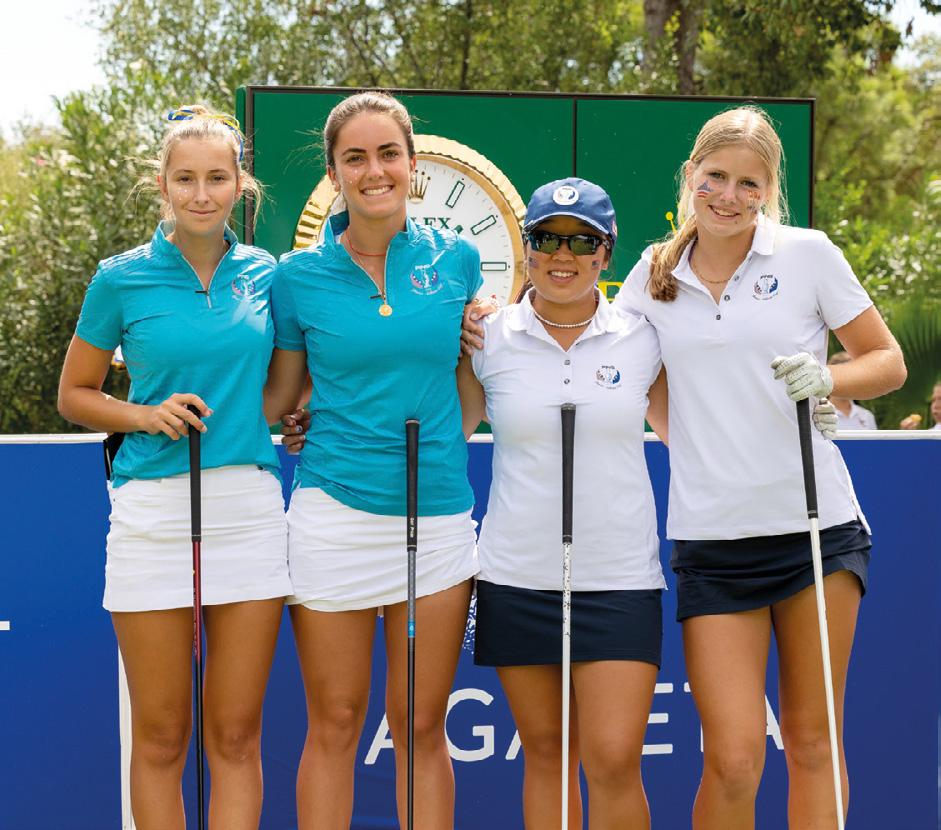
In the image below : EUROPEAN TEAM, from the left to right (first row): Widal Josefin, Nora Sundberg, Denisa Vodickova, Meja Örtengren, Rocio Tejedo, Nora Angehrn (Vice captain) (second row): Savannah De Bock, Yana Aneïs Beeli, Cloe Amión, Helen Briem, Francesca Fiorellini, Anna Cañadó, Andrea Revuelta, Gwladys Nocera (Captain)
In the center, in the front row with the trophy: Marta Figueras-Dotti and Eva-Lotta Strömlid
AMERICAN TEAM, from the right to the left (first row): Yana Wilson, Ryleigh Knaub, Irene Kim, Elizabeth Rudisill, Gianna Clemente, Gracie McGovern (Vice captain) (second row): Anna Davis, Asterisk Talley, Megan Meng, Kathryn Ha, Jasmine Koo, Anna Song, Amy Alcott (Captain)






Panoramic view capturing the spirited action as players compete in the PING Junior Solheim Cup across the scenic landscape of Zagaleta Old Course.
- a fitting prelude to the 2023 Solheim Cup commencement on Friday.
The final score of 15-9 in favor of Europe, while significant, isn’t the most decisive in the PING Junior Solheim Cup’s history.
That title belongs to the inaugural 2022 edition when the United States defeated Europe 17-7, a ten-point lead that remains unmatched. Conversely, the closest margin occurred in 2003 when Europe edged out the United States 12.5 to 11.5. Going even further, the 2011 showdown between Europeans and Americans ended in a tie.
Europe’s clear victory in the current Junior Solheim Cup closes the gap in victories between the two teams in the competition’s history. While the United States still holds a significant advantage with seven wins, Europe has now notched its fourth victory, the second consecutive, a feat previously unseen in the competition’s list of achievements.

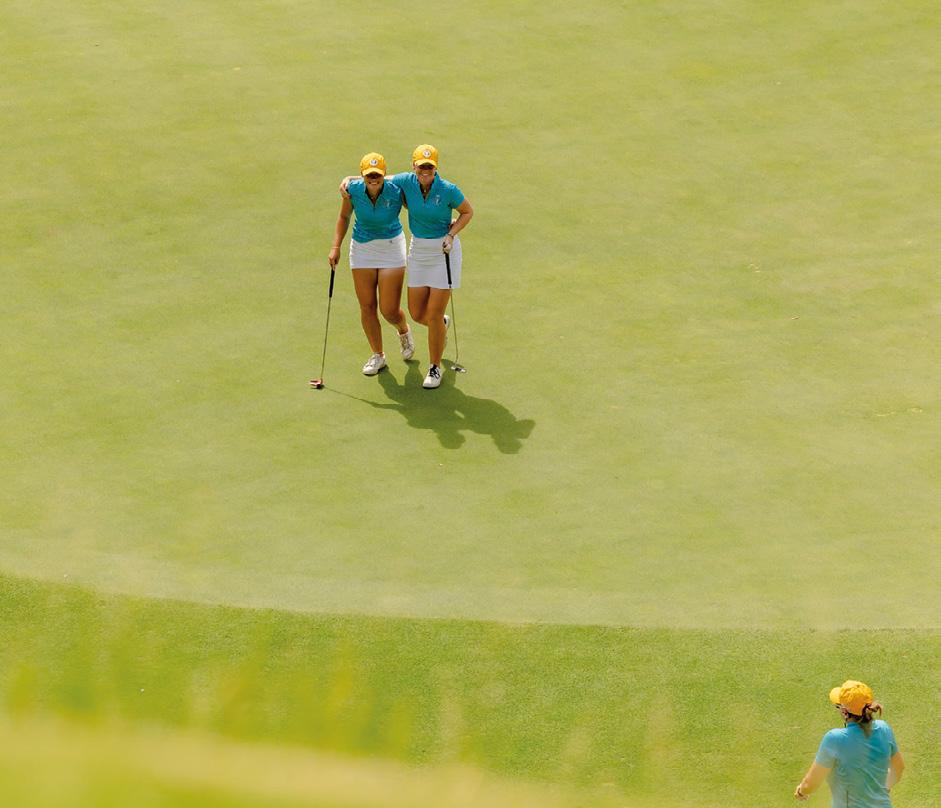
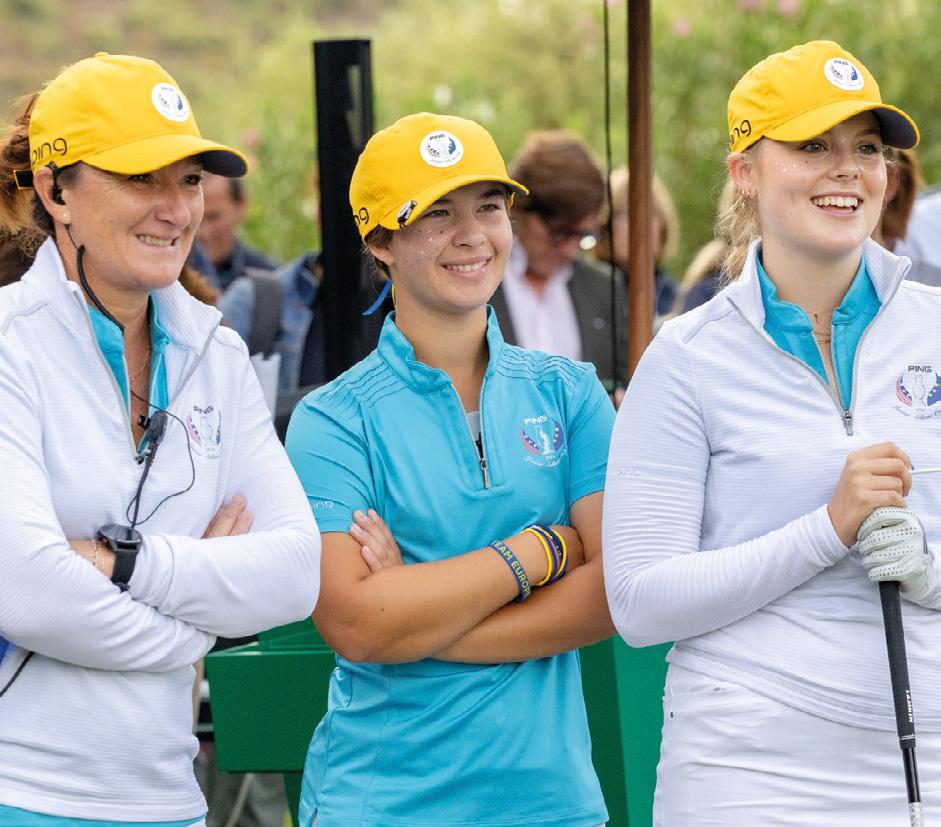

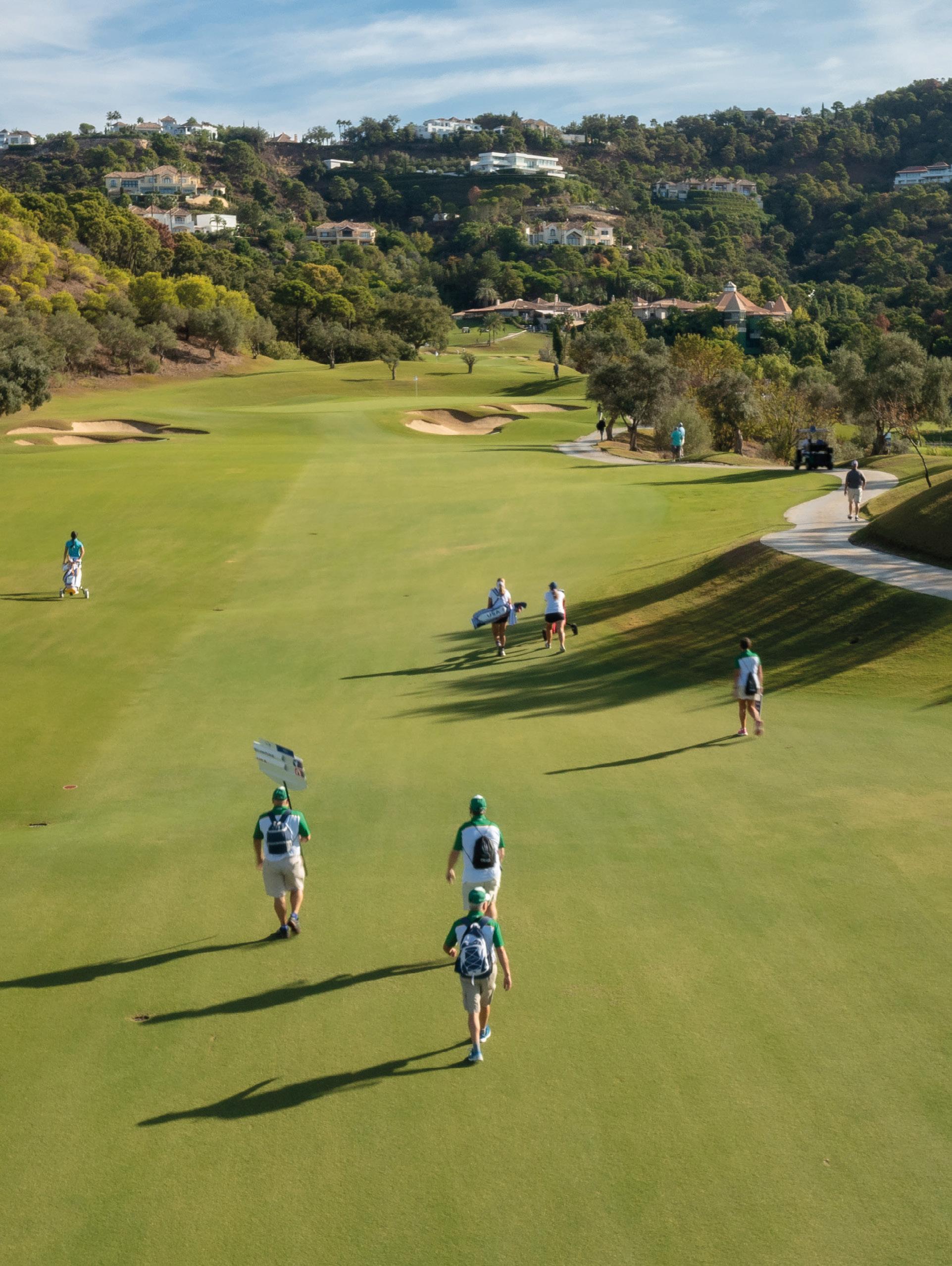
Welcome to the equestrian center, a charming and elegant location available at our Country Club La Zagaleta to cater to the passion for horses. Whether one is a novice or a seasoned rider, we offer classes tailored to all skill levels and age groups, ensuring everyone has the opportunity to experience the joy of horseback riding. From the fundamentals for beginners to the intricacies of advanced techniques for Grand Prix enthusiasts, our expert instructors are dedicated to nurturing skills and confidence in the saddle.
But that’s not all: immerse yourself in the natural wonders of the surroundings with enchanting horseback riding trails through the community. As visitors explore, they’ll uncover the hidden gems and breathtaking landscapes that make every ride a great adventure.
Our commitment to excellence extends beyond riding lessons. We prioritize the wellbeing of our horses and ensure they receive the utmost care and attention, creating a safe and harmonious environment for both riders and equines alike.
Whether one is seeking the thrill of competition or simply wishes to connect with nature on horseback, our charming and elegant equestrian center offers an unparalleled experience that will leave visitors captivated and inspired.
Join us and embark on an extraordinary journey into the world of horsemanship.
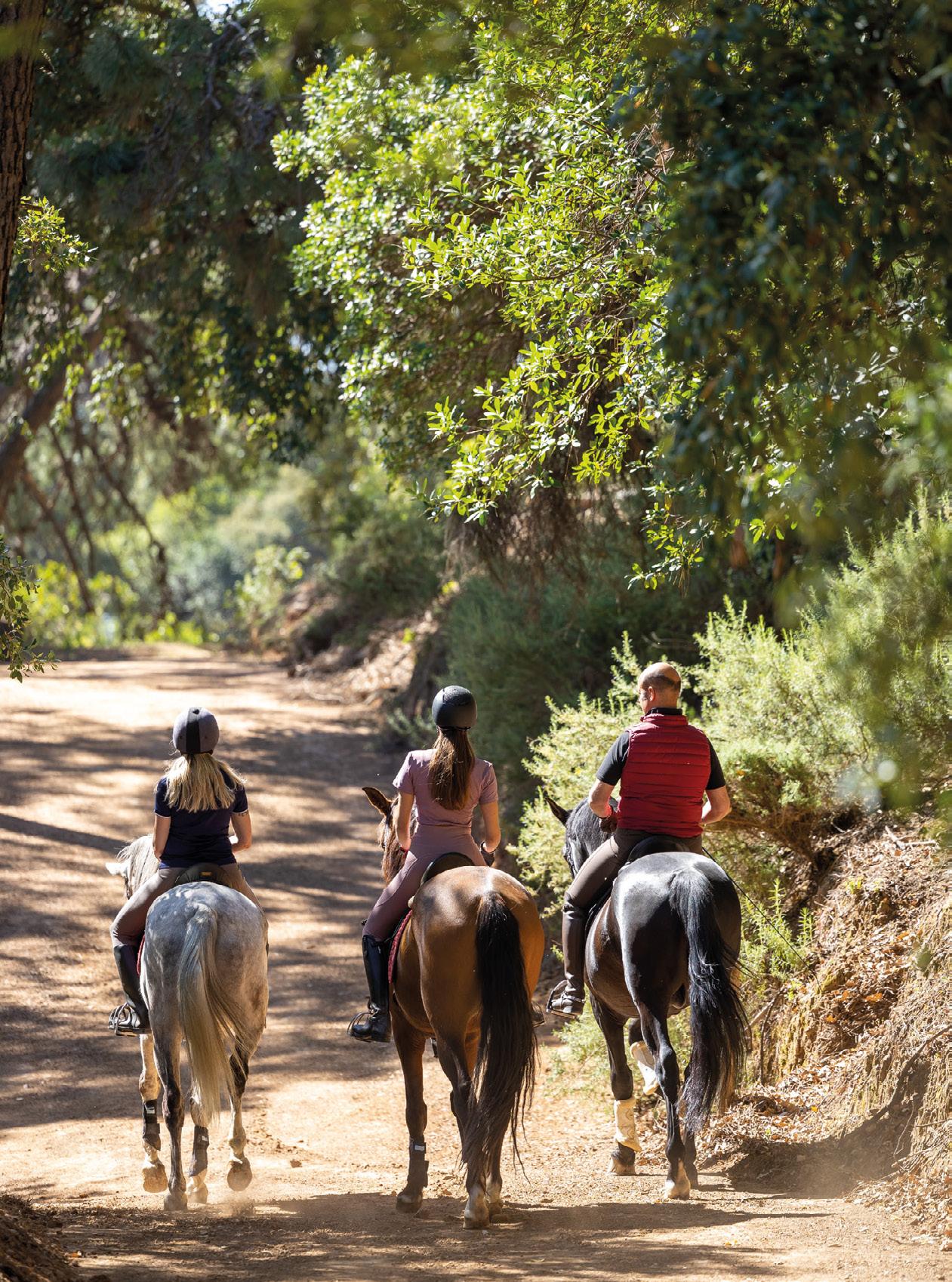
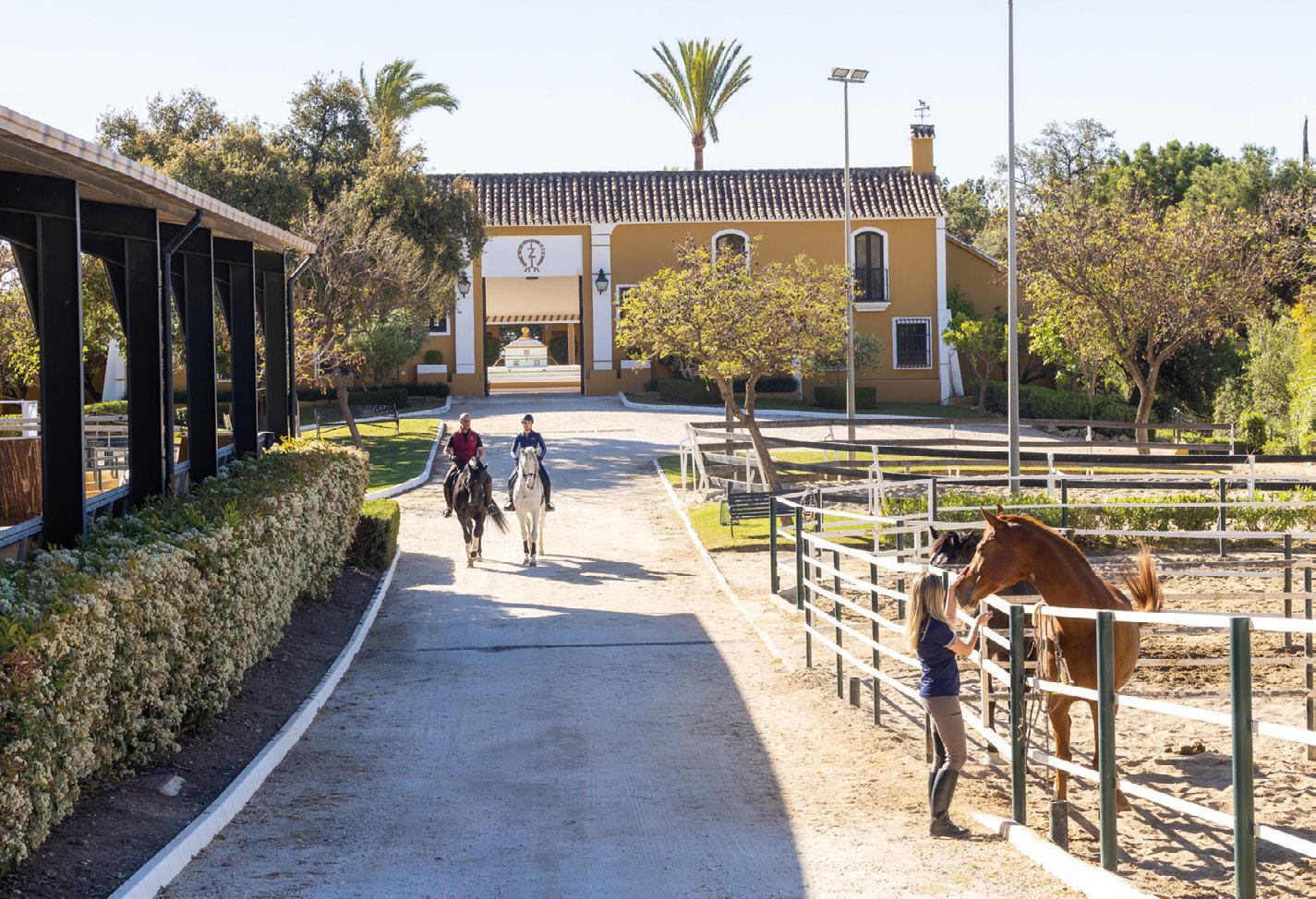
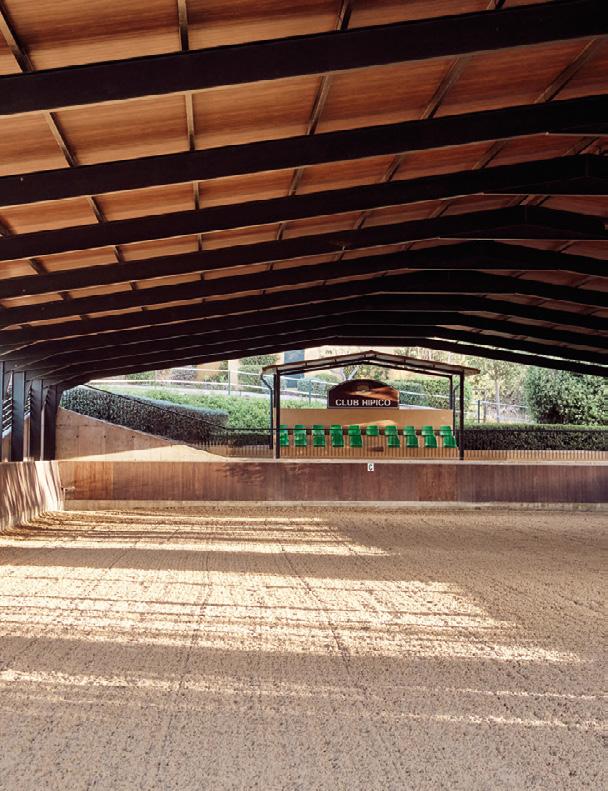
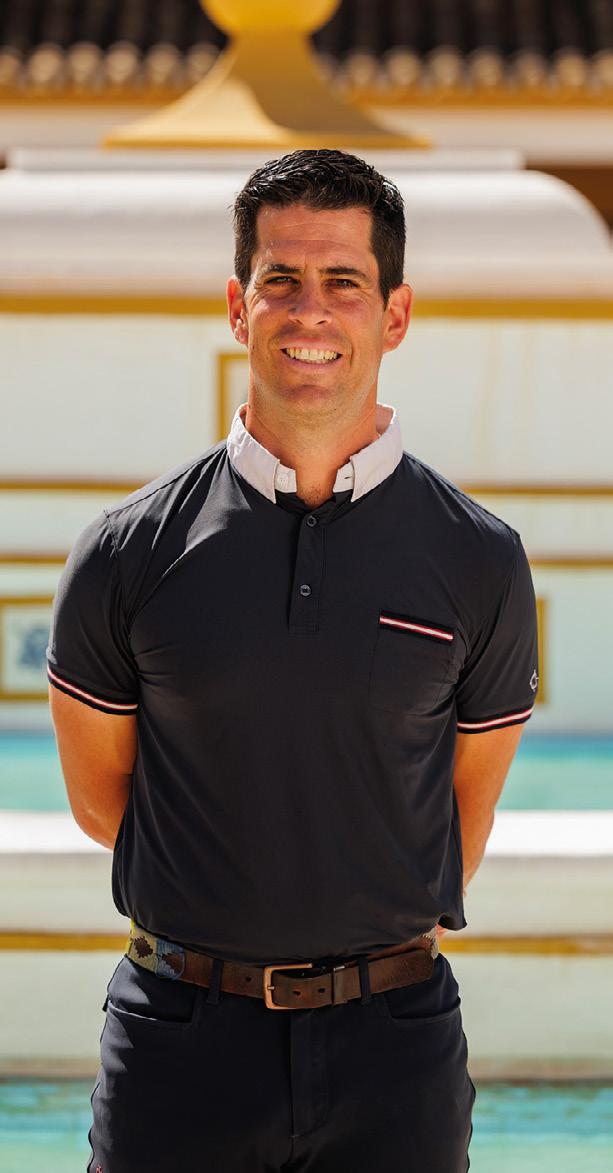
Equestrian Center’s new director, Alfonso Expósito Santiso has a rich history in the equestrian world, bringing a unique combination of experience and dedication that promises to elevate Zagaleta’s Equestrian Center to new heights.

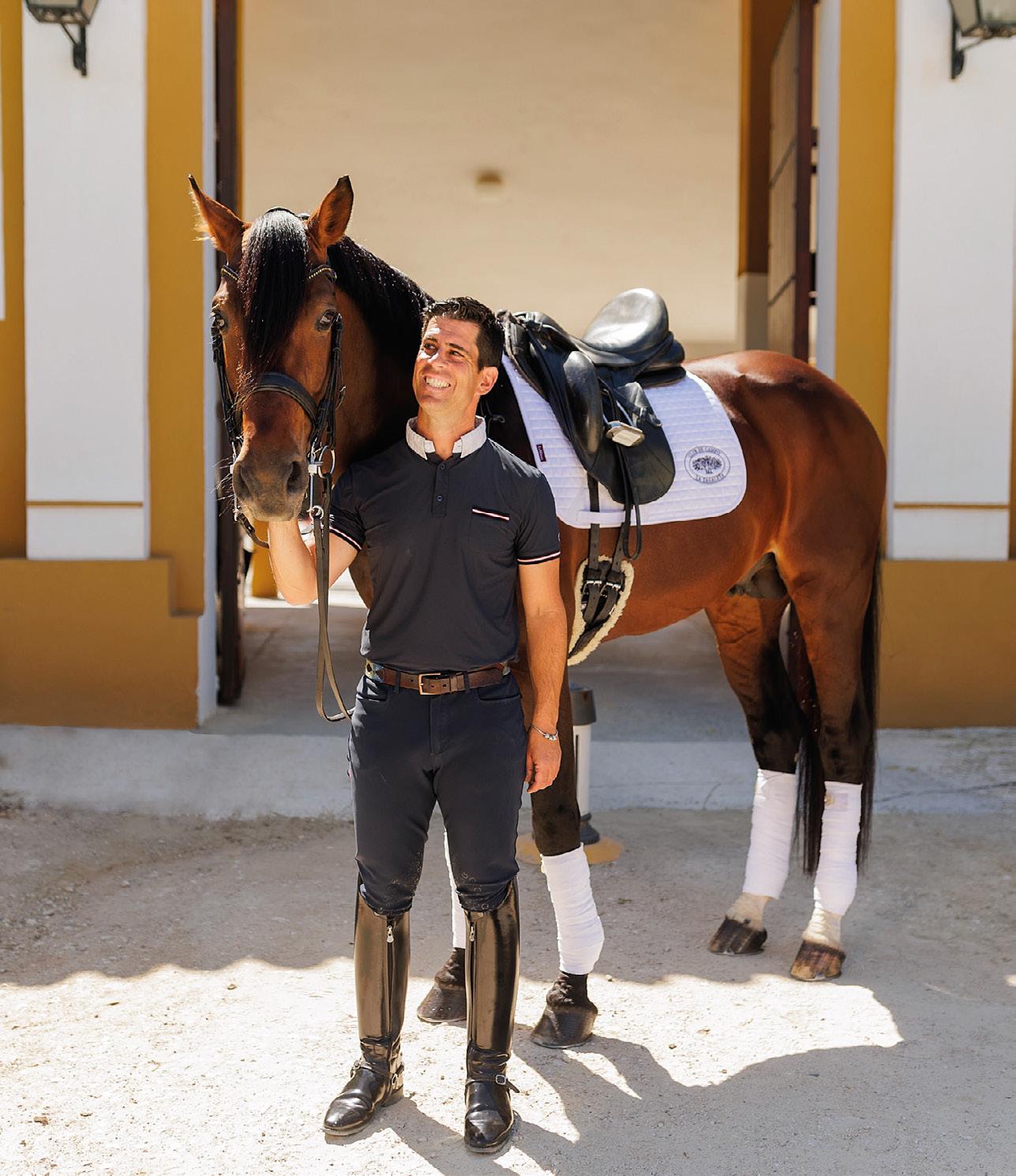
Alfonso Expósito strikes a pose at the Zagaleta Country Club Equestrian Center alongside his majestic Oldenburg horse, Vancouver.
As we turn the page to a new chapter, we extend our heartfelt gratitude to Jaime Serrano for his dedicated service as the director of the Equestrian Center. Jaime’s contributions have been invaluable, and we are immensely grateful for his leadership and commitment to excellence. We congratulate him on his new role as Technical Director at the Royal Andalusian School of Equestrian Art in Jerez and wish him continued success in this exciting endeavor.
We are thrilled to welcome our new director, Alfonso Expósito, to the Zagaleta family. Alfonso, alongside his wife, María, brings with him a wealth of experience and a passion for equestrianism that is truly inspiring. Since January 2023, Alfonso has been deeply engaged in the Real Maestranza de Caballería de Ronda, where his dedication as a trainer played a pivotal role in reinvigorating the classical dressage riding school. His impressive achievements, both nationally and internationally, reflect his unwavering commitment to excellence in the field.
Alfonso’s vision for Zagaleta’s Equestrian Center is ambitious yet attainable: to elevate it into a global standard-bearer in the equestrian world. His focus on delivering exceptional teaching and horse care ensures that Zagaleta will continue to offer an unparalleled experience for all riding lovers.
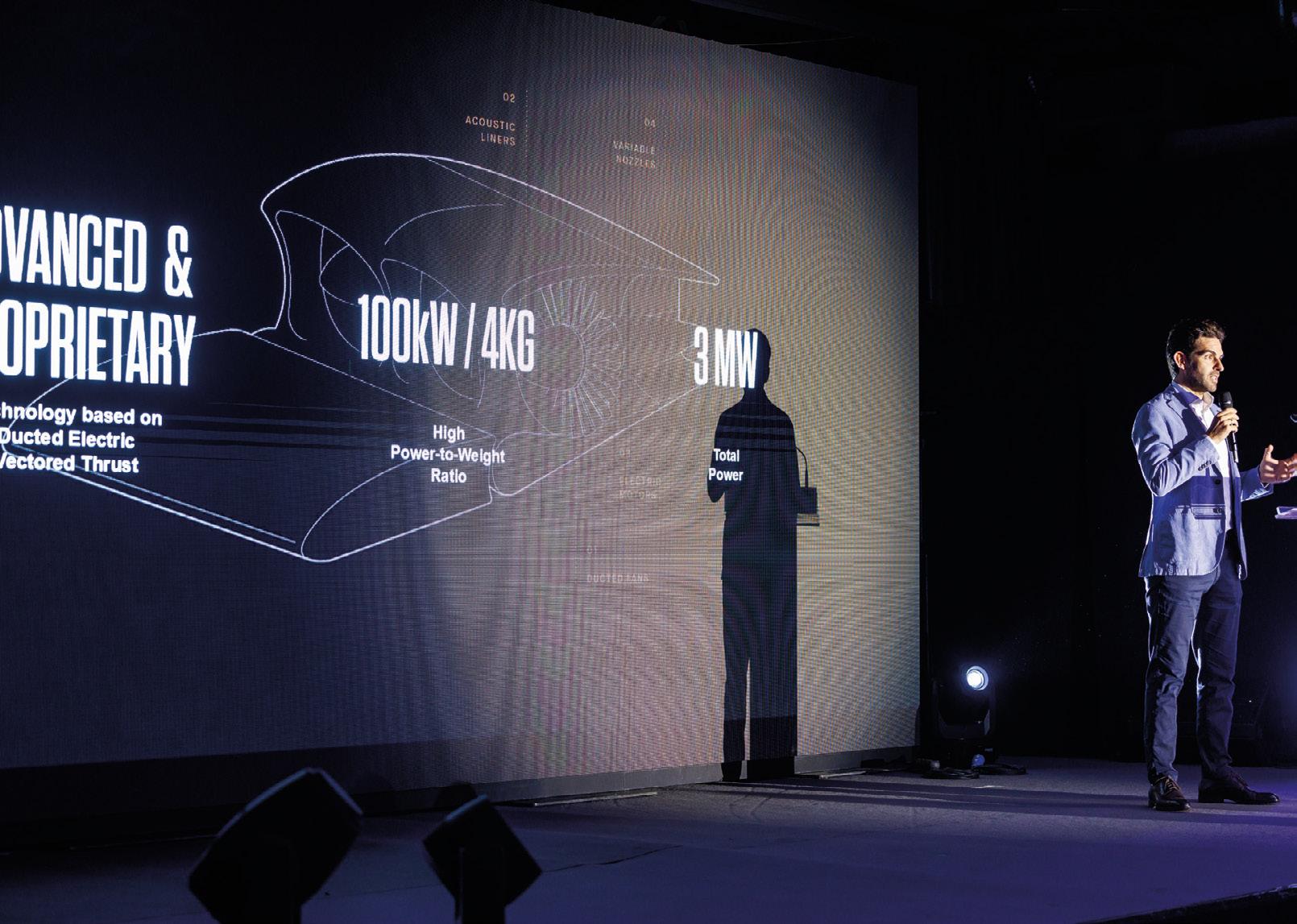
Lilium. Introducing the first electric vertical take-off and landing jet.
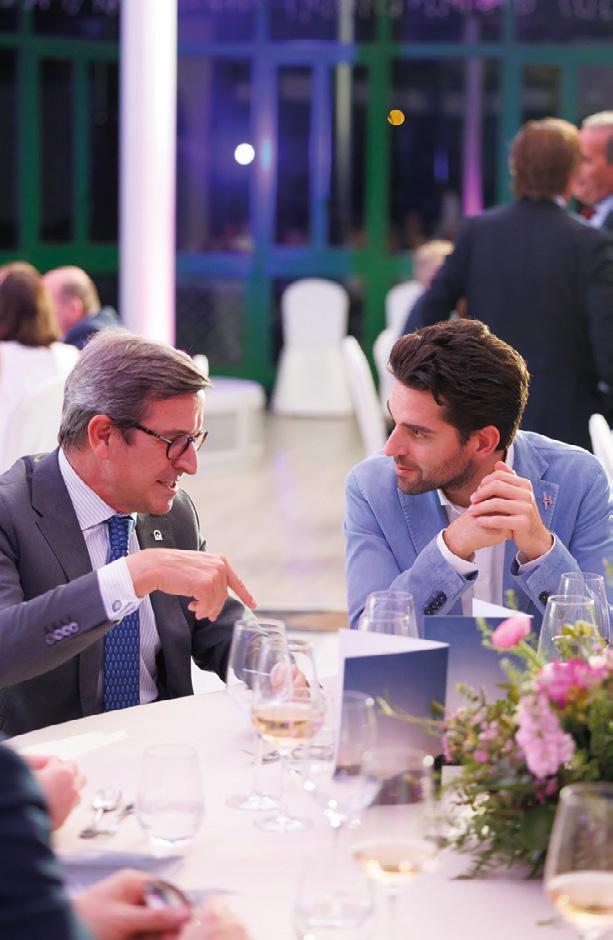
Daniel Wiegand, the pioneering co-founder and CEO of Llium, leading the charge in renewable energy innovation and sustainability during his presentation speech.
Last April marked a momentous occasion at Zagaleta Country Club, as esteemed members and guests gathered for a truly special event: the unveiling of the latest model of jet by Lilium. As one of the pioneering companies in electric Vertical Take-Off and Landing (eVTOL) technology, Lilium stands apart for its pursuit of dual certification with the European Union Aviation Safety Agency (EASA) and the Federal Aviation Administration (FAA). Since 2015, Lilium has been at the forefront of innovation, designing, building, and testing five generations of technology demonstrators. With each iteration, the world has watched in awe as Lilium pioneers an aircraft and flight control system unlike anything seen before.
During the event, guests were treated to more than just the excitement of Lilium’s groundbreaking technology. A golf tournament added a touch of sport and camaraderie to the day, providing an opportunity for networking and friendly competition. Later, as the sun set over the picturesque landscape of Zagaleta, attendees gathered for an elegant dinner. It was here that Daniel Wiegand, Lilium’s co-founder, took the stage to deliver an insightful presentation.
Against the backdrop of innovation and progress, Wiegand shared his vision for the future of transportation and the role Lilium aims to play in shaping it. His words resonated
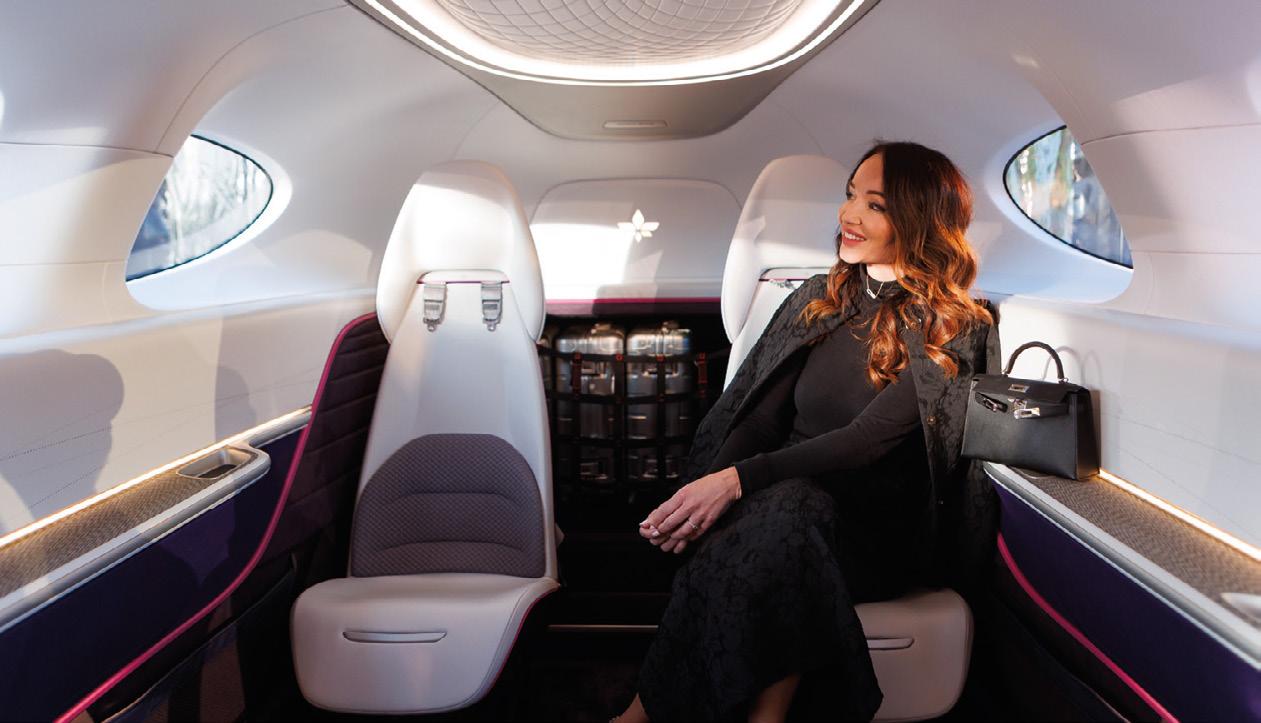
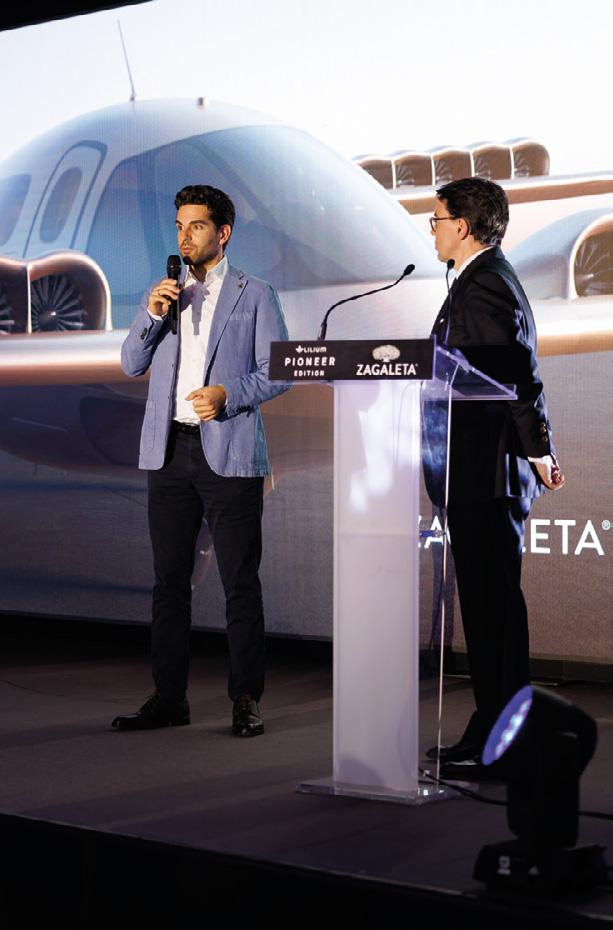
Sergio Azcona, Communication Director of
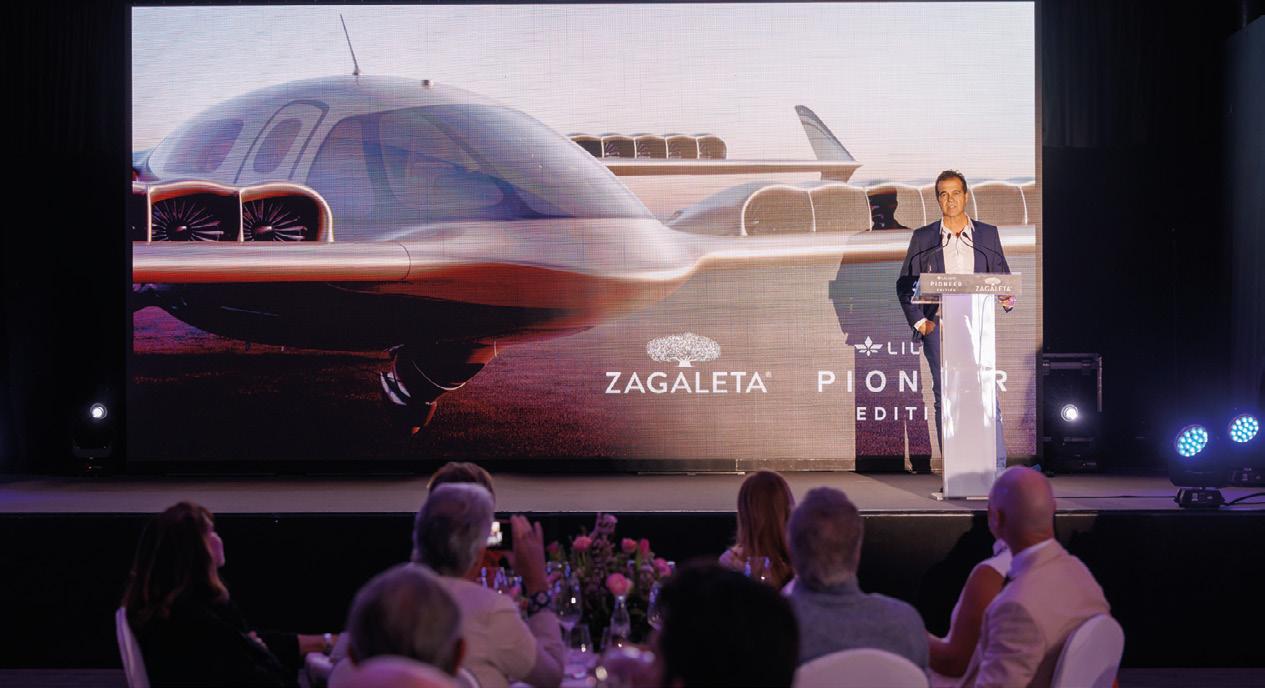

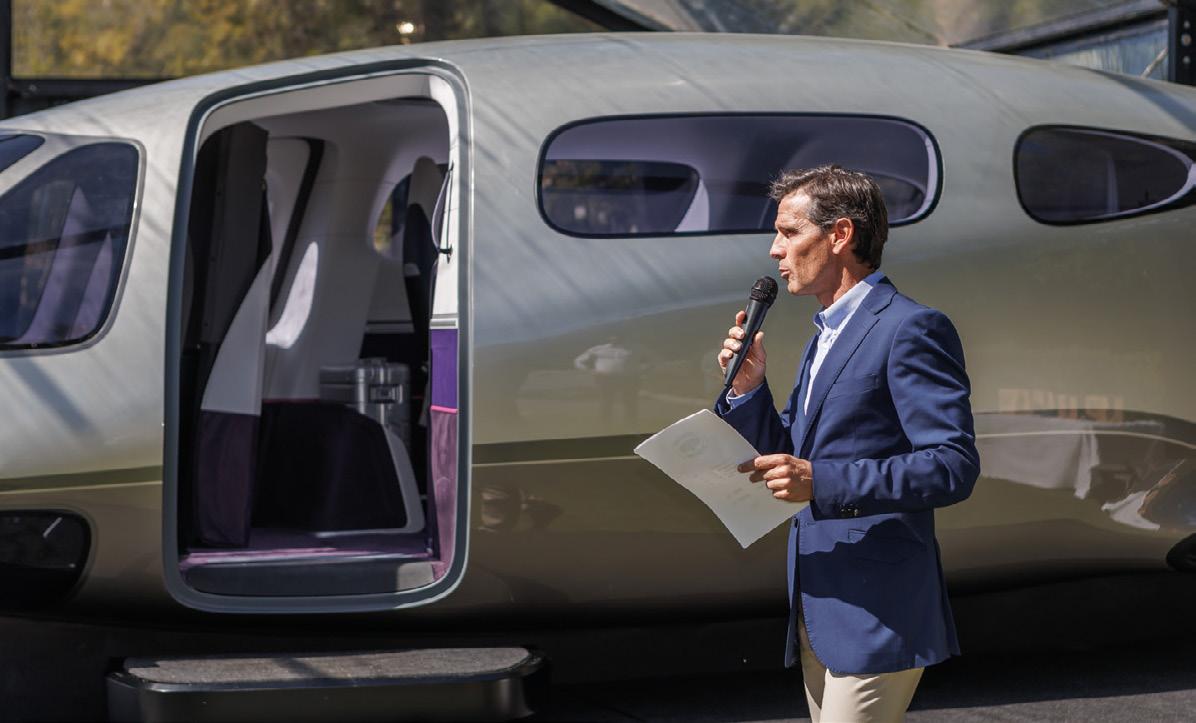

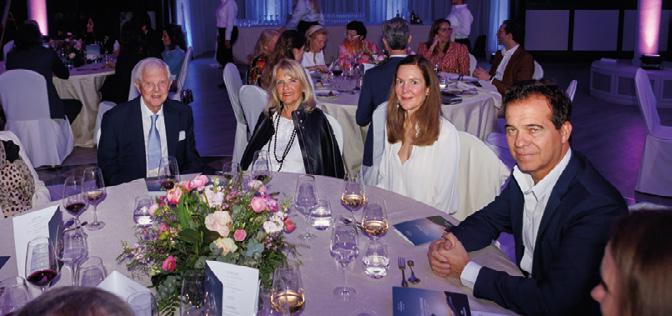
the first electric vertical take-off and landing jet.
with the audience, painting a picture of a world where urban air mobility is not just a concept, but a reality. With each passing moment, the dream of effortless, sustainable air travel draws closer, thanks to the pioneering efforts of companies like Lilium.
As the evening drew to a close, guests departed with a sense of excitement and anticipation for what lies ahead. The event had been more than just a showcase of cutting-edge technology; it had been a testament to the power of innovation and collaboration to transform the way we live and move. In the heart of Zagaleta Country Club, amidst the beauty of nature and the spirit of progress, the future of flight took flight.

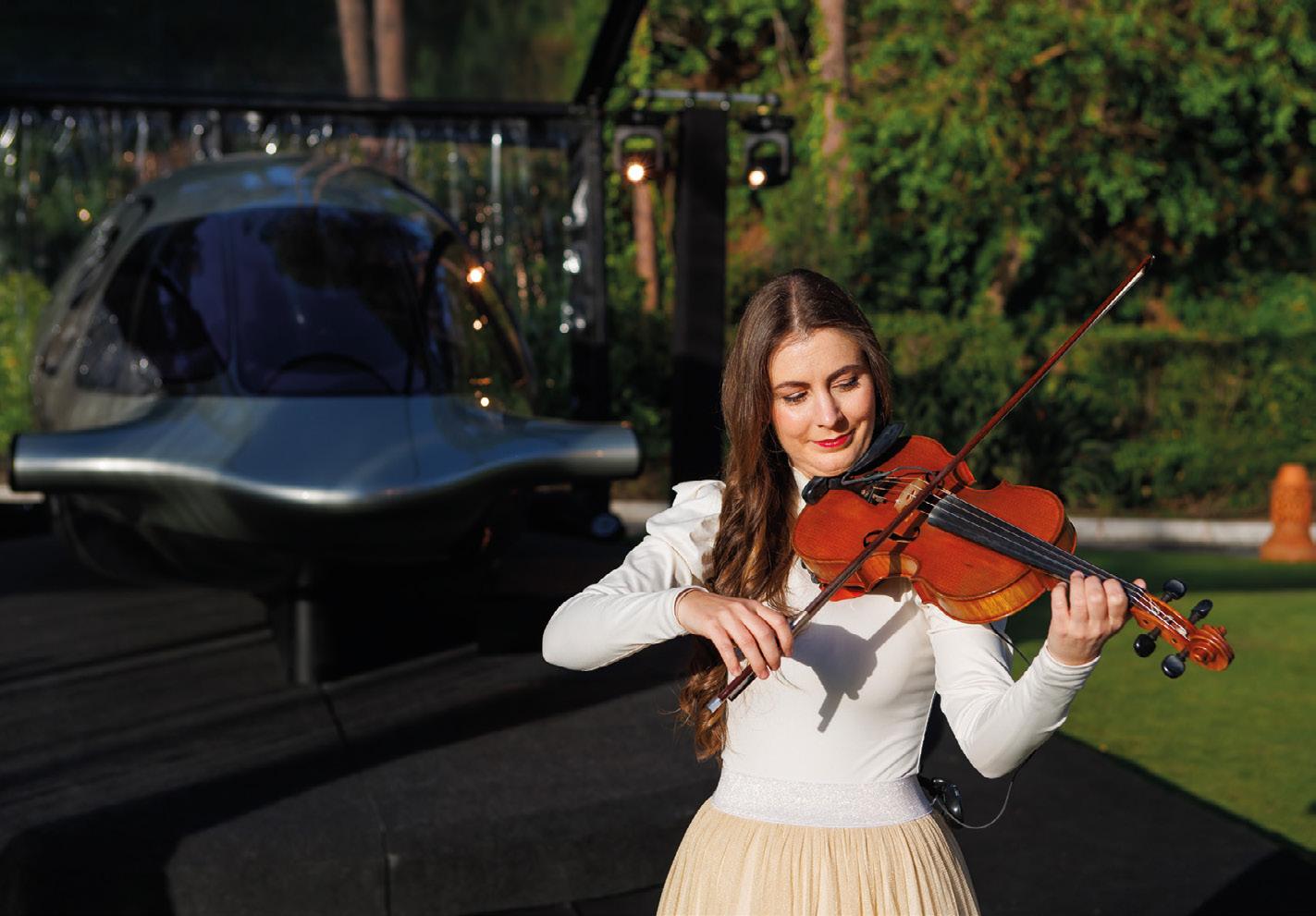
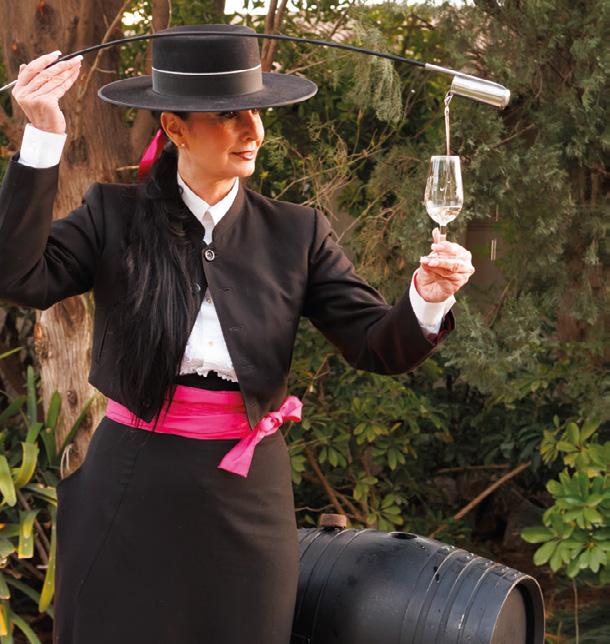
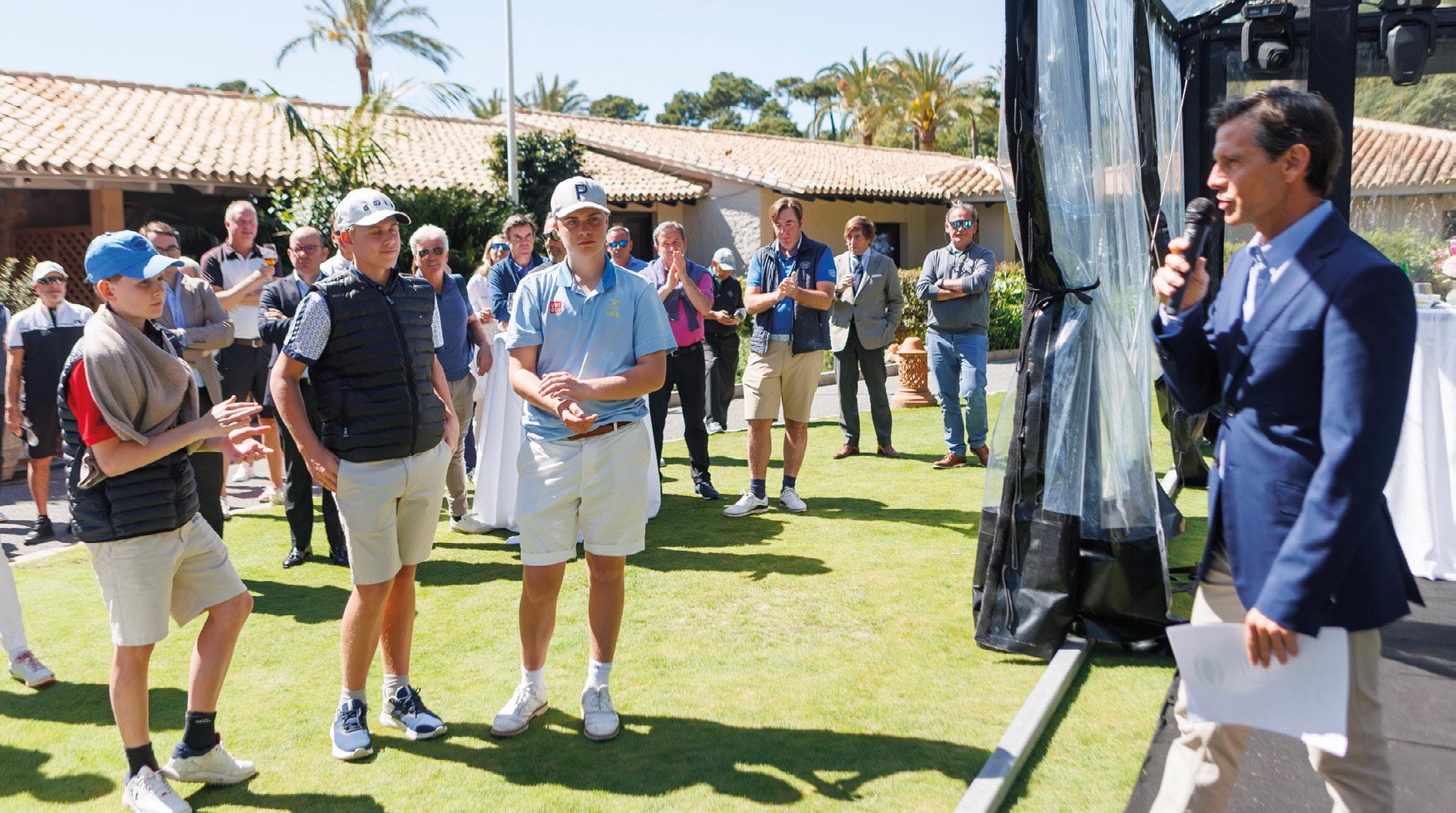

The event kicked off with a golf tournament for members and guests. Carlos Rodiles, Director of Zagaleta Country Club, announced the winners and presented the awards. The atmosphere was fantastic as the club’s gardens showcased a replica jet, providing a picturesque backdrop for guests to capture memories.
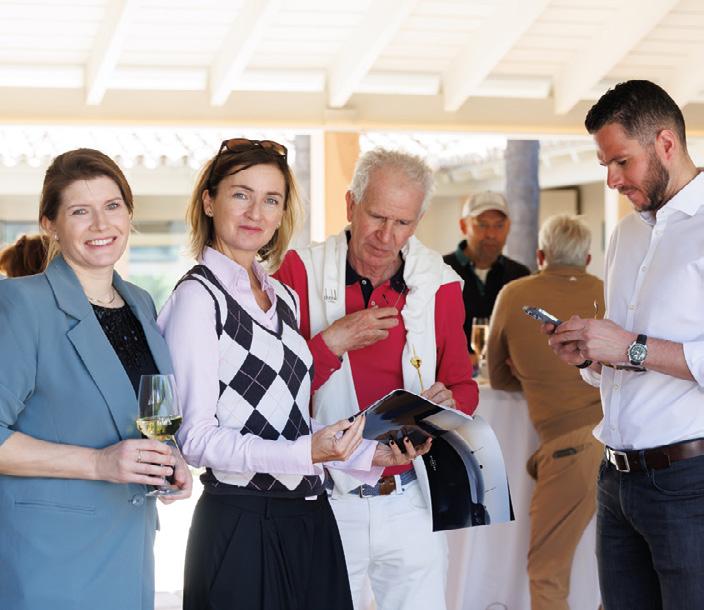
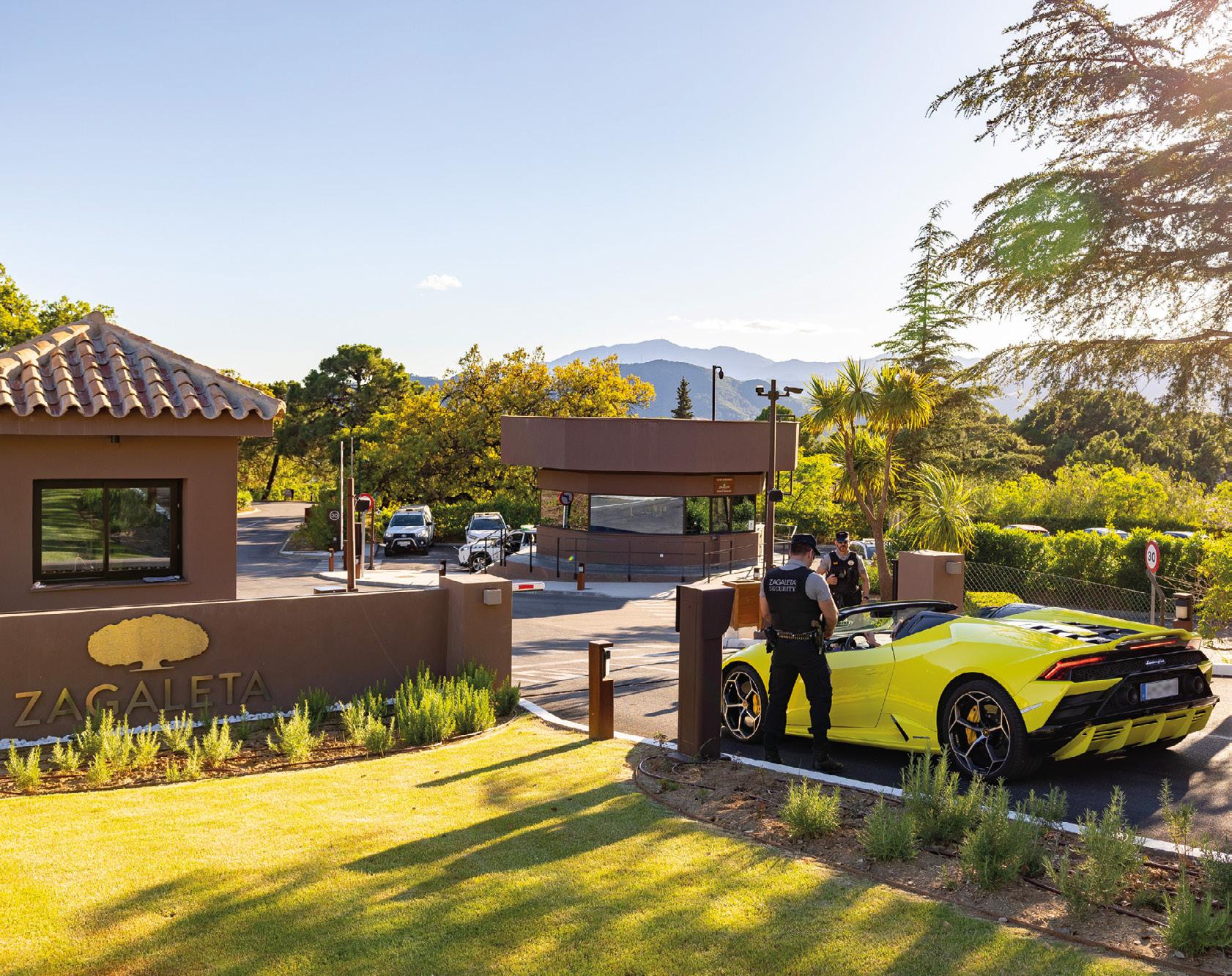
The complexity of the systems installed during Phase 1 of La Zagaleta’s “Security Master Plan” made it necessary to construct new “Control Centers” at the North and South entrances, replacing the old security booths that had become obsolete some time ago.
The lack of infrastructure necessitated planning new constructions commensurate with the scale of the Project, anticipating future growth and implementation. Due to space constraints, alternative locations had to be sought for the new constructions, complicating security operations by requiring them to be moved away from La Zagaleta’s entry points in order to obtain the necessary municipal permits.
Furthermore, in parallel with the installation of new barriers and access control elements, the entrances to La Zagaleta were redesigned to be more modern and up-to-date. The addition of a second exit lane at the North Gate and the concept of a “priority lane” will undoubtedly help minimize waiting times for our Owners and Members at this entrance.
High-frequency passage barriers with quadruple security systems (3 loops and ultrasonics), longrange card readers, and automatic license plate recognition with double verification are some of the improvements made at the North and South Gates. In terms of infrastructure, fiber communications between both Control Centers and ergonomics, along with the “helidrones” (mini drone airports, pioneering in residential security) designed on the rooftops of the new Control Centers, are some of the enhancements included in Phase 1 of the aforementioned “Security Master Plan” that is now concluding.



Last September 30th, and as part of two-day event to Malaga and Marbella, a welcome reception and dinner for members and guests of the Swiss Efficiency Club - SEC - was hosted at La Zagaleta Country Club.
The SEC premises are located at the “Haus Zum Herkules” in the heart of Zurich’s financial district.
The Swiss Efficiency Club is a private organization based in Switzerland that is dedicated to promoting excellence, efficiency, and productivity across various industries. It serves as a platform for professionals, business leaders, and experts to share best practices, knowledge, and innovations aimed at improving efficiency and effectiveness in different fields. The club organizes events, workshops, and networking opportunities for its members, providing them with resources and insights to enhance their skills and business operations. It also fosters a community where members can collaborate and stay updated on the latest trends and developments in efficiency and productivity.
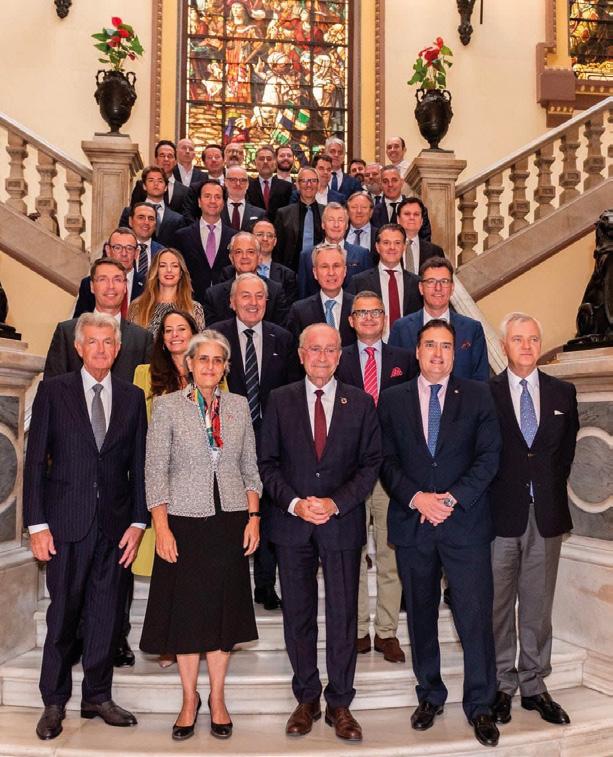
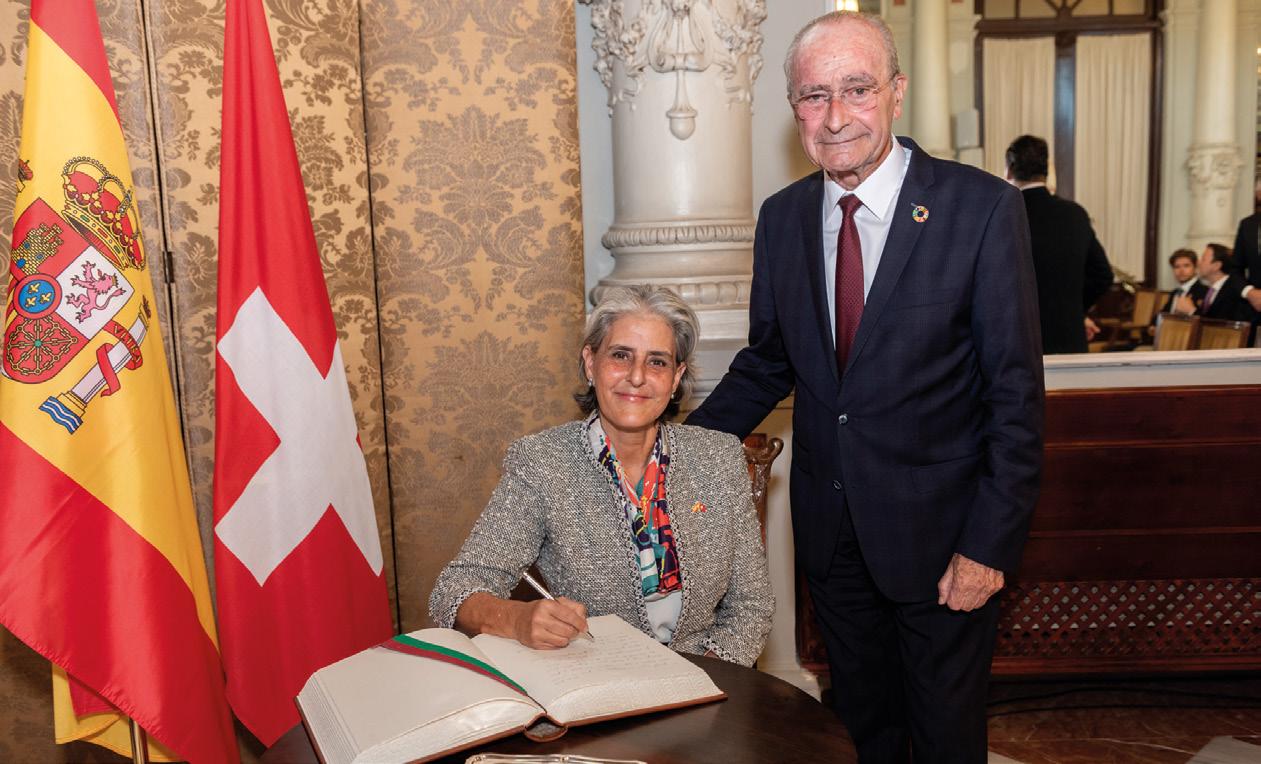
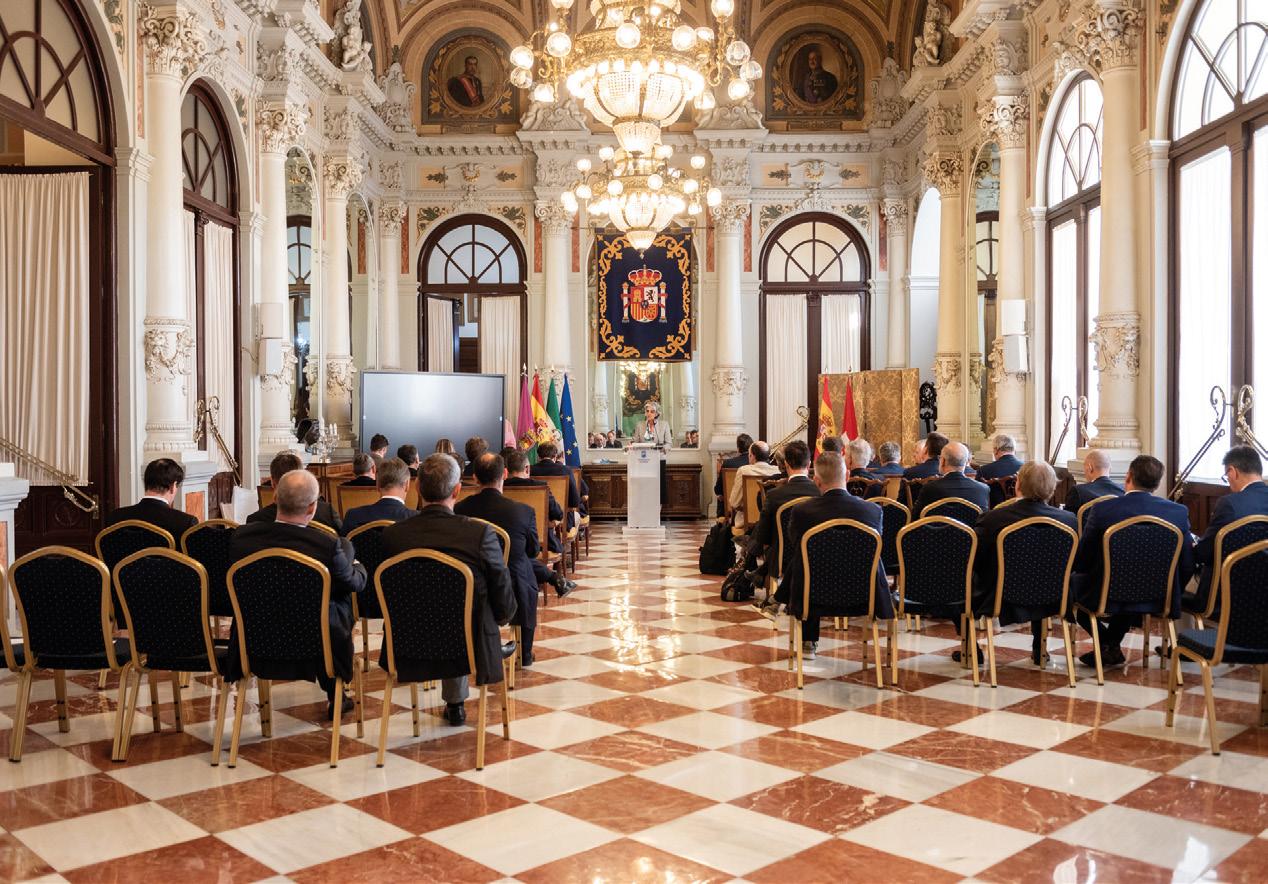

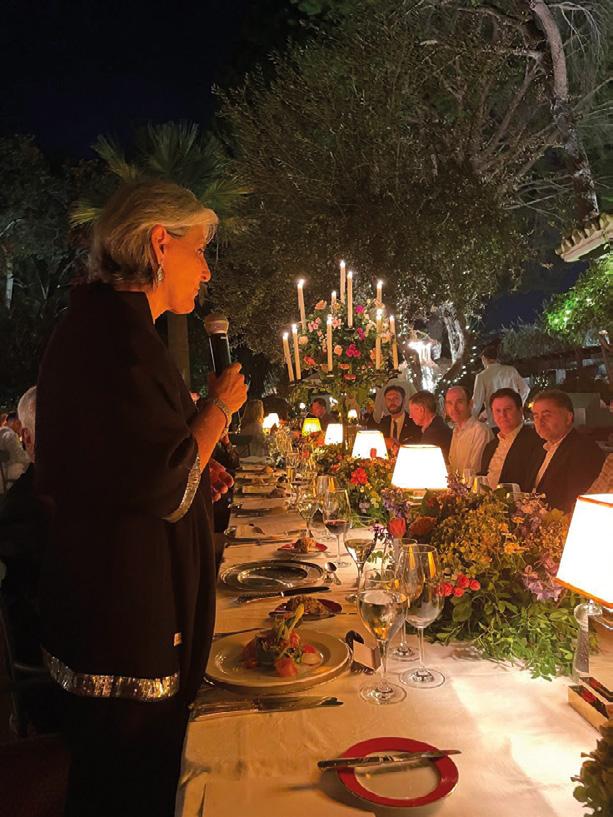
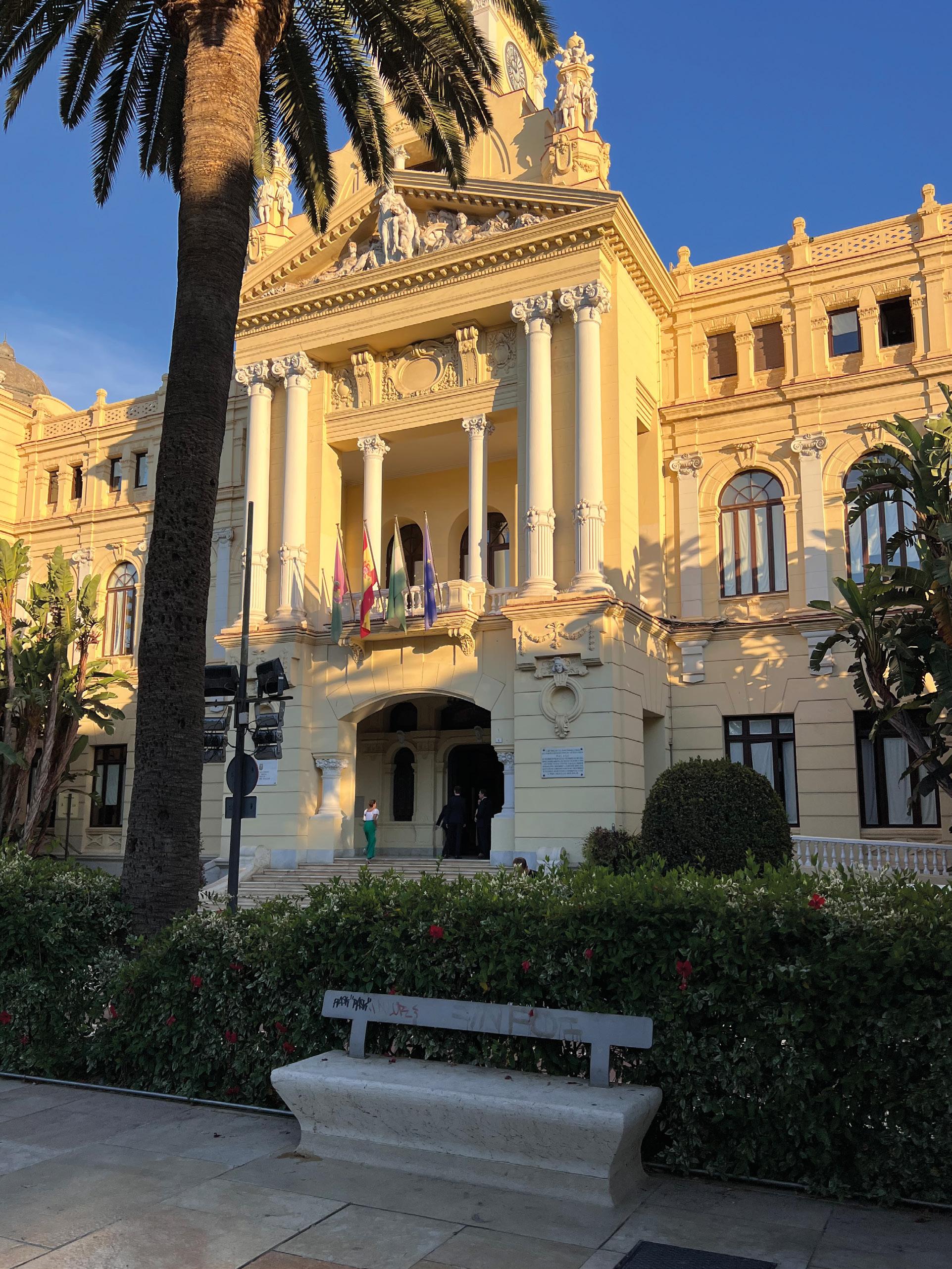
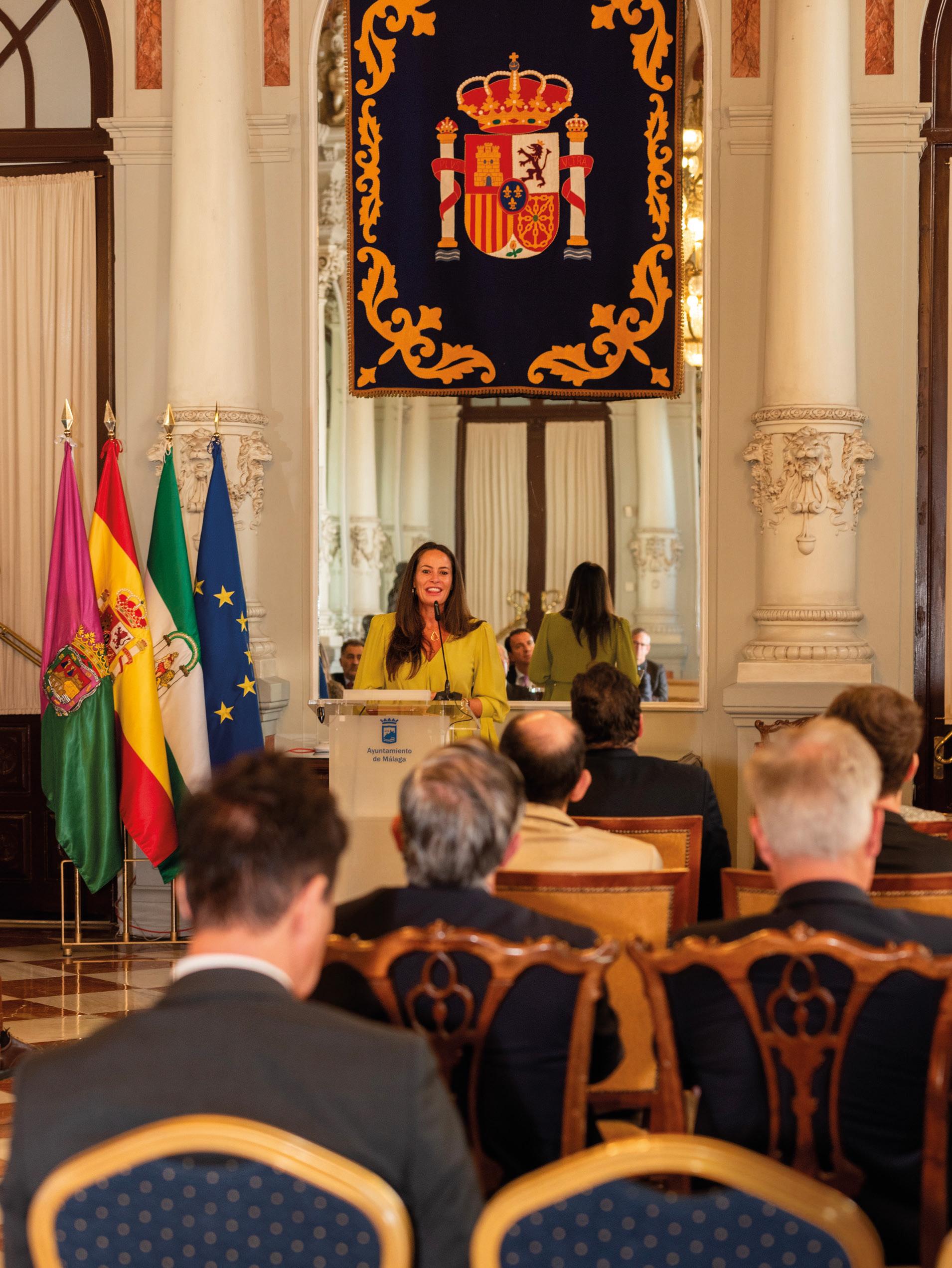

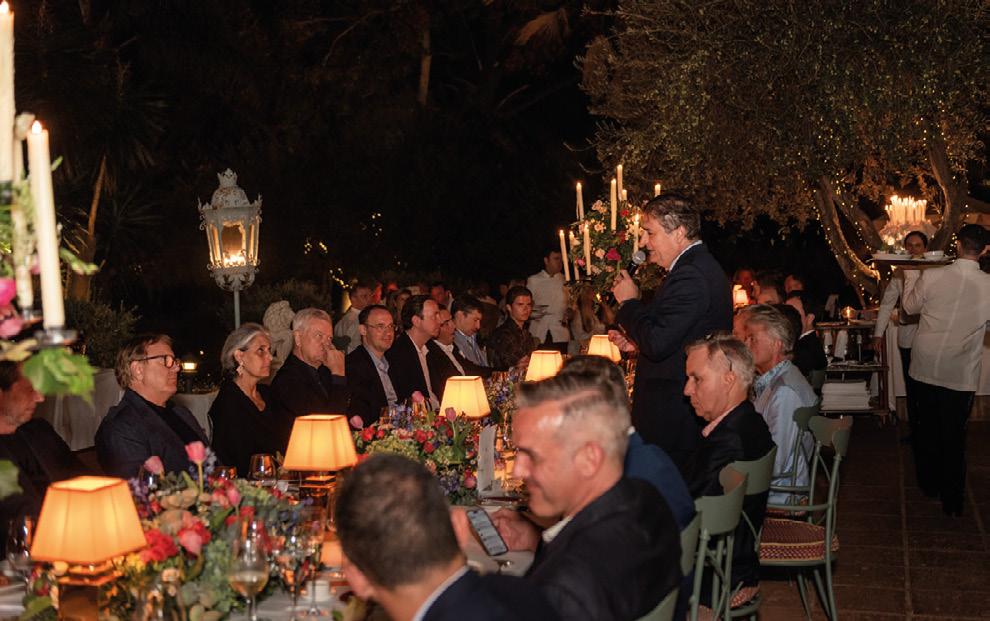
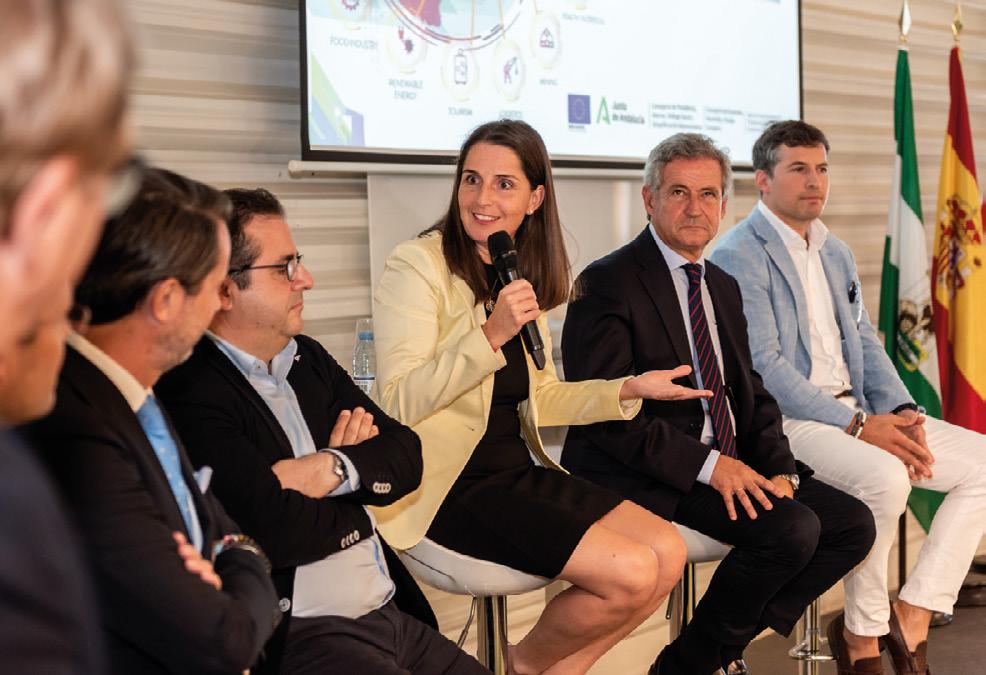
The Málaga Technology Park (PTA) is home to 687 companies and boasting a workforce of over 25,000 employees. Since its inception, the PTA has been driven by the fundamental goal of fostering innovation and research, a mission that continues to shape its trajectory to this day.
Carolina España Reina, Counselor for Economy, Finance, and European Funds of the Andalusian Regional Government, alongside Málaga Park’s director, Felipe Romera, presented the conference ‘Invest in ANDALUCIA’, where Guido Persterer, President of Hercules Club, Ezequiel Navarro, Chairman and CEO of PREMO and Sofa Schneider, Vice President Cloud Systems South & SMB EMEA & Malaga Site Leader, participated.
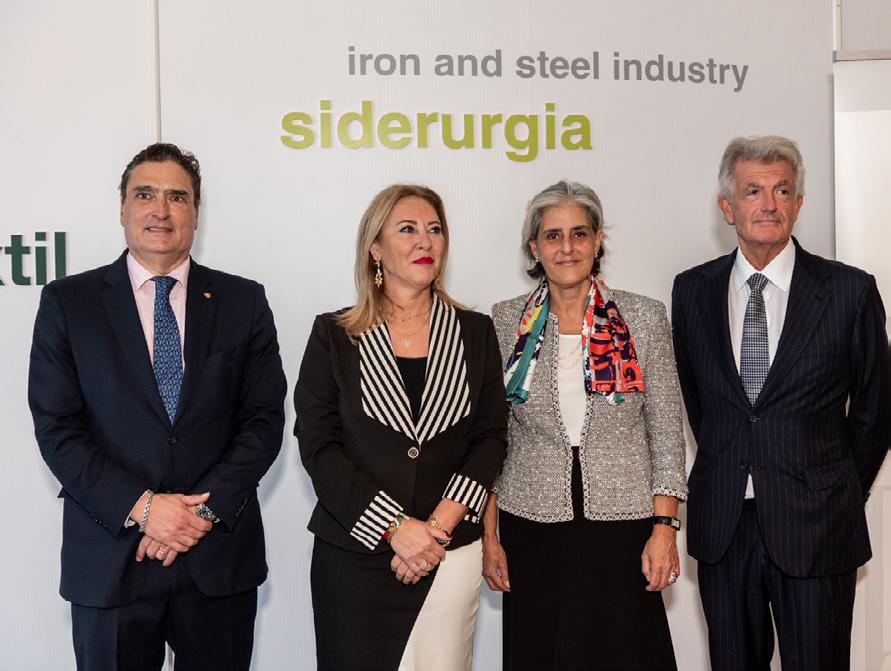


Step into the refined world of Zagaleta Country Club’s newly renovated clubhouse, where every corner exudes comfort and charm. Following extensive renovations, the clubhouse now boasts revamped areas designed to create a cozy and inviting ambiance for members and guests. The centerpiece is the exquisite restaurant, where culinary excellence shines. The talented F&B team has crafted a tantalizing new summer menu focusing on fresh garden produce and sophisticated cooking techniques. Enjoy sumptuous meals every Wednesday, Friday, and Saturday, with delightful breakfast and lunch offerings on other days. Themed dinners featuring Italian and Spanish cuisine occur weekly. Don’t miss the beloved tradition of Wednesday evening dinners, promising unforgettable experiences. Savor signature dishes like the Zagaleta Club Sandwich and Zagaleta Fritto Misto. Beyond dining, the clubhouse hosts exciting golf events, welcoming enthusiasts of all levels. Whether you’re a seasoned golfer or a novice, there’s always something to enjoy on the pristine greens.
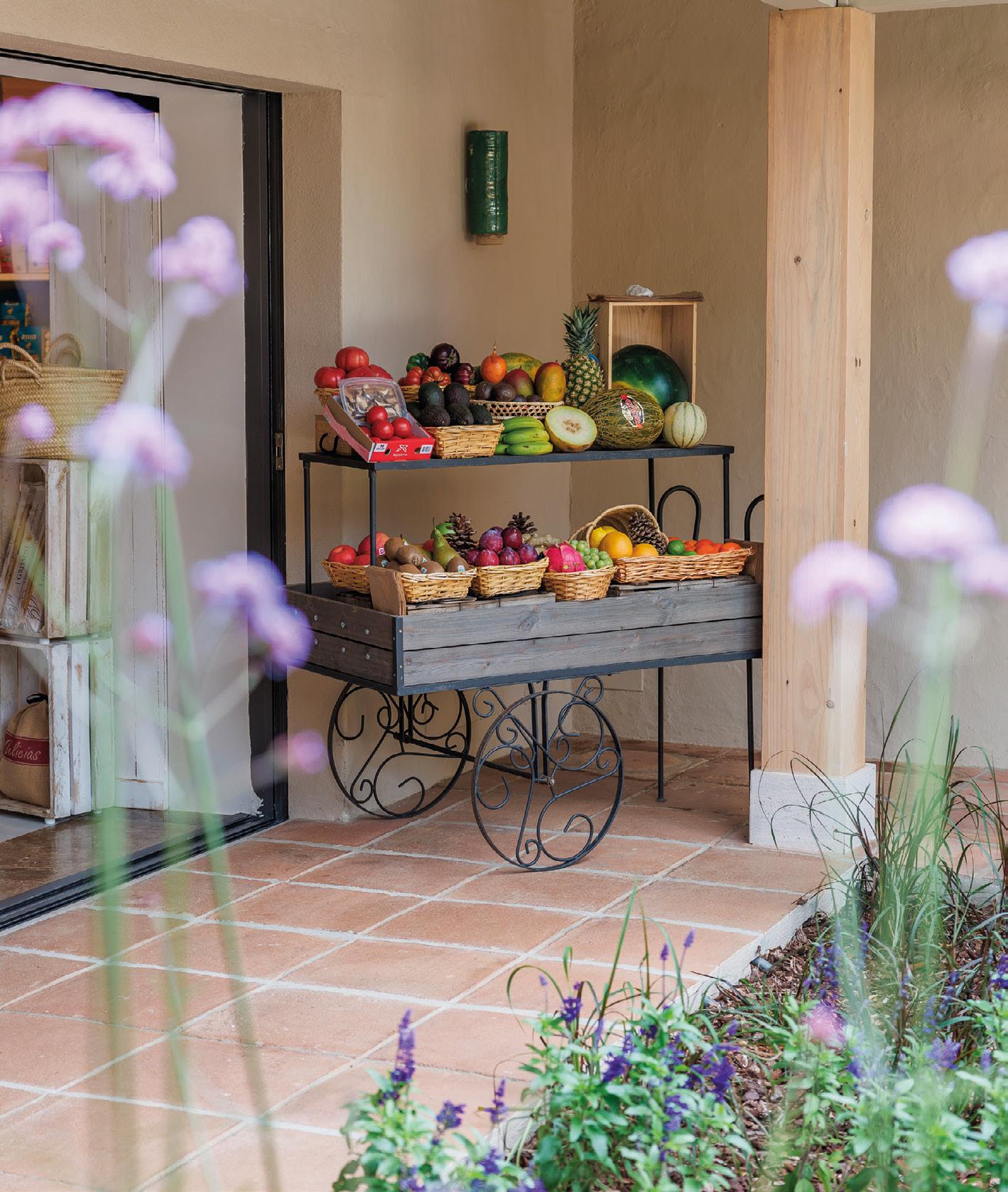
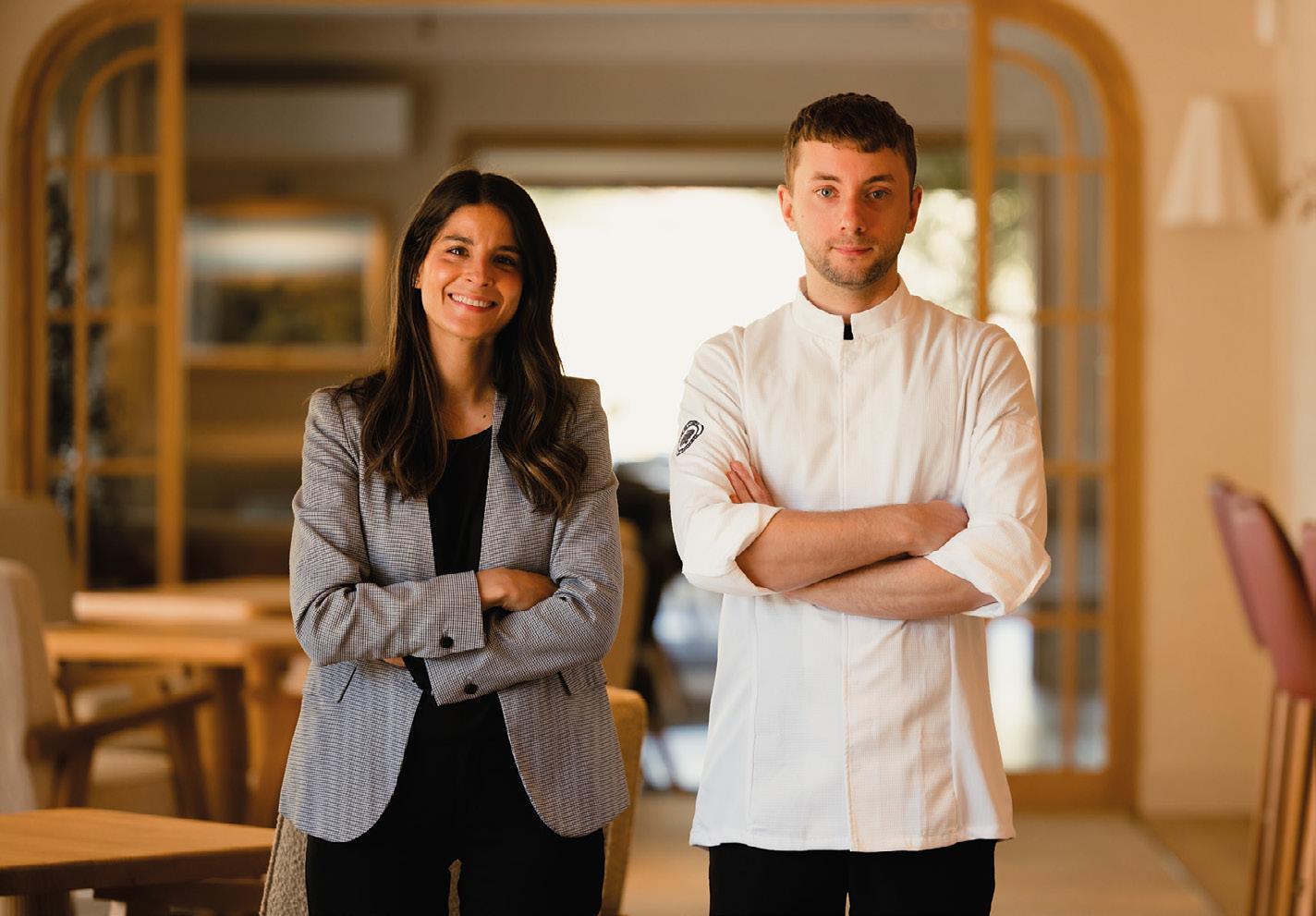

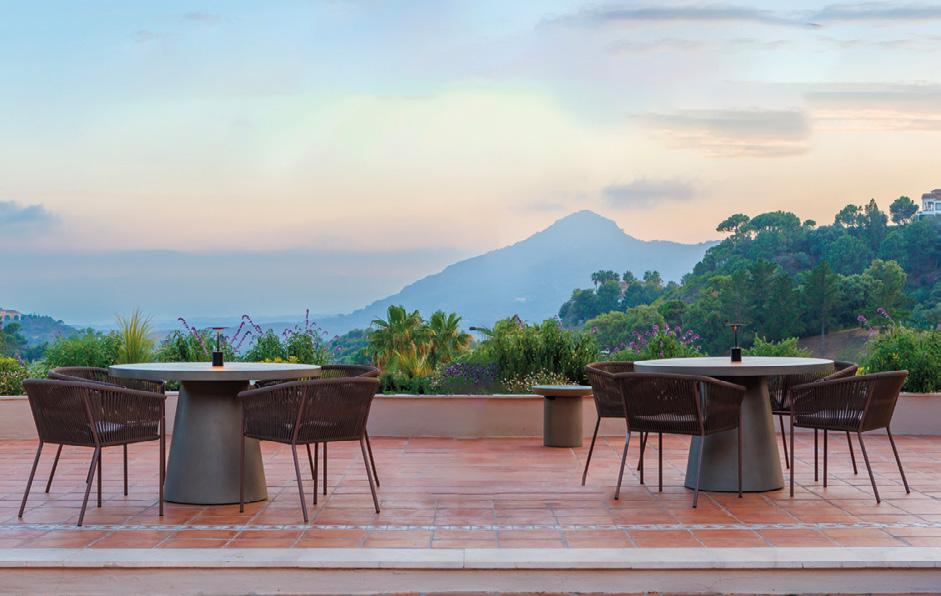
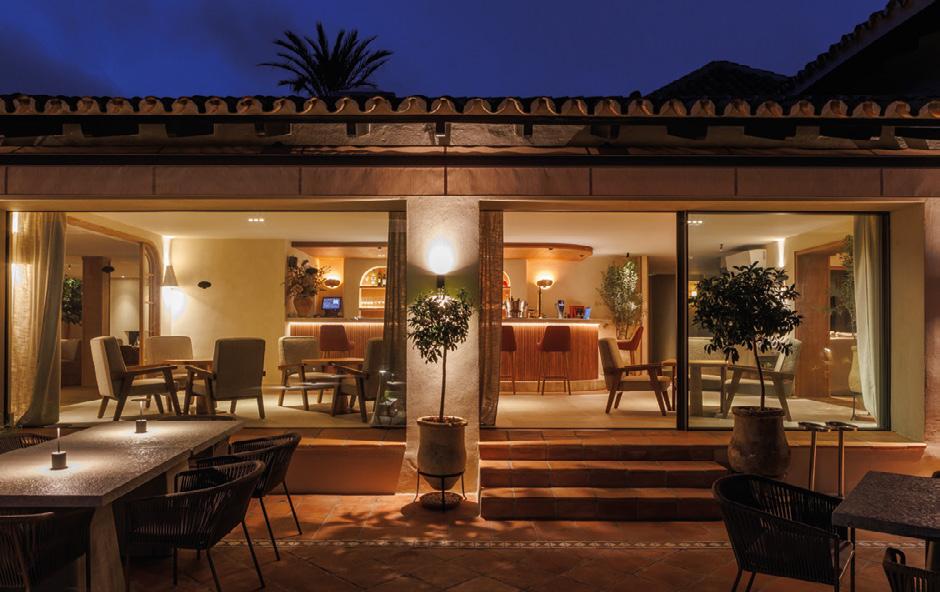

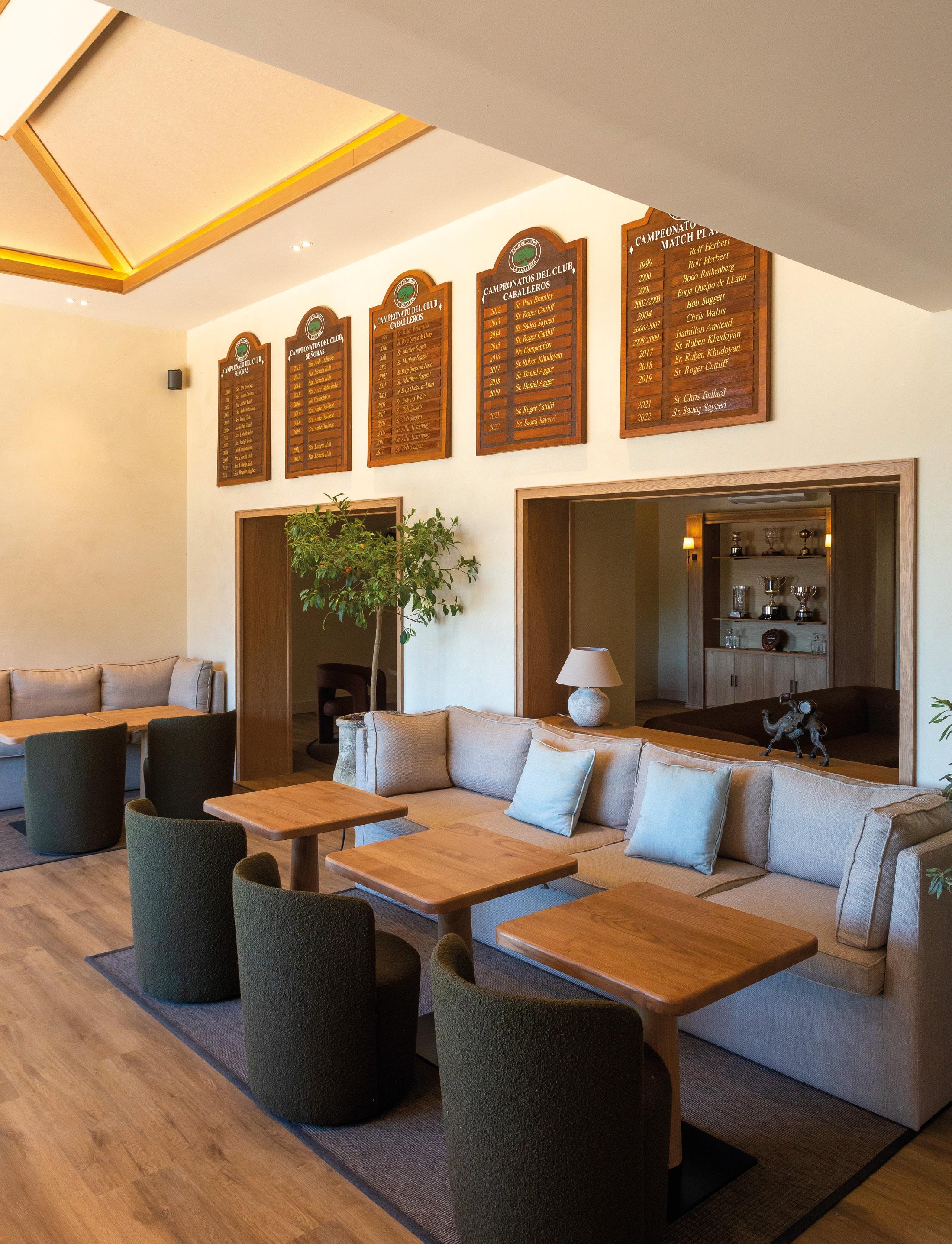
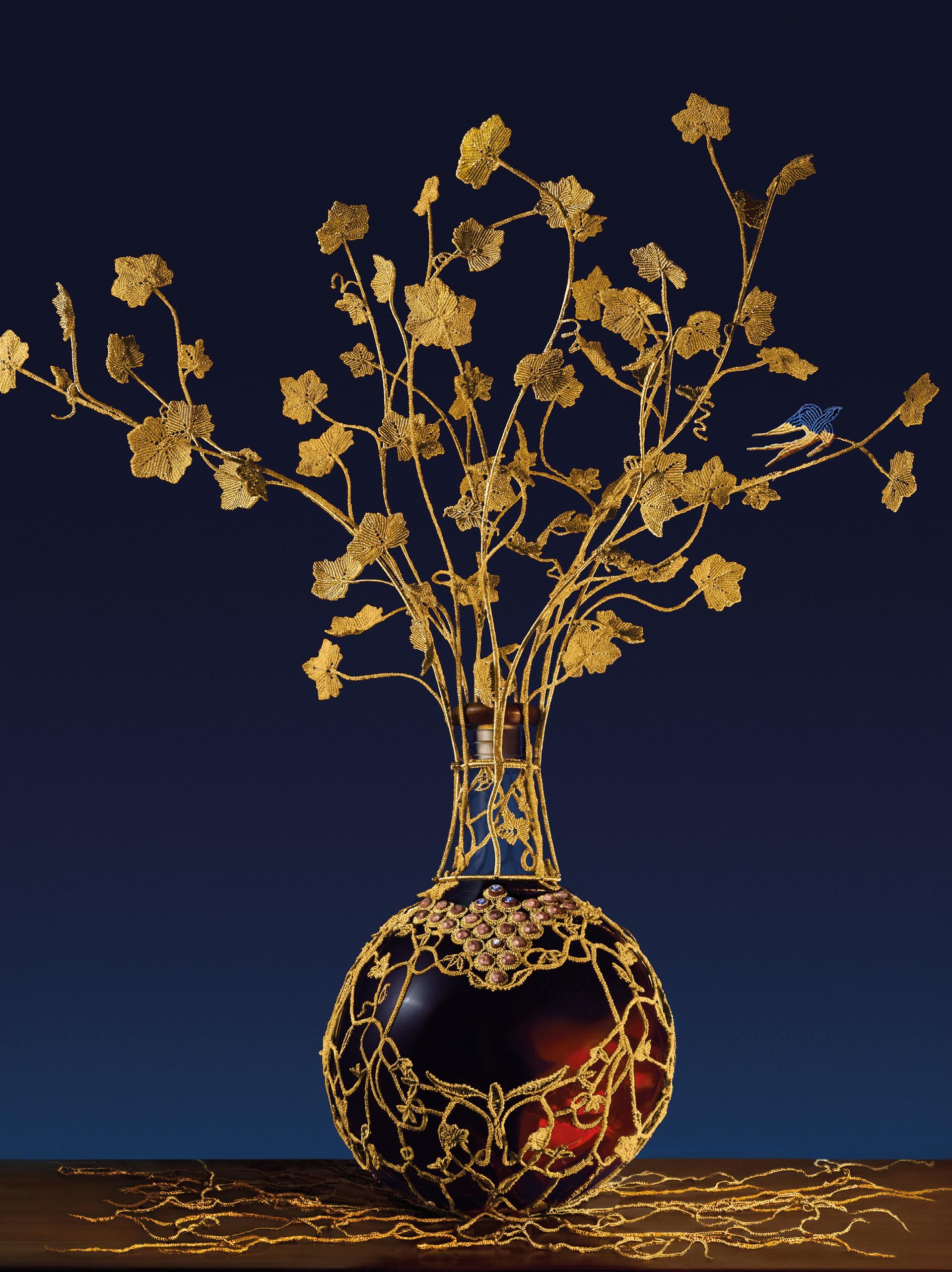
AN EXTREMELY RARE COGNAC
MAISON MARTELL UNIQUELY CRAFTED
By Christophe Valtaud
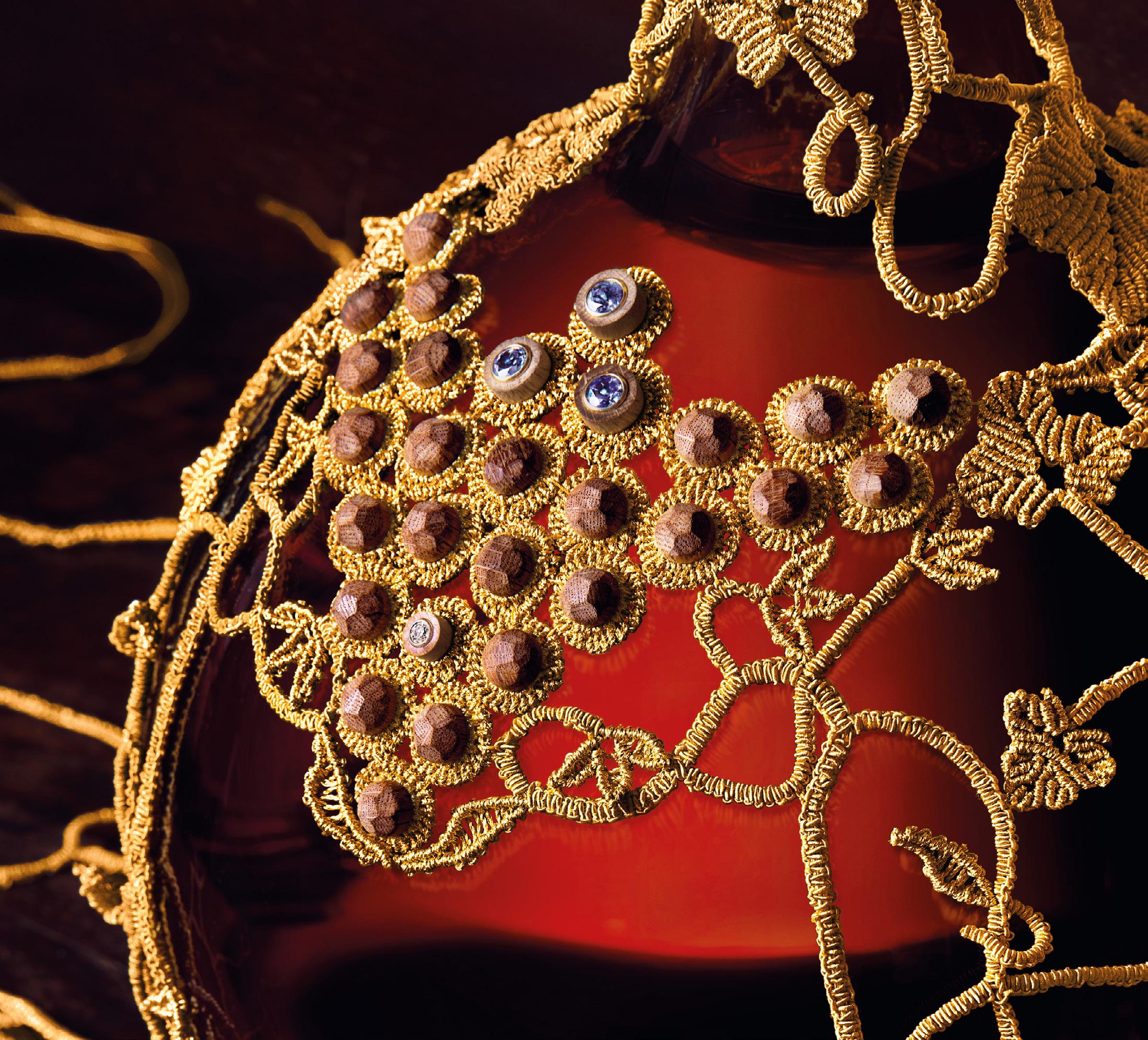
Maison Martell has announced Les Remarquables de Martell, a new collection taking cognac to a whole new level of luxury and exception. Each year, Maison Martell will release a single, precious masterpiece: an extremely rare cognac in a dame-jeanne transformed by an artist into a remarkable objet d’art. Every year, a new blend and innovative collaboration emerge. The first edition of Les Remarquables de Martell is valued at one million euros.
Incarnating the pinnacle of luxury, this new collection releases a single dame-jeanne of a singular cognac each year—in an exclusive edition of one. Neither the cognac, blended solely for each edition of this collection by Cellar Master Christophe Valtaud, nor the demijohn itself, a unique artwork created by a carefully selected artist, will ever be reproduced. Each release of Les Remarquables de
Martell is therefore truly one-of-a-kind.
For this premier edition of Les Remarquables de Martell, Cellar Master Christophe Valtaud selected just two exceptional eaux-devie, each distilled over 70 years ago. They were aged in the historic cellar at the Port du Lys, built by Jean Martell’s sons in the 18th century, and then stored in the archives of the Réserve du Fondateur, where only the most precious eaux-de-vie are kept. These rare eaux-de-vie, sourced from Grande Champagne, a single and most exceptional cru, are among the Maison’s oldest and rarest. Blended in perfect harmony, they offer a particular expression of Grande Champagne, one of the most prestigious terroirs of the Cognac region.
The first eau-de-vie, having spent longer in oak, is characterised by power, tension, and length on the palate, with prominent cedar
Exclusivity:
Only one individual will have the opportunity to acquire this first edition of Les Remarquables de Martell, a cognac more precious than gold. In doing so, not only will they acquire a unique artwork and an exquisite cognac, but also a suite of magnificently orchestrated experiences, curated especially for them. For this premier edition, the artwork, painstakingly crafted over hundreds of hours, as well as the cognac, representing 70 years of distillation and ageing, are only the beginning.
Bespoke blend:
If they wish, the acquirer will also be given the rare opportunity to further personalise the cognac as a truly bespoke blend. This will take place during an exceptional private tasting and unforgettable encounter with Christophe Valtaud.
Making it personal :
During the tasting, they will have the opportunity to add one or more rare eaux-de-vie of special personal significance to the blend, a remarkable opportunity for any cognac aficionado.
THE FIRST EDITION OF LES REMARQUABLES DE MARTELL :
an array of exceptional experiences for one privileged acquirer
A bespoke cabinet for showcasing: In addition to taking home the precious artwork that is the dame-jeanne, the acquirer will also receive a striking cabinet in which to showcase it. This cabinet – which can be personalised –houses bespoke accessories specially designed for an elevated tasting ritual: six Baccarat crystal glasses, a pipette for drawing the cognac from the dame-jeanne, beautifully embellished by artist Laurentine Perilhou with a macramé neck adornment, six montre bottles, and a pair of embroidered white gloves.
To complete the immersive one-of-a-kind experience of Les Remarquables de Martell, the client and 3 persons of their choice will be welcomed by Maison Martell in both Paris and Cognac with a series of prestigious, private experiences.
Encounters with the masters: The experiences offer in-depth explorations of the worlds of art, cognac and luxury, in the company of Laurentine Perilhou and Christophe Valtaud.
notes. The second is fresh and vibrant, with notes of honey, white blossoms, and candied fruit. While the former evolves from wood to fruit, the latter evolves from fruit to wood, thus creating the blend’s remarkable harmony.
“The essential joy of being with horses is that it brings us in contact with the rare elements of grace, beauty, spirit, and freedom.”
Sharon Ralls Lemon
French artist Laurentine Perilhou created her unique dame-jeanne for Martell using precious gold thread from the last manufacturer of its kind, located in Lyon, France. She transformed the gold thread into a magnificent, elaborate form, fashioning roots embellished with tiny gold nuggets, swirling tendrils that embrace the glass body of the dame-jeanne, and an explosion of lively leaves around its neck, all of which revealed a hidden swift, the Martell emblem, within. Three synthetic sapphires, echoing Martell blue, and a single diamond set in 22-carat gold adorn the design, while an ornament featuring 40 faceted jewels fashioned from 300-year-old oak evokes the centuries of Maison Martell’s own craftsmanship. To achieve her vision, Perilhou collaborated with two highly specialised artisans, a jeweller and a cabinet maker. In all, Perilhou spent over 800 hours crafting the piece.
Christophe Valtaud’s absolute mastery of the art of blending has produced a cognac that is extraordinary in two significant ways. Firstly, this marks the very first time that the Cellar Master has created a blend of such rare eaux-de-vie. Rather than highlight a single precious vintage, he has chosen to unite two, underscoring the particularly exceptional character of this remarkable creation. Secondly, it represents a true once-in-a-lifetime blend, existing in one single-edition release that will never be reproduced.
To bring to life the first edition of Les Remarquables de Martell, the Maison has commissioned French artist Laurentine Perilhou, who has elevated the craft of macramé into exquisite art.
Her work is precise and painstaking. Using no other tools besides her own two hands, she creates precious and original pieces— jewellery, decorative objects, artwork—and has collaborated with some of France’s most prestigious houses of haute couture. For Martell, Laurentine has created an ode to nature and the terroir of great cognac.
Made with real gold thread, Laurentine’s creation represents the vine’s journey as it draws vital energy through its roots to produce the vigorous shoots that bring forth Martell’s precious cognac grapes. In her words, “My aim was to make the invisible visible… from the Earth to the Sun, from the roots in the soil to the vine leaves turned upwards to the light.”
After debuting on December 1st at the Pavilion Bukit Jalil in Kuala Lumpur, Malaysia, this singular dame-jeanne has been showcased for a monthlong pop-up exhibition before embarking on a journey across Asia so that viewers may admire this extraordinary objet d’art.

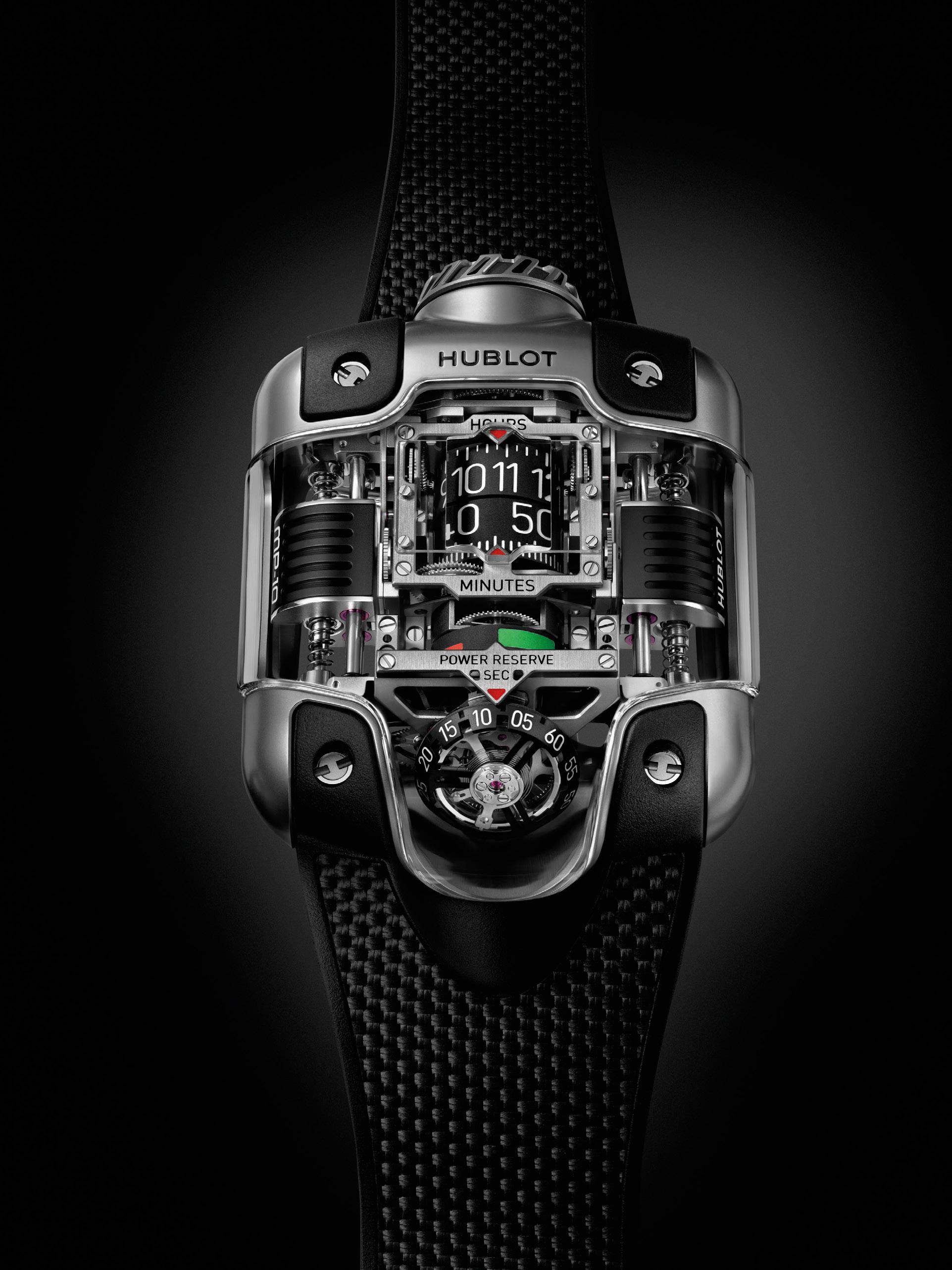
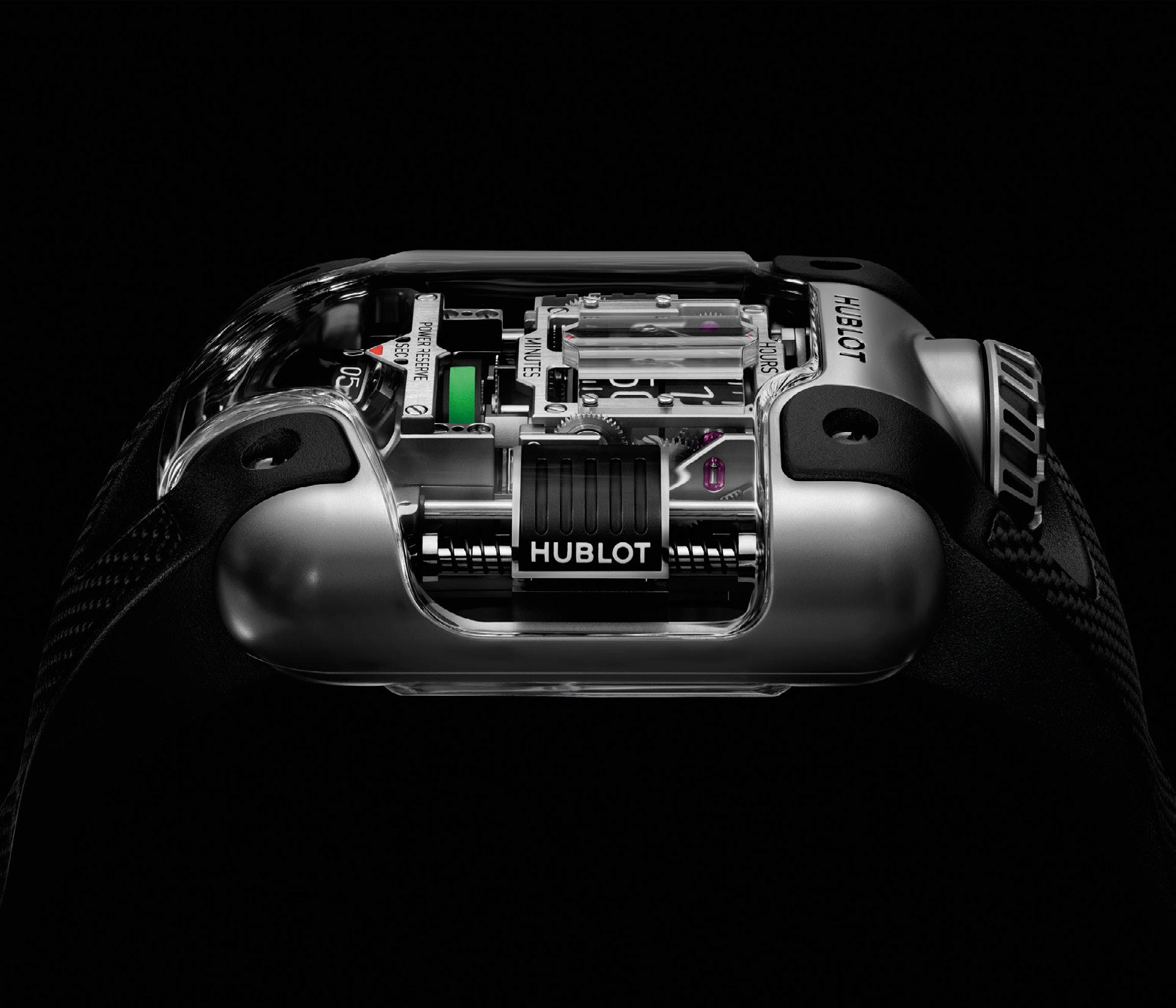
The announcement of a new Manufacture Piece (MP) is always eagerly awaited at Hublot.
This MP-10 Tourbillon Weight Energy System Titanium will be no exception. The piece is immediately arresting. With its rounded angles, sleek design and sapphire crystal of unparalleled complexity, it houses a movement which is no less sophisticated. A fusion of form and substance. The mechanical and aesthetic power are inseparable – one of the key concepts guiding the MP collections.
And at the point where they intersect, the Manufacture offers a bold reinvention of the classic watchmaking complications. These are avant-garde pieces which are resolutely disruptive in their movement, display and complications. But they are neither concepts nor exercises in style. Like all the other MPs, the MP-10 Tourbillon Weight Energy System Titanium is a complete, accomplished and practical watch that will soon adorn the wrists of a select few collectors.
The Manufacture’s tenth MP revisits the fundamentals of watchmaking: no dial, hands or oscillating weight, instead a roller display, a circular power reserve and an inclined tourbillon automatic winding by two linear weights.
Instinctively, we seek to characterise the piece in a time-honoured way. Firstly through the figures, which make for an impressive reading: 592 components, 5 years of R&D, 2 linear weights, 1 inclined tourbillon, and a circular power reserve for a model to be produced in a limited edition of just 50 pieces. Next, its indications. Here, things get a little more complicated: The MP-10 has no hands. In their place are four constantly rotating displays: the hours and minutes in the upper third of the dial, combined with an invisible magnifying glass; the circular power reserve in the central third, with a very clear green zone and red zone; and the seconds in the lower third which are indicated directly
on the tourbillon cage. It is made from monobloc aluminium, suspended and inclined, and a patent application is pending for this unique mechanical configuration. The piece has no dial: Hublot has fused the calibre with the dial. The movement is the face and soul of the watch. The gaze is drawn directly to the mechanism to read the time. The MP-10 features a highly architectural design and a particularly expressive movement built around volume and depth. Yet, this in no way interferes with reading. Instead, it makes it simpler. The time is read from top to bottom, fluidly and naturally. The power reserve is particularly expressive, with a two-tone disc (red and green) set coaxially to the hours and minutes.
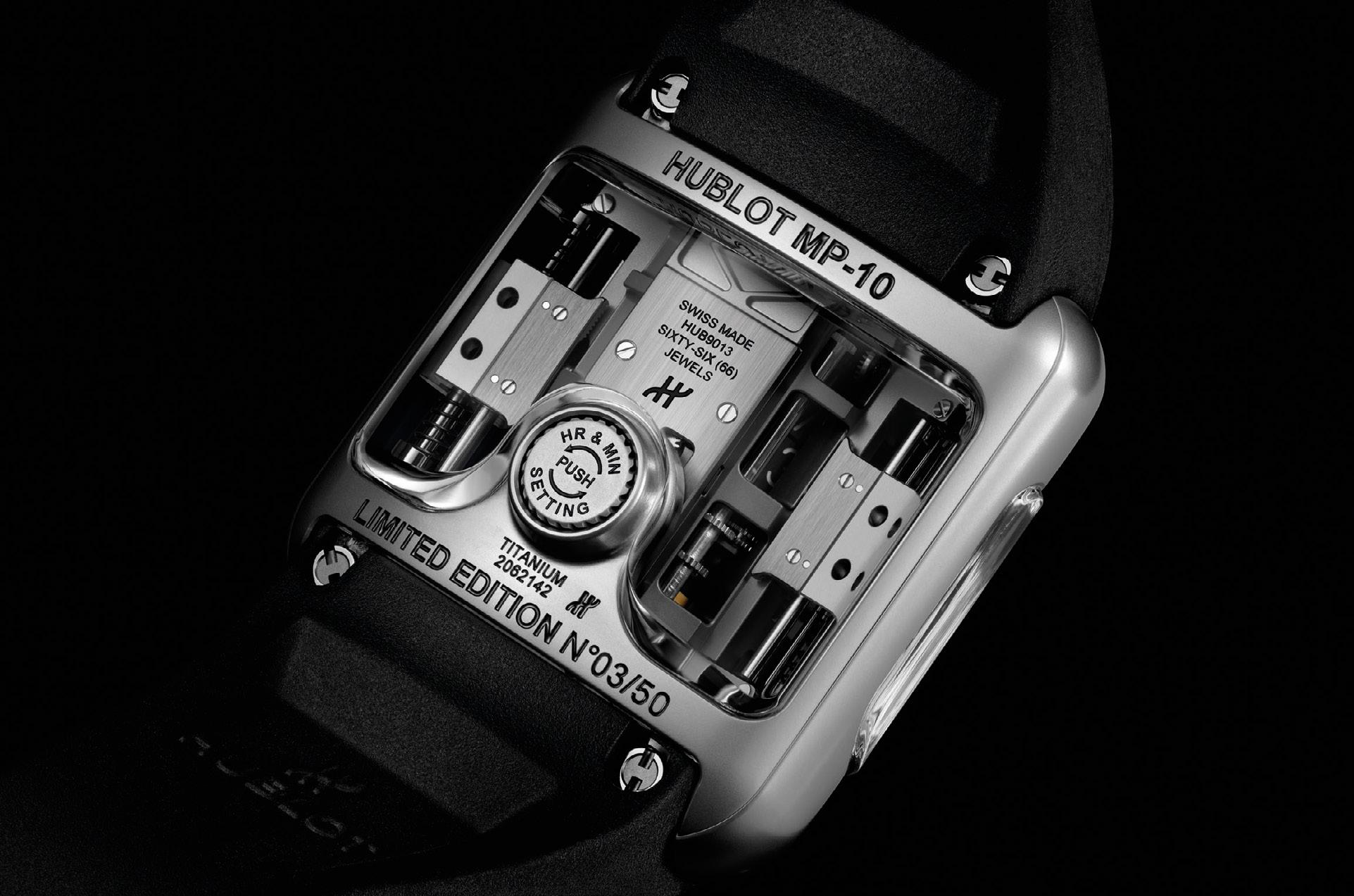

This design eliminates the traditional space constraints, which are usually dictated by a central display in a horizontal plane. The MP-10 can be easily read vertically: hours, minutes, power reserve then seconds. The movement of the eye is fluid and natural. The indications are aligned. They share the same white lacquer typography on black aluminium rollers. For each indication, the current time is read via a red triangular marker. Its winding system follows the same logic. A traditional movement is formed of a flat dial paired with an oscillating weight on the case-back side. However, this type of construction is incompatible with the

MP-10. The piece has no dial or hands, it is not flat, and it is read vertically. So, how is it wound? The engineers at Hublot retained the weight principle but verticalised it, just like the movement, and then duplicated it. On either side of the central architecture sit two blocks of white gold, arranged on a vertical axis along which they are free to move. To prevent them from colliding with the banking, Hublot developed a system of shock absorbers. These two vertical weights engage a rack and can wind the movement bidirectionally – an exclusive Hublot development for which a patent is also pending.
The exterior is finally on a level with the movement. While the case construction is simple (two pieces, middle and case-back in shiny micro-blasted titanium), the sapphire crystal atop it is Hublot’s most complex to date and combines inclined planes on three axes. The same applies to the integrated rubber strap – also the most refined ever designed by the Manufacture.
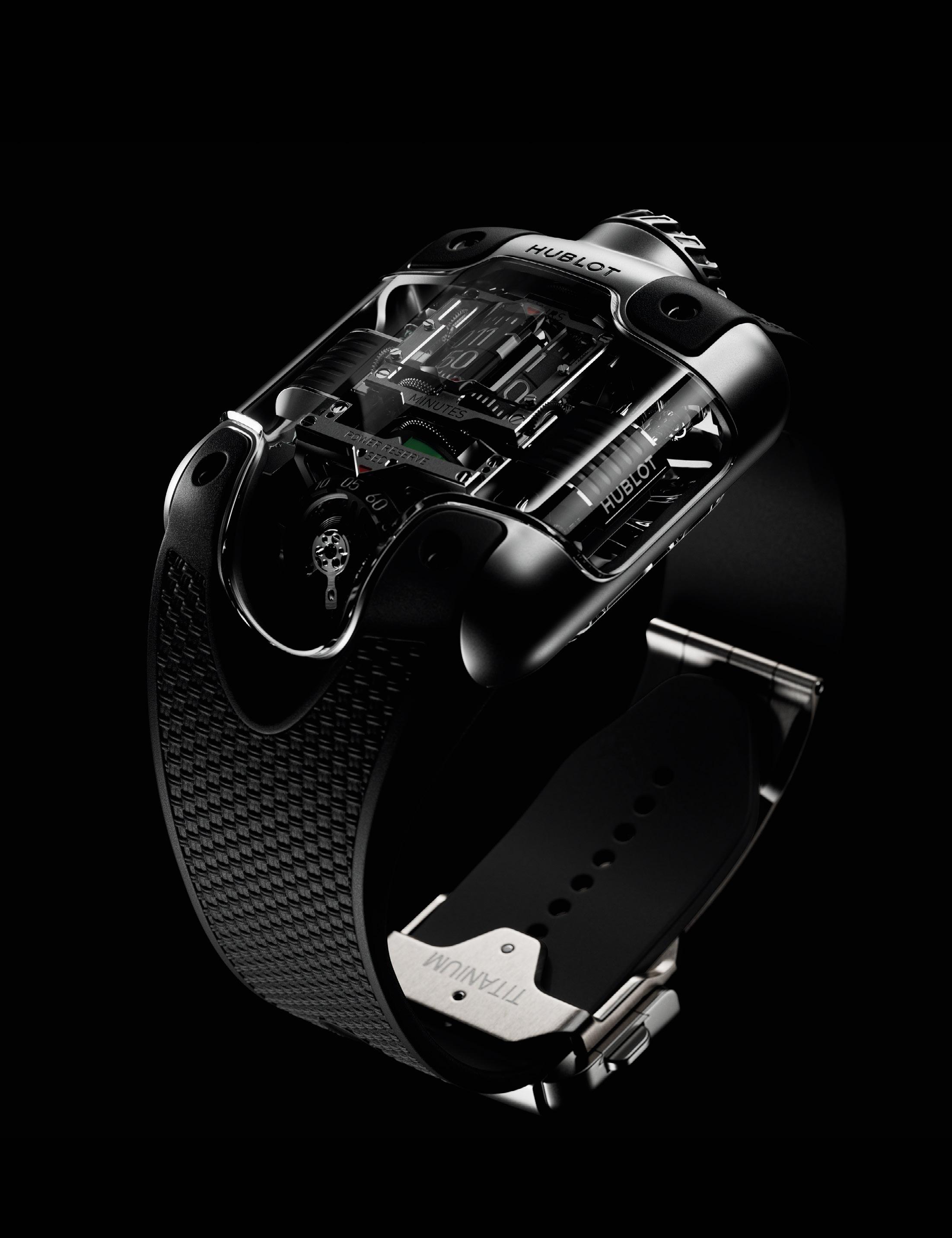
system of shock absorbers has two vertical weights that engage a rack and can wind the movement bidirectionally, which gives the MP-10 a power reserve of more than 48 hours. The watch is wound manually via the crown at 12 o’clock, while the time is set using a second crown nestled on the case-back side to preserve the fluidity of the design.
The Manufacture’s new MP revisits the fundamentals of watchmaking: no dial, hands or oscillating weight, instead a roller display, a circular power reserve and an inclined tourbillon automatic winding by two linear weights.
It features a HUB9013 Manufacture Self-winding Power Reserve and Skeleton Tourbillon inclined at 35° movement. The dial exposes hours, minutes, and power reserve: indicated by Anodized Black Aluminium Cylinders. Seconds Indicated by Anodized black aluminium Fastened on the Suspended Tourbillon.
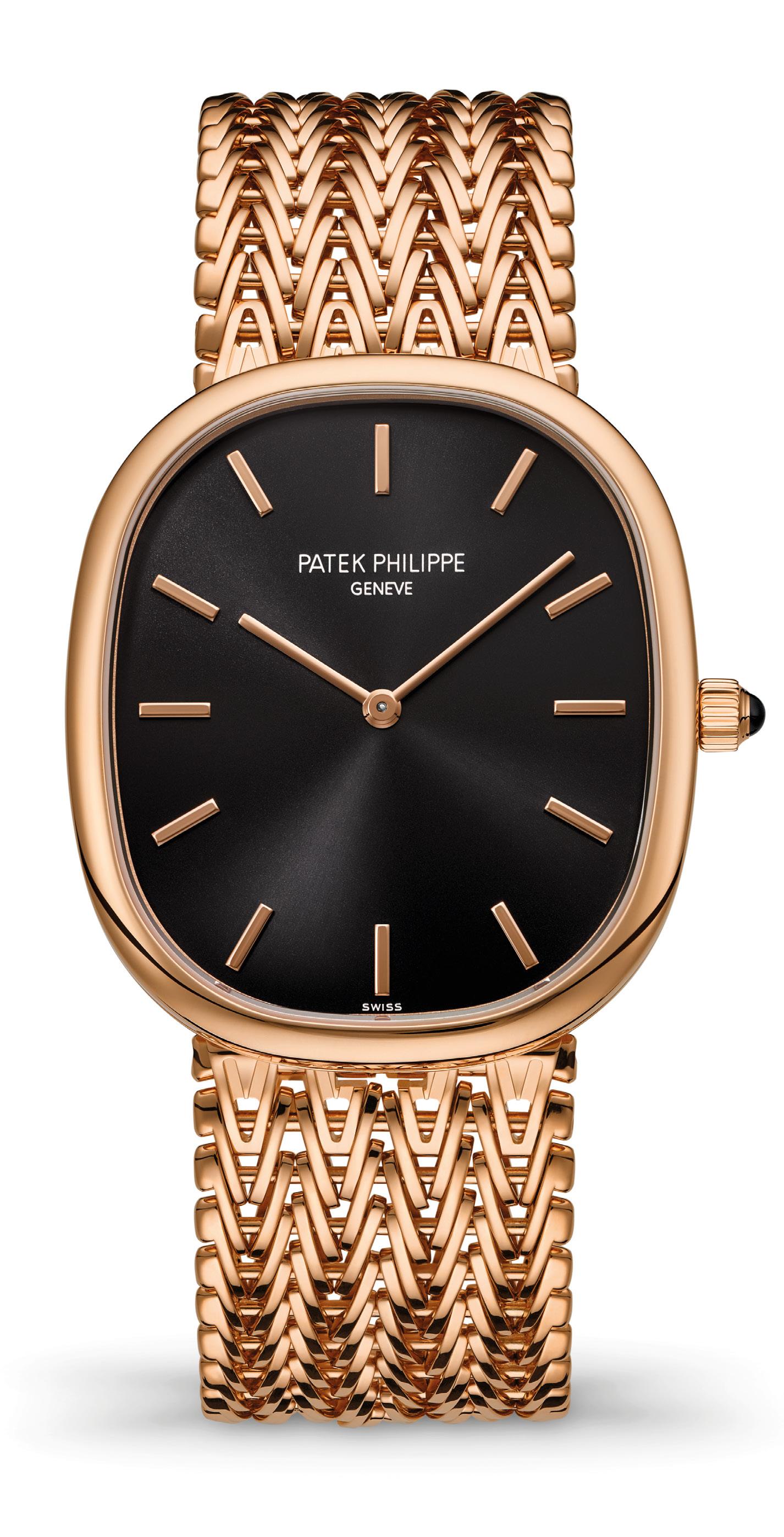
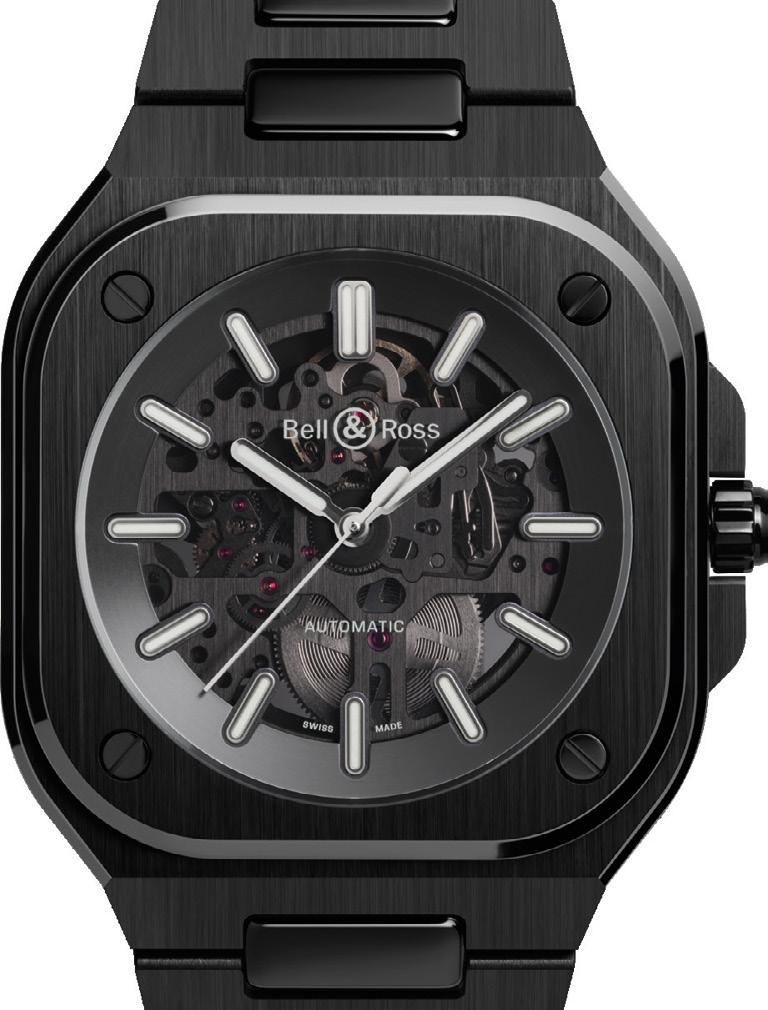
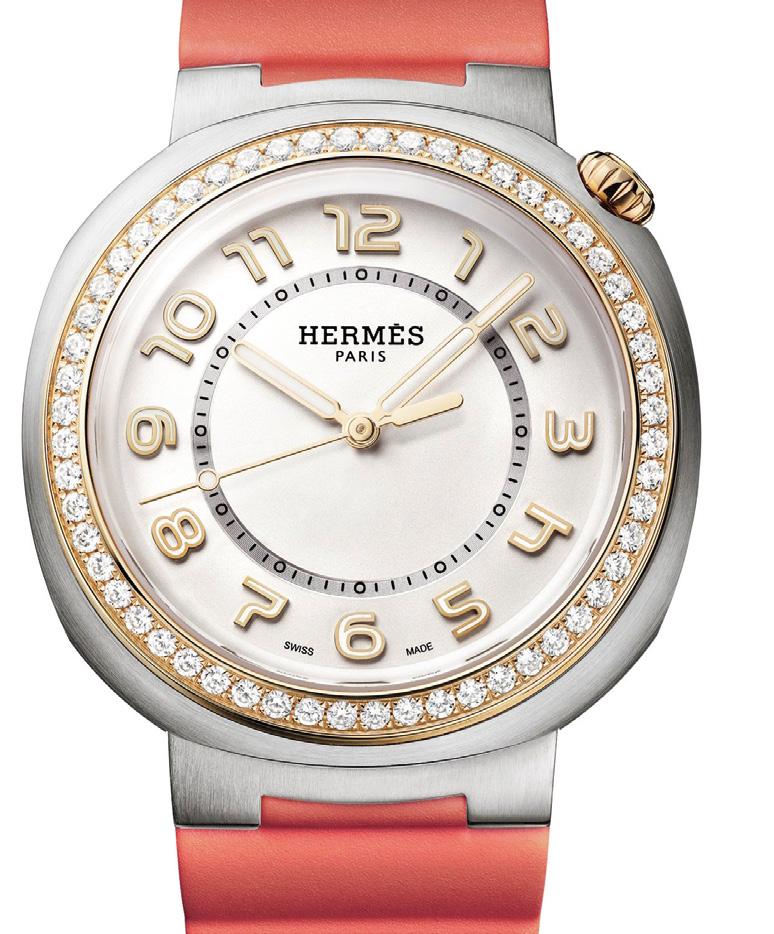
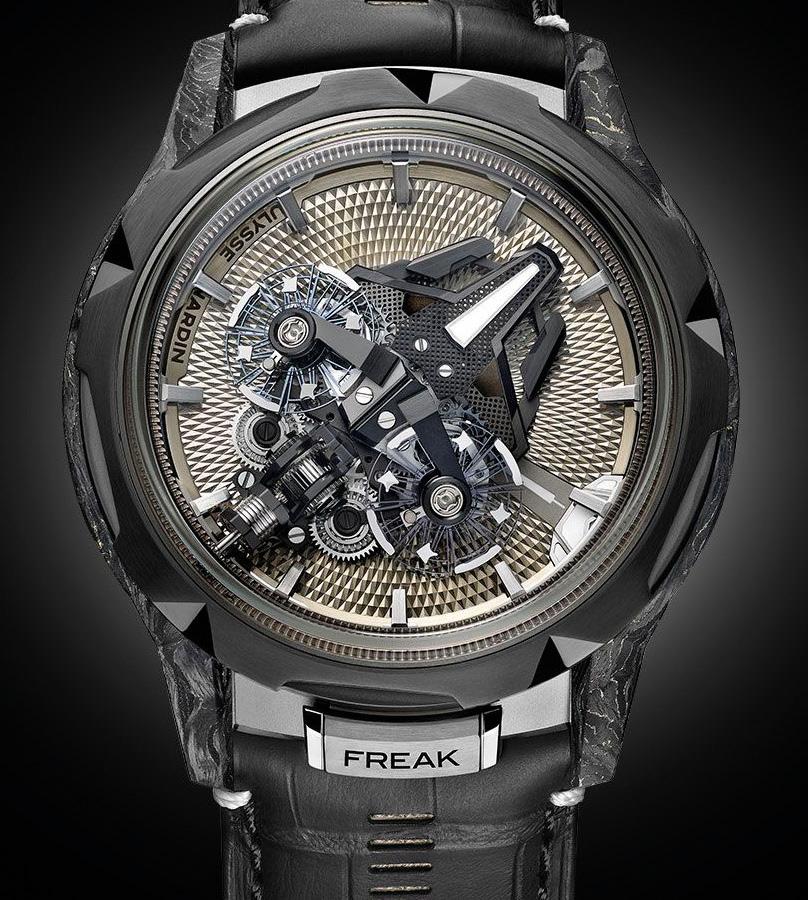

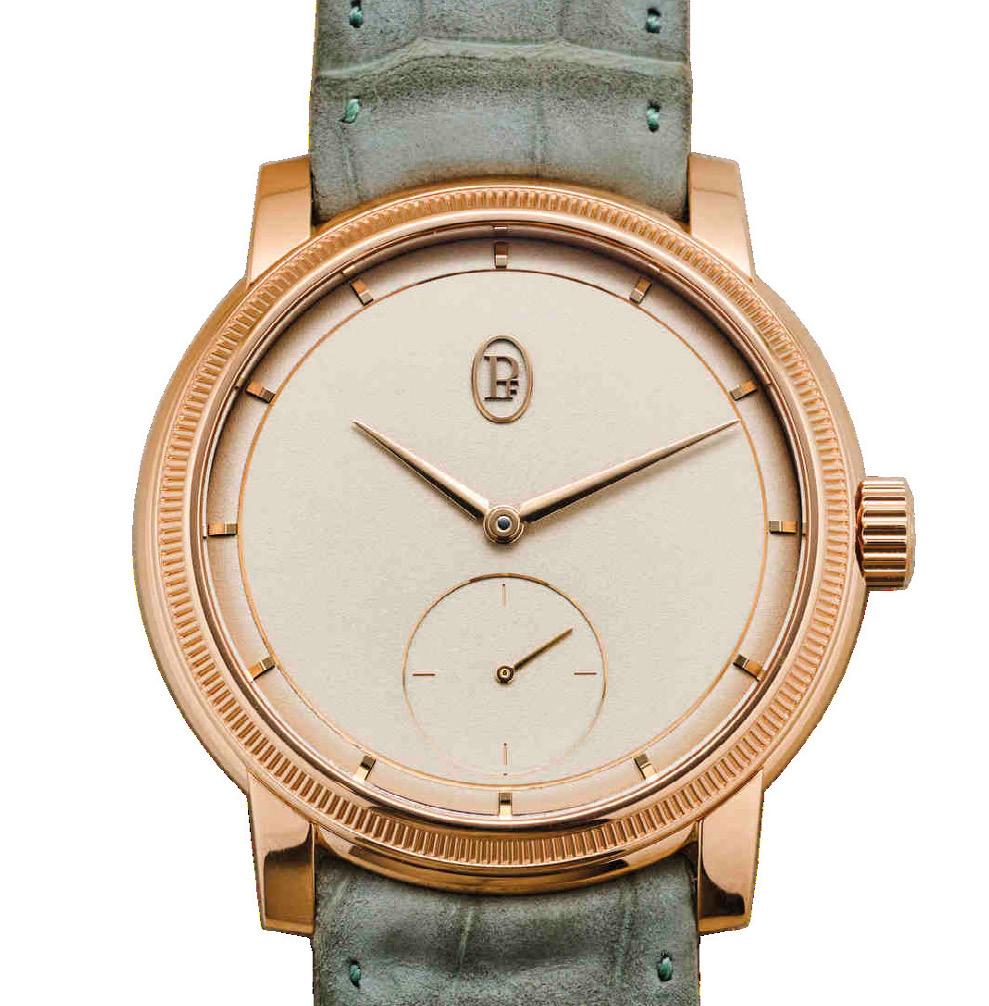
Among the plethora of creations showcased at Watches and Wonders Geneva 2024, several stood out for their technical characteristics and complications.
HUBLOT showcases the MP10 Tourbillon, void of dial, hands, or oscillating weight and featuring a groundbreaking weight energy system, as well as the MP11, boasting seven barrels set at 90° to the movement and a 14-day power reserve. The PATEK PHILIPPE Golden Ellipse Ref. 5738, a timeless classic reimagined with modern elegance, showcases its first metal bracelet. The fully polished rose gold chainstyle bracelet features 363 elements, with over 300 links individually
HUBLOT MP10
Tourbillon Weight Energy System Titanium


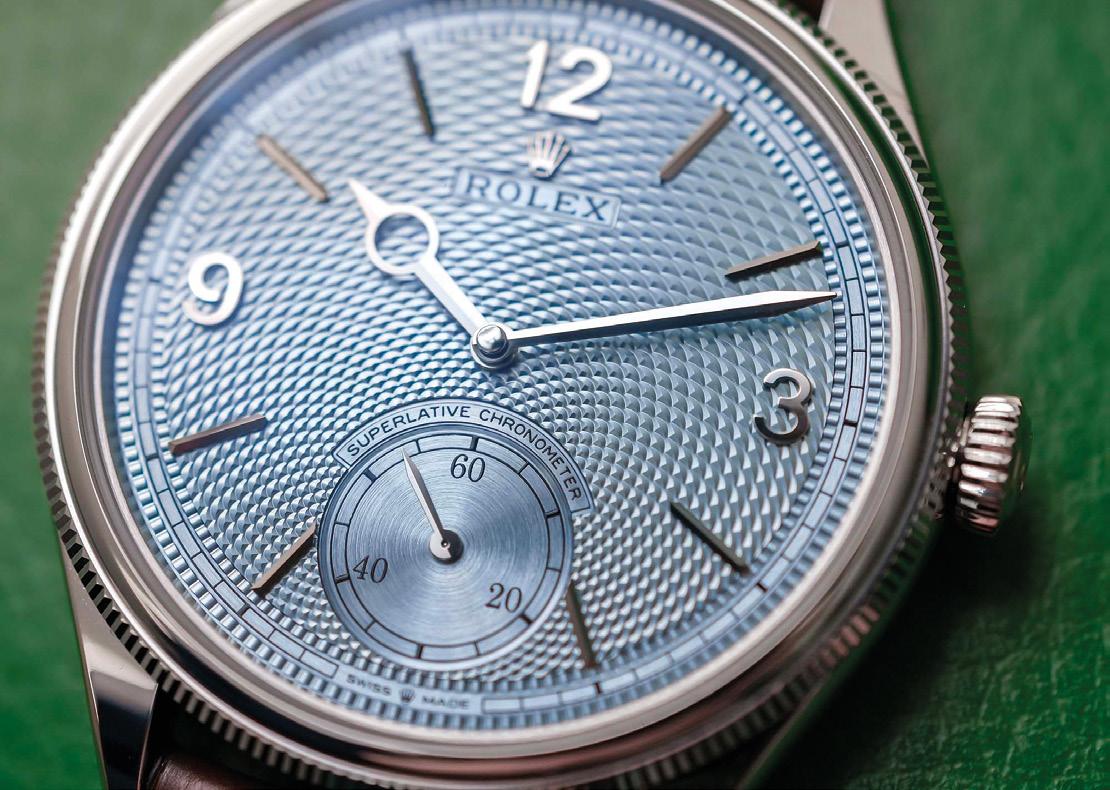
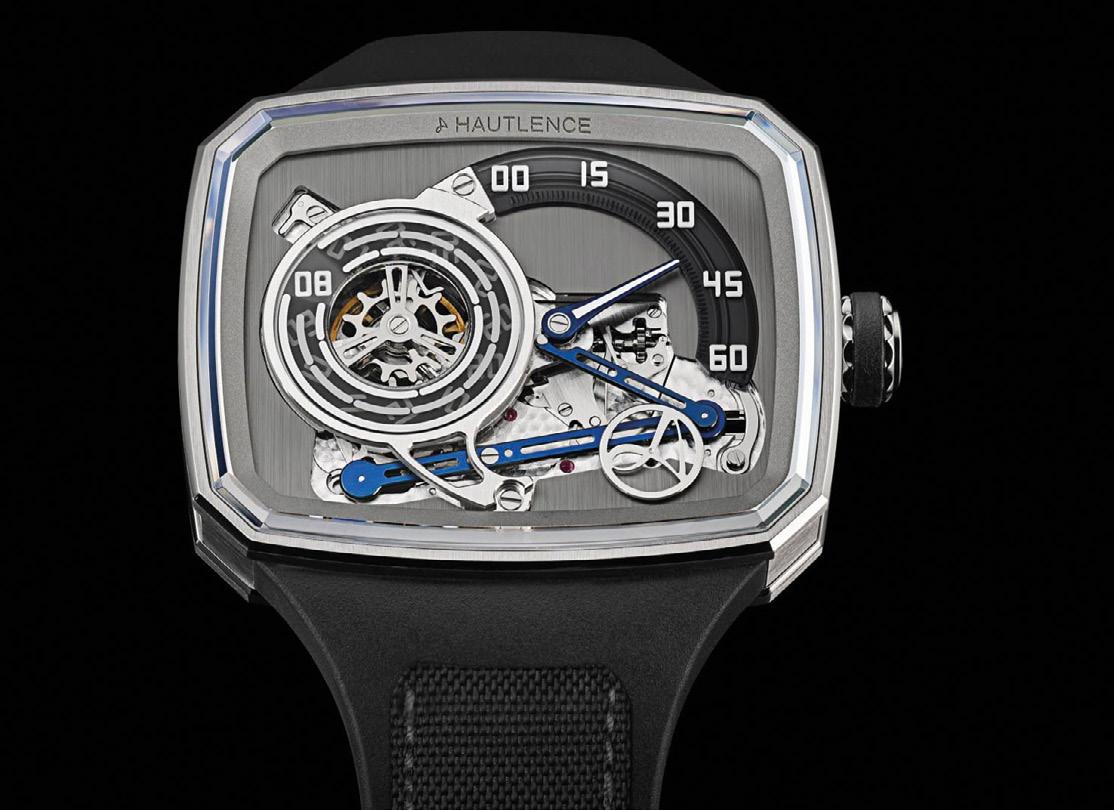
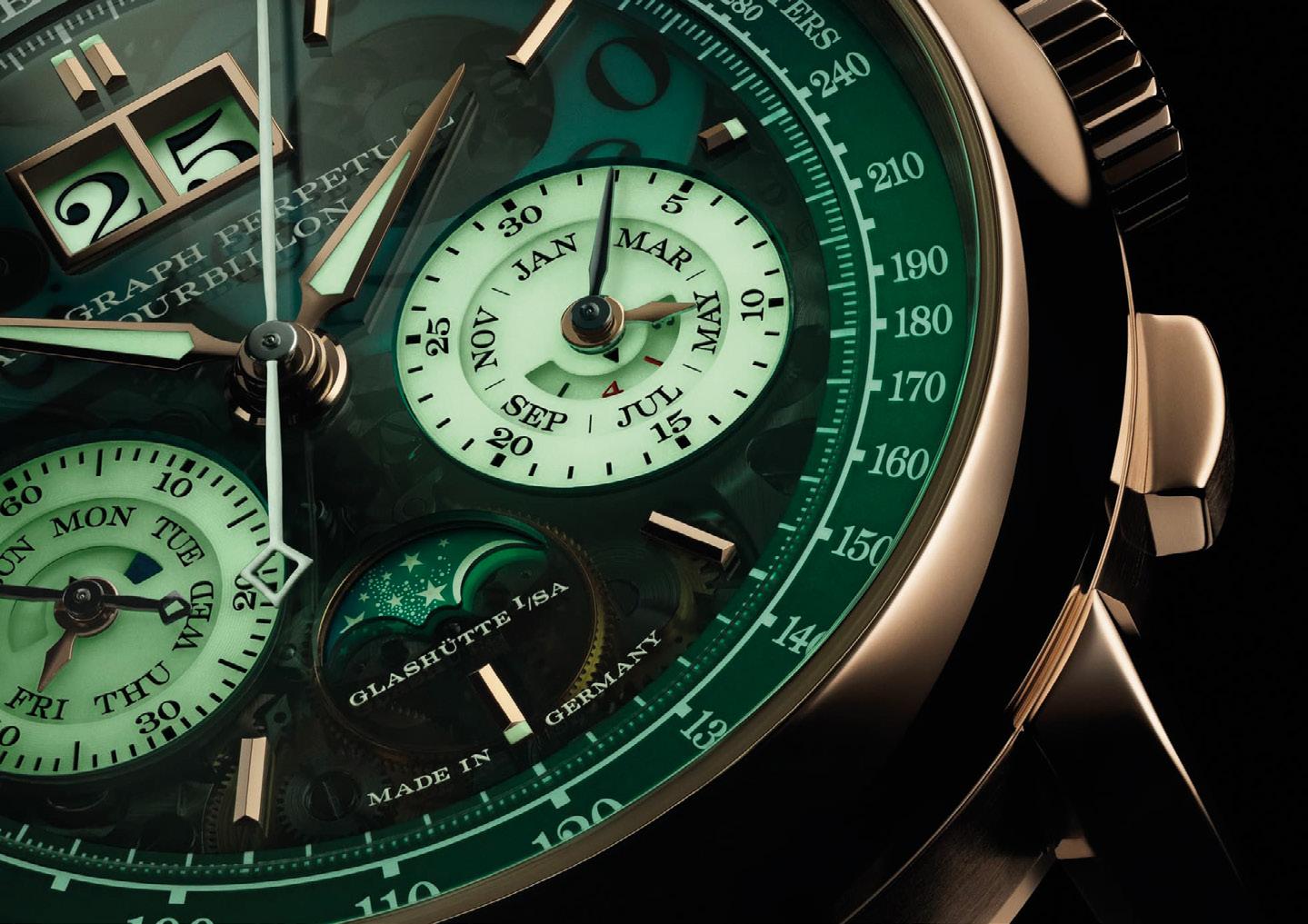
A. LANGE & SÖHNE
Datograph Perpetual Tourbillon Honeygold “Lumen”

Top left: The Datograph in Lange-exclusive honey gold and as a “Lumen” combines a flyback chronograph with a precisely jumping minute counter, a perpetual calendar with an outsize date, and a tourbillon with a stopseconds mechanism, that makes it possible to stop the tourbillon at will and set the watch to one-second accuracy.
Left: ARTYA Purity
Stairway To Heaven escapement is the star: placed on the ‘Stairway to Heaven,’ it is suspended in mid-air.
hand-mounted. The PARMIGIANI Toric Petite Seconde introduces a new all-gold in-house manufacture movement with a deliberately modernist design. BELL & ROSS BR 05 Skeleton Black Ceramic has a slightly increased size thus becoming, for the first time, an automatic BR 05 with a 41 mm case. The new HERMÈS Cut automatic watch, a circle in a round case, is enhanced by the subtle interplay of its satin and polished finishes. ULYSSE NARDIN Freak S Nomad’s hour disc features a diamond guilloché pattern finished in sand-coloured CVD; the painstaking method behind it takes years to learn and perfect. The 355 components of the CHANEL J12 Automaton Calibre 6 bring Mademoiselle’s silhouette to life inside a meticulously articulated 5-layer setting with the simple push of a button—a true technical feat. ROLEX brings classicism to the future with the Superlative Chronometer certification of its elegant Perpetual 1908 and remains faithful to the globe-trotters with the new GMT-Master II, where the 24-hour hand displays the “home” reference time in a first time zone. The TV-shaped HAUTLENCE HLXX 20th anniversary limited edition has jumping hours and retrograde minutes. The exclusive Chopard Quattro technology’s four barrels ensure up to eight days of power reserve, making the CHOPARD L.U.C Quattro Spirit 25 one of the rare jumping-hour watches to enjoy such autonomy. A dynamic homage to TAG HEUER’s storied racing DNA, the Monaco Split-Seconds Chronograph features the highly sophisticated splitseconds complication and light and complex Calibre TH81-00, crafted in grade-5 titanium. The Portugieser Eternal Calendar, IWC SCHAFFHAUSEN’s first secular perpetual calendar, automatically
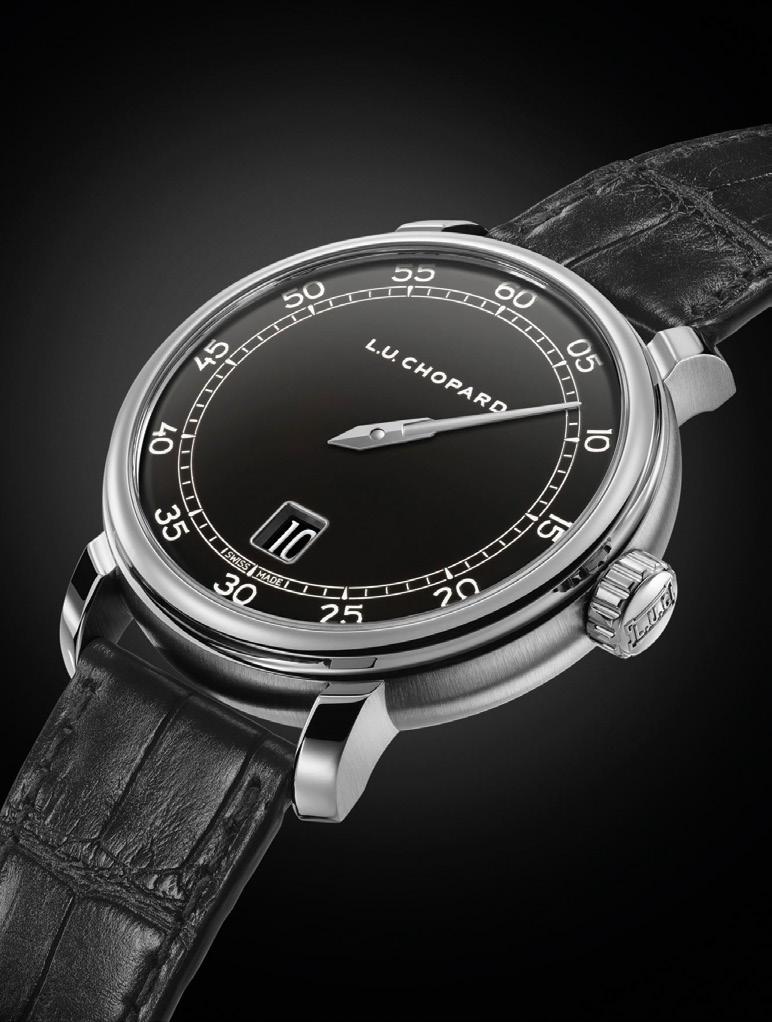
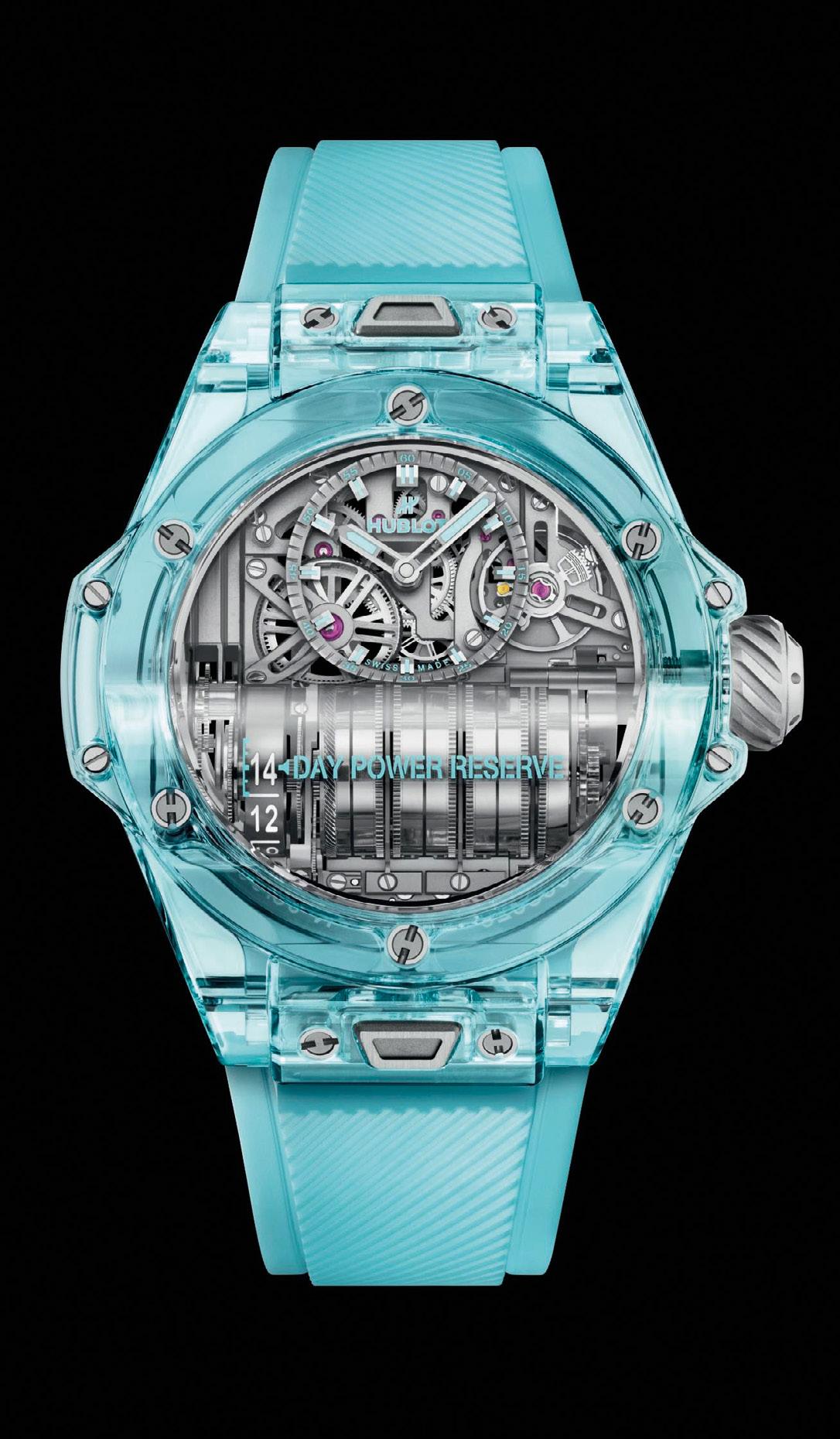
Big Bang MP-11
Power Reserve 14 Days
Water Blue Sapphire



takes into account the Gregorian calendar’s leap year exception rules by skipping three leap years over 400 years. It also features a moon phase display with an accuracy of 45 million years. A faithful reproduction of the first ZENITH DEFY diver’s watch from 1969, the DEFY Revival A3648 is water-resistant up to 60 ATM (600 metres). The PIAGET Altiplano Ultimate Concept Tourbillion, a feat of micro-mechanical engineering that remains one of the world’s thinnest timepieces today, appears to possess all the features of an everyday watch, but its 2 mm thickness and annular tourbillon make it extraordinary.
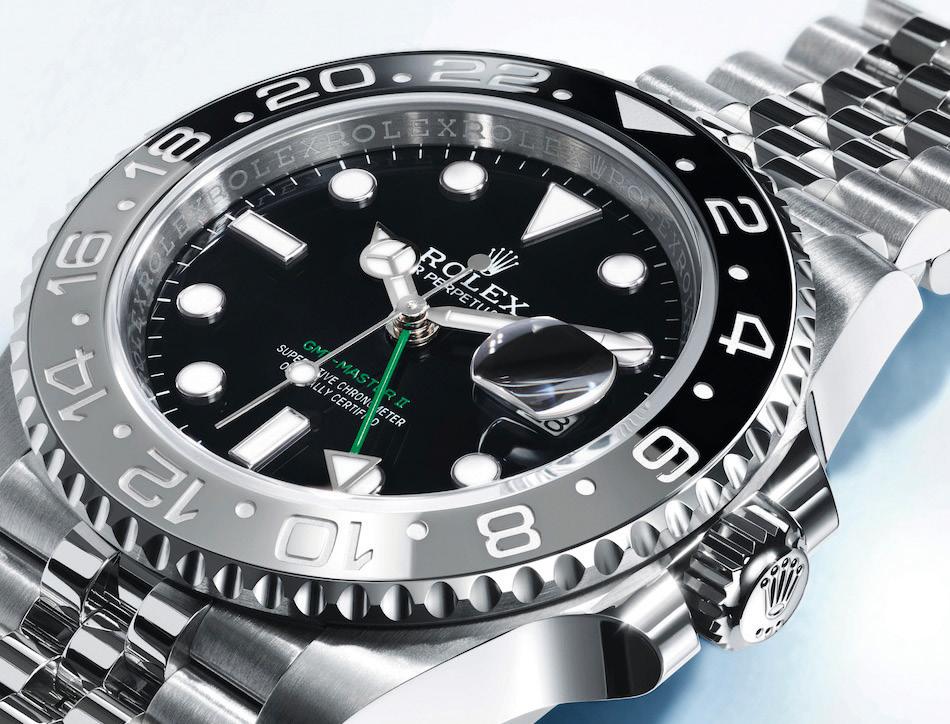
GMT-Master II
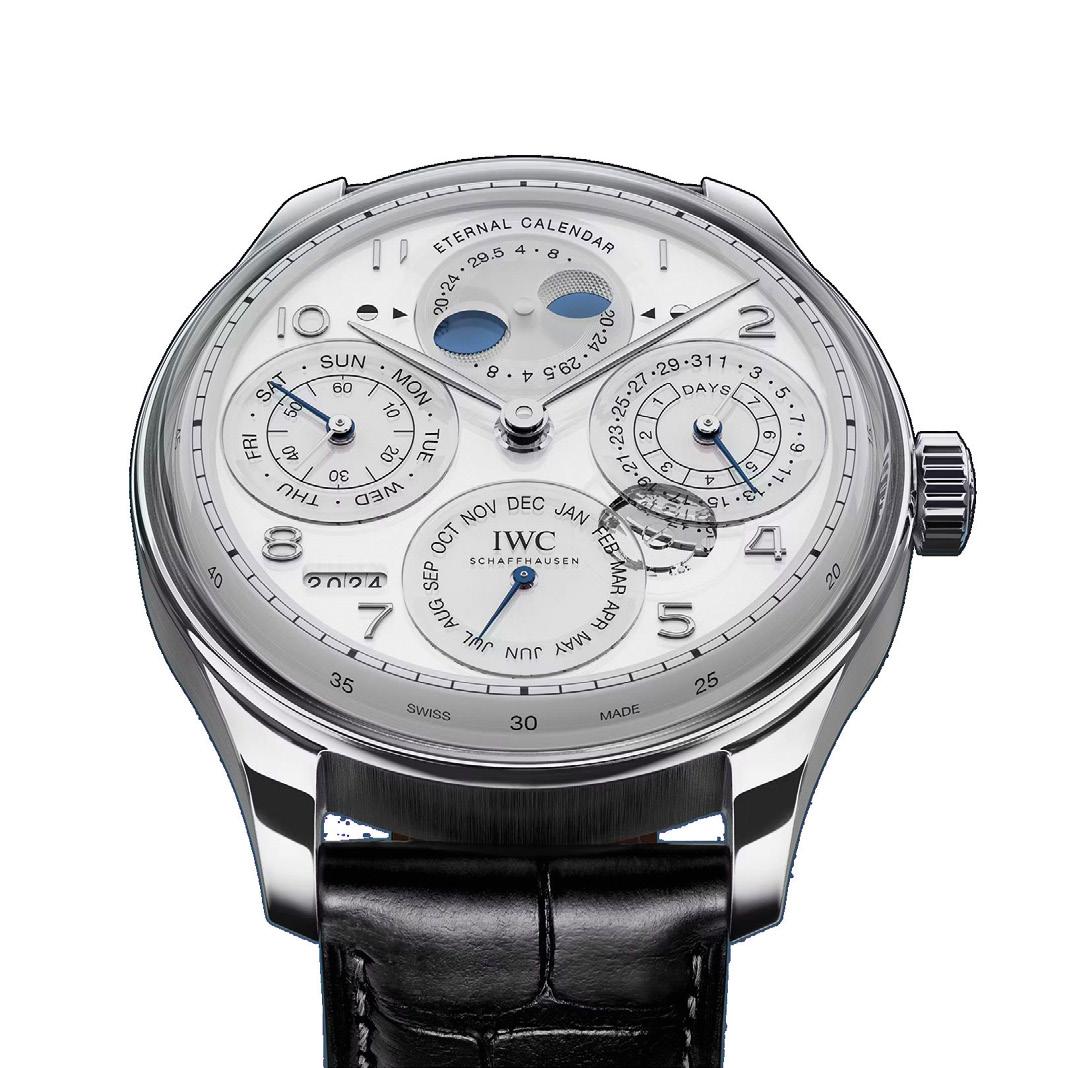
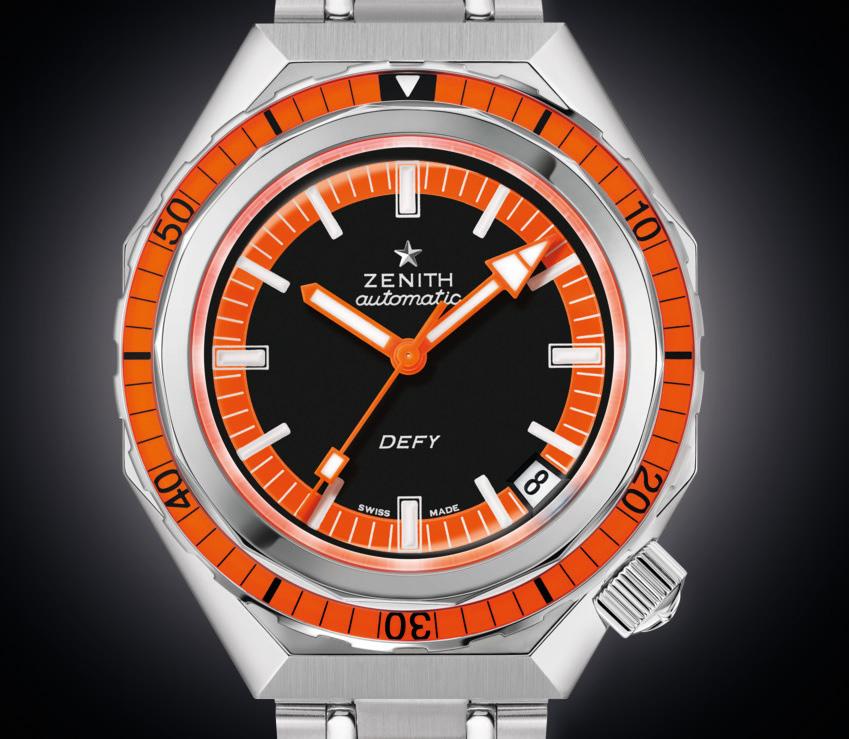
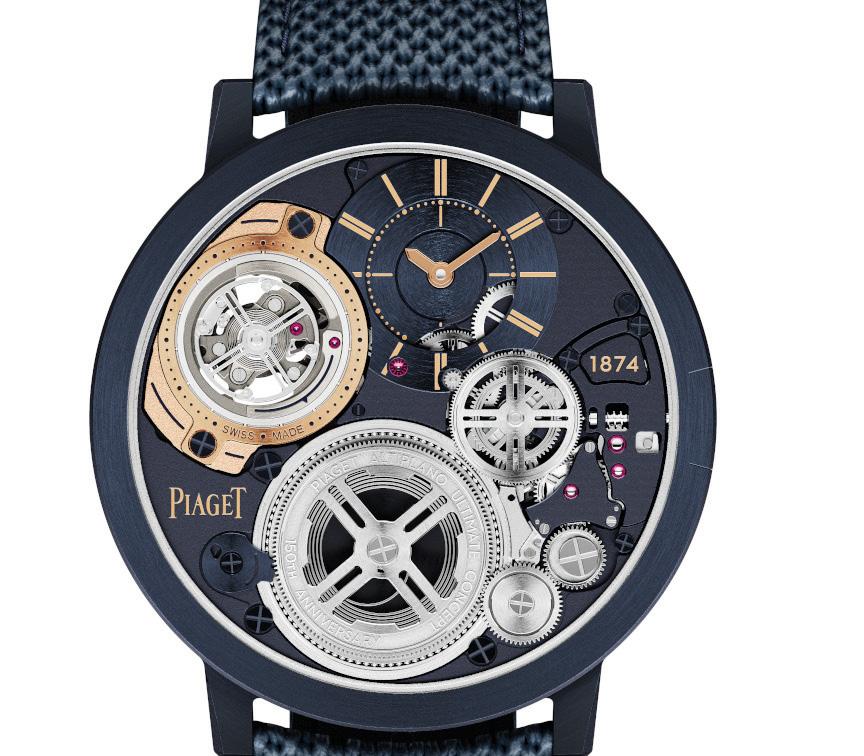
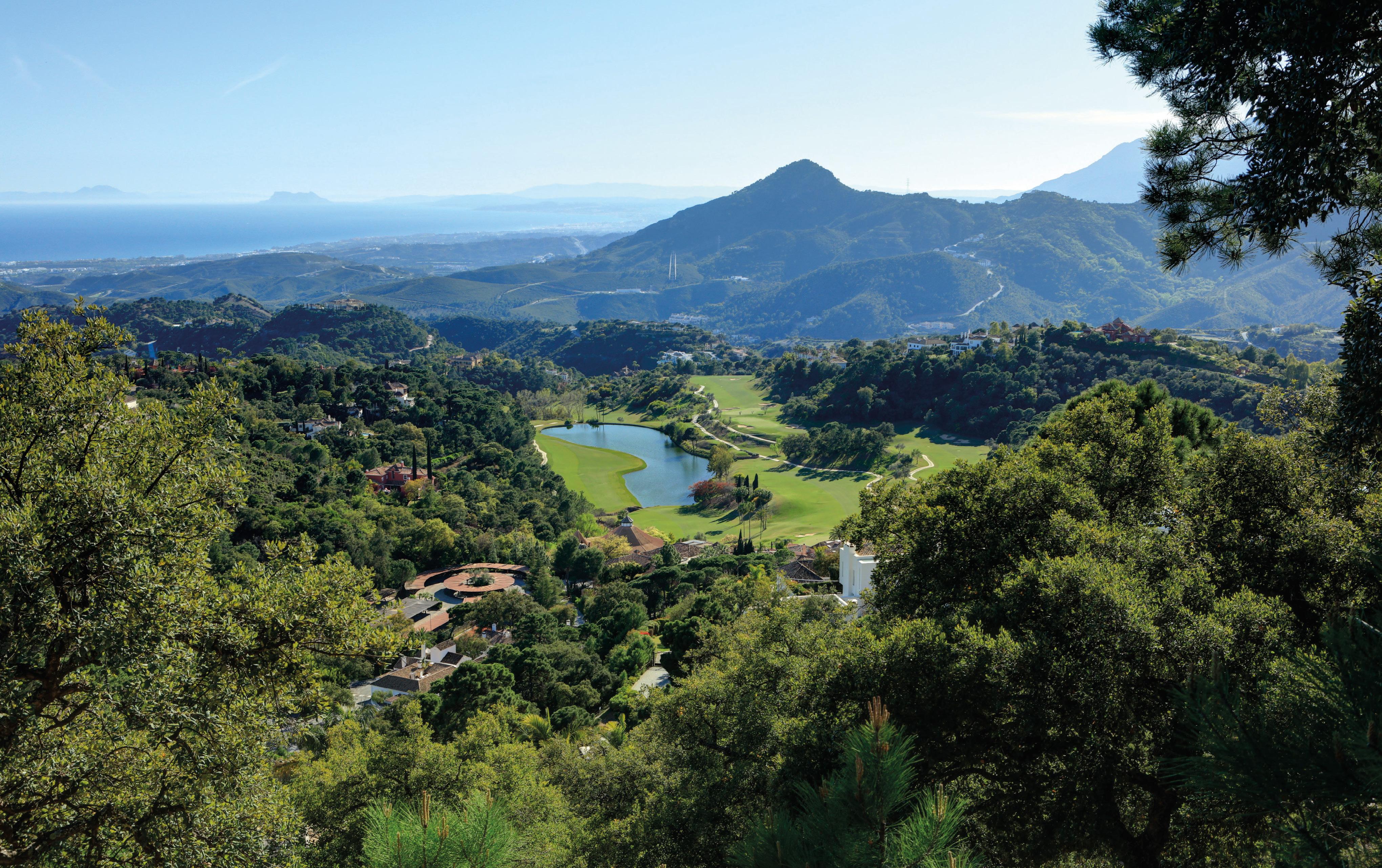

a throughjourney our estate.
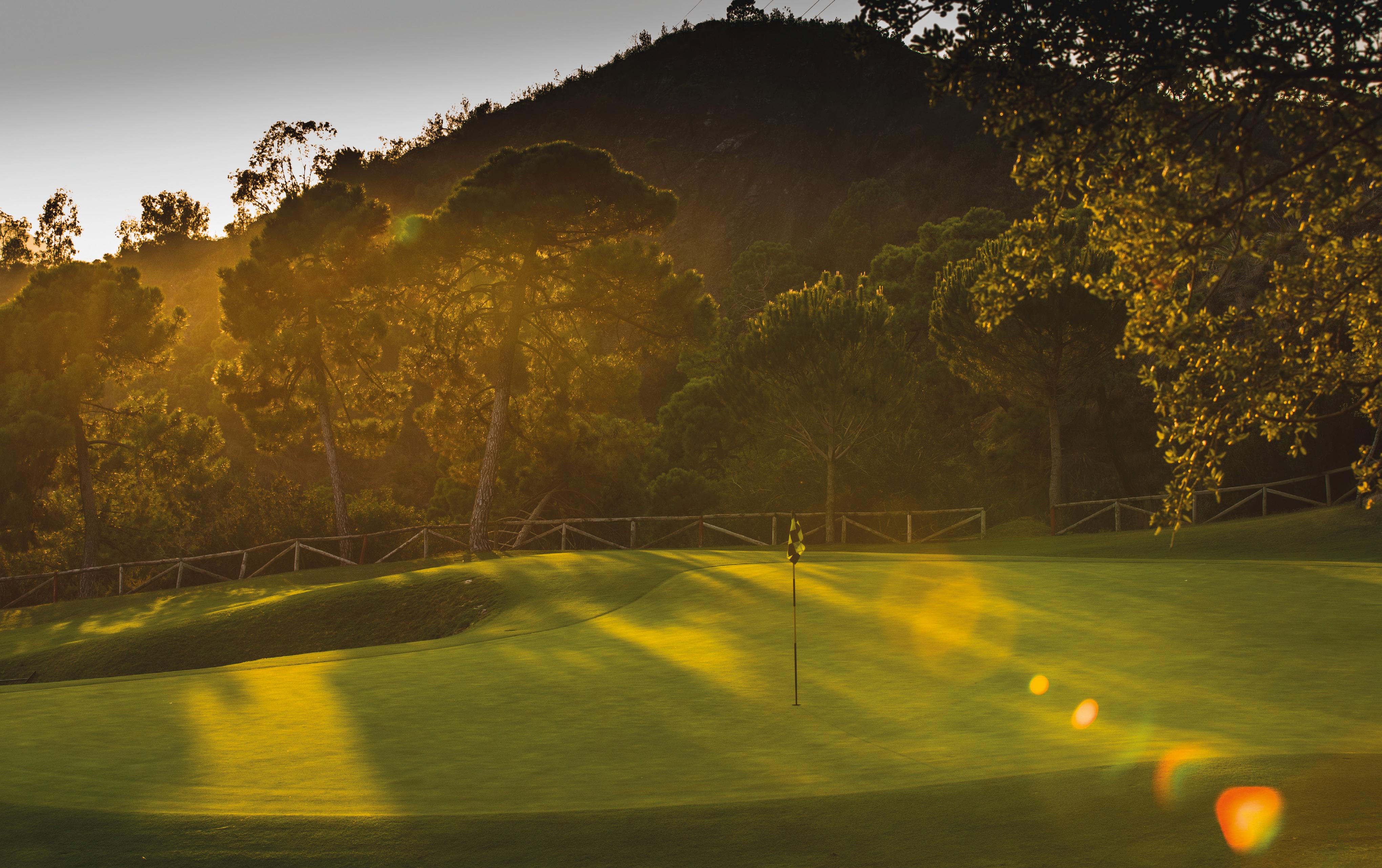

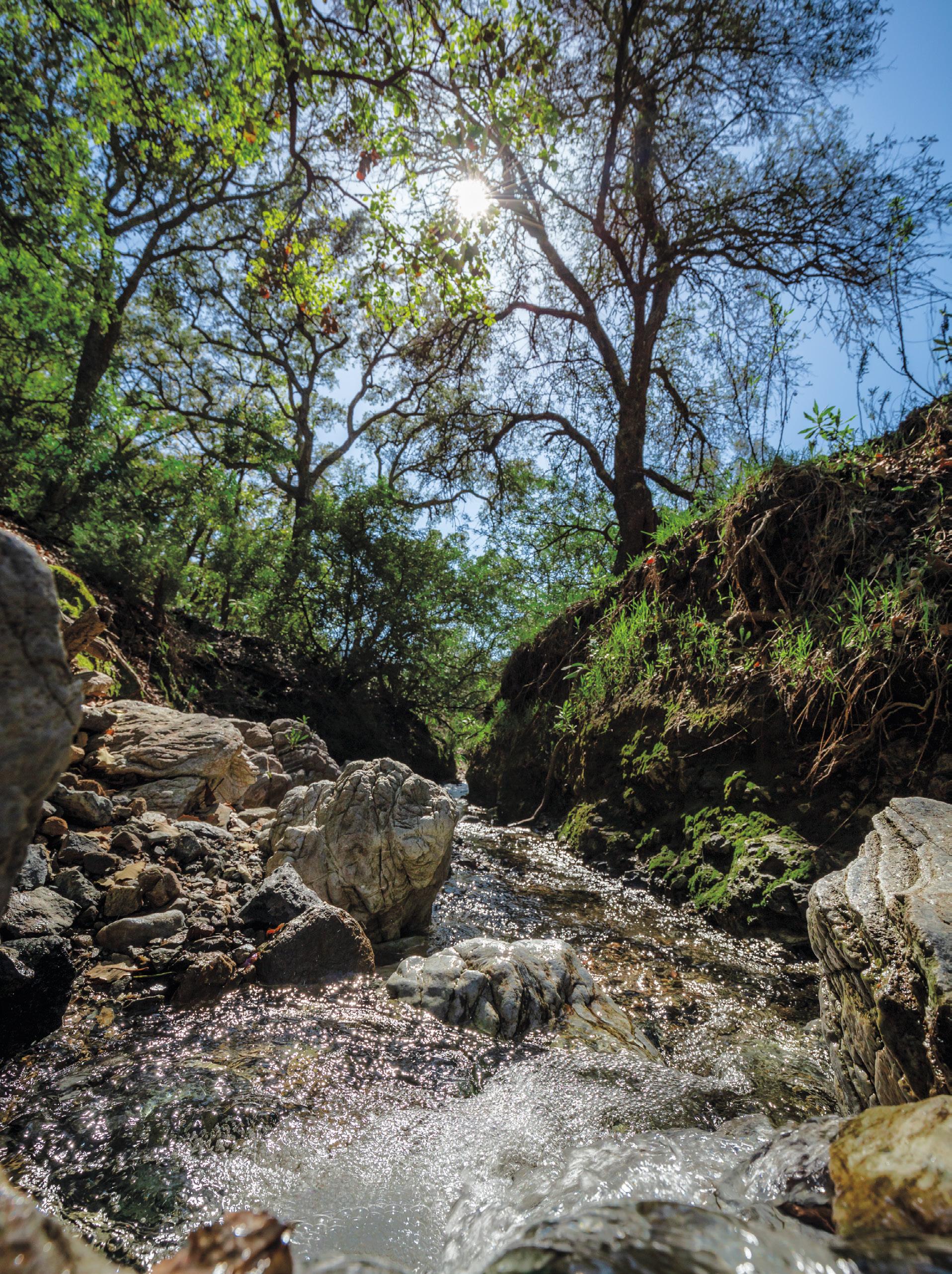
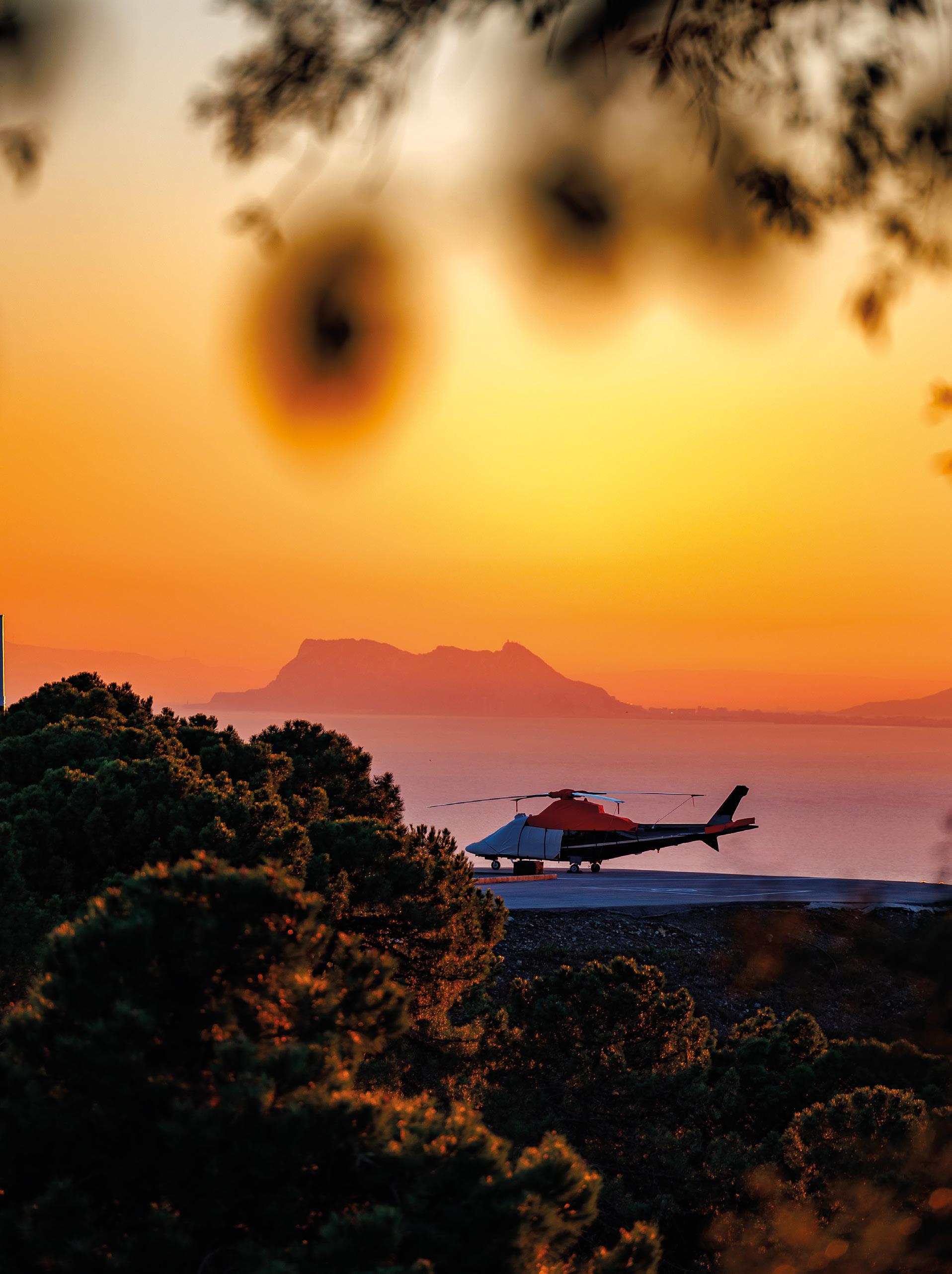

The scenic view from La Zagaleta Country Club Restaurant towards the Mediterranean during day time is certainly unforgettable. Nevertheless, the present late afternoon- night caption is simply spectacular.

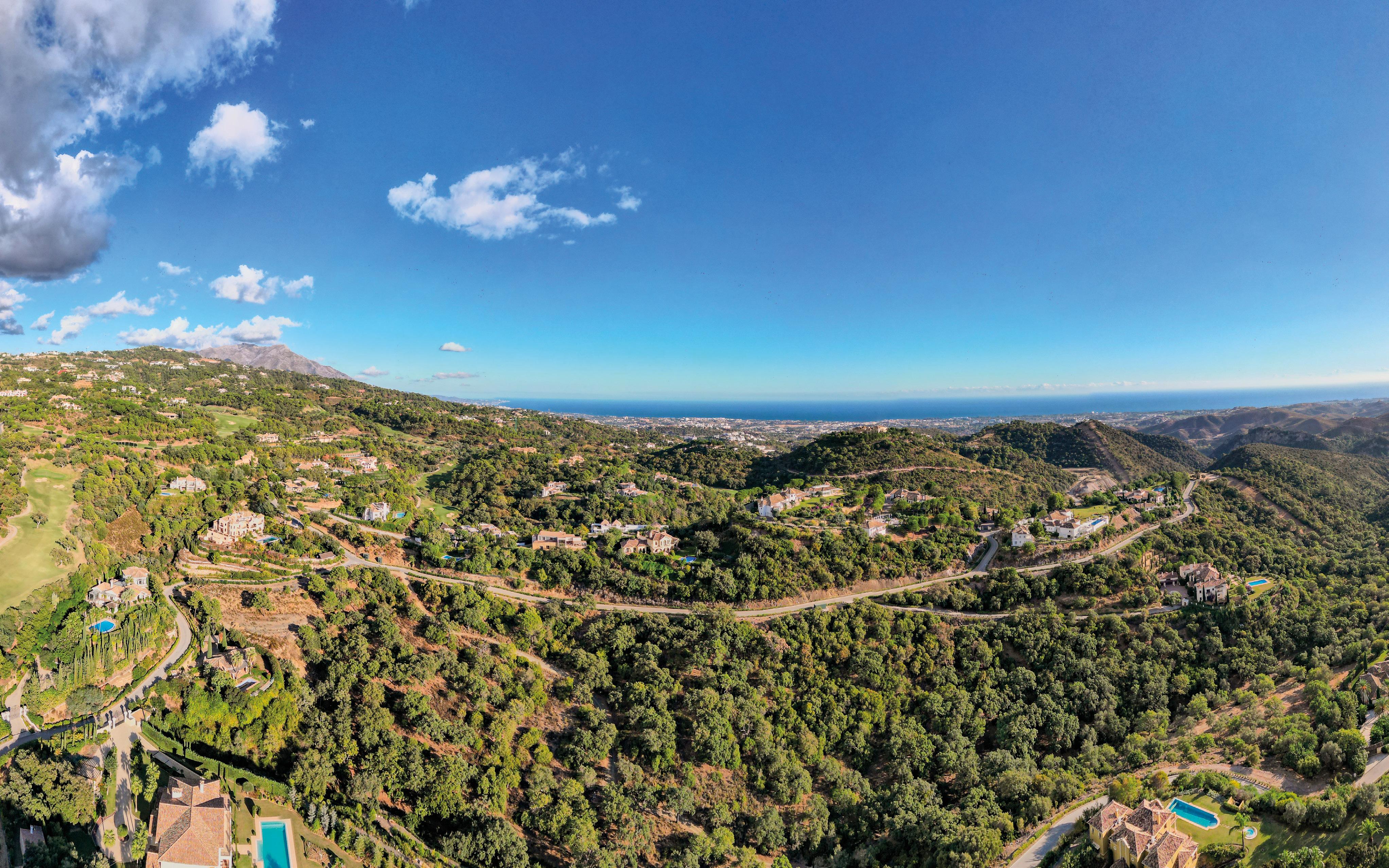

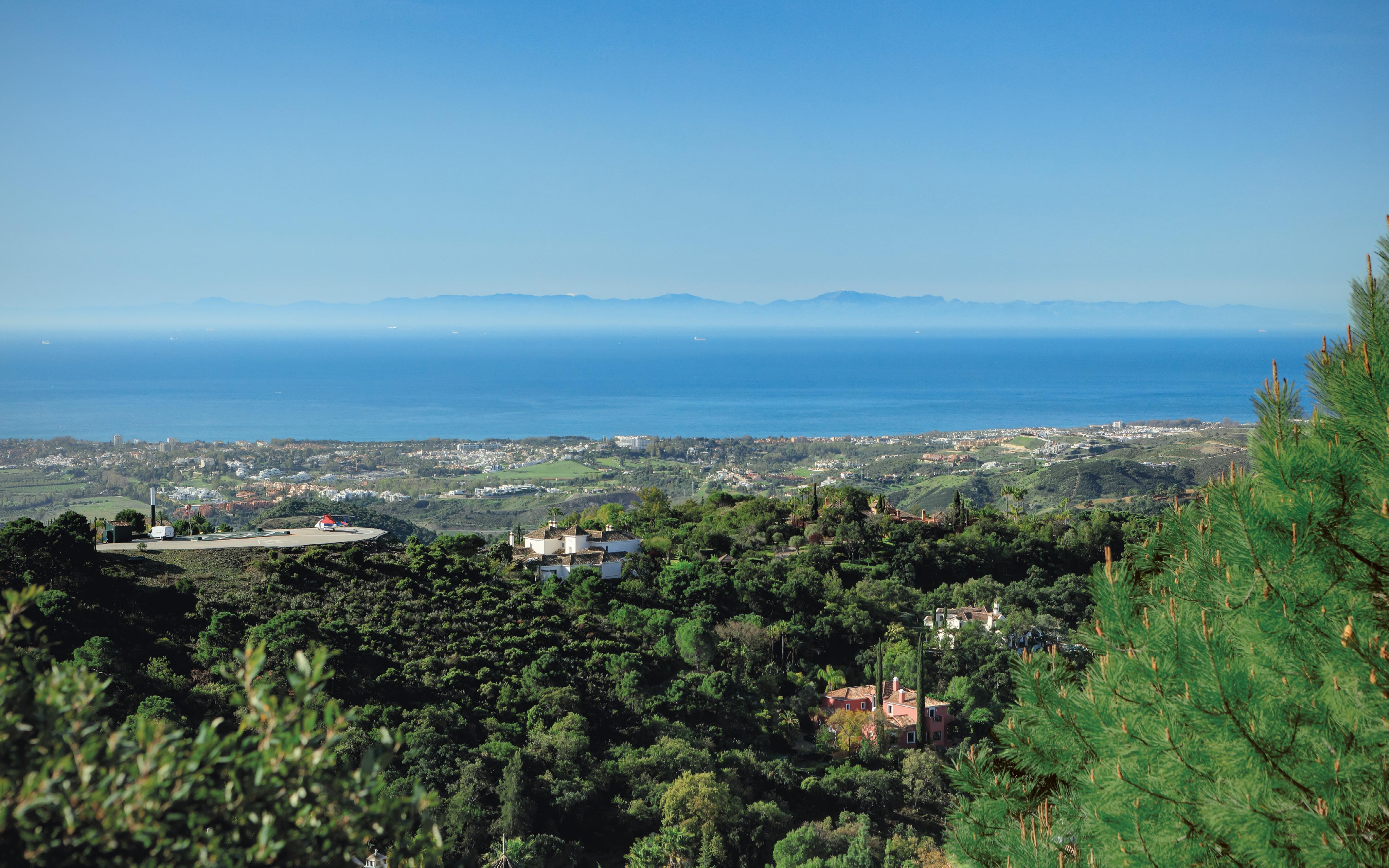
The high elevation of the Zagaleta estate above Marbella with the African continent and Gibraltar on the background, creates a unique and impressive feeling.
Highest location: 550 m.a.s.l.
North Entrance: 405 m.a.s.l.
South Entrance: 275 m.a.s.l.



The magical views of the hole 2, Par 3, of Zagaleta’s New Course crossing the “Lago del Embarcadero” is one of the many delights when playing this spectacular course.
Lake length: 105 meters

The Northern views of Zagaleta’s back mountains offer incredible unspoiled scenery. Snow on top of Torrecilla Mountain (1.919 meters) can be seen every winter, being all surrounding part of a the Sierra de las Nieves National Park.

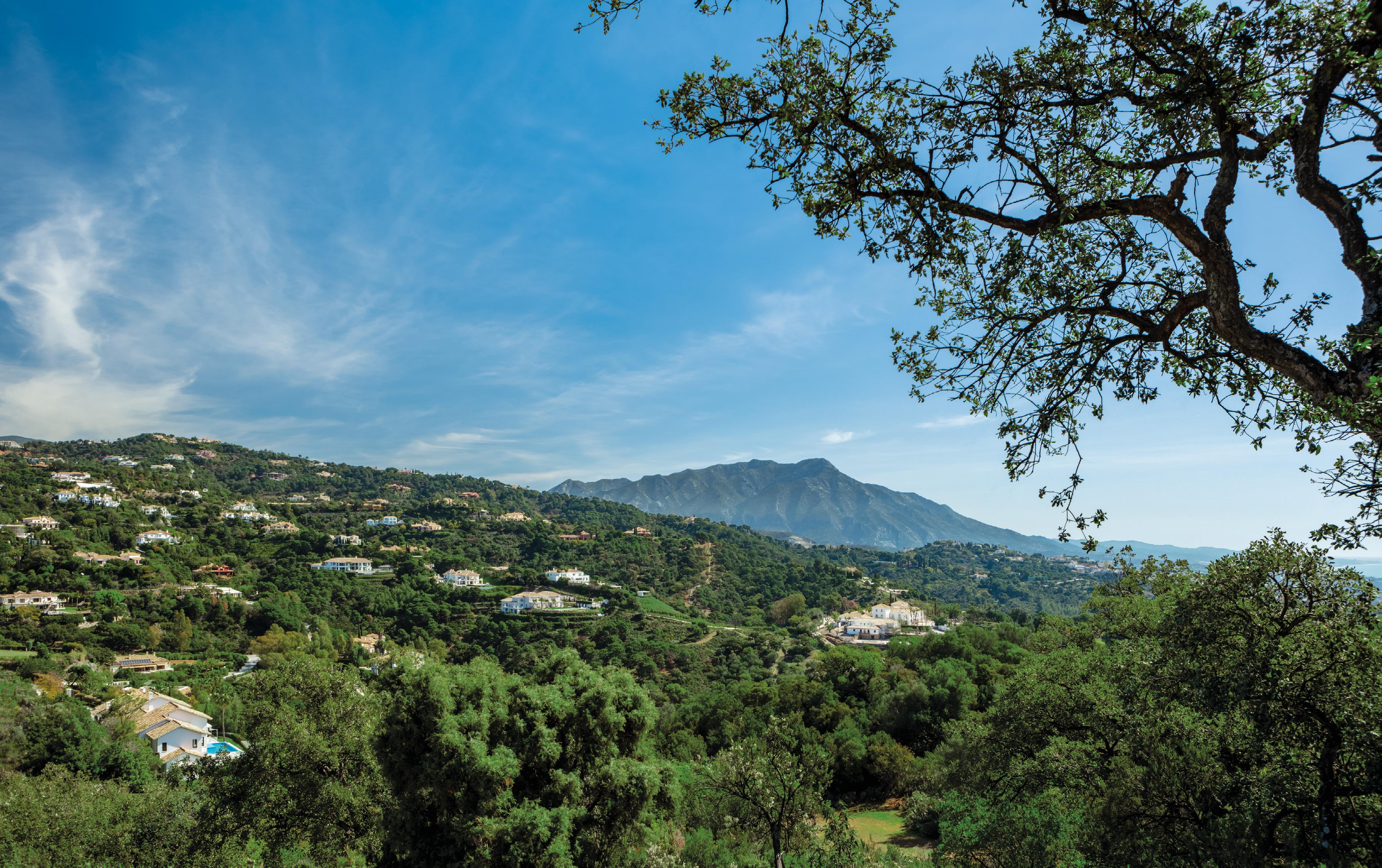






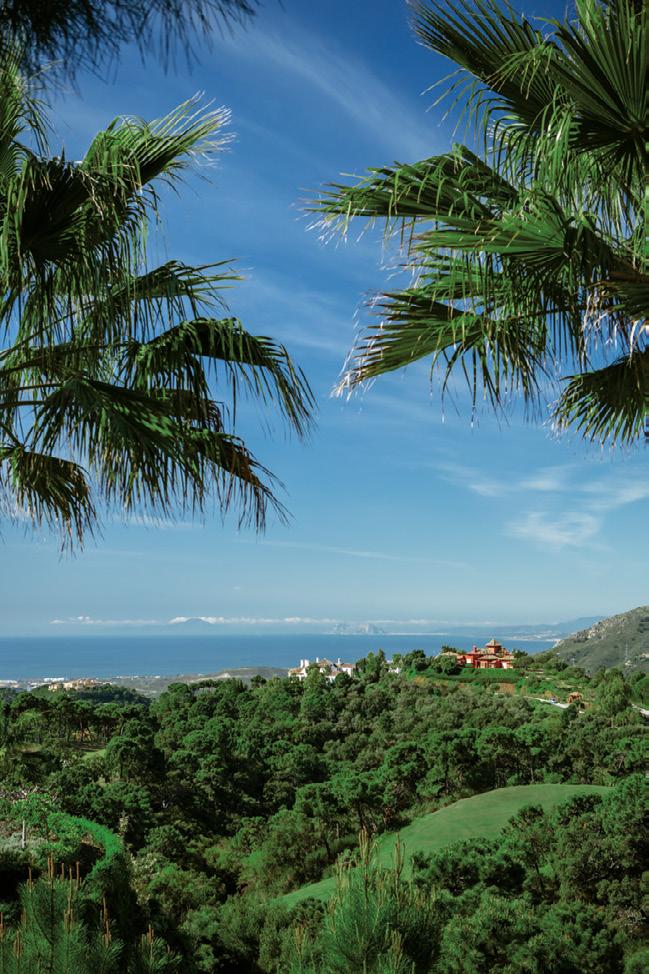
“Balenciaga alone is a couturier in the truest sense of the word”, Chanel once said. “Only he is capable of cutting material, assembling a creation and sewing it by hand, the others are simply fashion designers.”
A skilled artisan, he elevated his craft to a sublime level by blending patternmaking and Spanish influences into a unique and innovative style.
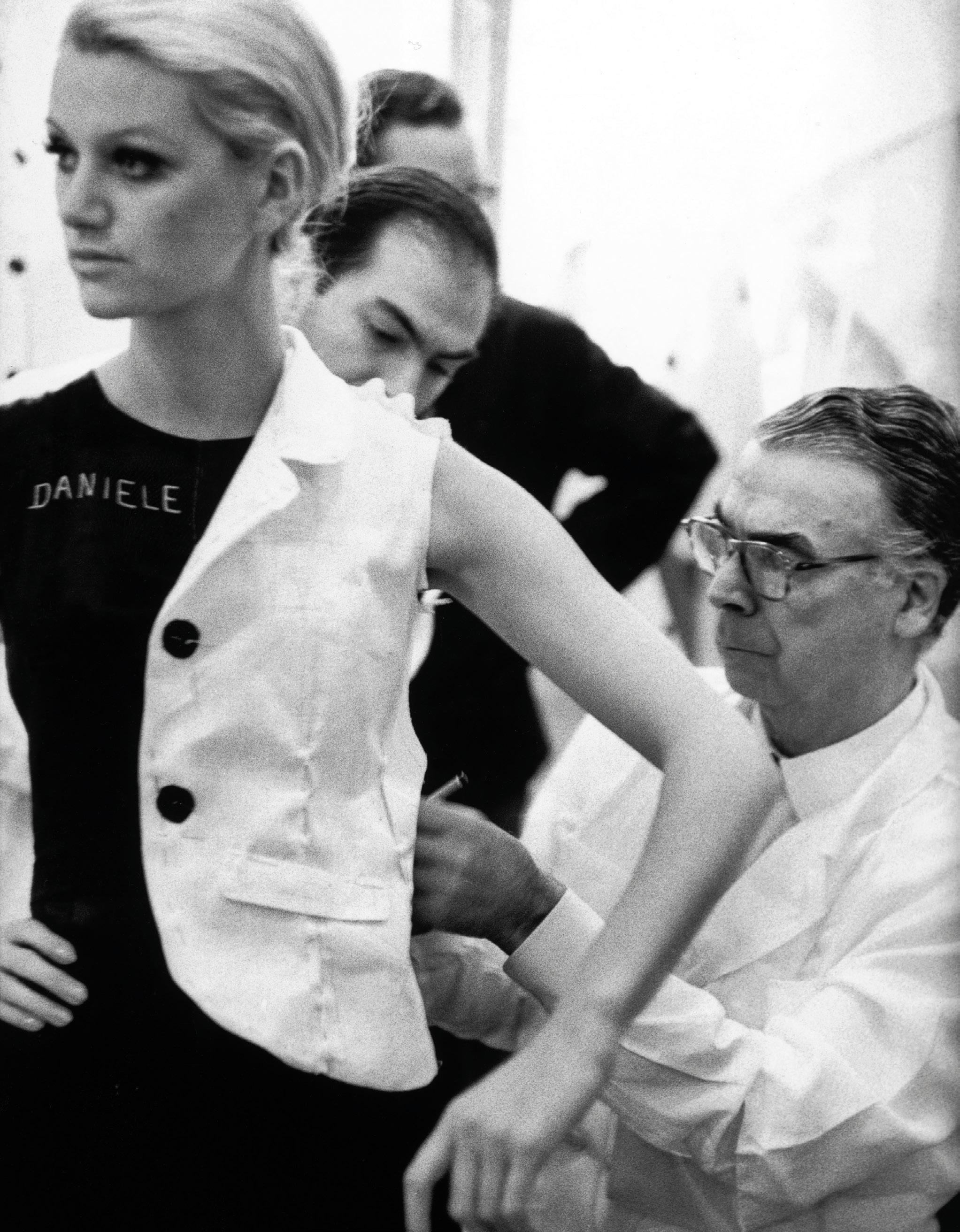
‘THE MASTER’ OF HAUTE COUTURE
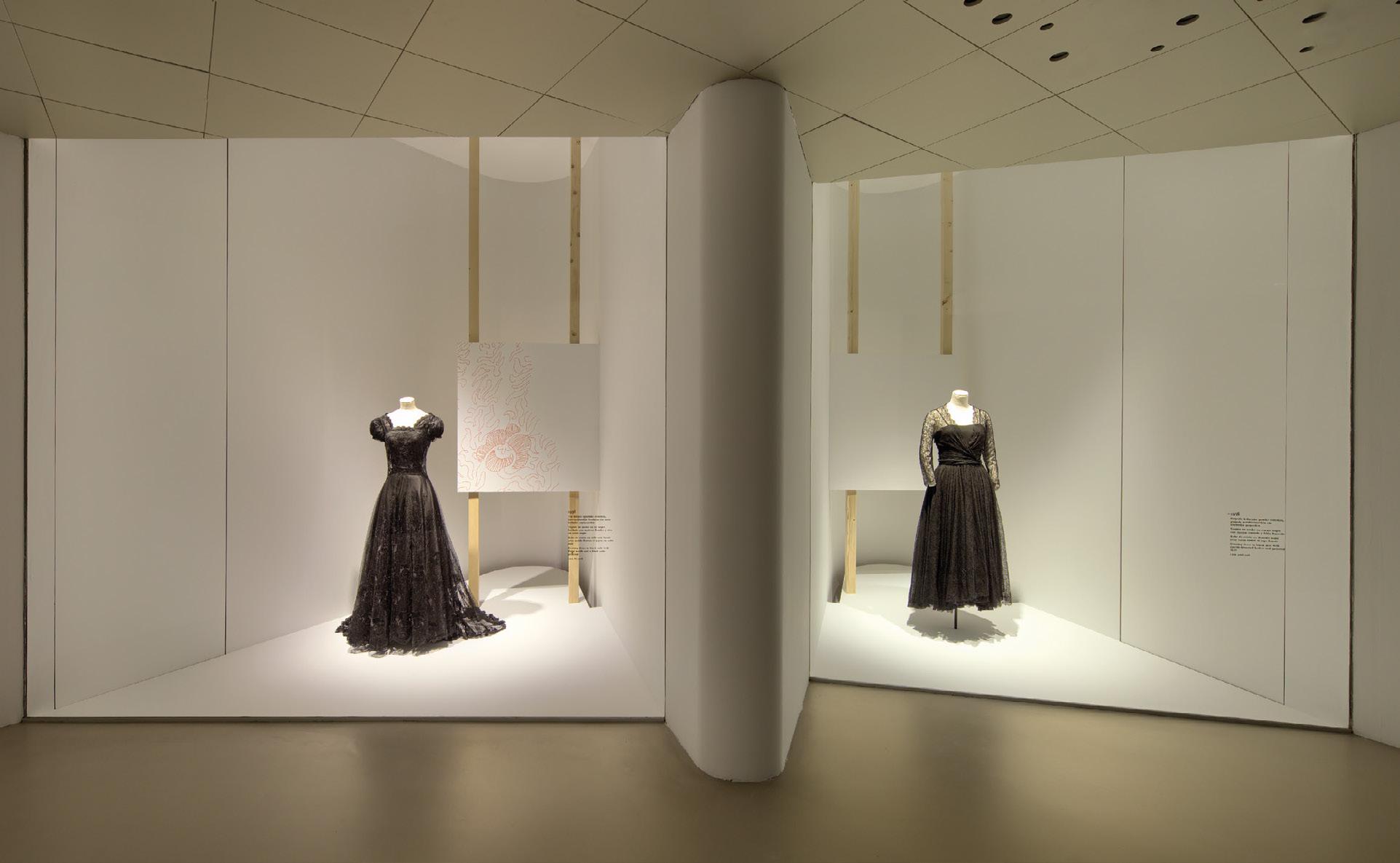
In the fashion world, few have left as indelible a mark as the Spanish designer Cristóbal Balenciaga. Counting among his clients luminaries such as Grace Kelly, engaging in friendly rivalry with icons like Coco Chanel, and mentoring talents like Hubert de Givenchy, Balenciaga earned the moniker “the master of us all”, a tribute coined by the renowned Christian Dior. Balenciaga not only commanded respect in the fashion world as a skilled craftsman who treated each design as a form of art, but he also played a pivotal role in reshaping the silhouette of women’s attire into its contemporary form.
Balenciaga was born on January 21, 1895, in the quaint fishing village of Guetaria within Northern Spain’s Basque region. During his early years, he often accompanied his mother, a seamstress catering to the village’s stylish elite. At just twelve years old, he embarked on an apprenticeship at a tailor’s in San Sebastian, a neighbouring fashionable resort, where, by 1917, he launched his initial fashion house named Eisa, a nod to his mother’s family name. As a teenager, he gained the support and patronage of the town’s most prominent woman, the Marquesa de Casa Torres. She sponsored his formal tailoring training in Madrid and proudly showcased his creations. Balenciaga achieved early success in his homeland. He expanded his boutique Eisa from San Sebastián to Madrid and Barcelona. His creations gained popularity with the Spanish royal family and fashionable members of the aristocracy.
sewing, and finishing. For him, the design process commenced with the fabric rather than a sketch, asserting, “It’s the fabric that dictates,” demonstrating his mastery of exploiting materials for optimal effect.
“The innovative designs marked a revolutionary separation between body and attire.”
With the outbreak of the Spanish Civil War leading to the closure of his boutiques, Balenciaga relocated his operations to Paris, the acknowledged epicentre of fashion. There, alongside renowned designers such as Coco Chanel, Elsa Schiaparelli, and Mainbocher, he established his house on Avenue Georges V as the city’s most prestigious couturier. His meticulous training distinguished him from his peers; he possessed a comprehensive knowledge of every aspect of garment creation, from pattern-making to cutting,
In August of 1937, Balenciaga presented his debut fashion show at his Avenue George V studio, showcasing a collection deeply influenced by the Spanish Renaissance. Throughout his career, Balenciaga interpreted various historical styles. For instance, his “Infanta” gown drew inspiration from the attire of young Spanish princesses depicted in the 17th-century portraits by the Spanish artist Diego Velázquez. Additionally, the short, intricately adorned “jacket of light”, traditionally worn by toreadors in the bullfighting arena, served as a key influence on much of his evening wear. Flamenco dresses, matador attire, and black lace—typical of the mantilla shawls worn by women during special ceremonies and Spanish Holy Week— were also recurring themes in his designs. Balenciaga’s fascination with simple shapes, particularly circles, semicircles, and tunics, likely developed from his exposure to the design of ecclesiastical vestments and clerical dress prevalent in Spain. His choice of specific colours such as black, grey, earth tones, vivid reds, fuchsia, and purple, along with decorative elements like intricate embroidery and braid, and the use of fabrics such as lace in rich flounces, as
“A couturier must be an architect for plans, a sculptor for shapes, an artist for colour, a musician for harmony and a philosopher for the sense of proportion.” Cristóbal Balenciaga
The Cristóbal Balenciaga Museum in Getaria treasures a unique collection of more than 3,500 pieces. The constantly growing collection includes the couturier’s earliest surviving models, making it one of the most complete and coherent collections available.
well as heavy woollens or innovative synthetic materials sculpted into striking forms, drew heavily from the aesthetic of traditional Spanish regional attire and the depiction of costumes in Spanish art spanning from 1500 to 1900.
The French media hailed Balenciaga as a transformative figure in the fashion world by 1939, sparking intense competition among buyers and patrons eager to acquire pieces from his collection. Despite the challenges of World War II, clients ventured to Europe for the chance to obtain Balenciaga’s designs, particularly his famous square coat featuring sleeves seamlessly integrated with

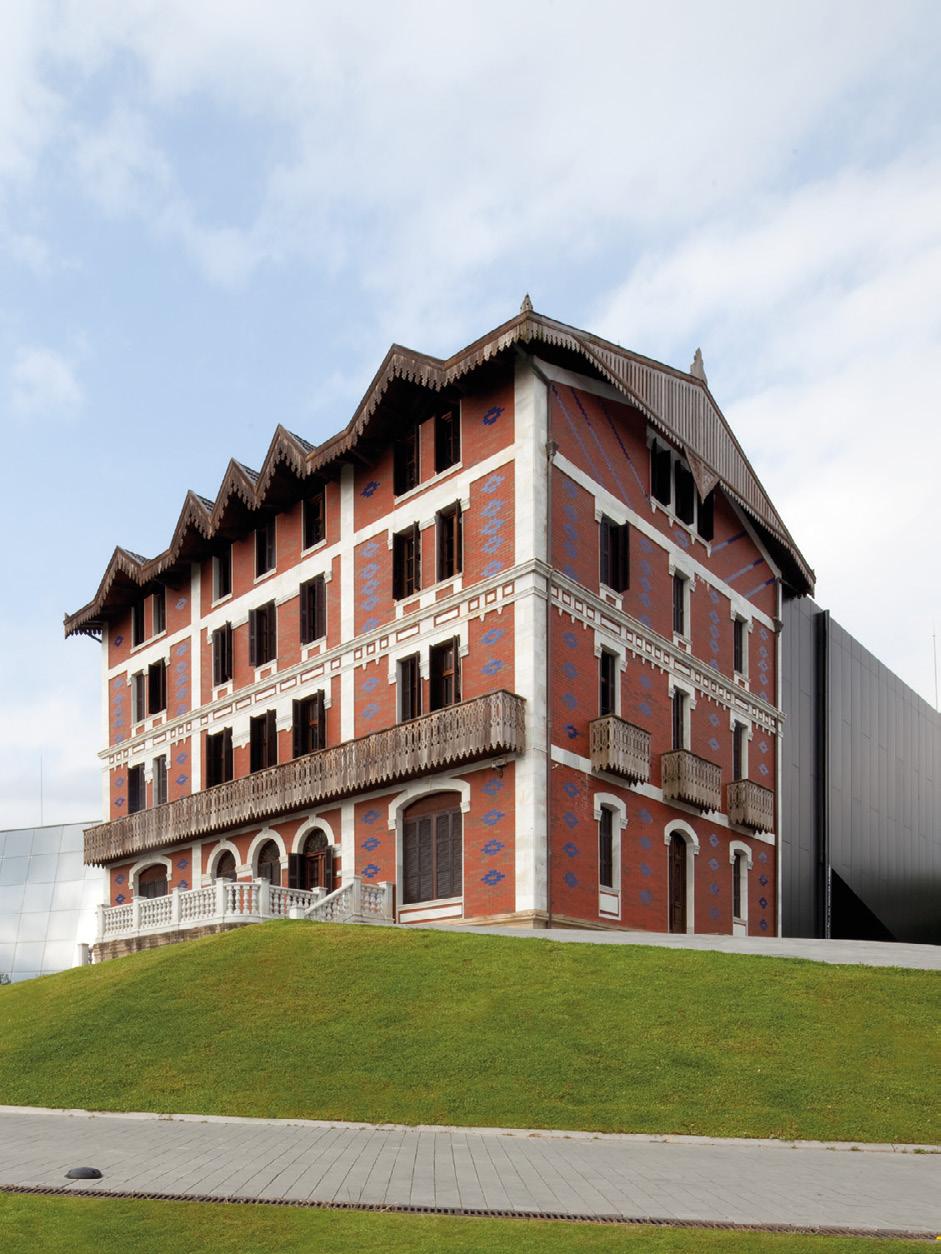
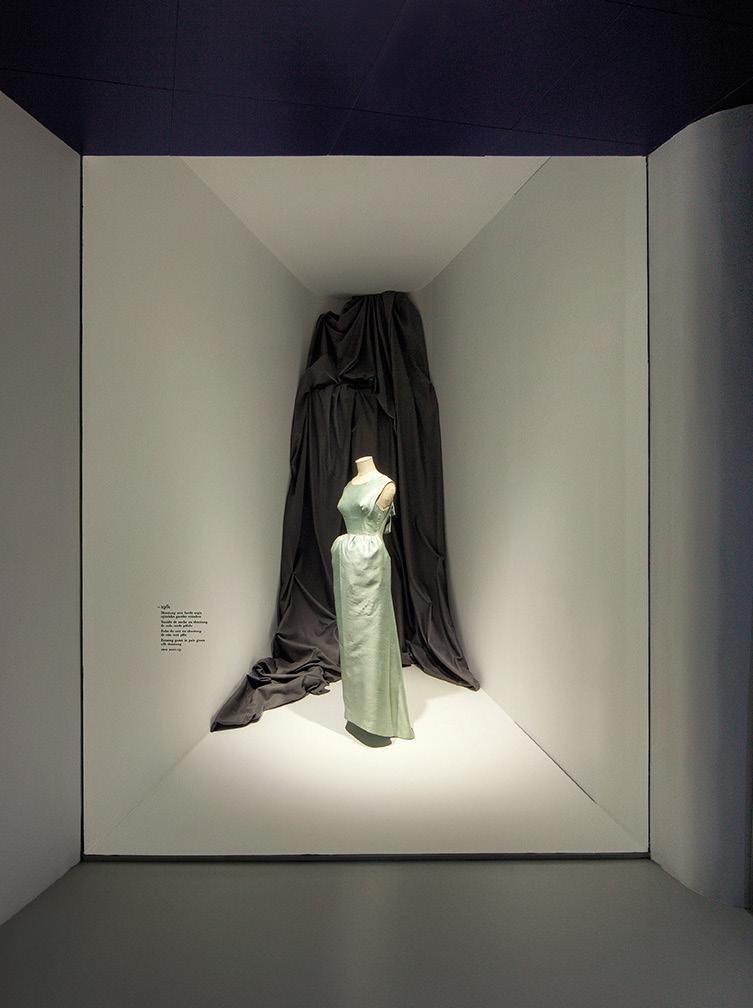
Luxury for Balenciaga meant elegance, self-confidence, and figure enhancement without relinquishing comfort; all of it worked out through a perfect fabric choice, cut, and fit.
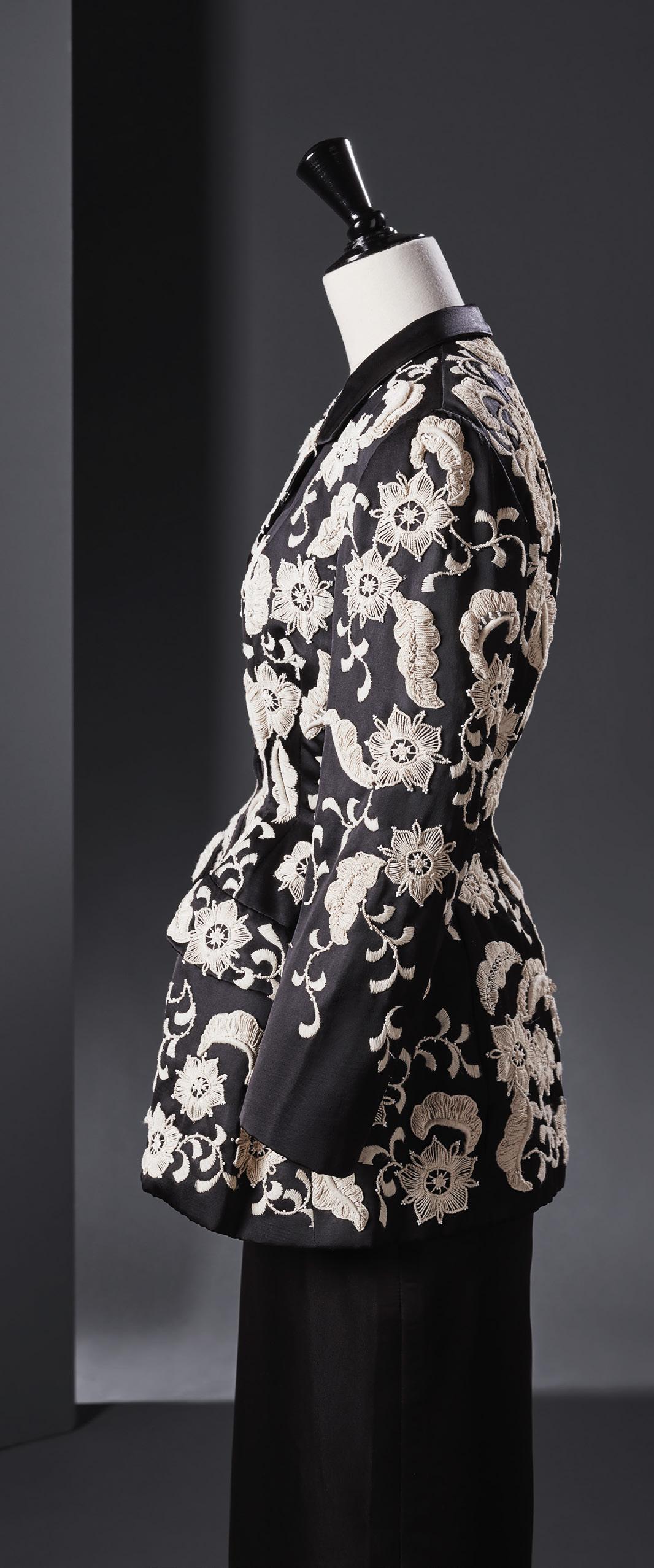
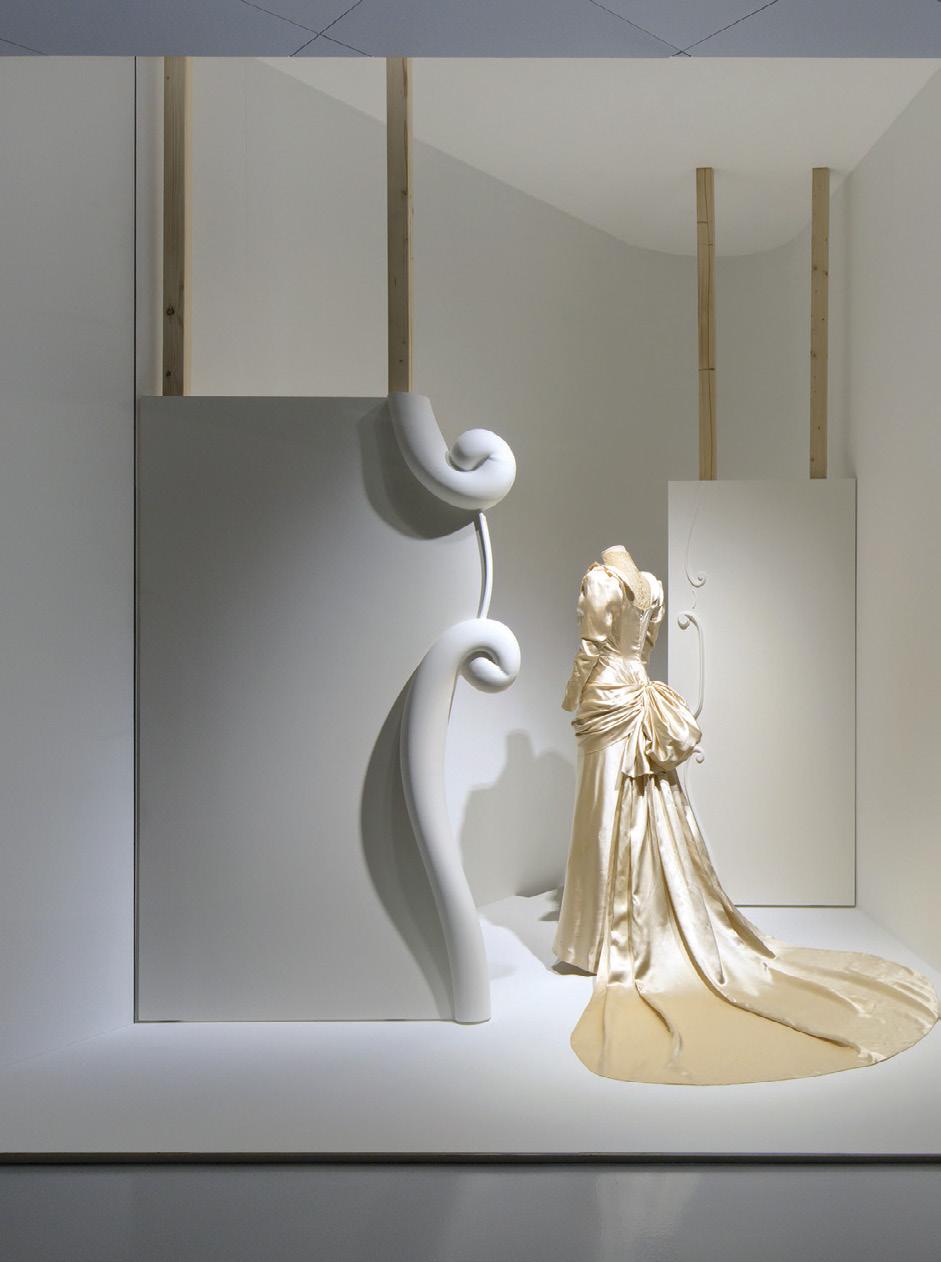
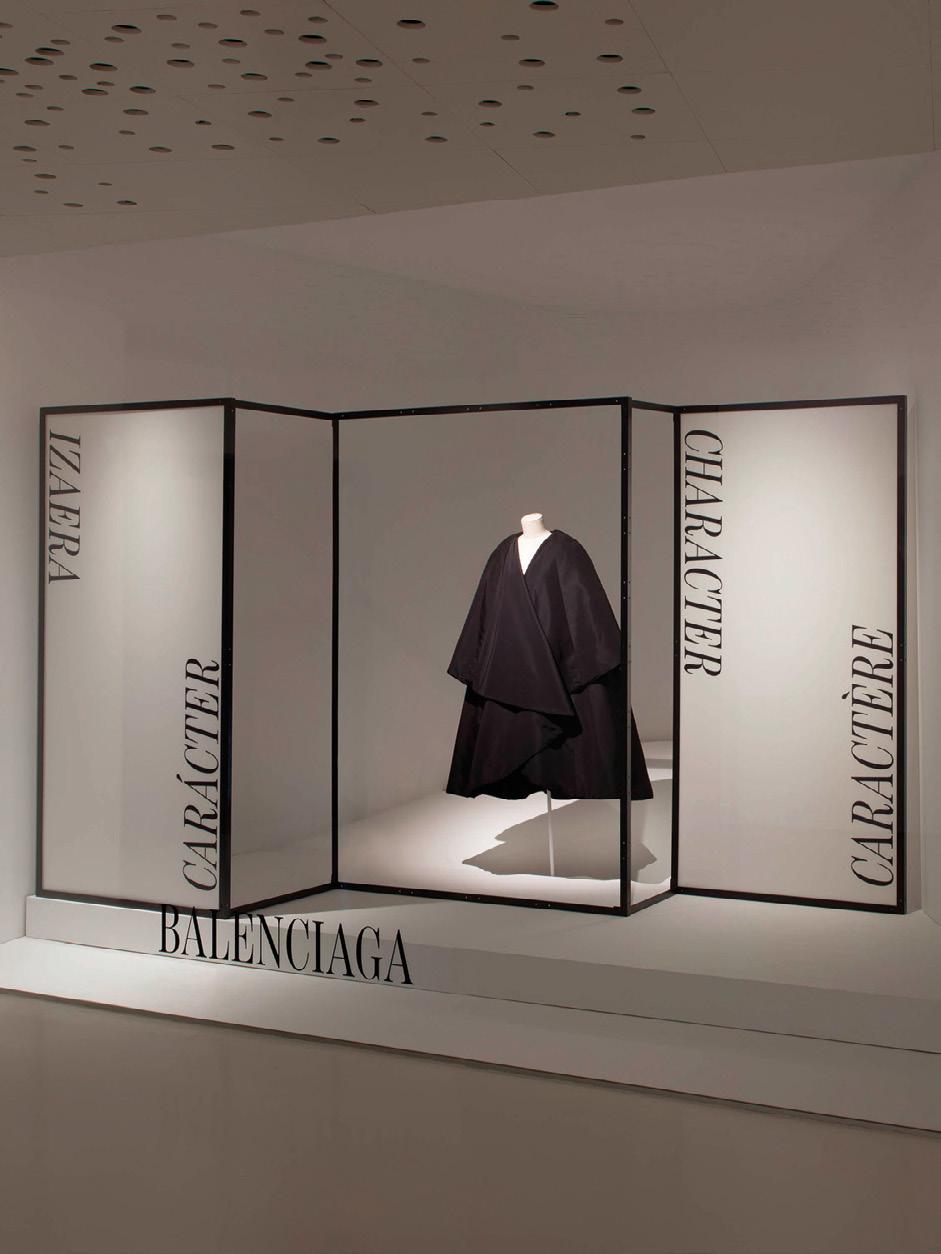
In addition to precision, ample volumes, and sharp cuts, Balenciaga preferred a minimum number of seams in the cut that allowed him to create fluidly sculpted pieces.
1
Balenciaga, the ““architect of haute couture”, as referred to by Hubert de Givenchy, always conceived his models following the aesthetic and practical needs of the women for whom he designed them. Their embellishment and comfort were the ultimate goals of his tireless efforts, and the fact that his customers remained faithful to him throughout his life proves that he fulfilled those goals admirably.
2 The Balenciagas, as the most loyal clients were named, felt confident in their attire, and ready for success in their social engagements. Diana Vreeland, the fashion editor of Harper’s Bazaar, famously remarked, “In a Balenciaga, you were the only woman in the room – no other woman existed.” Eminent figures of the 20th century, such as Mona Von Bismarck, Bunny Mellon, Barbara Hutton, Grace Kelly, Madame Jack Bousquet, and Madeline Dittenhofer, wore Balenciaga’s masterpieces.
3 When Balenciaga closed his doors after 52 years of continuous work, presenting an average of 200 new creations every season, he believed that fashion was going in a different direction. Fashion houses Dior and Chanel began to concentrate on ready-to-wear, indicating a shift in the fashion industry’s direction. Prêtà-porter had democratised fashion, but Balenciaga remained purely devoted to couture.
4 The very last dress designed by the couturier was a wedding dress. Already retired, in 1972 he accepted the request of the Spanish aristocrat and socialite María del Carmen Martínez-Bordiú, niece of General Franco, to make her wedding dress. Made with infinite metres of silver thread and over 10 thousand pearls, it remains in history as the last, incredible look of the legendary perfectionist, who died just two weeks later during a holiday in Spain.
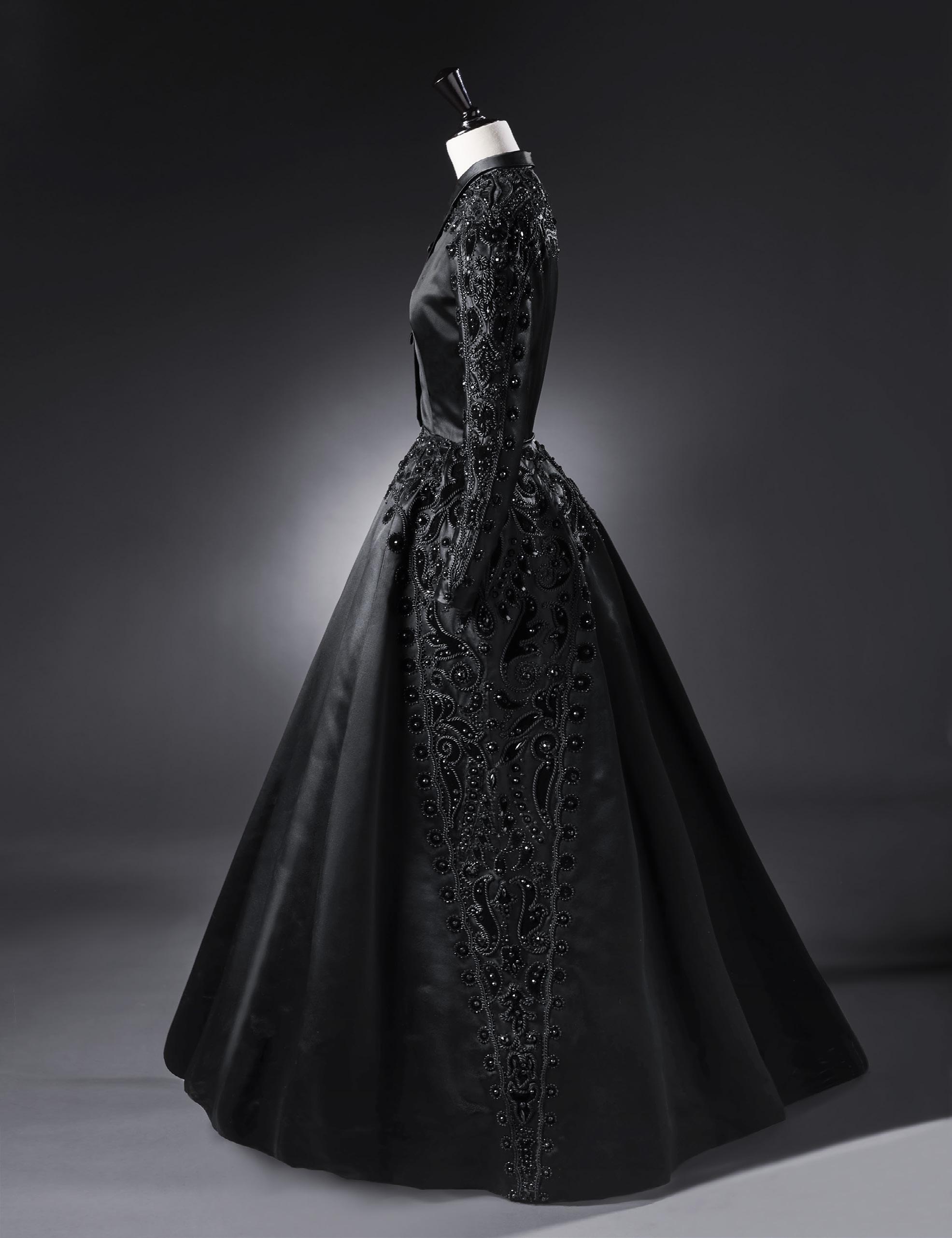

The Infanta dress
Balenciaga’s Infanta dresses from the 1930s were reminiscent of traditional Spanish style and culture, drawing on Balenciaga’s heritage.
The Sack Dress
Lacking a waist, one of Balenciaga’s most prominent and revolutionary designs, the sack dress set the stage for the 1960s’ iconic mini-dress trend.
The Balloon Jacket
An elegant sphere of fabric with volume filling the hem, the balloon jacket is considered a precursor to today’s puffa jacket.
Balenciaga adorned many of the most elegant women of the 1950s and 1960s, among them Ava Gardner, Gloria Guinness, and Mona von Bismarck. Bismarck, a devoted patron, commissioned everything from ball gowns to gardening attire from the couturier. Balenciaga favoured women with distinctive styles, and his clients remained fiercely loyal. The closure of his fashion house in 1968 stunned his clientele, evoking a profound sense of loss— Bismarck reportedly secluded herself for three consecutive days in response.
HAILED BY COCO CHANEL AS “THE ONLY TRUE COUTURIER amongst us, able to design, cut, assemble and sew a dress entirely by himself”, Balenciaga created a new technical and visual language for the female silhouette.
The Egg Coat
The simple style with added volume in the waist area revolutionised the women’s silhouette in the 1960s and remains a staple in contemporary fashion.
The Tulip Dress
A signature for Balenciaga: the plain front reserved interest for the back of the dress. Its structural shape, lack of a side seam, and large bow made it reminiscent of Japanese kimono.
The Baby Doll Dress
The basic design featured a body-skimming slip underneath a loose lace outer dress, sometimes cinched at the waist with a ribbon.
the yoke. During this period, his distinctive colour schemes, such as black paired with brown or black lace juxtaposed against bright pink, further captivated enthusiasts.
During World War II, he travelled frequently between France and Spain, staying connected to his family and cultural heritage while overseeing his modest fashion empire. This routine continued post-war. Even during long stays in Paris, he kept in touch with Spaniards. This was due to his business and residence being in a neighbourhood popular among Spanish émigrés. Many of his associates and employees were Spanish, and his circle of friends included notable compatriots such as Pablo Picasso, Joan Miró, and Pablo Palazuelo.
Following the war, Balenciaga’s creations evolved into sleek, straight lines. Christian Dior’s New Look celebrated the popular hourglass figure, but Balenciaga’s designs diverged from it. Balenciaga preferred fluid shapes that allowed him to redefine how garments interacted with a woman’s form. He experimented with dropping and raising waistlines independently of their natural proportions.
The early 1950s saw voluminous ‘balloon hems’ in his dresses, followed by the introduction of ‘semi-fit’ styles in the mid-50s, featuring fitted fronts and billowy backs. In 1953, he unveiled the balloon jacket, a striking sphere that envelops the upper body like a pedestal for the head. In 1957, his ‘sack dress’ caused a stir amid Dior’s dominance, criticised by the press and clients alike. “It’s hard to be sexy in a sack!” cried the Daily Mirror. Despite initial resistance, Balenciaga’s radical designs, like the sack dress and the 1958 chemise, which lacked defined waists, gained universal appeal and were widely imitated by a large number of ready-to-wear manufacturers in every price range. The sack dress set the stage for the 1960s’ iconic mini-dress trend and remains influential today. His 1957 innovations also included the high-waisted baby doll dress, the gracefully draped cocoon coat, and the balloon skirt, either singular or layered. The trapeze silhouette of the baby doll dress abstracted the body, a theme evident in his late 1960s
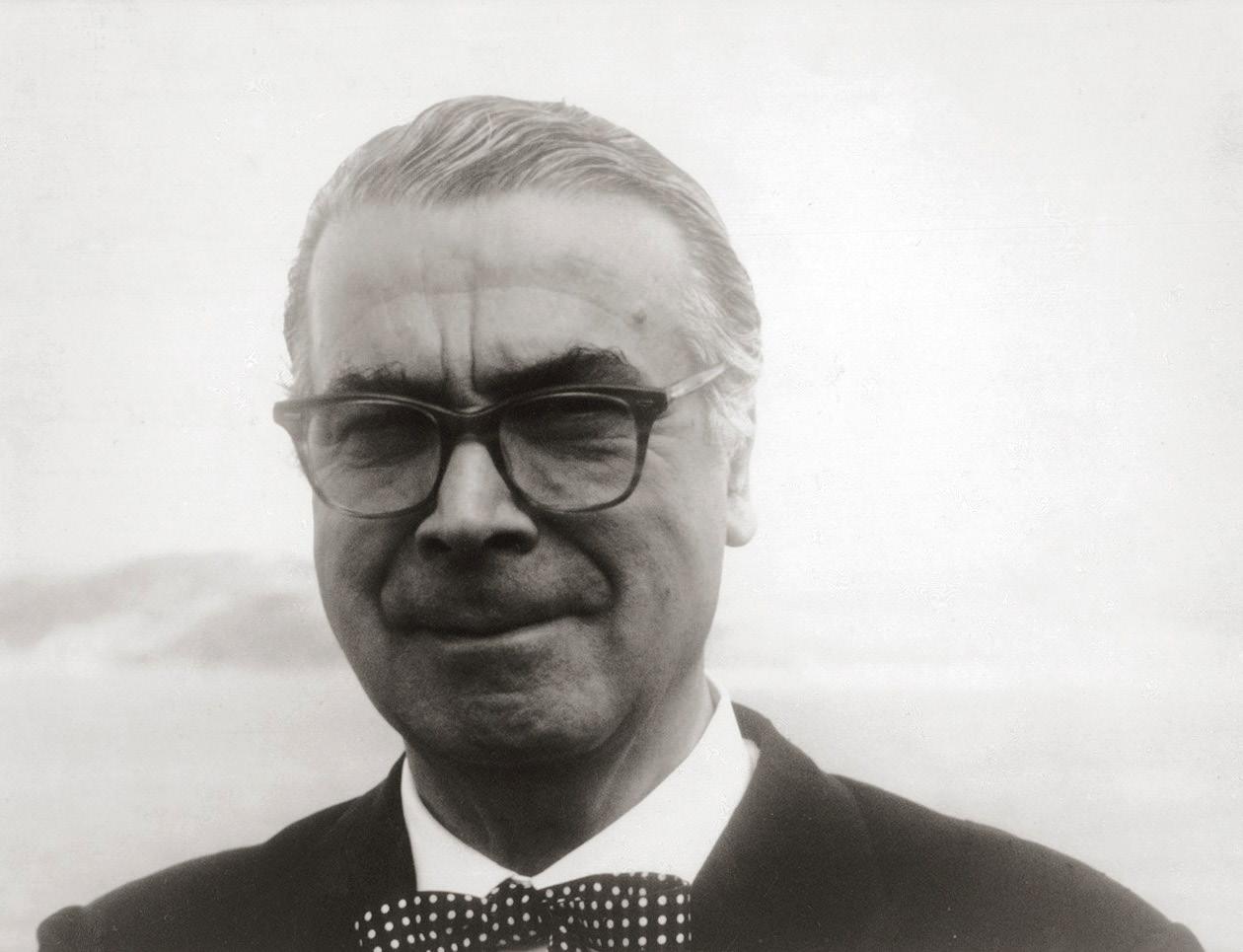
creations such as the dramatic ‘envelope dress’ fashioned from stiff yet lightweight silk gazar. Despite receiving acclaim from the fashion press, Balenciaga only sold two pieces and had one returned due to the client’s inability to use it for bathroom purposes. With these design innovations, Balenciaga achieved what is considered to be his most important contribution to the world of fashion: a new silhouette for women.
During the 1960s, Balenciaga showcased collections renowned for their unparalleled craftsmanship and elegance. He was known for his innovative approach to fabric, favouring bold materials, dense cloths, and intricate embroidery. This led him to collaborate with the Swiss fabric house Abraham, resulting in the development of silk gazar—a stiffer variation of the flexible fabric Balenciaga frequently used in suits, day dresses, and evening wear. Esteemed patrons such as the Duchess of Windsor, Pauline de Rothschild, and Gloria Guinness continued to value the discreet yet significant details he incorporated into his designs: collars that elegantly framed the collarbone for a swan-like effect, and the shortened (seven-eighths-length) bracelet sleeve, named for its ability to showcase jewellery with flair.
In the 1960s, Balenciaga’s designs embraced more abstraction. The structured wraps, crafted from firm fabrics like gazar, zagar, and sable, clearly showcase his career’s conceptual and technical minimalism. He used these materials to create abstract silhouettes and geometric volumes inspired by circles and squares. Progress at Balenciaga happened gradually, step by step, evolving from one version to the next. Each year, the collections underwent an evolution rather than abrupt changes, maintaining consistency while slowly pushing earlier concepts to their limits until achieving
the complete dissolution of the female body and the dress. The innovative designs marked a revolutionary separation between body and attire. A third element started gaining significance: air. This became crucial in crafting an abstract, comfortable, and elegant silhouette.
The doors of the Balenciaga salon closed in 1968, marking the end of the career of a brilliant artist whose impact continues to resonate in the twenty-first century. Unlike many other prominent designers of his time, Balenciaga was exceedingly private, granting just one interview over his illustrious 50-year career.
Despite his elusive demeanour, Balenciaga spearheaded a fashion revolution. “He was a revolutionary without making the revolution”, said Balenciaga’s colleague, Hubert de Givenchy. French designer Emanuel Ungaro, who apprenticed under Balenciaga, credited him with “establishing the groundwork for modernity” in fashion. Both Ungaro and Andre Courrèges, also protégés of Balenciaga, advanced their mentor’s minimalist aesthetic into the space-age chic of the 1960s. In the fashion world, couturiers and journalists alike revere Balenciaga as the “designers’ designer”. His name represents key fashion ideals: ongoing style innovation, easy dressing, and a keen focus on detail, whether bold or understated.
The Balenciaga label was revived in 1986 with a series of new creative directors. Notably, Nicolas Ghesquière played a key role in revitalising the label from 1997 to 2012, and Demna Gvasalia, the current Creative Director, has kept Balenciaga in the spotlight today. Both designers have delved into the Balenciaga House archives, drawing inspiration from The Master’s original designs in terms of cut, silhouette, and choice of materials.
Balenciaga drew inspiration from popular clothing in its forms and craftsmanship, the fashion of Vionnet or Lanvin in its technique and silhouettes, and the aesthetic developments of art history. Balenciaga’s mastery of techniques, relentless research, formal experimentation, and pursuit of perfection enabled him to create clothing that was formal and aesthetically daring, setting influential trends in the fashion world.
Balenciaga’s designs immediately caught attention with their simplicity, flawless cuts, daring colour blends, and the Basque and Spanish influences that infused his pieces. These elements were both surprising and exotic to the sophisticated Parisian audience. Throughout his career, Balenciaga’s collections continued to reflect the essence of his origins, showcasing the distinctive elements, influences, and resources that defined his work from the beginning to the end.
Balenciaga earned the title of “Master of Haute Couture” not only for his flawless creations and technical expertise but also for his visionary approach and ability to think ahead of his time, often pushing boundaries and setting new standards, not only by improving the existing ones but often going against the norm. He revolutionised fashion by introducing innovative women’s silhouettes and pioneering new fabrics that enabled his boldest and most conceptual designs to come to life.
Balenciaga is widely recognised as one of the foremost and most influential fashion designers of the 20th century. Over five decades, Balenciaga led his haute couture houses in both Spain and France, establishing his reputation for elegance, avant-garde style, beauty, and timeless appeal. His legacy continues to inspire new generations of designers.
1906: At 11 years old, Balenciaga makes his first dress for the
1917: Balenciaga establishes his first house, called C. Balenciaga at 2 Vergara Street in San
1939: Balenciaga triumphs in Paris with his first collection of marked historic significance
1947–1960: Presents the “barril” line, semi-fit, marinera, midi styles and tunic, sack, and baby doll dresses
1962: Introduces pure and abstract forms; uses gazar, zagar, and cyberline
1968: announces his retirement; stops Paris activity; in 1969, closes the last House in San Sebastián
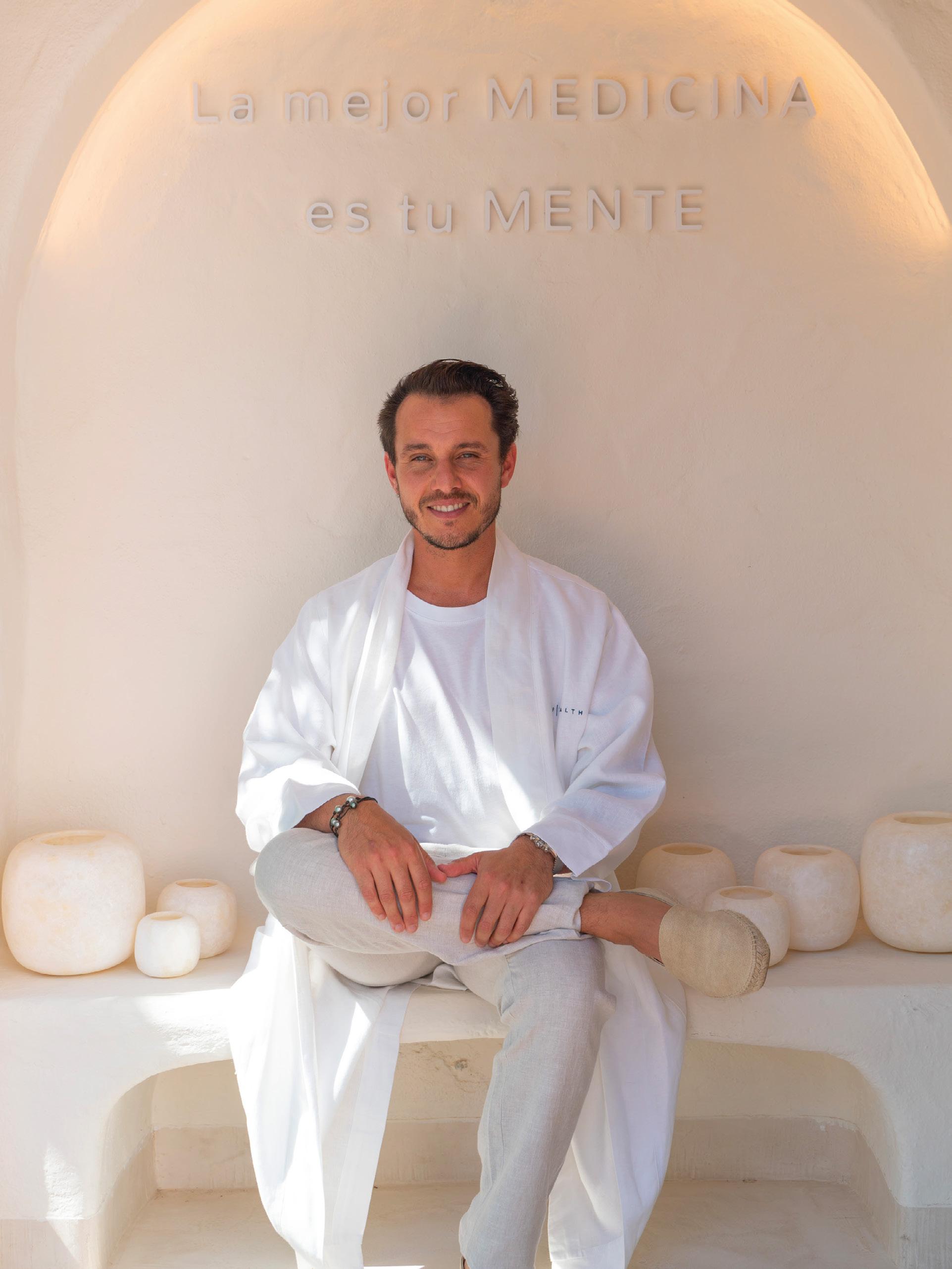
THE BEST MEDICINE IS YOUR MIND. interview
“The mind is the most powerful healing resource we have”.
Dr. Guillermo Recatero has served as a physician for the Real Madrid Football Club, Sevilla Football Club, and privately for Barcelona FC’s medical team. A respected specialist in Musculoskeletal Medicine, he offers holistic services in Marbella. Graduated in Medicine and Surgery from University of Madrid and University of Alcalá de Henares, with study abroad experience in Milan and an additional year in Seville. Awarded an Excellence Scholarship in Doha, Qatar, he gained expertise at ASPETAR, the world’s leading hospital in pain and musculoskeletal medicine. Specializing in Sports Medicine from Complutense University of Madrid, he furthered his training globally. Proficient in preventive pain medicine and regenerative medicine, he treats degenerative injuries comprehensively, including osteoarthritis, lower back pain, disc herniation, tendinopathy, meniscopathy, rotator cuff issues, and therapies such as ozone therapy, plateletrich plasma, and mesenchymal stem cells.
www.rehealthmarbella.com
How did the idea of creating the Rehealth clinic in Marbella come about? What sets it apart from other clinics?
RE | HEALTH emerged after a meditation session where I visualized what my ideal practice would look like. A completely different clinic came to mind, a place where upon entering, patients would immediately feel peace, calm, and trust. It’s a holistic clinic; meaning, mind, body, and spirit are always interconnected. We are aware of the importance of tailoring treatments and understanding how emotions influence diseases. It’s about healing the patient with love and empathy.
Could you detail what holistic or integrative medicine entails? How is it implemented at Rehealth Marbella to prevent diseases?
Holistic or integrative medicine encompasses both conventional and natural medicine, offering patients possible tools for selfhealing and treating the root cause of the disease. It’s about healing the physical body, but also the mind and emotions. It addresses physiological, psychological, nutritional, and social aspects. Disease arises as a consequence of poor dietary and behavioral habits that lead to a weakened immune system. Body detoxification is fundamental.
What are the most demanded treatments by patients at Rehealth Marbella, and how do these treatments contribute to long-term health maintenance?
Chronic and degenerative diseases such as arthritis are among the most treated pathologies in our clinic. 80% of the population over 70 years old suffers from arthritis. In our clinic, we use regenerative medicine. We apply cellular therapy from the patient’s own body to regenerate cartilage and thus avoid surgery and prosthetics. We also treat various musculoskeletal pains, such as herniated discs, knee meniscus problems, rotator cuff tears in the shoulders, or ankle sprains.
What is your perspective on the importance of addressing stress and improving the quality of sleep for your patients at the Rehealth Marbella clinic?
90% of the population experience stress and anxiety, and 61% endures insomnia. It’s the epidemic of the 21st century. Tension and nerves lead to the release of the cortisol hormone, which causes heart attacks, diabetes, obesity, depression, chronic pain, and even death. At RE | HEALTH, we improve sleep quality by increasing melatonin, thereby reducing stress and anxiety and revitalizing the patient’s energy. We address deep sleep waves and REM sleep.

RE|HEALTH Clinic pioneers in REGENERATIVE and INTEGRATIVE MEDICINE, treating the body holistically, viewing the patient as a whole. RE|GENERATE Regenerative medicine, also known as “cell therapy,” treats injuries and body pain using the body’s regenerative capacity. It harnesses the body’s cells and tissues to avoid surgery, conservatively treating ailments like osteoarthritis, tendon and meniscus injuries, spinal disc issues, and ligament tears. By addressing the root cause, not just symptoms, regenerative medicine fully restores tissue from the patient’s own damaged tissue, optimizing tissue recovery processes.
What is the significance of nutrition and physical exercise in Rehealth Marbella’s integrative medicine approach, and how are these aspects incorporated into patients’ treatment plans?
We are what we eat. We conduct epigenetic tests to study the DNA from the hair root. The report is personalized, providing information on the foods the patient should consume and which ones to avoid. We analyze the microbiota (second brain) as well as exposure to interferences (Wi-Fi, 3G, TV antennas, Bluetooth). Physical exercise is fundamental for healthy aging. Our personal trainer, under medical prescription, proposes individualized exercises for injury recovery.
What advice would you offer to those considering integrative medicine as part of their healthcare, based on your experience at Rehealth Marbella?
Integrative medicine is the medicine of the future. It’s preventive medicine that combines the best of science and research with the treatment of diseases from an emotional and holistic perspective. We understand that pains and diseases arise in the body for a reason. In our clinic, we encourage reflection on the origin of the problem, understanding that illness is a path to personal growth and making changes in our daily lives. The key is to address the root of the problem rather than exclusively treating symptoms.
How interconnected are emotions with illnesses? Do you believe the mind plays a significant role in healing diseases?
I believe that more than 90% of diseases have an emotional cause. We are what we think. Beliefs and what we learned as children from 0-7 years old influence us throughout our lives. The subconscious mind makes us repeat patterns and ways of acting that lead us to become ill. Fear, anxiety, stress, anger, sadness are emotions that if we learn to manage, we can better heal our diseases. I trust in the self-healing of the body.
What was the motivation behind writing your book “The Best Medicine is Your Mind,” and what is the central message you hope to communicate to readers?
I believe that the mind, and reprogramming thoughts, are fundamental in the healing of our diseases. “The Best Medicine is your Mind” is a healing guide. It’s a story for adults, in which the wizard Merlin teaches King Arthur to use the most precious tool he has, his mind, to heal. Learning to forgive, starting to meditate, the importance of sleep, stepping out of the comfort zone are some of the chapters of this beautiful book that is being very well received by readers.
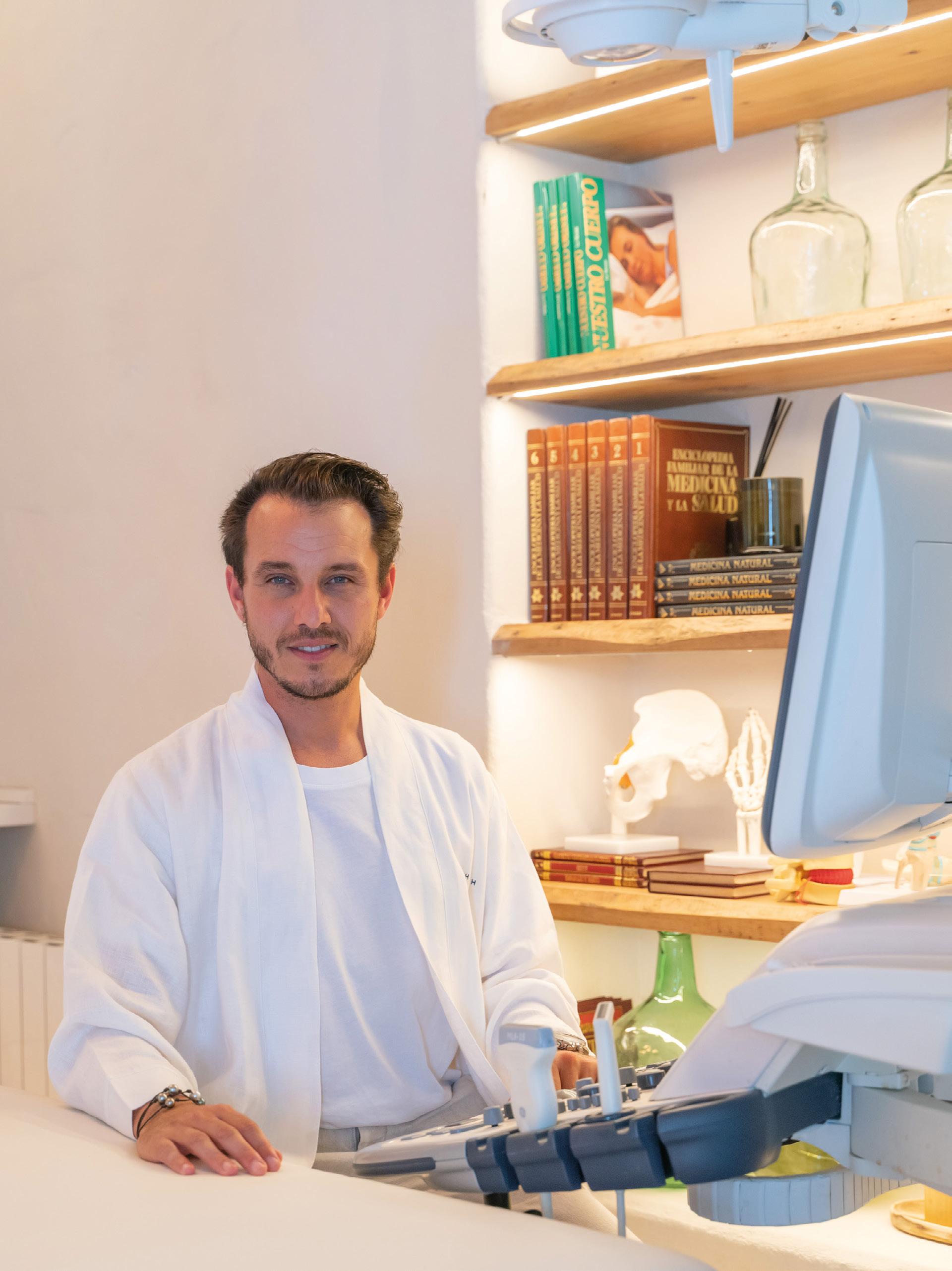
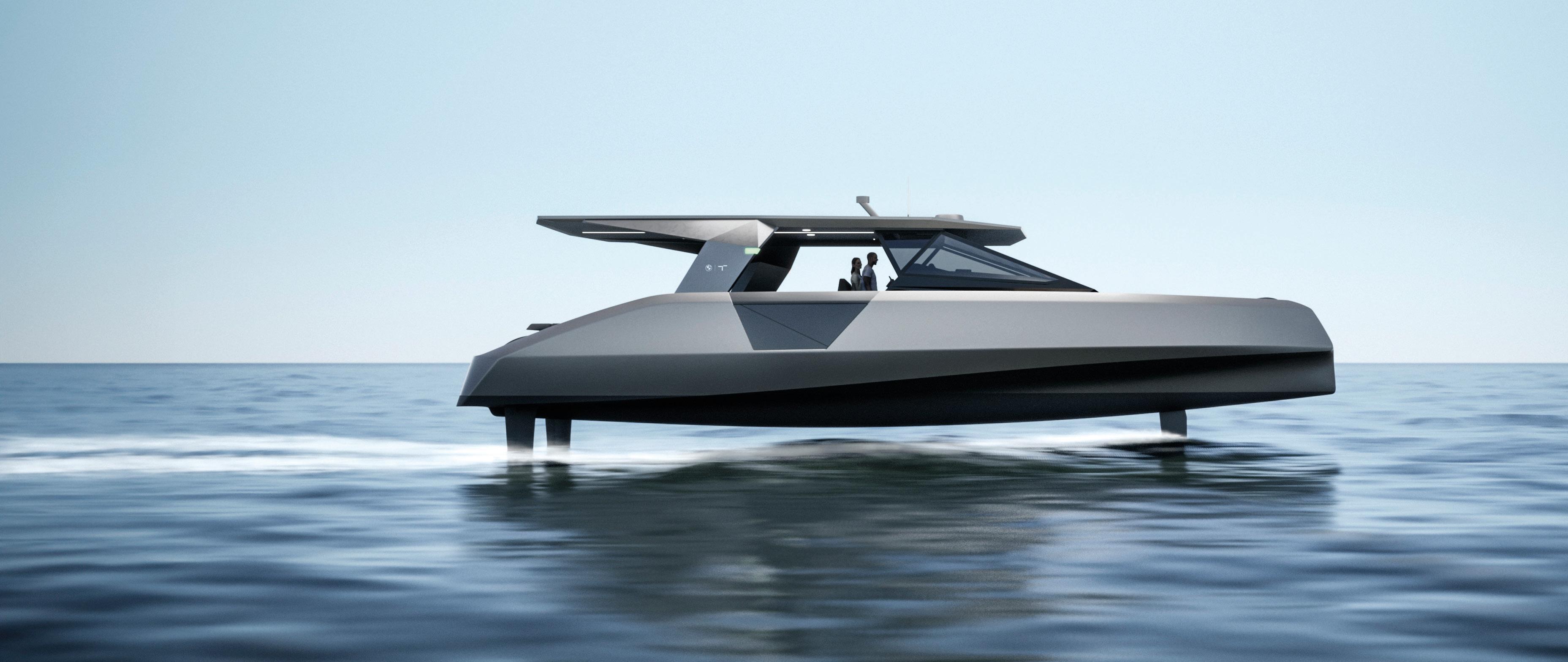
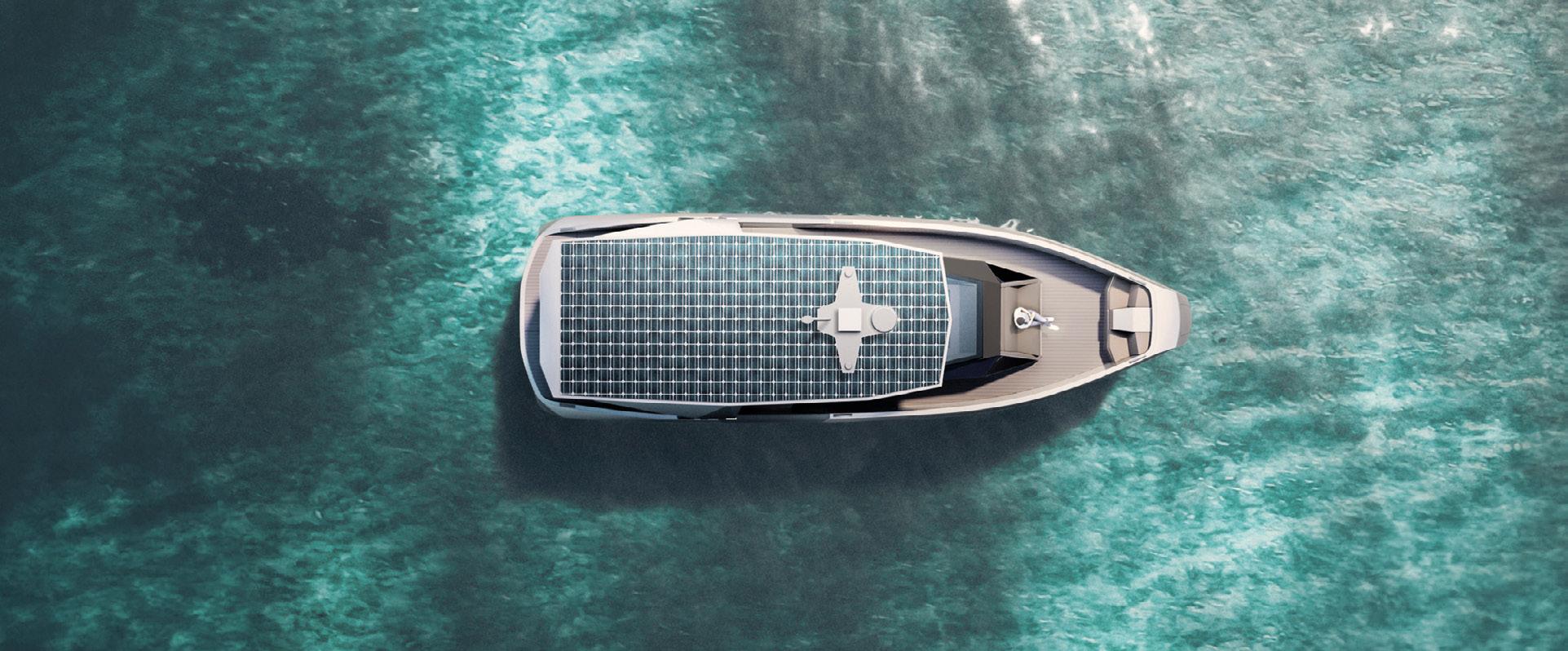

Driven by a desire to spearhead electrified mobility, BMW partnered with Tyde to create an exceptional collaboration that gave birth to a groundbreaking yacht—the electric foiling yacht THE OPEN. Unprecedented in its design, technology, and purpose, it is poised to revolutionise the luxury marine sector. The company plans to deliver the first unit in autumn 2024.
TYDE has already achieved a milestone with the launch of THE ICON, the first battery-powered maritime vehicle of its kind. With an impressive range and hydrofoils adapted from sailing racing, which significantly reduce energy consumption, THE ICON has set standards in the competitive environment and paved the way for THE OPEN.
THE OPEN, the first climate-friendly open luxury yacht, represents a class of innovative watercraft that is characterised by a revolutionised user experience, the most advanced automotive technology, radical innovations, and progressive design. The open yacht concept, a
pioneer in this new category, specifically caters to the needs of private users seeking innovative and sustainable luxury products. While TYDE is responsible for the project’s concept, development, production, and marketing, BMW contributes components and expertise from the electromobility field. The design once again comes from BMW Group subsidiary Designworks’ creative studio. At a length of just under 15 metres, THE OPEN offers all the amenities of a luxury day yacht without any emissions during operation. The foiling technology, in which the vehicle rests on hydrofoils below the water level while the hull floats above the water surface, not only
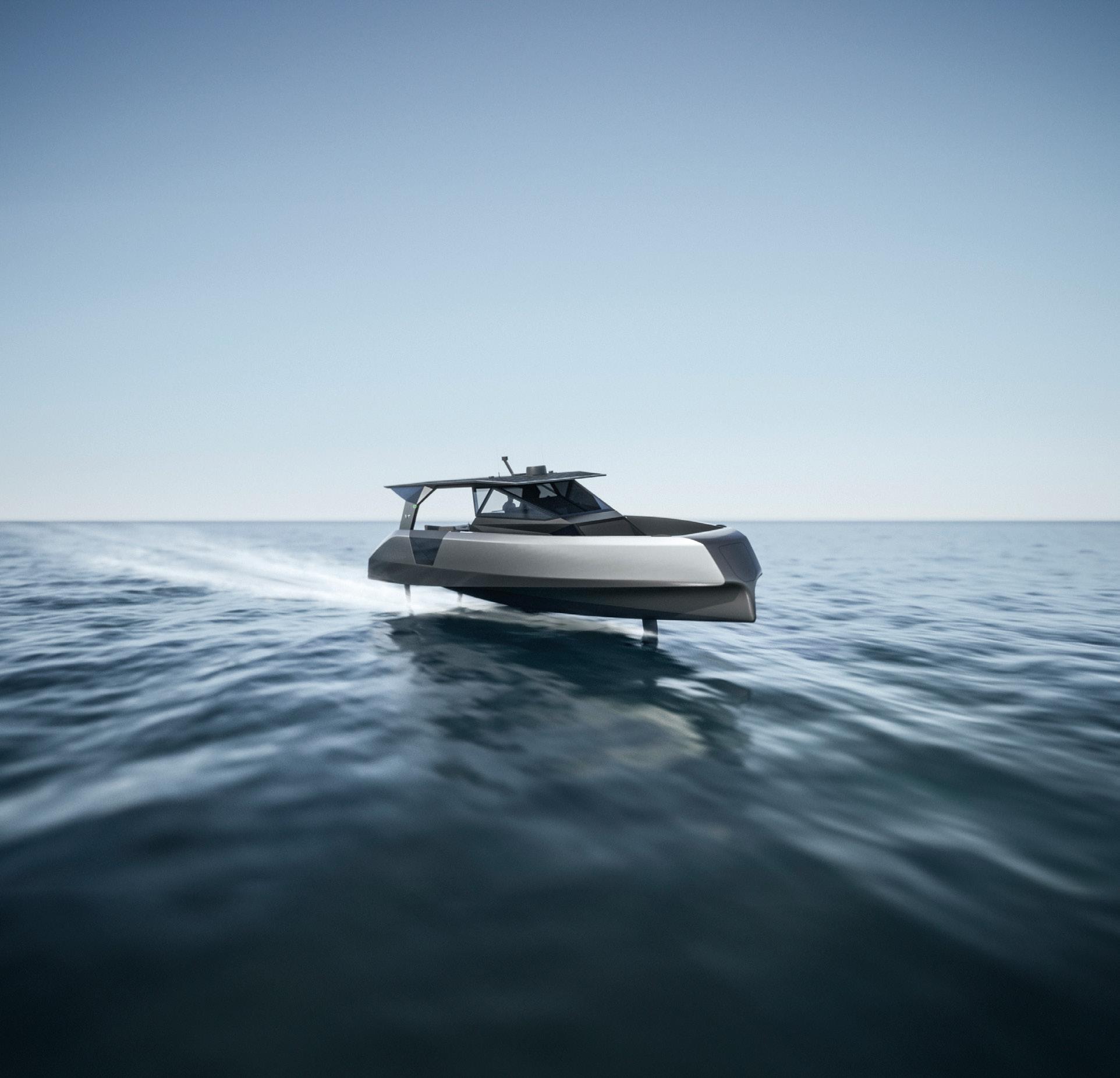
Stretching 14.8 metres in length and 4.5 metres in width, THE OPEN features a flush deck with a two-seater helm station, a sheltered galley with a spacious seating area, a double sunbed at the stern, and a generous relaxation area on the foredeck. Its full-surface solar roof not only ensures sustainable idle time, but it also highlights TYDE’s commitment to green innovation and electrification, sustainability, and maritime mobility innovations.
saves almost 80 per cent energy but also allows passengers to float extremely smoothly, even in swell. The powerful electric drive system sources its energy from high-voltage, proven BMW i3 batteries with a 240 kWh capacity, providing a range of more than 50nm. The maximum speed is 30 kn, whereas the cruising speed is 25 kn. The digital helm seamlessly integrates into one platform functions such as a 32-inch touch display, 6K resolution, Voice-activated controls, Chart and navigation, Drive train, foiling systems, pump information, Forward-looking sonar, AI-based collision avoidance, 360° camera system, Climate control, and Media & infotainment. The digital system offers a holistic user interface with a display unrivalled
in the marine industry and advanced functions like voice control for key commands. It boasts remote maintenance and remote update capabilities for all sophisticated digital functions.
Apart from the hydrofoils, the interior of the classic-looking yacht is as bright as it is luxurious with natural light from above and from the sides.
THE OPEN can be charged using the existing relatively powerful 3-phase charging facilities, installed as a standard in almost all marinas. This enables reasonably fast charging, e.g., 50% in 2 hours, even before dedicated marine charging networks are broadly available. TYDE also builds and supplies custom charging piers.



The ten teams, representing ten nations currently competing in SailGP Season 4, are: Australia, Canada, Emirates Great Britain, France, Germany, New Zealand, Rockwool Denmark, Spain, Switzerland, and the United States. The series rules feature stringent nationality regulations – tighter than those of the America’s Cup at the time –although exemptions are allowed for countries without a strong history in the sport to encourage emerging sailing nations to join the series.
Initially, the teams were owned by the competition. As expected from the outset, the fleet expanded to ten teams by Season 4, with five of these now privately owned. SailGP anticipates more teams joining for Season 5.




















Featuring flying boats, iconic international locations, world-class athletes, national team rivalry, and record-breaking speeds, SailGP has made a big splash in competitive sailing. In just a few short years, the adrenaline-fueled racing series has quickly captivated global audiences and become a sensation in the sailing world, attracting unprecedented attention and acclaim. The event showcases teams from various countries, each competing for supremacy on the world’s waters. Helmed by some of the world’s best sailors, the teams pilot identical F50 catamarans—vessels renowned for their blistering speed and agility. The SailGP’s dynamic format and sheer spectacle play a great role in the series’ success. The races are short, intense, and strategically demanding, ensuring that fans are constantly on the edge of their seats. With its unique combination of highspeed action and national pride, SailGP is here to stay for the long run. Moreover, the series’ commitment to innovation and goal to be the world’s most sustainable and purpose-driven sports and entertainment platform resonate deeply with modern audiences, further cementing its appeal.
SailGP was founded by Larry Ellison, chairman and CTO of Oracle, and a five-time America’s Cup winner Russell Coutts. Launched in October 2018, SailGP experienced a wildly successful five-race, six-team Season 1 throughout 2019. A global event audience of 1.8 billion highlighted the season, drawing more than 133,000 spectators to witness the world’s fastest sail racing. With much fanfare, the new racing circuit was announced, along with a $1 million prize purse for each season. Later, Coutts, SailGP CEO, announced a prize money upgrade from Abu Dhabi 2024 onwards. The total prize money at each event will rise from $300,000 to $400,000, to be distributed between the top three sailing teams. The Grand Final prize money will also double, from $1 million to $2 million, while $350K will be awarded to the top team on points ahead of the three-boat Championship Final. Coutts also indicated that as the league grows commercially, the prize pool will continue to increase.
The series rules also featured tight nationality rules—at the time tighter than for the America’s Cup itself—albeit with exemptions for countries without a strong history in the sport, to draw emerging sailing nations into the series.
SaiGP provides a breathtaking live spectacle for both event fans and broadcast viewers around the world, placing them at the heart of the action. In-shore, short-format racing lends itself to action-packed racing in a way not seen before in the sport, and through the innovative SailGP APP and revolutionary broadcast offer available in over 100 countries, SailGP is accessible to fans across all screens, all over the world.
The SailGP Championship consists of a packed calendar of events at iconic venues around the world. Events are made up of multiple races and take place across two days, with seven races scheduled for each Sail Grand Prix. The first day includes three fleet races, while the remaining three fleet races take place on the second day before the event winner is crowned in the Final.
The entire fleet go head-to-head in the six fleet races, with points awarded according to each team’s finishing position. Fleet races are intense and last approximately 15 minutes each. A leaderboard is produced after each race to determine the event rankings based on the points each team has been awarded in every race.
The last race of a Sail Grand Prix is the winner-take-all Final, in which the three highest-ranked teams go head-to-head to be
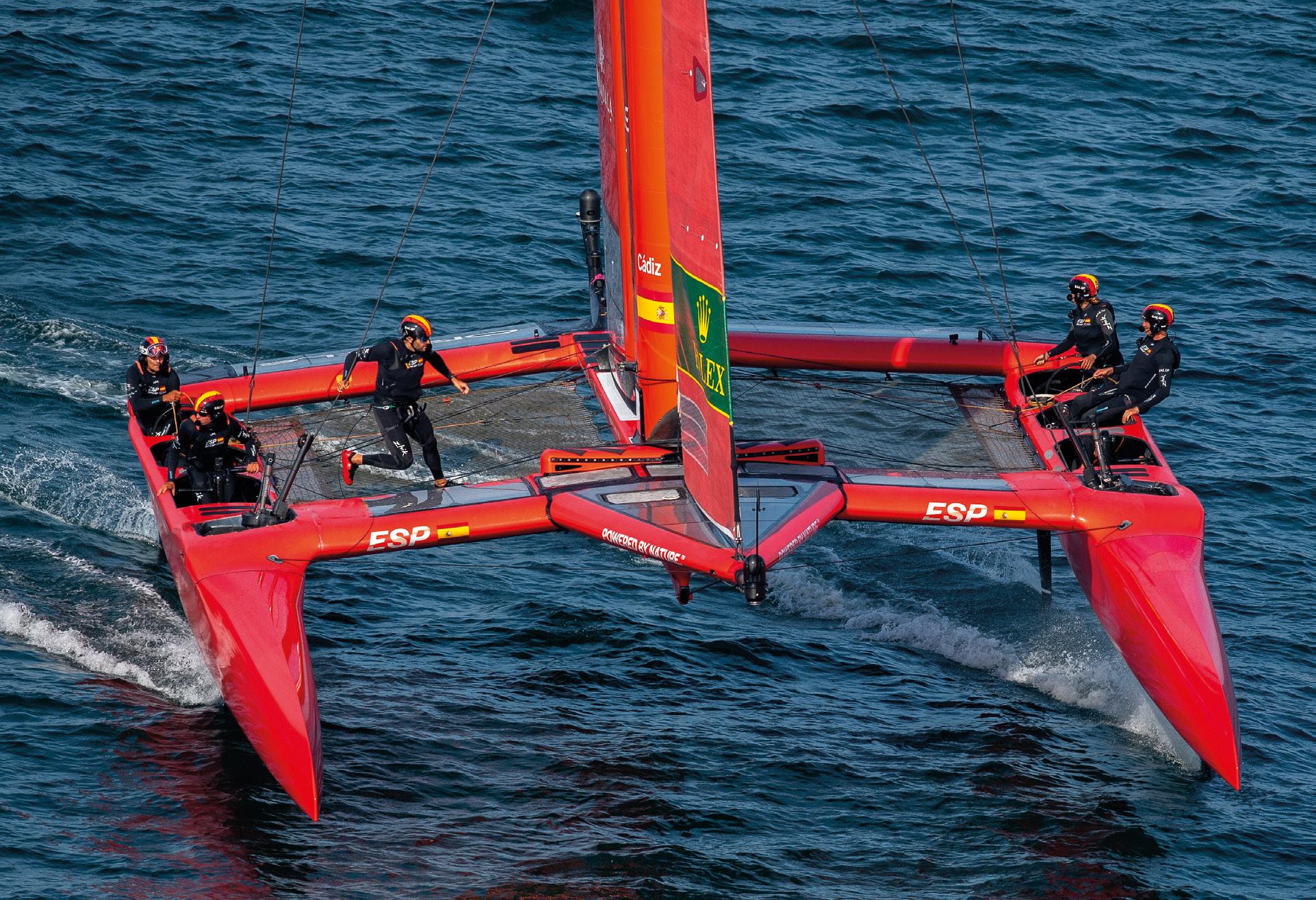
SailGP events take place all over the world in multiple iconic venues and in all kinds of weather conditions. This means the racecourse is always changing, sometimes even multiple times at the same event if the conditions dictate. Racing is intended to be on windward (upwind) and leeward (downwind) courses, with the final course to be sailed designated by the race committee no later than five minutes before the starting signal. The course may have both its position and length altered depending on the weather conditions during events, but the basic windward/leeward configuration remains the same for every SailGP race.
TARANTO
Sep 2023
Oct 2023
Dec 2023 SYDNEY
Feb 2024
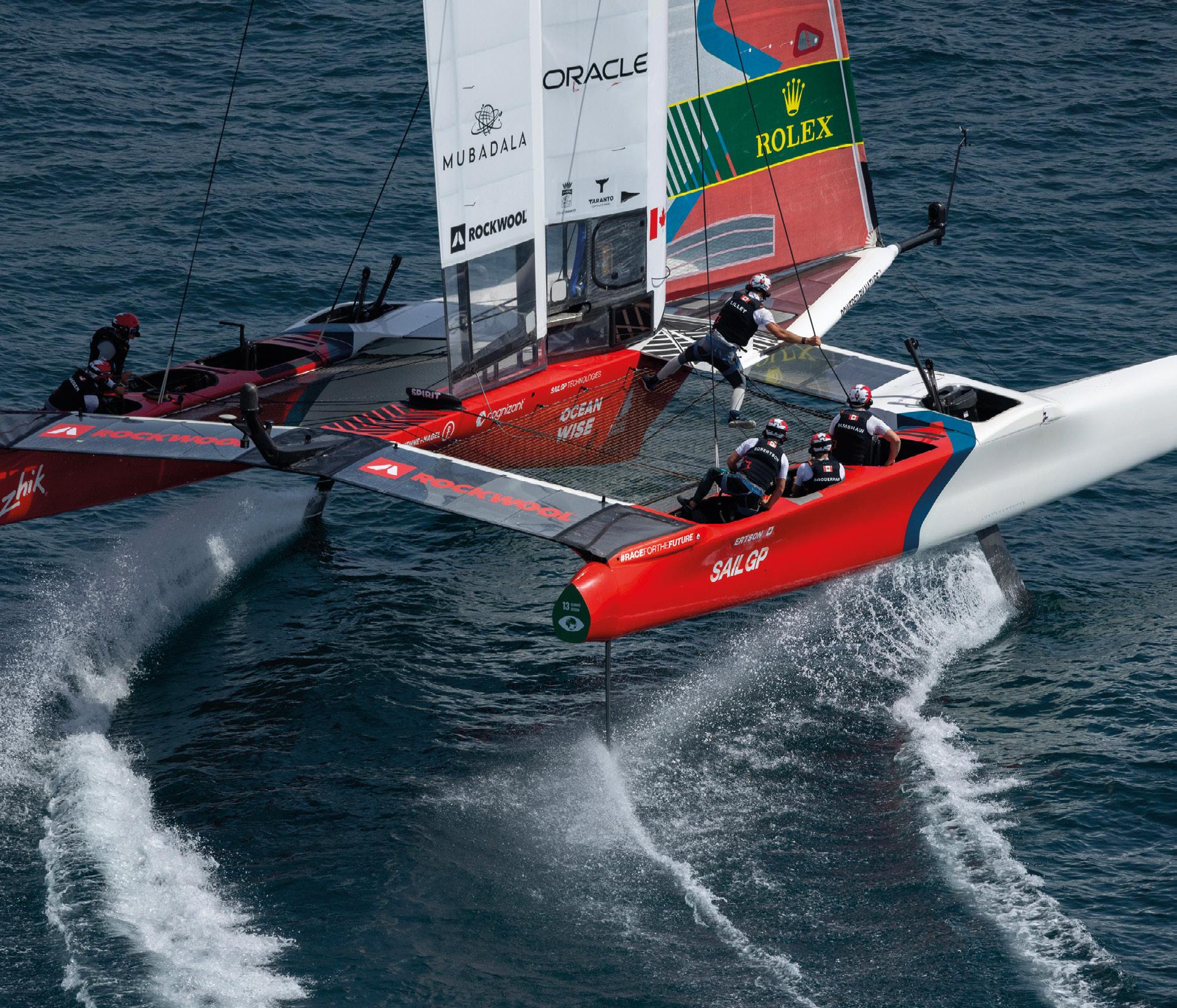
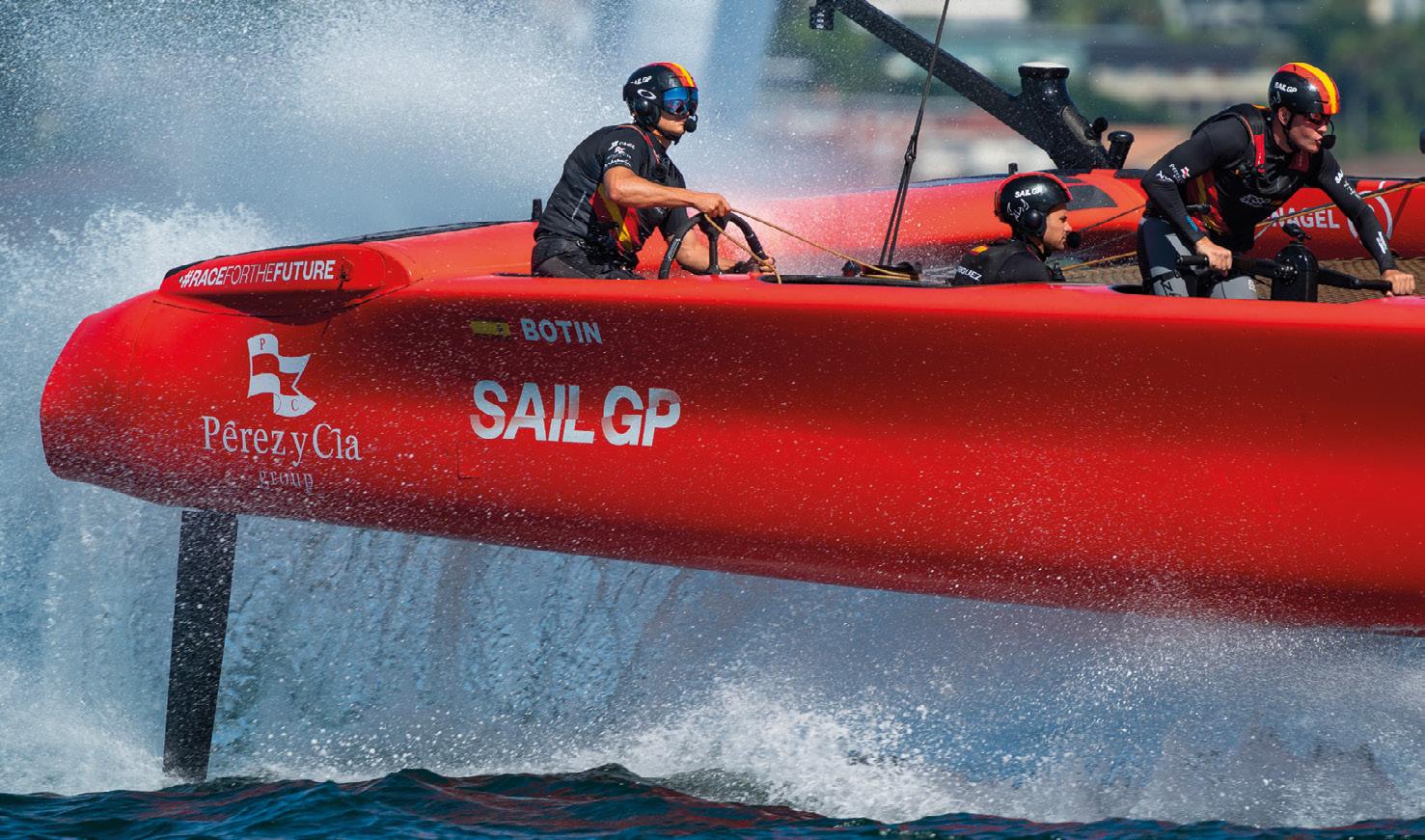
The Spain SailGP Team, Los Gallos, holds the record as the youngest team to compete in SailGP yet, after making its racing debut in Season 2. With a crew lineup boasting Olympians and world sailing champions, Los Gallos is led by the partnership of driver Diego Botin and wing trimmer Florian Trittel, both of whom race together in the Olympic 49er class. The team includes top-tier sailing talent, including flight controller Joel Rodriguez, tactician and grinder
Joan Cardona and strategist
Nicole van der Velden, grinders Joan Cardona, Stewart Dodson and Bernardo Freitas and strategists Paula Barceló and María Cantero. The team picked up their first victory at Season 4’s Los Angeles event in 2023, which marked Botin’s 20th day behind the wheel.
Dubbed the sailing world’s equivalent of Formula One, SailGP is the world’s most exciting race on water like you’ve never seen before.
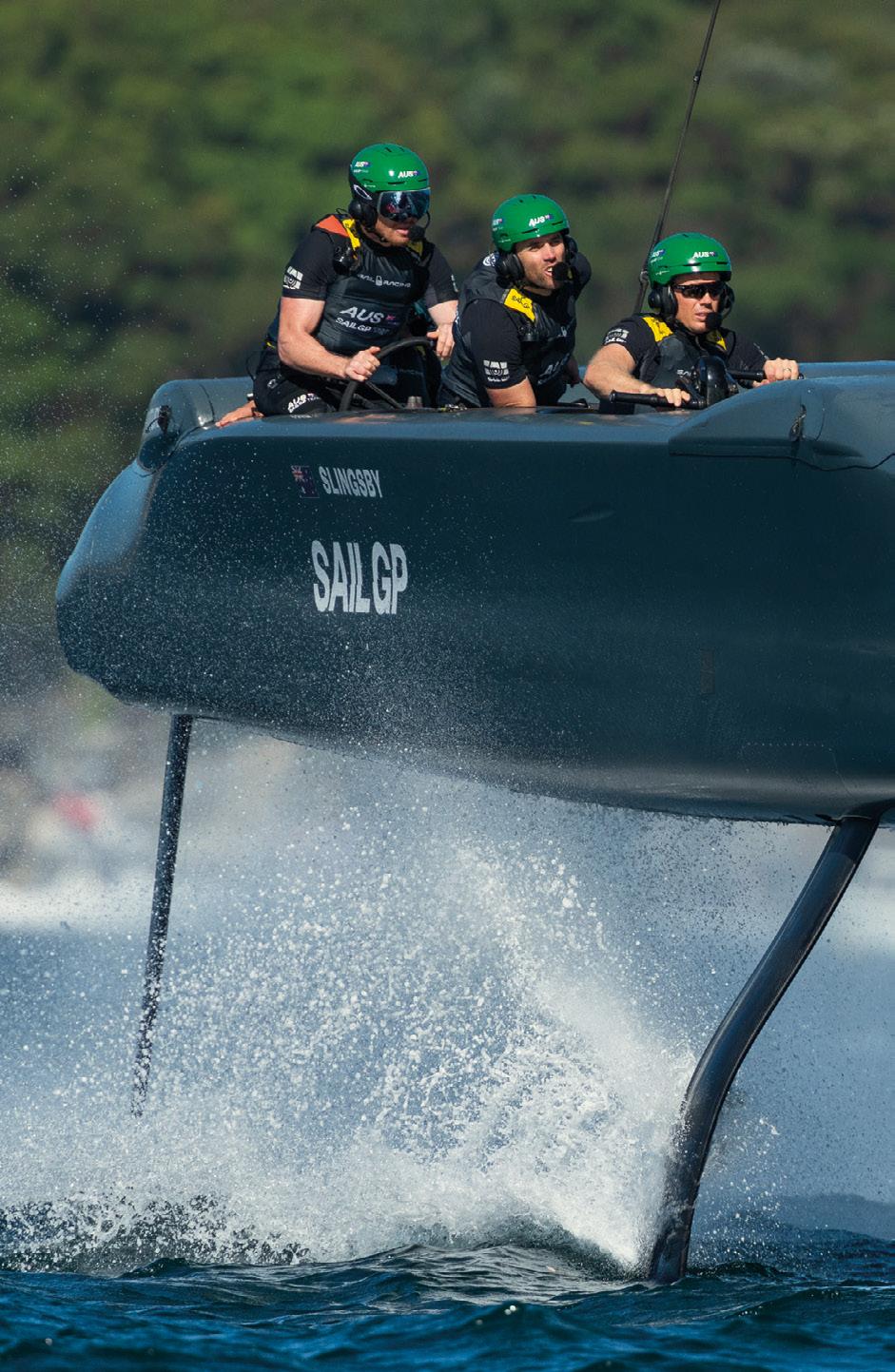
crowned event champions. If fleet racing results in a scoring tie, the boats rank according to their finishing positions in the most recent race.
The Grand Final is the final race of the last Sail Grand Prix of the season. Only the three highest-ranked teams in the season leaderboard will progress to the Grand Final, where they will go head-to-head to be crowned the SailGP champion.
SailGP is raced in equally matched high-performance, foiling, multihull racing, wing-sailed, 50-foot catamarans, known as the SailGP F50. Despite being based on the AC50 that raced in the 2017 America’s Cup, the F50 shares few similarities with its predecessor. It still foils using rudders with elevators and two daggerboards, but nearly the entire design was reworked to create a faster, flatter, and more stable flight. The foils are constructed with higher modulus carbon fibre, producing a thinner section that has less resistance at high speeds. The geometry of the boards has been extended outside the maximum beam of the boat, which provides more righting moment and a smoother transition between the vertical and horizontal sections of the foil. These improvements all work towards the boat moving significantly faster, as the onset of cavitation—the reduction of water pressure caused by the foils resulting in water boiling and creating air bubbles that increase drag and reduce lift—is delayed until much higher speeds. Drag has been further reduced as the lower section of the rudders
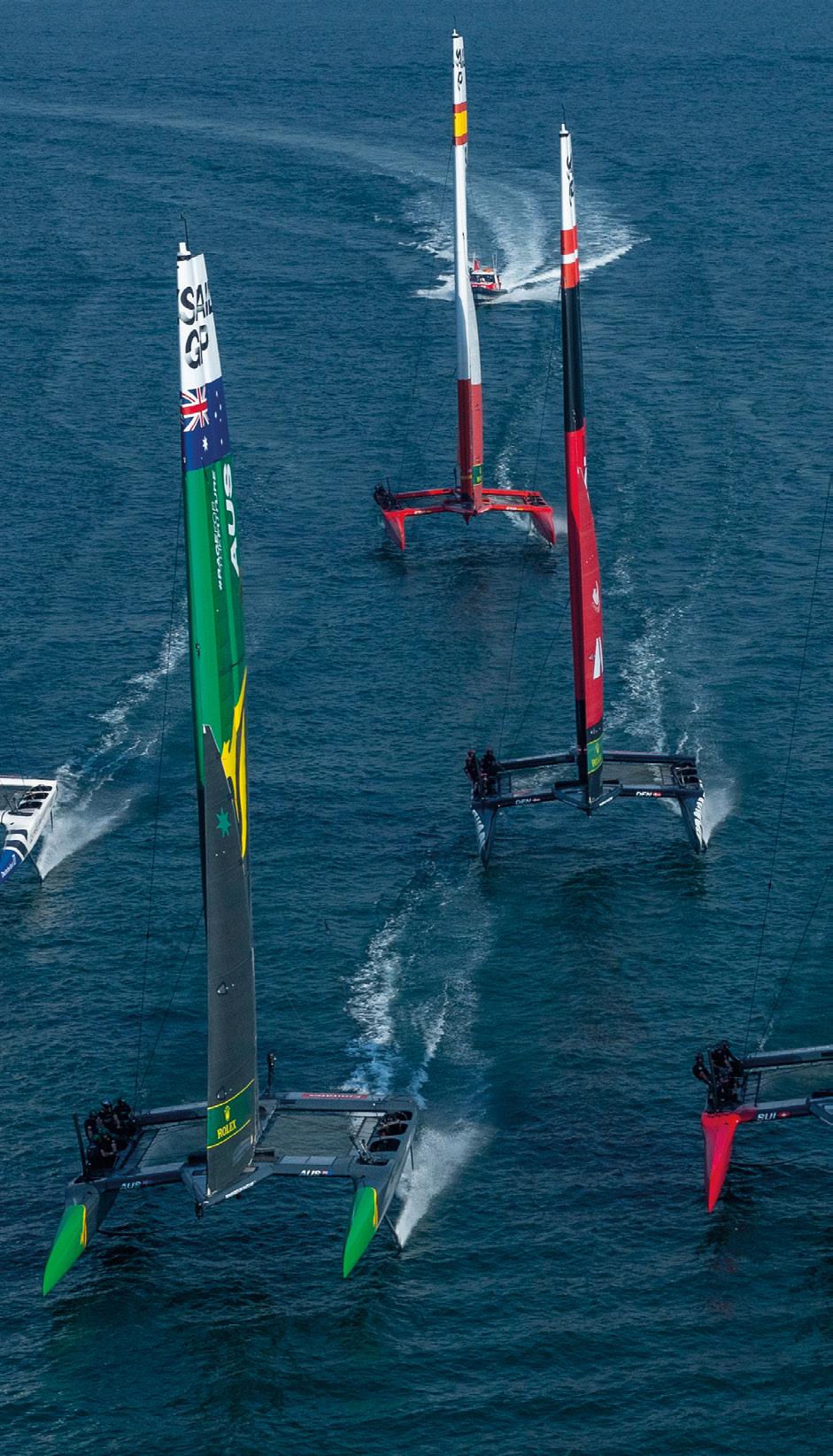
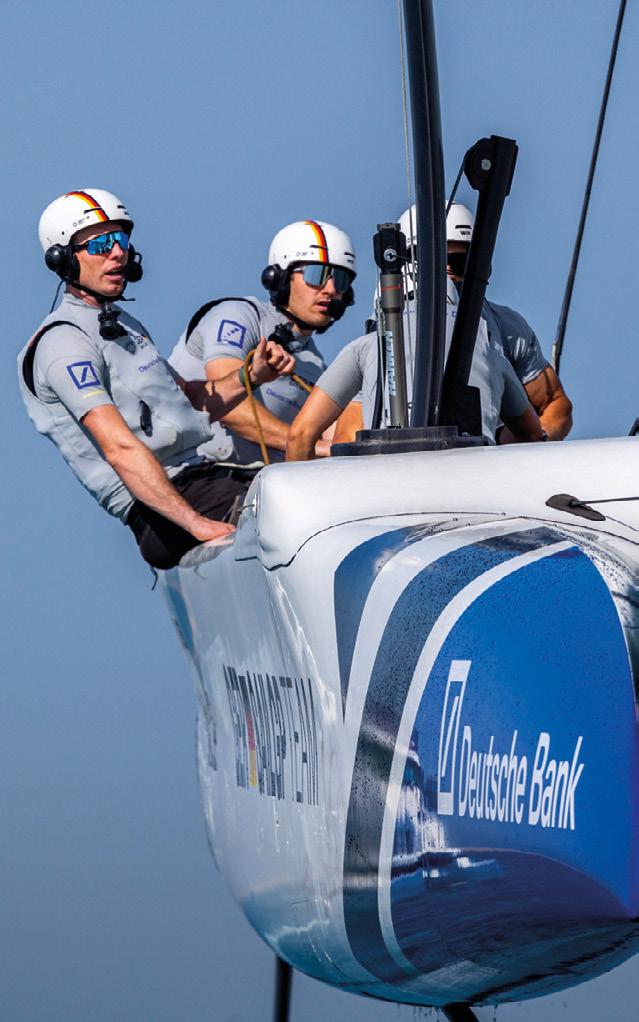
1,200+ data points on boats and athletes provide real-time data, enabling strategists to make key decisions and the design team to improve the boats. 2.
For the first time in high-performance sports, data is accessible to all teams, making races closer and enabling continuous improvement.
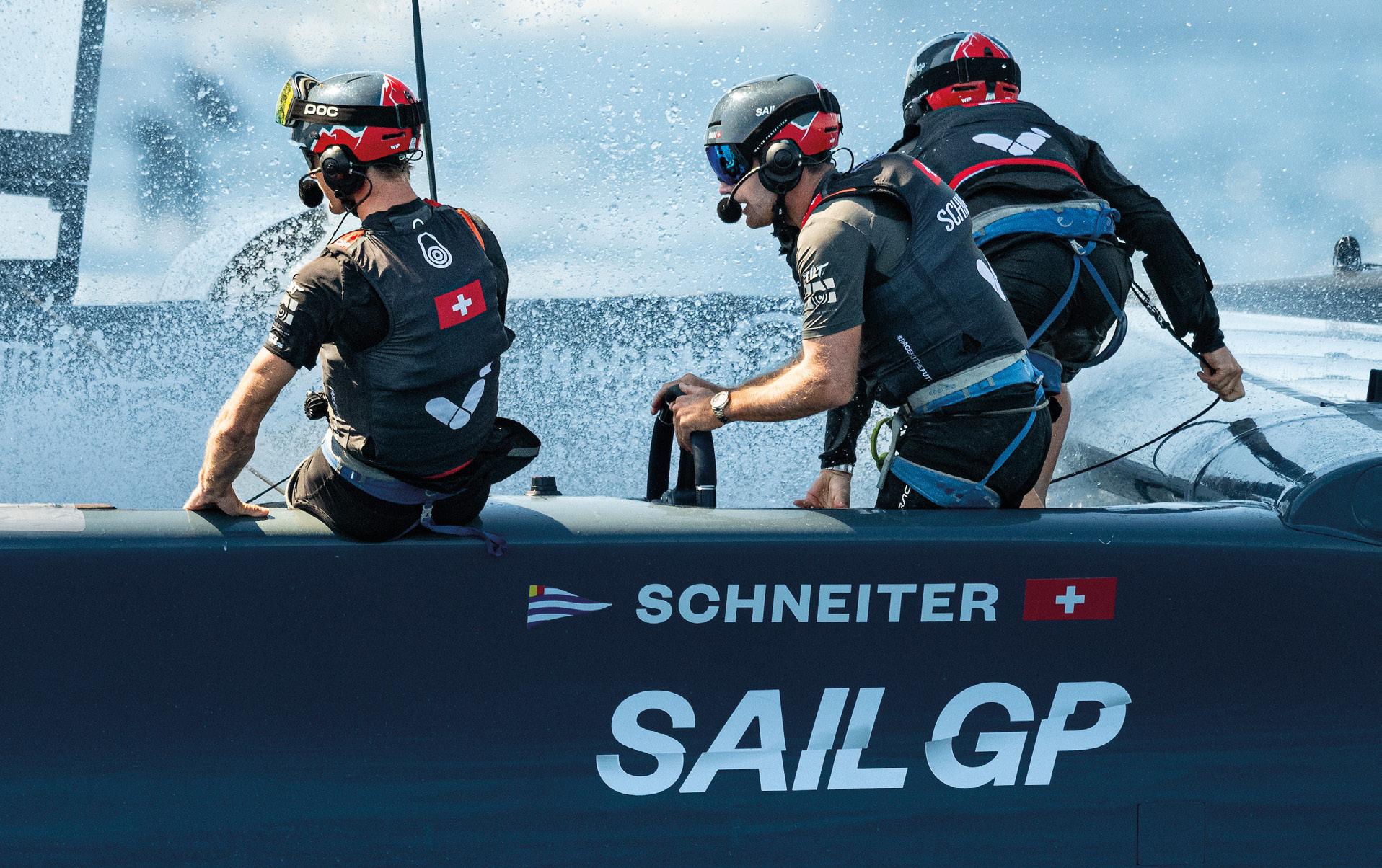










As SailGP is a one-design class, all teams use the same equipment in every race.
The Tech Team Operations Manager announces the final decision for equipment ahead of the start of racing, following a consultation process which includes the Regatta Director and one representative from each team.

LIGHT AIR RUDDER: Used in 4-16 knot wind range
HIGH SPEED RUDDER: Used in 12-30 knot wind range
29 METER WING - AP: Used in 4-10 knot wind range
24 METER WING - J1: Used in 8-18 knot wind range
24 METER WING - J2: Used in 12-24 knot wind range
18 METER WING - J1: Used in 18-24 knot wind range
18 METER WING - J2: Used in 22-30 knot wind range
LIGHT AIR BOARD: Used in 4-18 knot wind range
HIGH SPEED BOARD: Used in 14-30 knot wind range
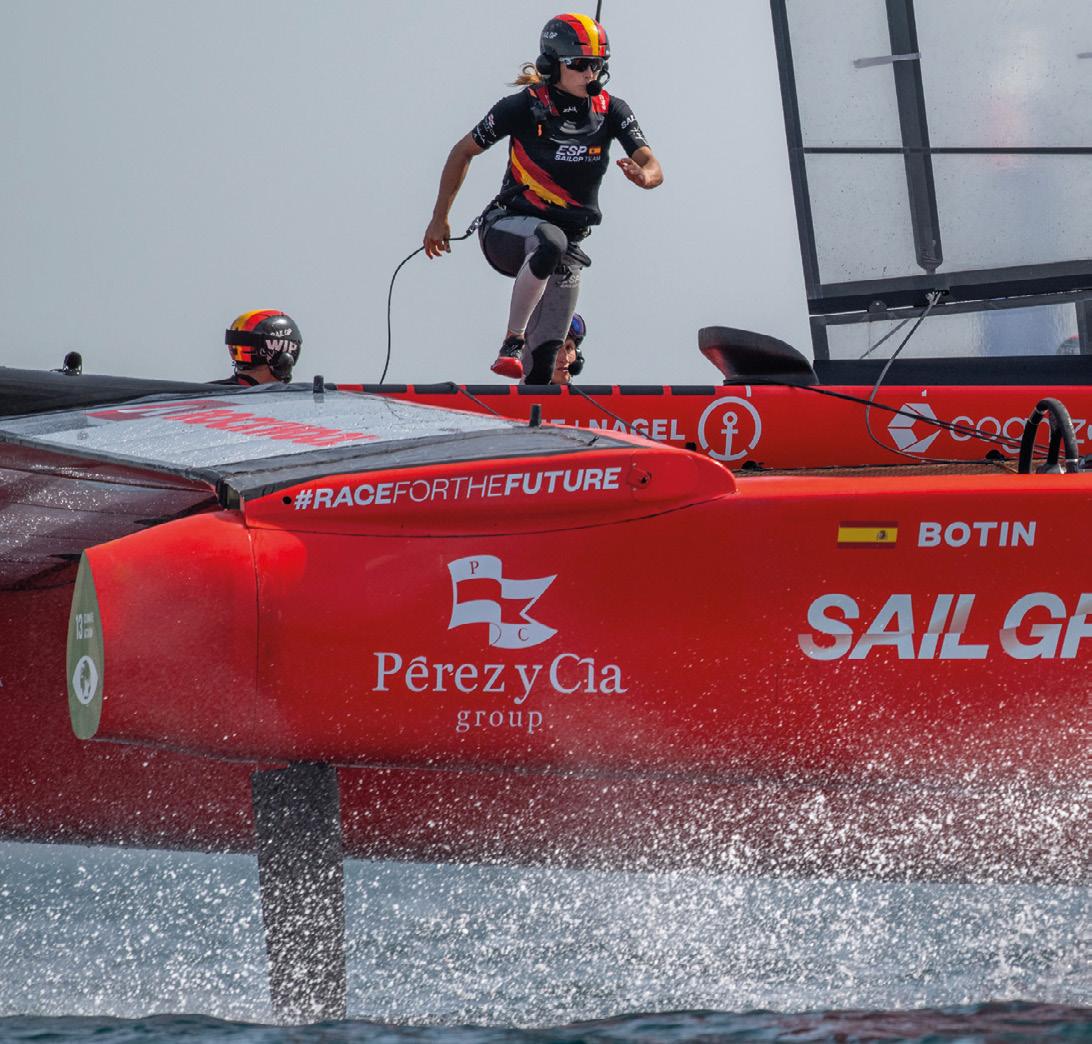
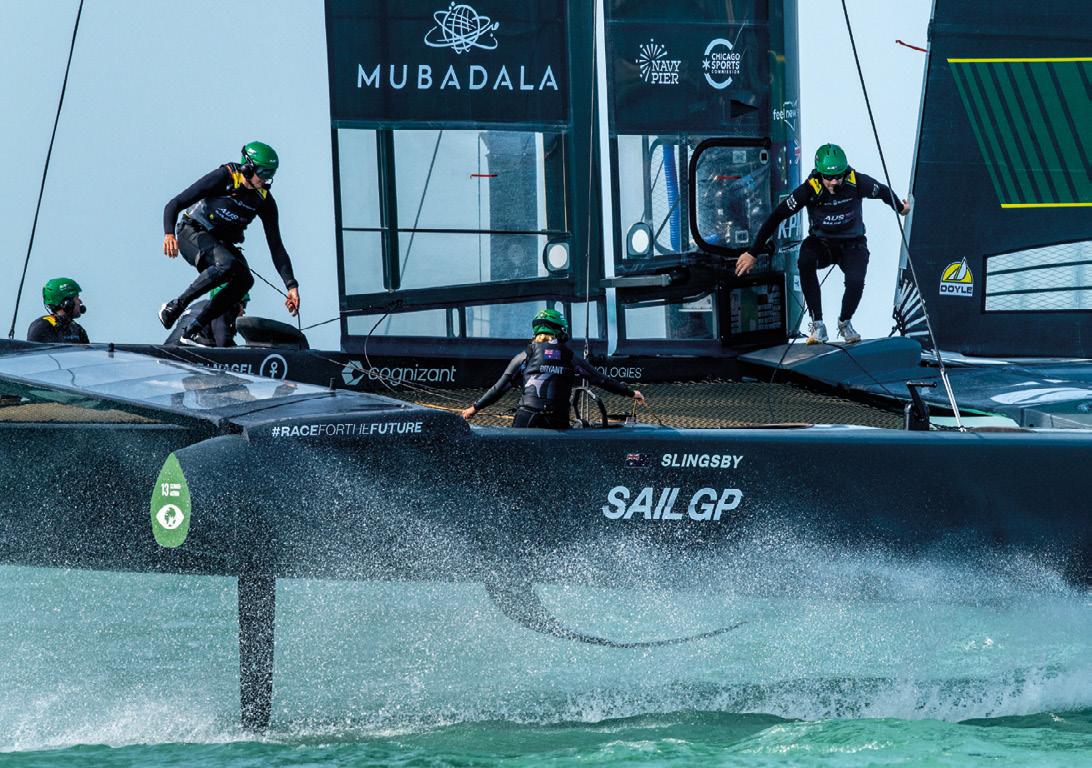
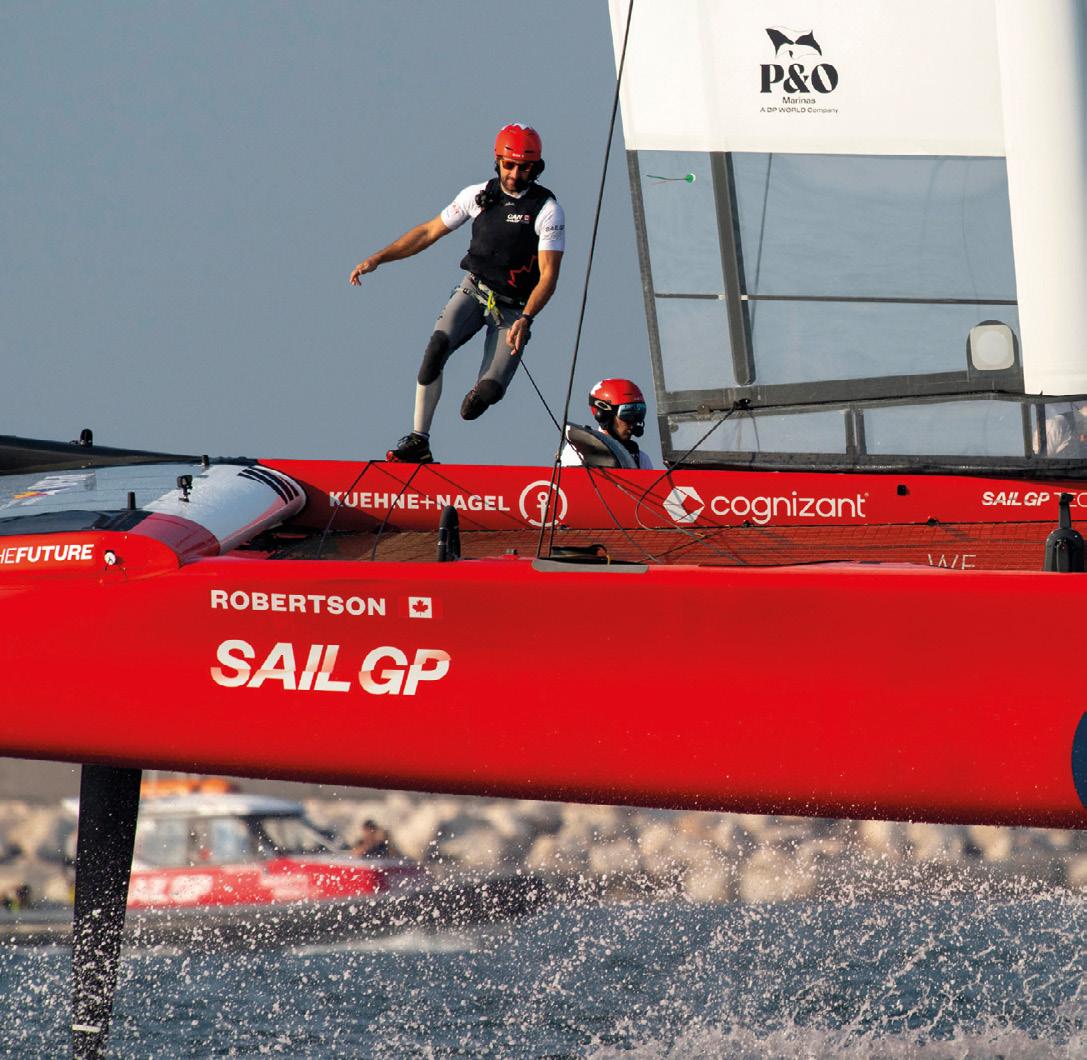
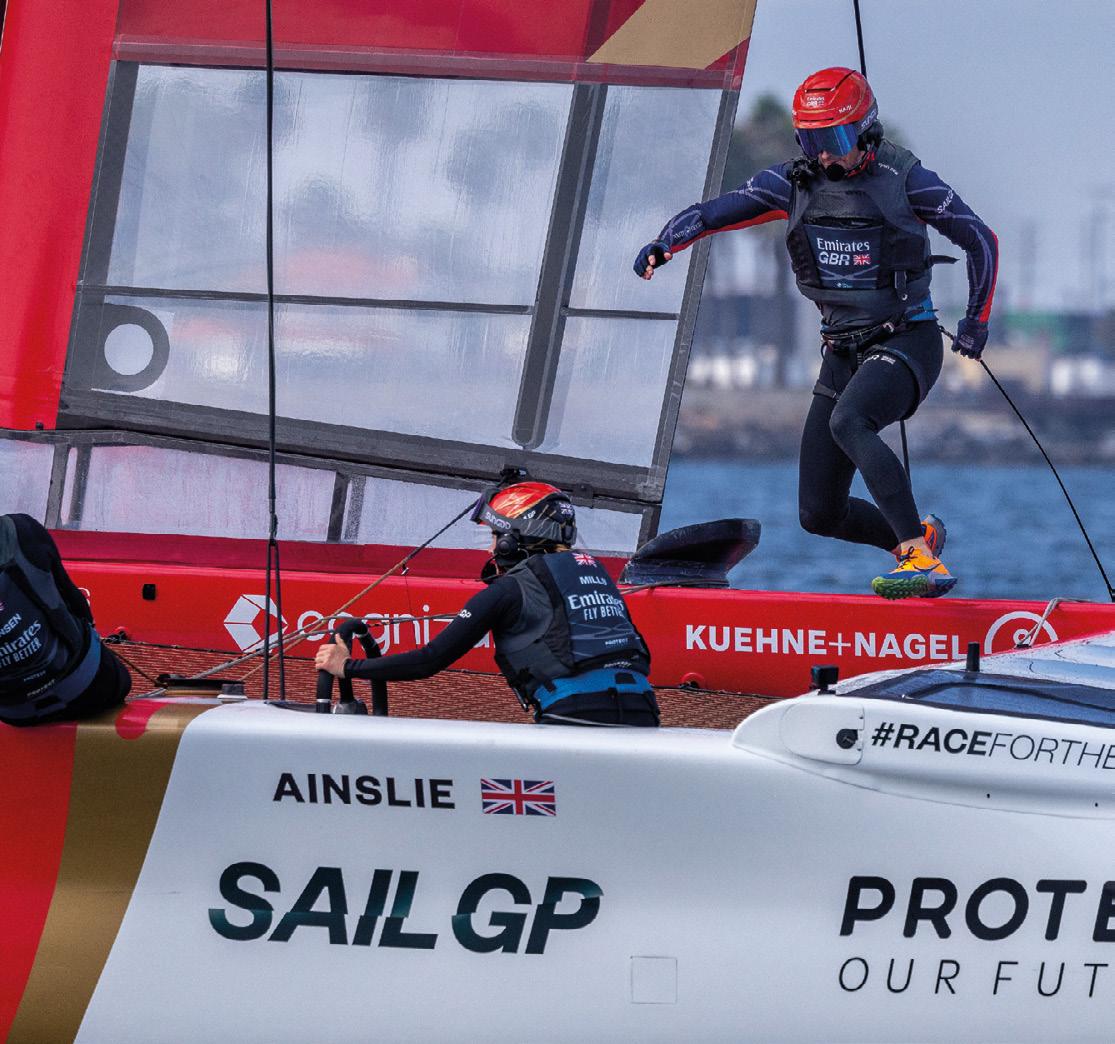

The Impact League is SailGP’s podium for the planet. It tracks the positive actions that SailGP teams make to reduce their overall carbon footprint and helps accelerate inclusivity in sailing.
is manufactured with high-strength stainless steel, and there are different size rudders, foils, and jibs that can be equipped depending on the wind speed to ensure the racing remains of the highest quality.
Although the boats are equally matched, the intention is to upgrade the whole fleet on a continuous development cycle so the design can remain at the forefront of the latest foiling developments without creating an expensive arms race for the latest tech.
Each boat has a crew of five: the helmsmen steer the boat and are in charge of boat speed and boat-on-boat decisions, while the flight controllers manage ride height (‘piloting’ the flight of the boat) and ensure the boat doesn’t touch down during manoeuvres; wing trimmers that adjust the setup of the wing sail for maximum speed; and two grinders that keep up hydraulic pressure to power adjustments to the sails for optimum speed (the F50 flight control



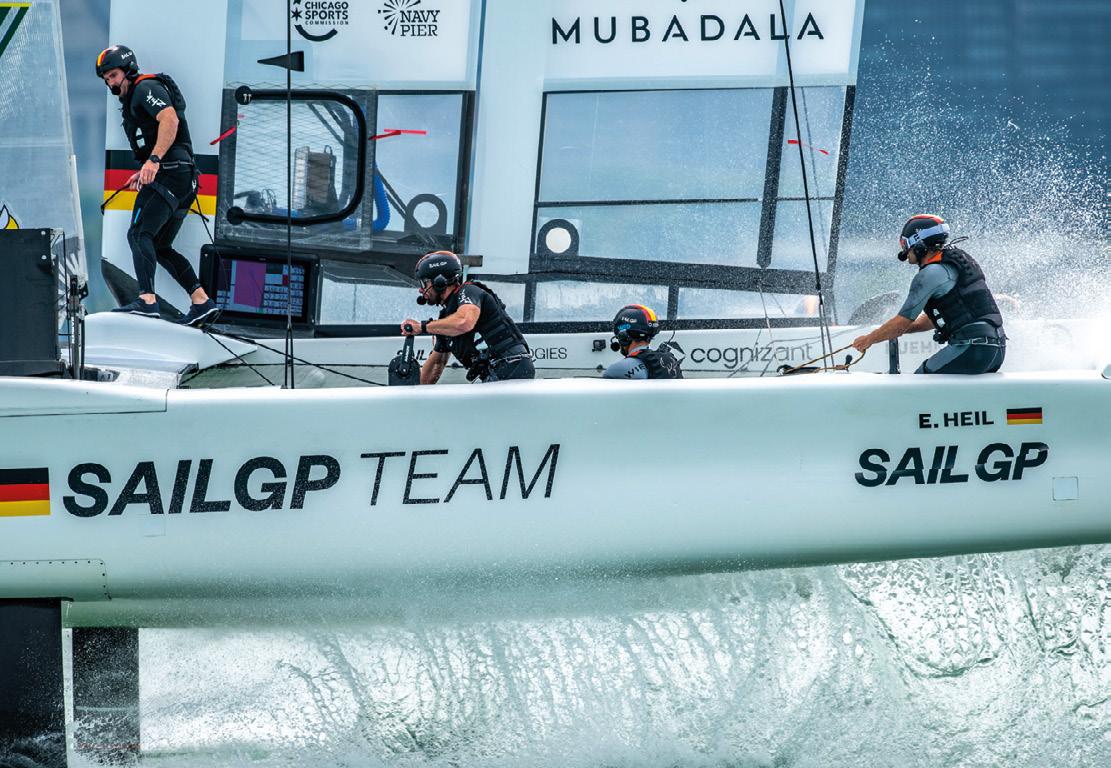
systems are battery powered).
SailGP events take place all over the world in multiple iconic venues and in all kinds of weather conditions. This means our racecourse is always changing, sometimes even multiple times at the same event if the conditions dictate. This may at times appear confusing, but the fundamentals of a SailGP racecourse remain the same regardless of the actual course layout. Racing is intended to be on windward (upwind) and leeward (downwind) courses, with the final course to be sailed designated by the race committee no later than five minutes before the starting signal. The course may have both its position and length altered depending on the weather conditions during events, but the basic windward/leeward configuration remains the same for every SailGP race.
One of the most intense parts of a SailGP race is right at the start, as the first leg takes the boats on one of the fastest points in sailing, a reach, to the first mark, or the speed mark. From there, the boats begin heading to the leeward gate at the bottom of the course, and once a boat has passed through, it starts heading upwind to the windward gate at the top of the course. The boats repeat the journey to the leeward gate once they have passed through the windward gate, and then continue racing this course until the designated number of laps have been completed before heading to the finish line.
There is no standing start in SailGP, as all races begin with the
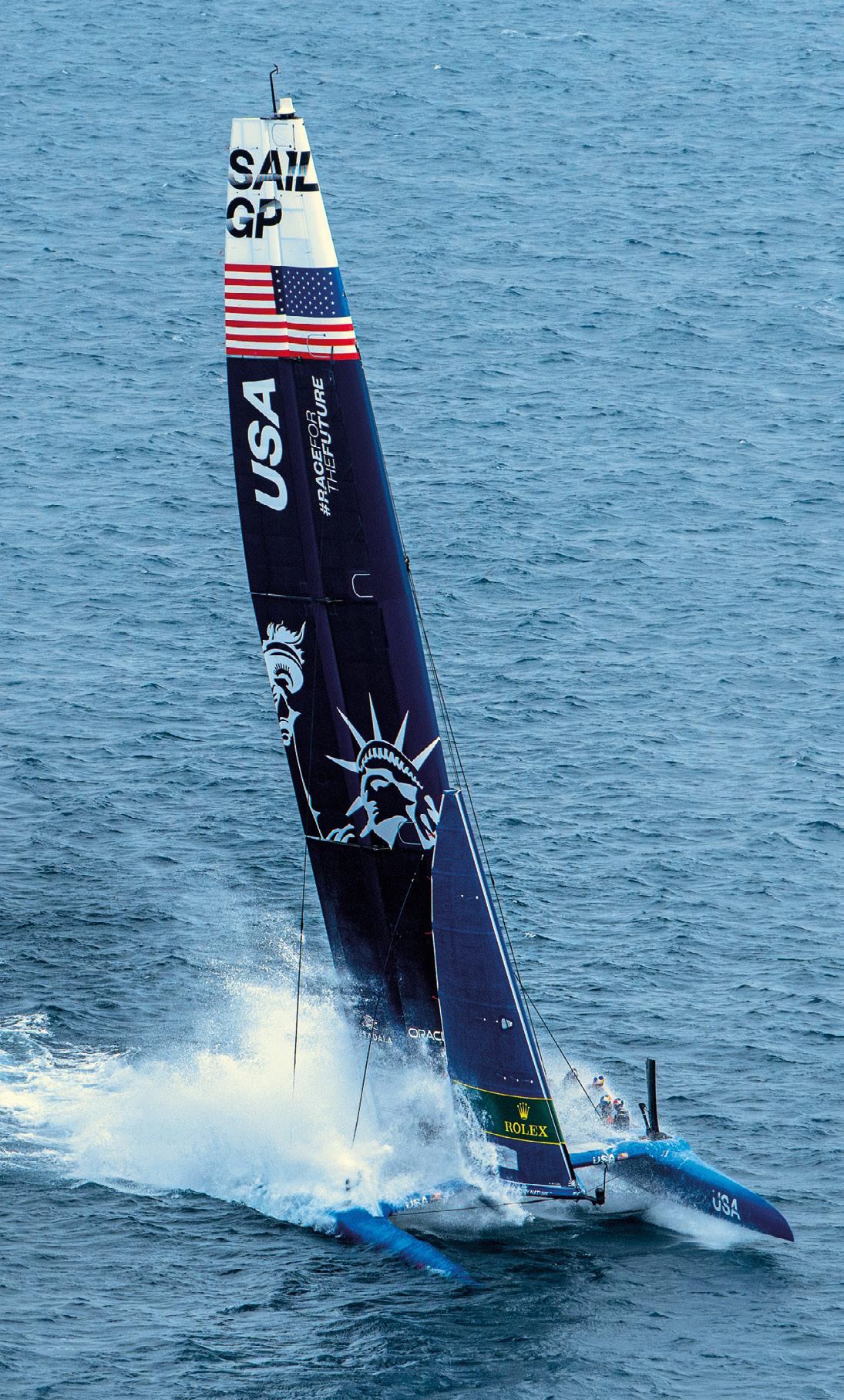
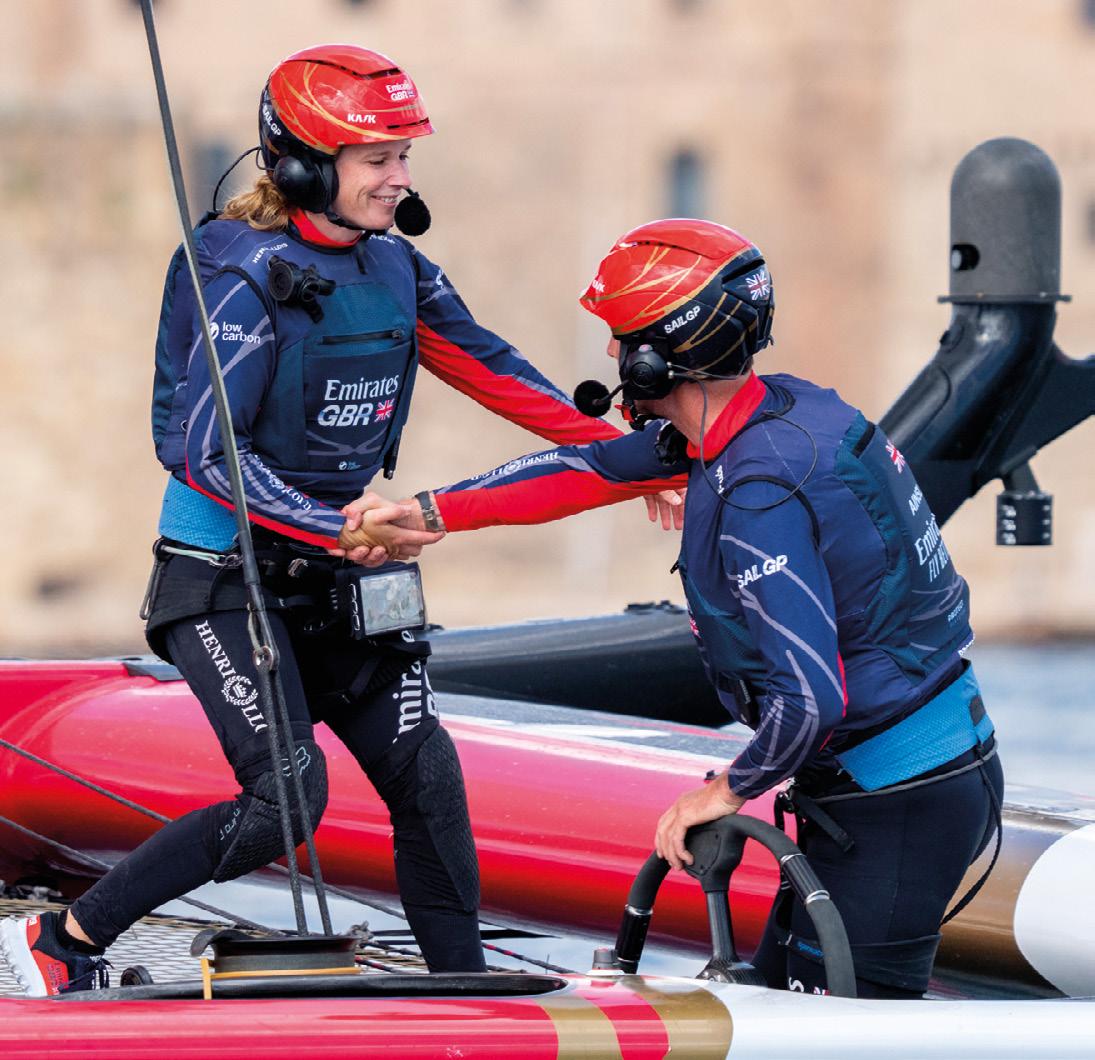
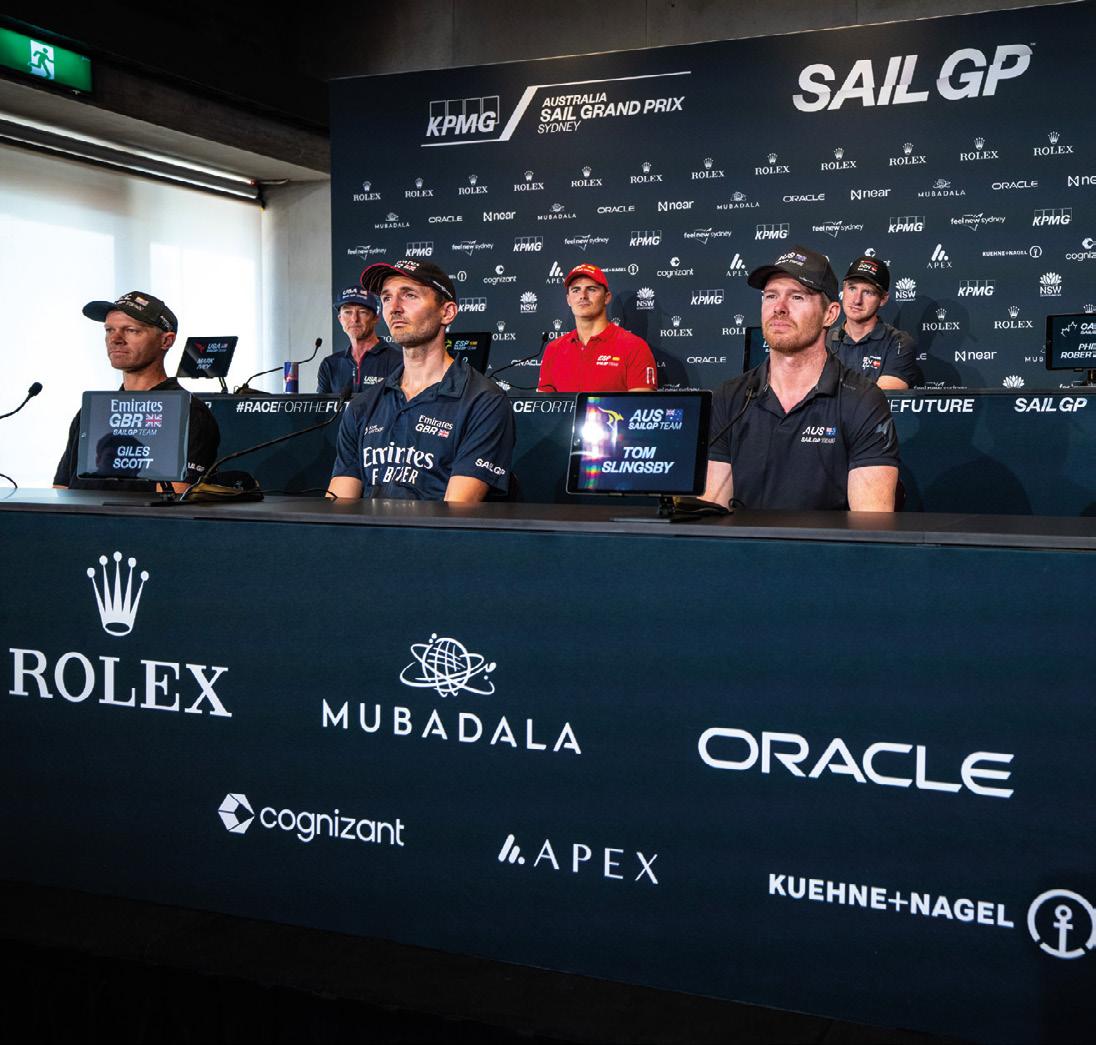

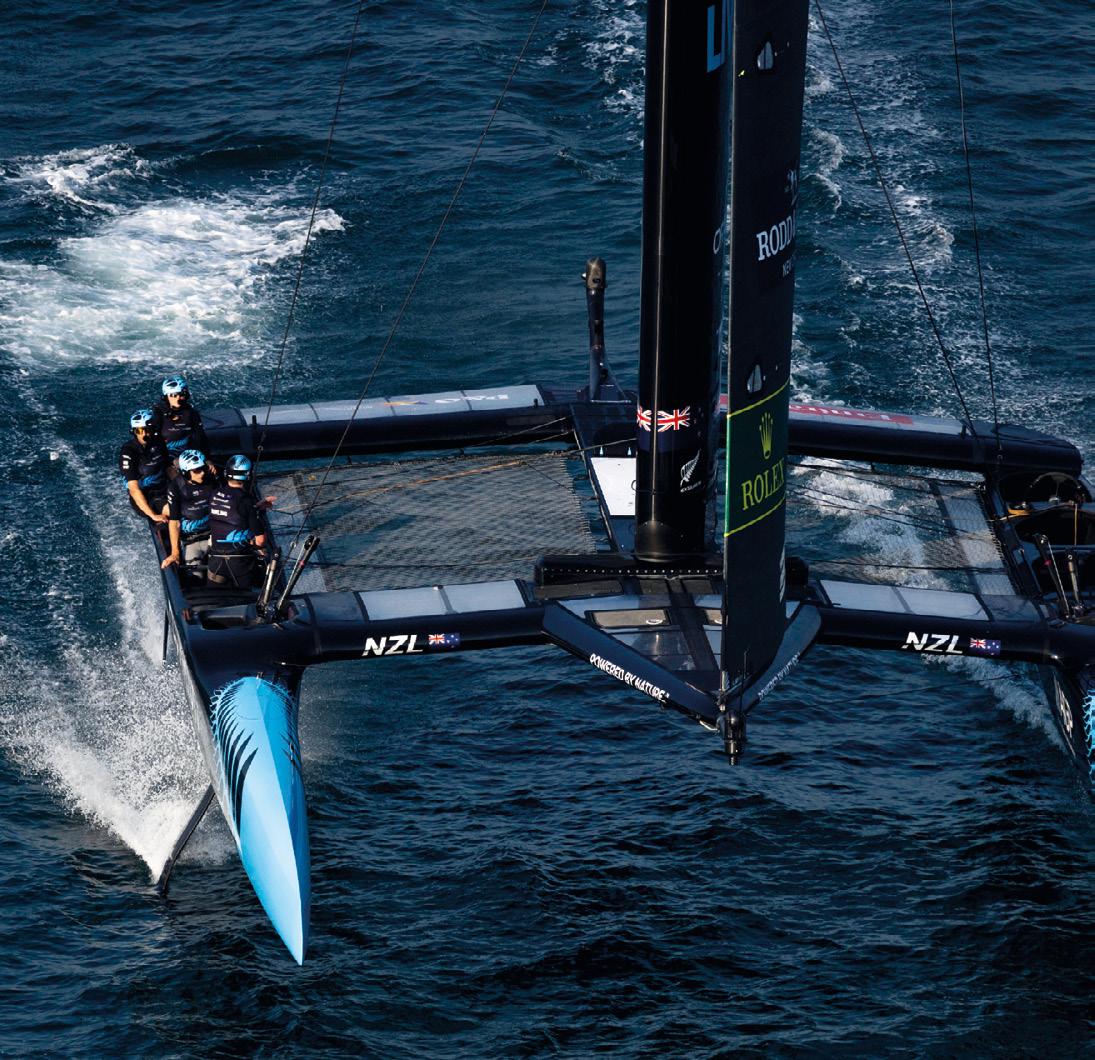
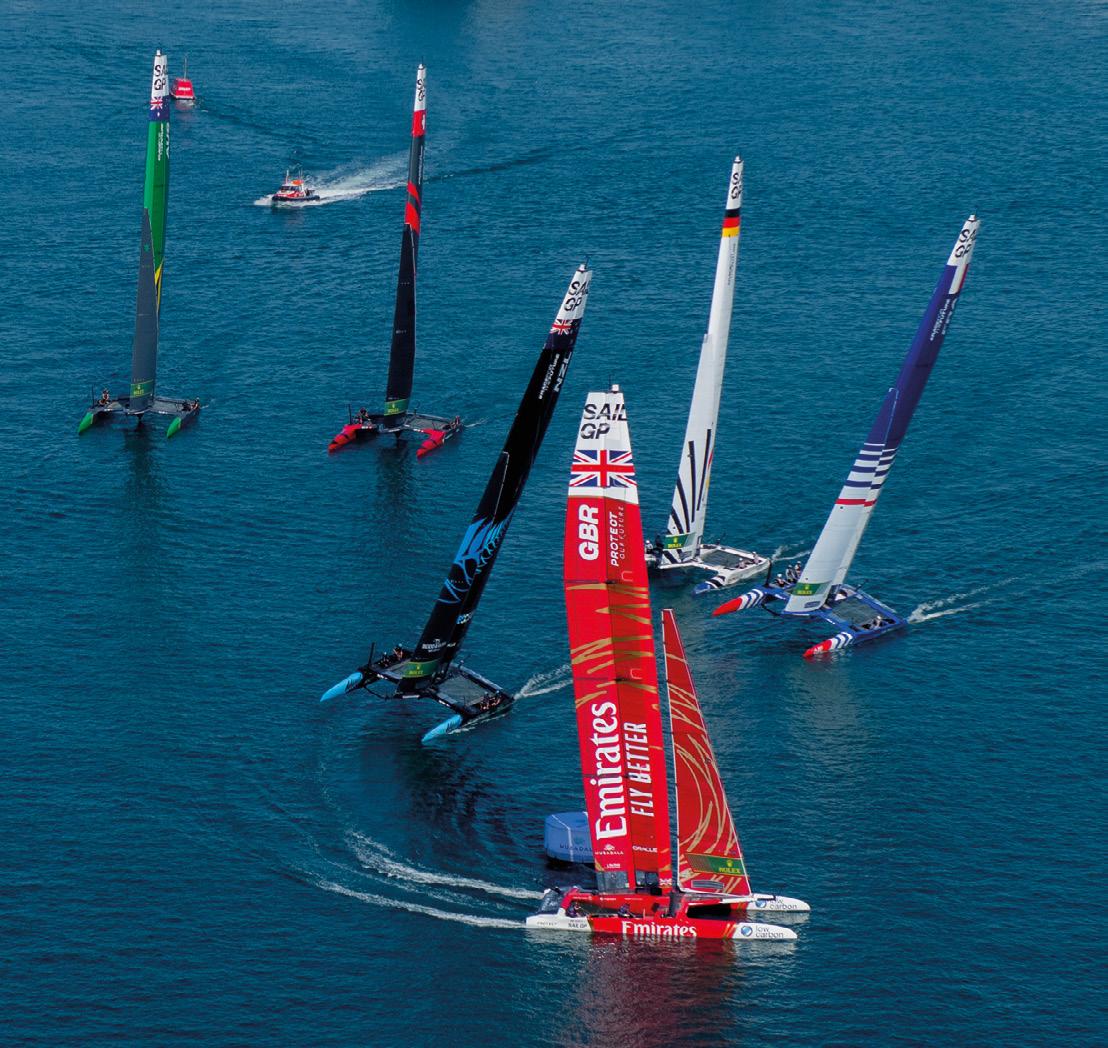

entire fleet moving. Various signals are communicated to the boats during the starting procedure, with the entire fleet required to be inside the starting area at a set time. The fleet will then start moving towards the start line as the clock counts down to the starting signal. Boats may cross the start line at any time after the starting signal has been sounded to begin the reach for the first mark. If a boat crosses the start line before the starting signal, it is declared OCS (on course side) and penalised. Season 4 began in June 2023 and will conclude with the Grand Finale in San Francisco in July 2024. The 10 teams, representing 10 nations that compete in the fourth season of SailGP, are Australia, Canada, Emirates Great Britain, France, Germany, New Zealand, Rockwool Denmark, Spain, Switzerland, and the United States. While the reigning champions, Australia, continue to perform impressively, one of the season’s surprises has been the Spanish team.The youngest team in the league, Diego Botin and Los Gallos of Spain, managed to secure a spectacular event win in Bermuda, making it their second event win of the season after their victory in Los Angeles last July. Botin said: “At the beginning of the season we were dreaming about being in this position and we weren’t sure it was possible. We still have three events and you see a lot of teams improving from event to event because of the shared data in SailGP. Conditions here are going to be super tricky. We need to stay super focused because there are currently

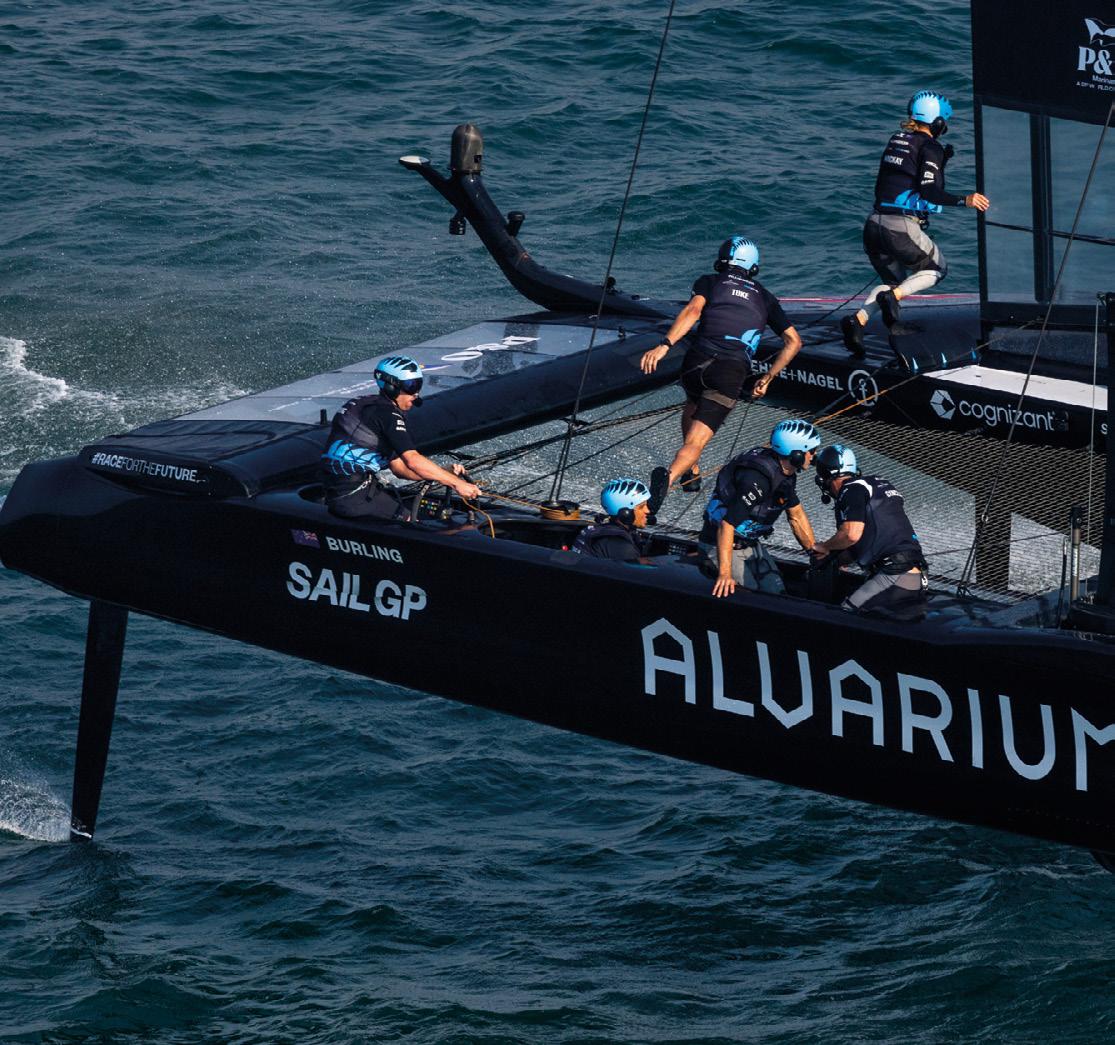


SailGP aims to be the world’s most sustainable and purpose-driven global sports and entertainment platform. “We are racing for a better future and believe sport has the power to change the world.”
a lot of points on the table.”
Event wins and leaderboard success for the Spain SailGP Team are absolutely crucial, as the team find themselves in a sticky situation where they may not have a team in Season 5 if they don’t find a buyer. And the Spanish are not alone; the same goes for France, Canada, and New Zealand.
SailGP Season 5 will start and finish in the Middle East, with the season kicking off at the end of November 2024 and then finishing – after a minimum of 13 events – back in the Middle East, in Abu Dhabi, the following November.
During that time, the 10 strong fleet, which is expected to grow for Season 5, will move to the Southern Hemisphere in early 2025 before hitting North America for a series of back-to-back events. From there, SailGP heads to Europe for a packed summer of racing before wrapping back up in the Middle East with the Mubadala SailGP Season 5 Grand Final in Abu Dhabi in November 2025. Images credit: SailGP
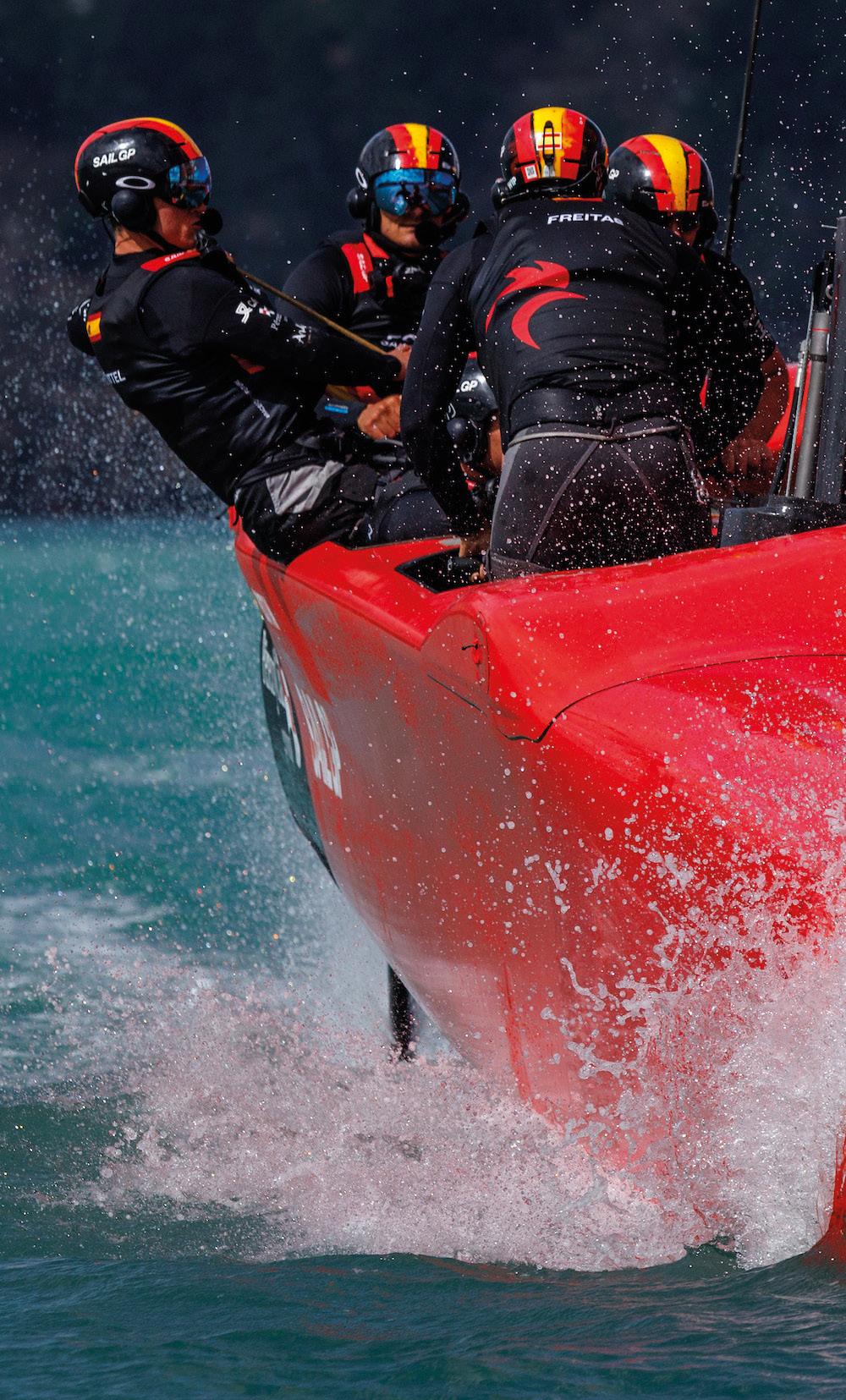
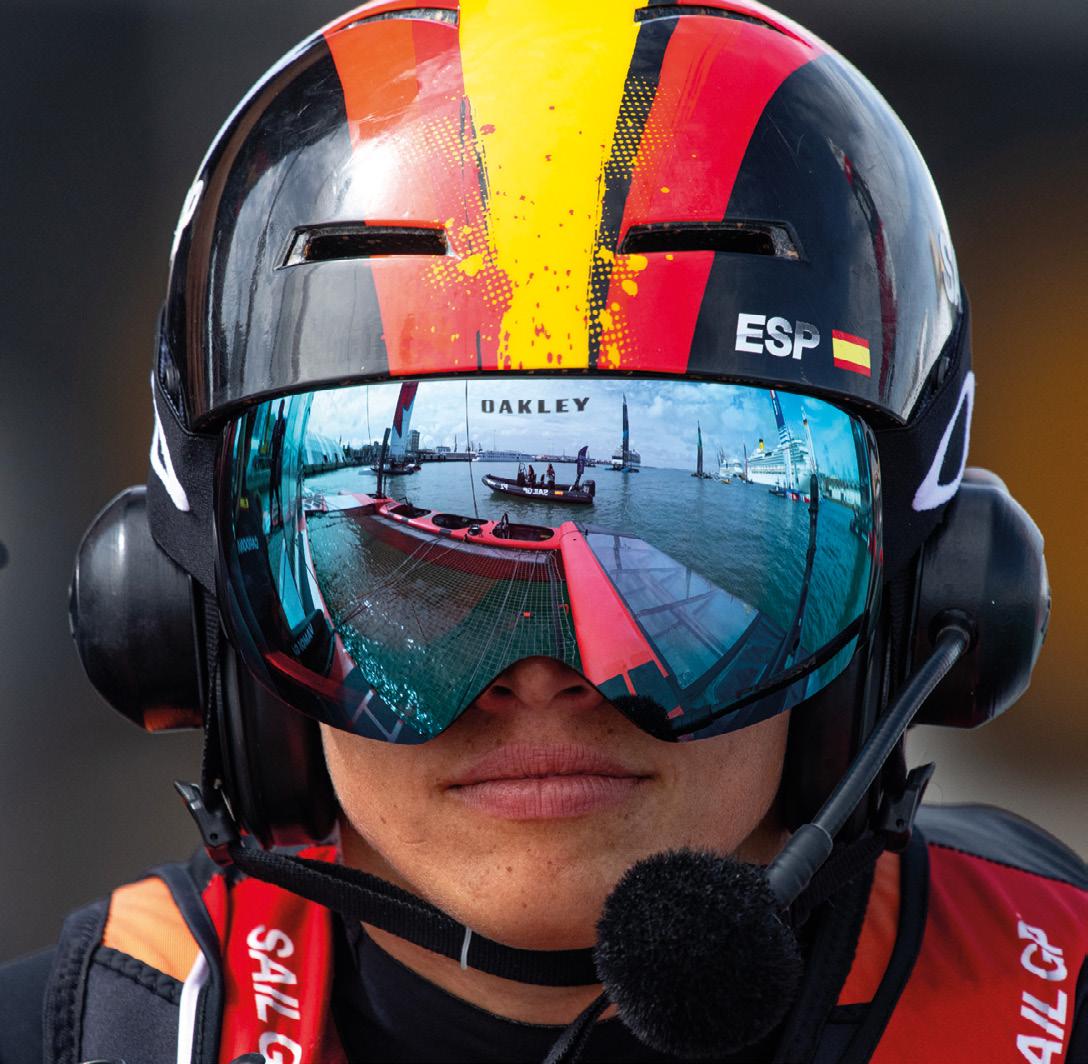
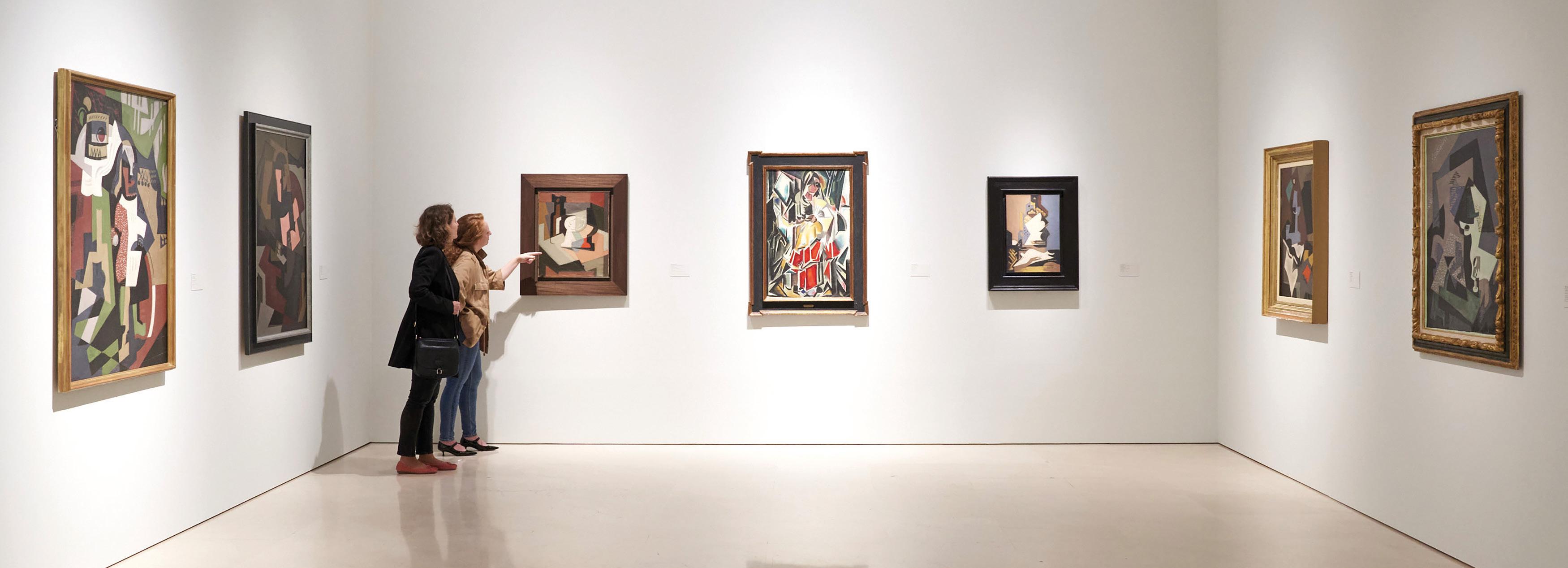
Málaga and art share a mutual adoration. Renowned for its dynamic cultural scene, Málaga is home to approximately forty museums and galleries, each presenting a diverse array of exhibitions. The city made significant investments in the arts in the early 21st century, aiming to attract tourists and solidify its status as a cultural epicentre in Andalusia. Realising Pablo Ruiz Picasso’s aspiration for a dedicated venue in his hometown to display his works, the Museo Picasso Málaga was inaugurated in 2003 within the Buenavista Palace. The Carmen Thyssen Málaga Museum, inaugurated in 2011 at the Palacio de Villalón, specialises in Spanish art from the nineteenth and early twentieth centuries, with a particular focus on Andalusian landscape painting and traditional scenes. Its permanent collection, featuring Romantic Landscapes and Traditional Scenes, Préciosité and Naturalism, and Turn-of-the-Century Art, illustrates Spanish painting evolution in the nineteenth century: from Romantic landscapes and scenes to alfresco paintings that liberally employ colour and technique, foreshadowing the avant-garde movements of the twentieth century.

Museo Picasso Málaga, The Permanent Collection
The permanent collection, devoted in its entirety to Picasso’s work, comprises more than 230 paintings, sculptures, drawings, graphic works, and ceramics created between 1892 and 1972. They embody the groundbreaking innovations that mark the artist’s career and the wide range of styles, materials, and techniques he revolutionised. The works were donated by Christine Ruiz-Picasso (widow of the artist’s eldest son, Paul Ruiz-Picasso) and Bernard Ruiz-Picasso (the artist’s grandson). The collection is periodically complemented by selected pieces from the Fundación Almine y Bernard Ruiz-Picasso (FABA) and other occasional loans.
Museo Picasso Málaga offers a profound opportunity to intimately explore the life and work of Pablo Picasso, Málaga’s native son and arguably the most influential painter of the 20th century. Since its inauguration, this institution has become indispensable for comprehending the rich tapestry of local culture.
The museum’s collection is housed in the Buenavista Palace, situated in the heart of the city’s historic quarter. This splendid edifice is a quintessential example of sixteenth-century Andalusian architecture, harmoniously blending Renaissance and Mudéjar elements. Picasso himself expressed a preference for an ‘old and secular’ building, and the Buenavista Palace, a classic Andalusian palace, fulfils this desire, providing a fitting home for the museum’s remarkable collection. The Buenavista Palace’s limitations in accommodating a modern museum led
to the gradual acquisition of fifteen houses located behind the building to facilitate its expansion. Several adjacent structures were meticulously refurbished, and new ones were constructed around Plaza de la Higuera, forming a cohesive museum complex characterised by simple, cubic white shapes inspired by Andalusian tradition. These new additions now host temporary exhibitions, workshops, a bookshop, a library, offices, and an auditorium, thereby dedicating the original palace exclusively to the permanent collection.
In 2006, the Museo Picasso Málaga project was honoured with the American Institute of Architects’ Honor Award for Architecture. According to the jury, “this project skillfully balances restoration and new interventions.”
From April 30 to September 29, 2024, Museo Picasso Málaga presents “María Blanchard. A Painter in Spite of Cubism”. The wide-ranging monographic exhibition provides a chronological survey of the various stages in the career of the artist María Blanchard (1881–1932). It sets out to highlight the symbolic richness, social engagement, formal complexity, and innovative nature of this painter’s work over the course of her relatively short artistic life. The powerful examples brought together here were undervalued in the cultural context of a period when women artists were presumed to be inferior. A cultured woman who remained faithful to her particular way of living and creating to the very end, she pushed the boundaries of the gender stereotypes of the day.
Blanchard was born into an educated, well-off family from
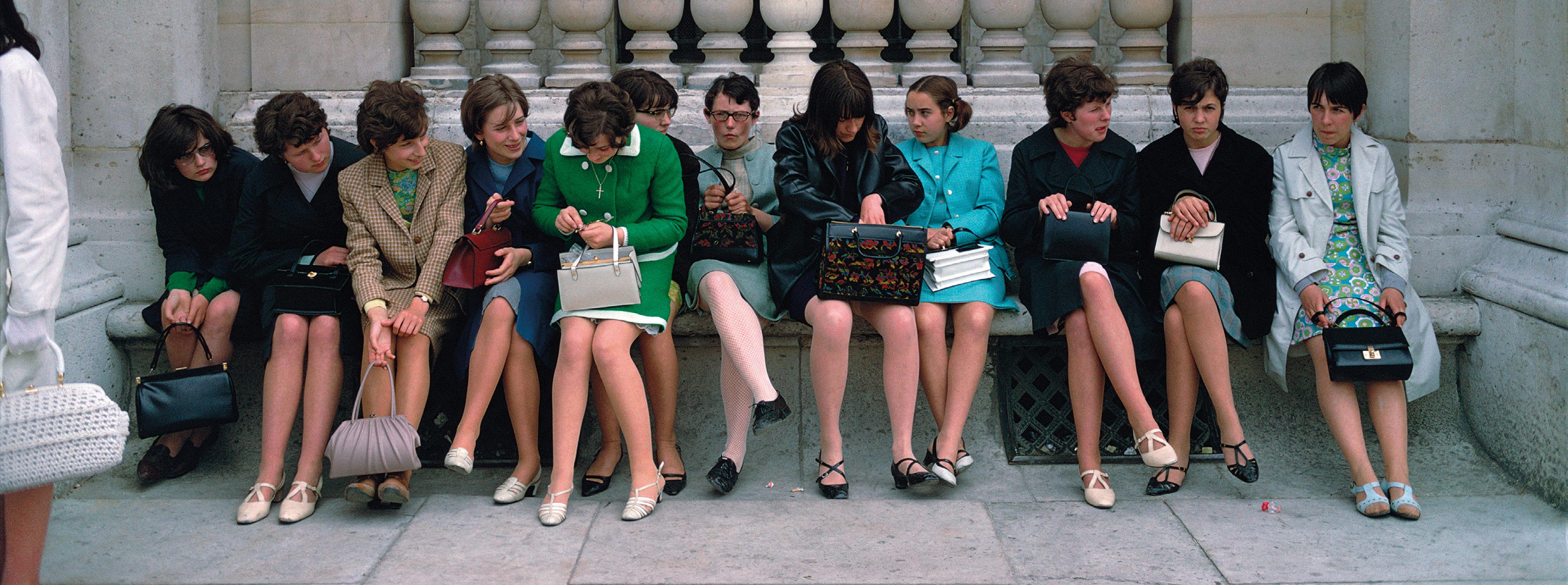
Paris, France,
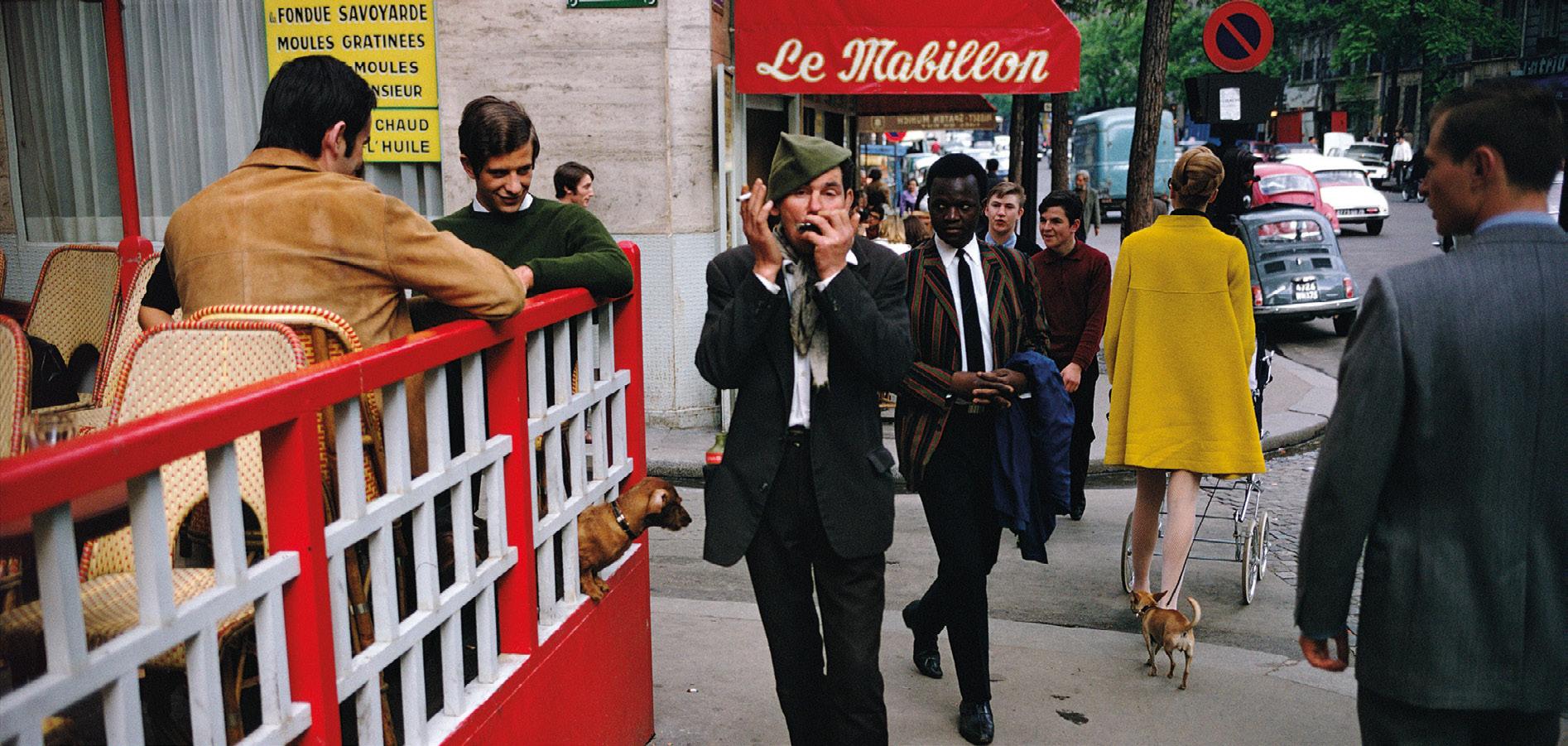

Santander. At twenty-two, she began to study art in Madrid, in a conservative, academic environment typical of nineteenth-century Spain. During this formative period, she focused on pleasant, detailed portraits of the people dear to her, the genre themes that were so fashionable in turn-of-the-century Spain—such as the fictional construction of the sensual, wild image of the ‘gypsy woman’—and romantic recreations of scenes from classical mythology. In 1909, the Spanish artist made her first trip to Paris, the international capital of modernity, where she was brought faceto-face with the aesthetic radicality of the avant-garde movements taking shape in various European cities in the early twentieth century. There, she came into contact with the foremost practitioners of the new art, such as the Spaniards Pablo Picasso and Juan Gris, the Latin Americans Diego Rivera and Vicente Huidobro, and the Russian Marie Vassilieff.
“ Notable for
her contribution to the modern movement, Blanchard was the first woman in Spain to systematically use the Cubist
method to create images from fragmentation and the combination of geometric shapes in an optical space of simultaneous perspectives. ”
María Blanchard took part in the first ‘Cubist’ exhibition in Madrid, organised in 1915 by Ramón Gómez de la Serna, receiving fiercely sexist criticism for her works. Disheartened by the bleakness of the Madrid art scene, where
tradition and academicism prevailed, she left Spain for good. She returned to Paris that summer, seeking the atmosphere of renewal and experimental circles that had turned the city into an undeniable international hub of the new visual culture. It was then that she fully joined the group of artists involved in the Cubist adventure. The movement had arisen from a small, improvised circle in the French capital a decade before it became a systematised theoretical discourse and was heralded and championed by so many painters that it eventually spread worldwide. This essential part of Blanchard’s artistic legacy, although short-lived, undoubtedly makes her one of the most important international figures of the Cubist movement.
Blanchard is notable for her contribution to the modern movement, and she was the first woman in Spain to systematically use the Cubist method to create images from fragmentation and the combination of geometric shapes in an optical space of simultaneous perspectives. Her period of strict, though versatile, adherence to Cubism ended around 1921. “Girl at Her First Communion”, which was painted in about 1914 in Madrid

shapes, but her later style becomes more figurative and traditional,
by
clashing colours and melancholic themes, resulting in artwork that is deeply emotionally expressive.
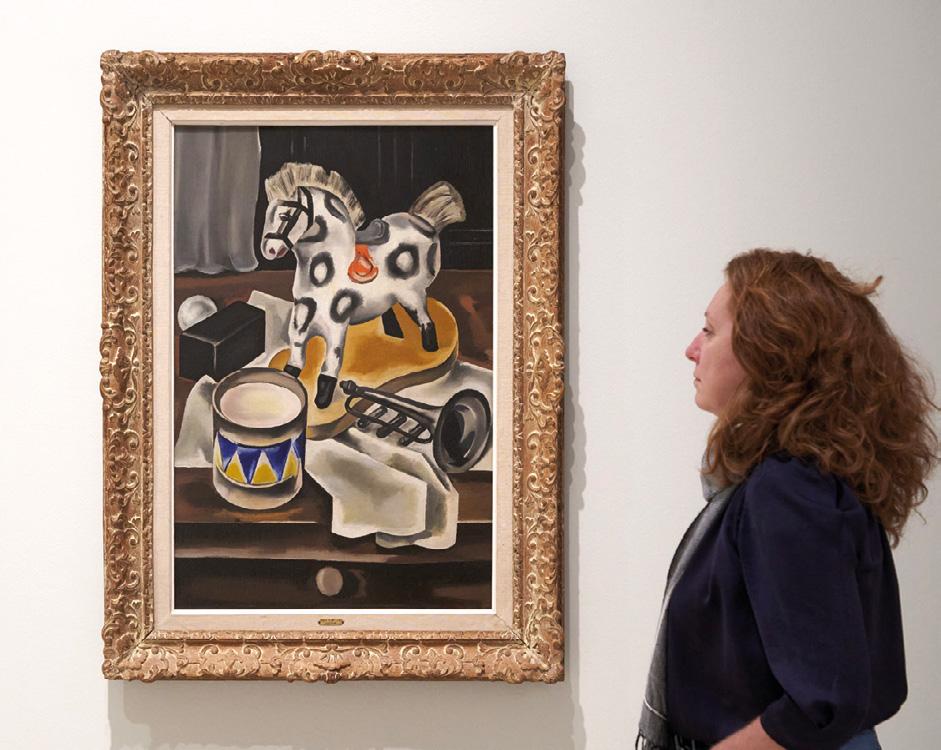
but shown at the Salon des Indépendants in Paris in 1921, can therefore be described as a programmatic piece, as it marked a turning point in her career. The 1920s witnessed a permanent shift to figurative painting, and her works recovered their noticeable literary quality.
Her third, post-Cubist stage was characterised by her deep concern with the human condition and emotions in the everyday world of women and children. During this period, she addressed gender, ethnicity, national identity, and social class. The representation of these themes is reinforced by her meticulous technical mastery and scholarly interest in the history and tradition of Spanish, French, and Flemish painting.
María Blanchard’s paintings are radical because they were a creative exercise in defying the hegemonic conventions of modernity of her time. She was a woman in an art system dominated by a type of heroic masculinity that, for artists like her—a painter of female sadness par excellence who explored alternative modes of expression—meant renunciation, silence, and exclusion. This exhibition seeks to draw attention now, in the twenty-first century, to the need to reclaim a prominent place in art history for the work of María Blanchard.

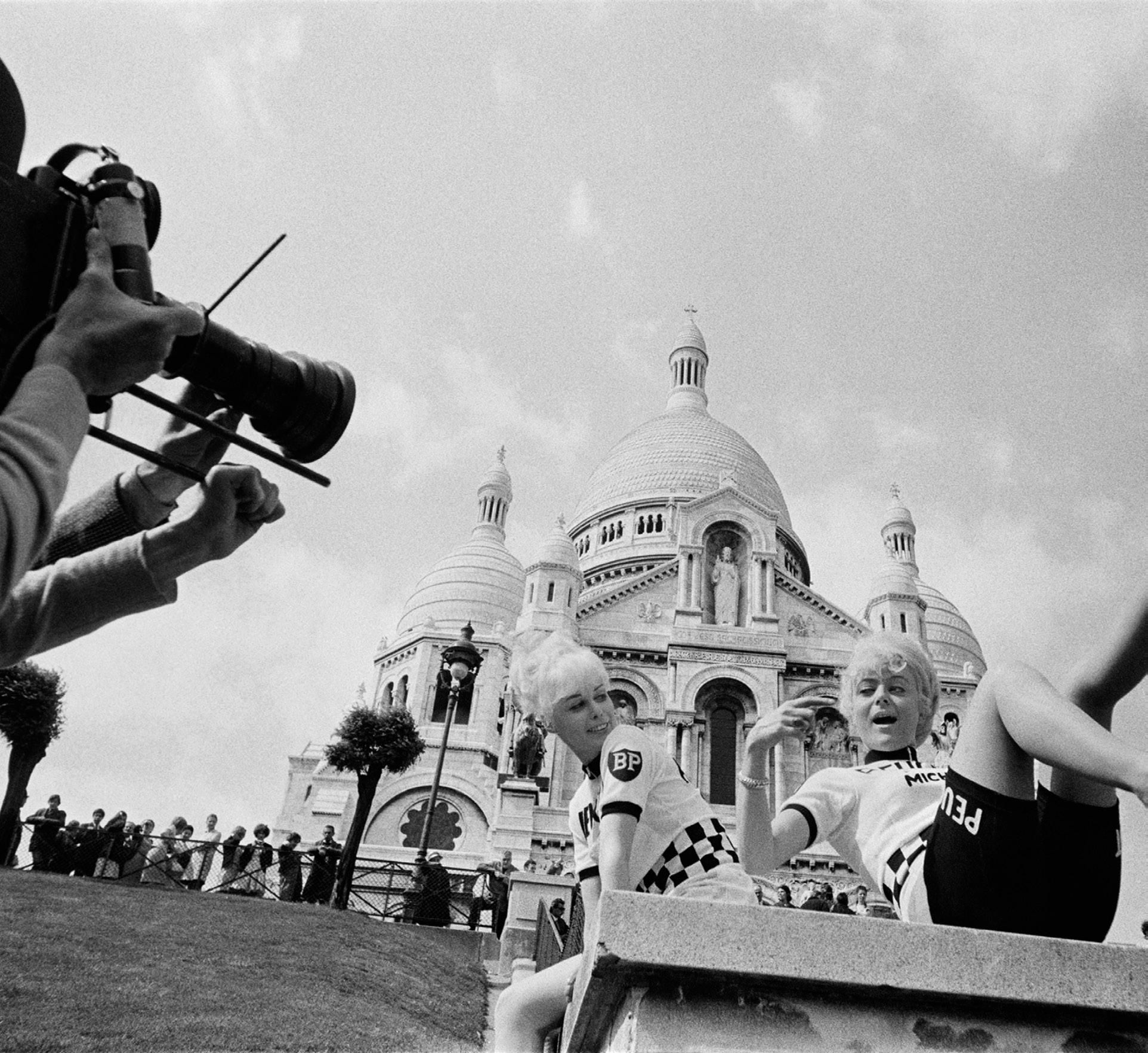
Later this year, renowned photographer Joel Meyerowitz returns to Málaga after 60 years with a major exhibition of early and unseen work: “Europa 1966–1967”. The exhibition will open at the Museo Picasso Málaga from June 15 to December 15, 2024. The exhibition will bring together for the first time more than 200 photographs taken by Meyerowitz during his formative European road trip from 1966–67, many of which have not been seen before.
In 1966, at the age of 28 and shortly after leaving his advertising job in New York to pursue photography, Meyerowitz embarked on a year-long road trip around Europe. He drove 20,000 miles through 10 countries and took 25,000 photographs. During this period, Meyerowitz settled in Málaga for six months, where he befriended the Escalona family, one of the traditional flamenco families in the city. While in Málaga, Meyerowitz took 8,500
“I know that the experience of making photographs in Europe changed me and gave me the perspective I needed to see myself, and then, when I returned home, to see America in a different way.” – Joel Meyerowitz
This unique experience, which resulted in an extraordinary photographic record of Spain during the height of the Francoist dictatorship, was hugely influential for Meyerowitz and had a long-lasting impact on his signature style of photography. Meyerowitz is now recognised as one of the leading photographers of his generation who redefined how reality can be captured and communicated with a camera. After returning to New York, Meyerowitz had his first-ever solo exhibition at MoMA in 1968, featuring 40 photographs taken from the window of his moving car while in Europe. Featuring vintage and large-format prints in colour and black and white, the exhibition will present an in-depth account of Meyerowitz’s travels through England, Wales, Ireland, Scotland, France,


Spain, Germany, Turkey, Greece, and Italy, centred on the significance of his extended stay in Málaga.
Tracing Meyerowitz’s artistic evolution during his time in Europe, the exhibition will feature portraits of local people, unique moments captured in everyday street scenes, urban and natural landscapes, and photographs taken from inside his moving car. The exhibition will also feature a selection of original prints from his first solo exhibition at MoMA in 1968. Meyerowitz returns to Málaga almost 60 years later, and a new film made for the exhibition will follow the artist as he revisits and photographs the Andalusian city today, closing an aesthetic loop in his career.
Joel Meyerowitz has said of his experience: “In 1966 I had made some money shooting an advertising job. Enough money that I thought I could go away to Europe for a year and just photograph. So I put down $1,700 for a new Volvo in New York City, which I would pick up in London, and for a whole year I drove that car all over Europe ... It was an amazing year, the year of my coming-of-age as an artist and a man, and when I think about it now, I understand that it was in Spain that I really understood what it took to become my own man.”
of generating physical, aesthetic and emotional connections with his work. In 1966–67 Meyerowitz lived in this city where Picasso was born. The work he presents here establishes a dialogue with Málaga as the city that unites the two artists. His goal is to create a new narrative concerning the identity of an artist through the structure of his work as a whole and in relation to his roots.”
Joel Meyerowitz is an award-winning photographer whose work has appeared in over 350 exhibitions in museums and galleries around the world. His discovery of the work of the photographer Robert Frank in 1962 marked the start of his dedication to the art form. While most photographers at that time worked with black-and-white film, Meyerowitz was one of the first artists to work in colour, which later led to the acceptance of colour photography as an art medium.
The permanent collection rooms at the Carmen Thyssen Málaga Museum offer a journey through Spanish art of the nineteenth and early twentieth centuries, with special emphasis on Andalusian landscape painting and traditional scenes.
Miguel López-Remiro, Artistic Director of Museo Picasso Málaga, said: “Joel Meyerowitz, the guest artist in our programme at the Museo Picasso Málaga, introduces his European work into the central space occupied at the museum by Picasso, with the hope
Meyerowitz is a two-time Guggenheim Fellow, a recipient of both the National Endowment for the Arts and the National Endowment for the Humanities awards, and a recipient of The Royal Photographic Society’s Centenary Medal. He has published 53 books. His photographs of Ground Zero after 9/11 led to him representing the United States at the 2002 Venice Biennale for Architecture. Meyerowitz’s photographs are represented in leading collections including MoMA, the Boston Museum of Fine Arts, and the Art Institute of Chicago, among others. Joel Meyerowitz is represented by the Howard
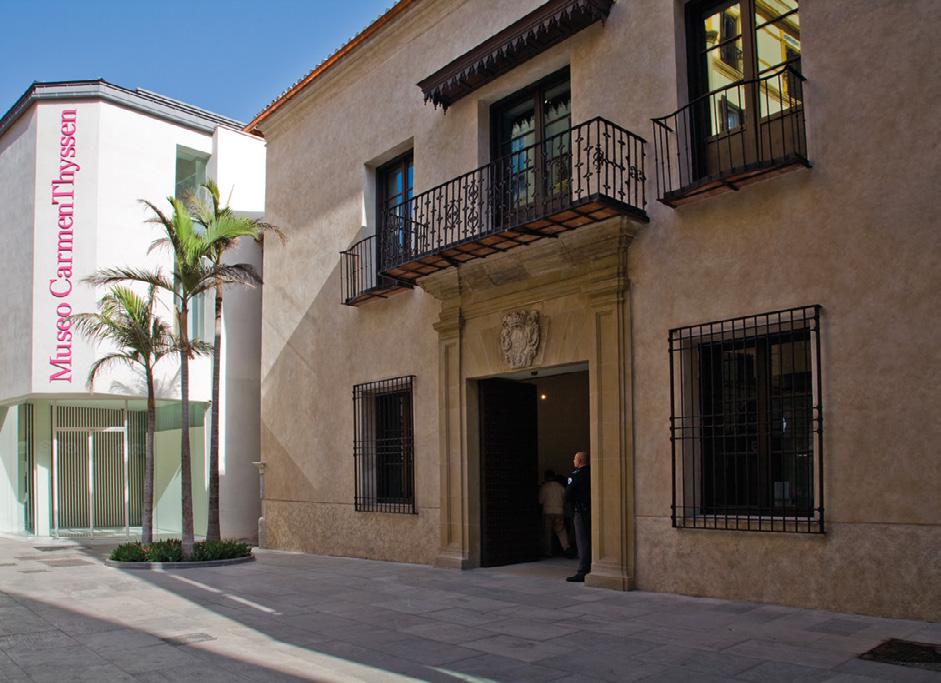
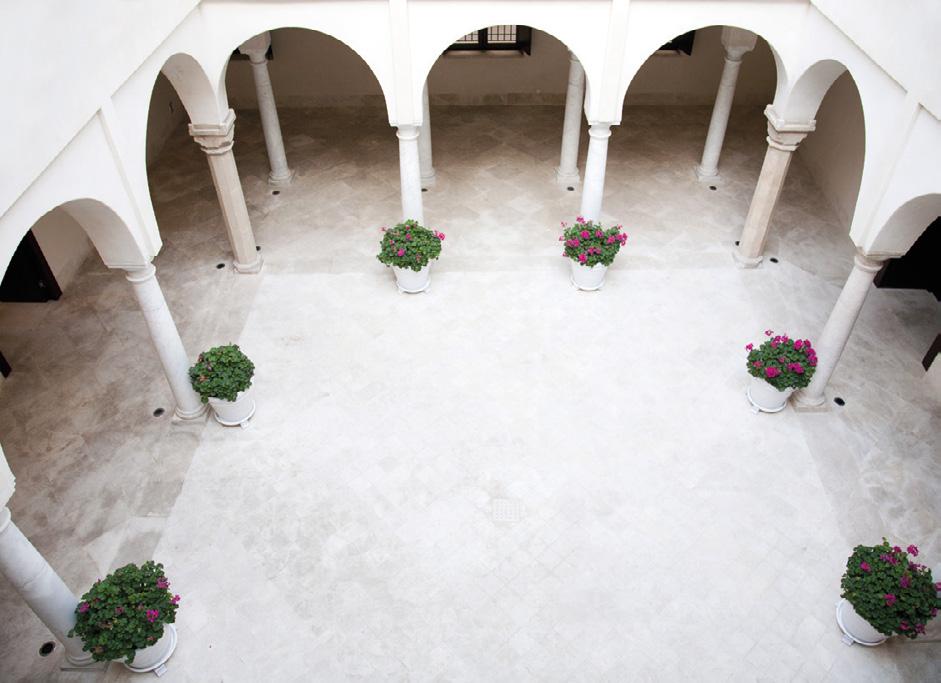
Greenberg Gallery in New York, the Polka Galerie in Paris, and Huxley-Parlour in London. Meyerowitz lives and works in New York and London.
The Carmen Thyssen Málaga Museum’s importance goes beyond its contents—the Carmen Thyssen Collection of Spanish and Andalusian paintings from the 19th and early 20th centuries. The significance of the building that houses the Museum—an outstanding architectural site where the historic structures, restored to create the new museum, stand alongside the modern architecture of the structures specially designed to complete the museum installations—cannot be overlooked.
From 16 March until 8 September 2024, the Carmen Thyssen Málaga Museum presents “Latent Modernity: Avant-garde and Innovative Painters in Spanish Figurative Art (1920–1970)”. Through more than sixty paintings, mostly from the Telefónica Collection, this exhibition tells the story of an episode in Spanish art that was largely shaped by the historical period to which it belongs. The hopes aroused by the signs of an emerging avant-garde before the Civil War (1936–39), fuelled above all by the new art of the 1920s and 1930s, were abruptly dashed by the establishment of Franco’s regime (1939–75), and modernity was plunged into a long period of lethargy. Nevertheless, resilient figurative art kept alive the flame of renewal, which from the 1950s onwards, after the postwar and autarkic periods, sparked off other innovative movements such as the abstract Art Informel.
trend following the disruption caused by the war. Both periods shared some of their main figures (Solana, Vázquez Díaz, Palencia), who steered renewal-oriented figurative art through two very different stages: a prewar period that was unprecedented, bold, and cosmopolitan, and another that was silent, restrained, and self-absorbed and had to adapt to a context that was barely conducive to novelty, let alone transgression.
The Civil War left Spain completely devastated and in ruins. Autarky plunged the country into deeper isolation and paralysis. In the official artistic sphere, a return to academicist trends and a total rejection of avant-garde proposals were imposed. However, despite censorship, exile, and the regime’s absolute control of culture, there was no shortage of artists who exercised their individual freedoms through landscape and still life—traditional genres—in figurative works with no political or moral intent. This innovative and heterogeneous painting scene developed on different fronts: the artistic initiatives that challenged the established taste inside the country (Zabaleta, Díaz-Caneja); the followers of the avant-garde experiences of the Republic who carried on working after the war, either in Paris or on Spanish soil (Viñes, Peinado, Ángeles Ortiz, Cossío); and the more advanced approaches of the leading artists in exile in Paris (Picasso, Óscar Domínguez, Bores).
The Carmen Thyssen Málaga Museum’s permanent collection works belong to Baroness Carmen Thyssen’s private collection – more than 200 pieces, including a fine selection of works of the Old Masters (thirteenth to eighteenth centuries).
In the early 1900s, Spanish artists began experimenting with different ways of breaking with nineteenth-century tradition. The most adventurous of them went to Paris in their youth; there Picasso developed Cubism, the most revolutionary and influential of the historical avant-garde movements, which was steered in an important new direction by Gris and Blanchard in the 1910s. Throughout the 1920s, the foremost representatives of Spanish Art Nouveau (Bores, Cossío, Peinado, Viñes, and González de la Serna) also moved to Paris and explored other artistic avenues ranging from Neo-Cubism to lyrical figurative painting. After the Civil War, several exiles joined this Paris branch of the Spanish avant-garde. Echoes of the Paris-based isms also gradually influenced artists committed to renewal in Spain, where the most original forms of expression were the realist movements of the ‘return to order’ of the 1920s and 1930s. Figurative art, as the most powerful example of that modernity, was also the most enduring artistic
In Spain, renewal took the form of the achievements of the Vallecas School. In the late 1920s, its members sought an identity for Spanish art that would link up with international modernity through oneiric, rural, and popular themes. This aesthetic attached to the land was revived by one of its founders, Benjamín Palencia, in a second Vallecas project, the seed of the so-called Madrid School—Martínez Novillo, San José, Menchu Gal—and the sui generis landscape painting of Beulas and Ortega Muñoz. Spain’s modern visual art and its structures began to recover somewhat in the 1950s, in line with the country’s economic development plans, and in the following decade, there was a closer link with the urban way of life, albeit from a lyrical and nostalgic perspective (Antonio López, Carmen Laffón).
Despite everything, a group of hard-working artists played a leading role in modernising Spanish art during the dictatorship from figurative stances: through discovery and knowledge of international trends, as a genuine contribution, or out of sheer opposition to the dominant canon.

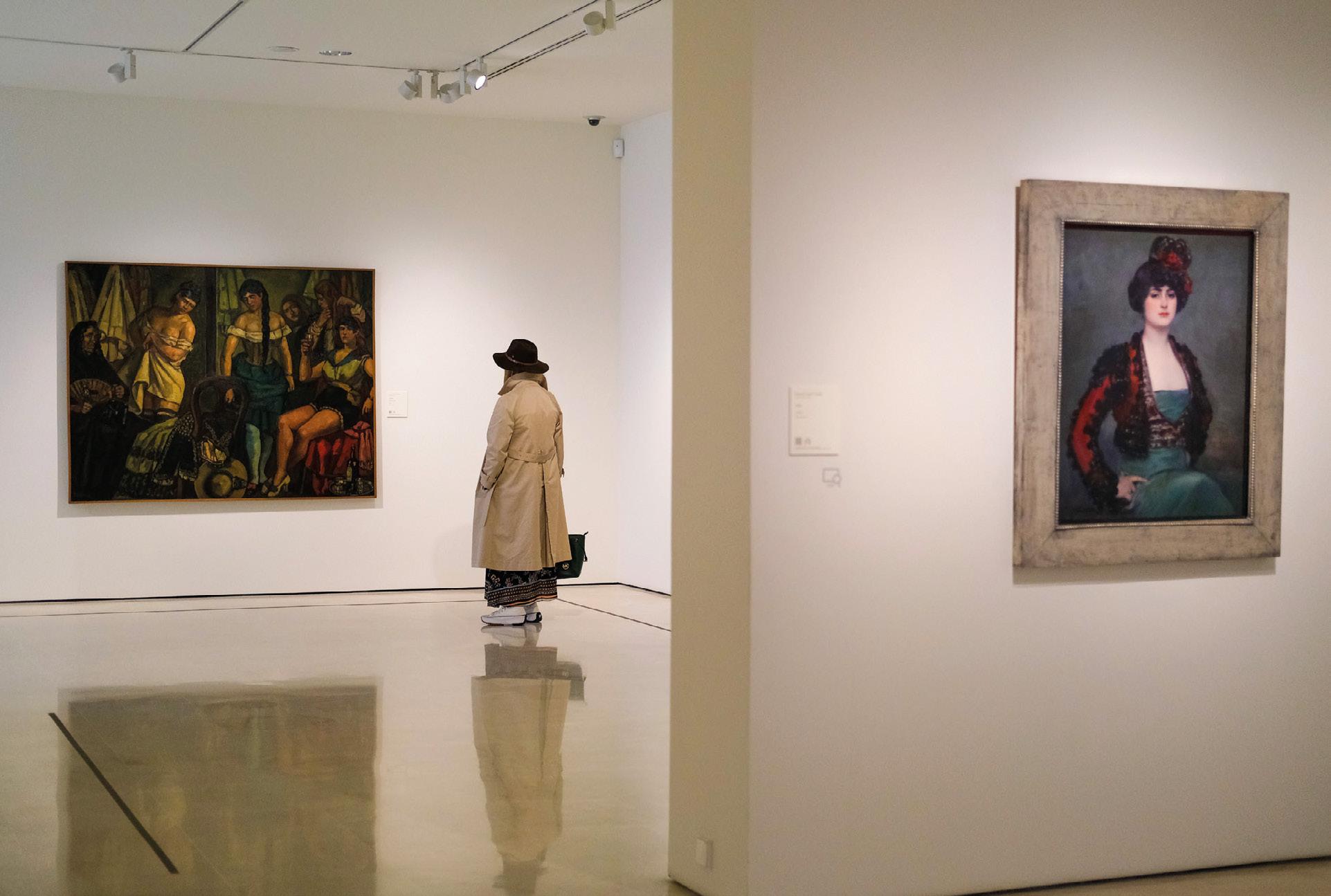

From July 11 to October 13, 2024, the Carmen Thyssen Museum Málaga will host “Thought-provoking Material. Contemporary Japanese Photography. José Luis Soler Vila Collection”. Showcasing an extensive selection of photographs from the Collection in the Sala Noble and Espacio ArteSonado, it encapsulates the main contributions of Japanese photographers active during the 1950s, 1960s, and 1970s to the photographic revolution in post-war Japan. Grouped around the Vivo agency (1959–1961)—inspired by the European Magnum and named ‘life’ in Esperanto—and the Provoke magazine, the fifteen selected artists crafted an avant-garde, experimental, and uninhibited visual and thematic universe, marked by a distinct personality. Amidst Japan’s profound social transformation and unstoppable economic boom, these radical and nonconformist photographers rejected straightforward, documentary, and objective photography as an appropriate language to capture the new Japanese reality. Instead, their images emerged as subjective expressions of the contemporary photographer’s experience, as well as a novel and distinct language to create “provocative material for thought,” as suggested by Provoke’s subtitle. This invitation to reflect on identity, tradition, urban life, anti-American protests, the body, and sexuality was manifested in high-contrast, blurred, or unfocused photographs with unusual framing and texture play, in an aesthetic that had a lasting impact in Japan and internationally.
Extracted from the most important series of these photographers and organised by conceptual and iconographic affinities, the snapshots offer a discovery of a crucial creative period for contemporary Japanese art, one that continues to surprise and captivate Western audiences.

A timeless icon of grace, talent, and versatility, Streep is particularly known for her masterly technique, expertise with dialects, and expressive face.
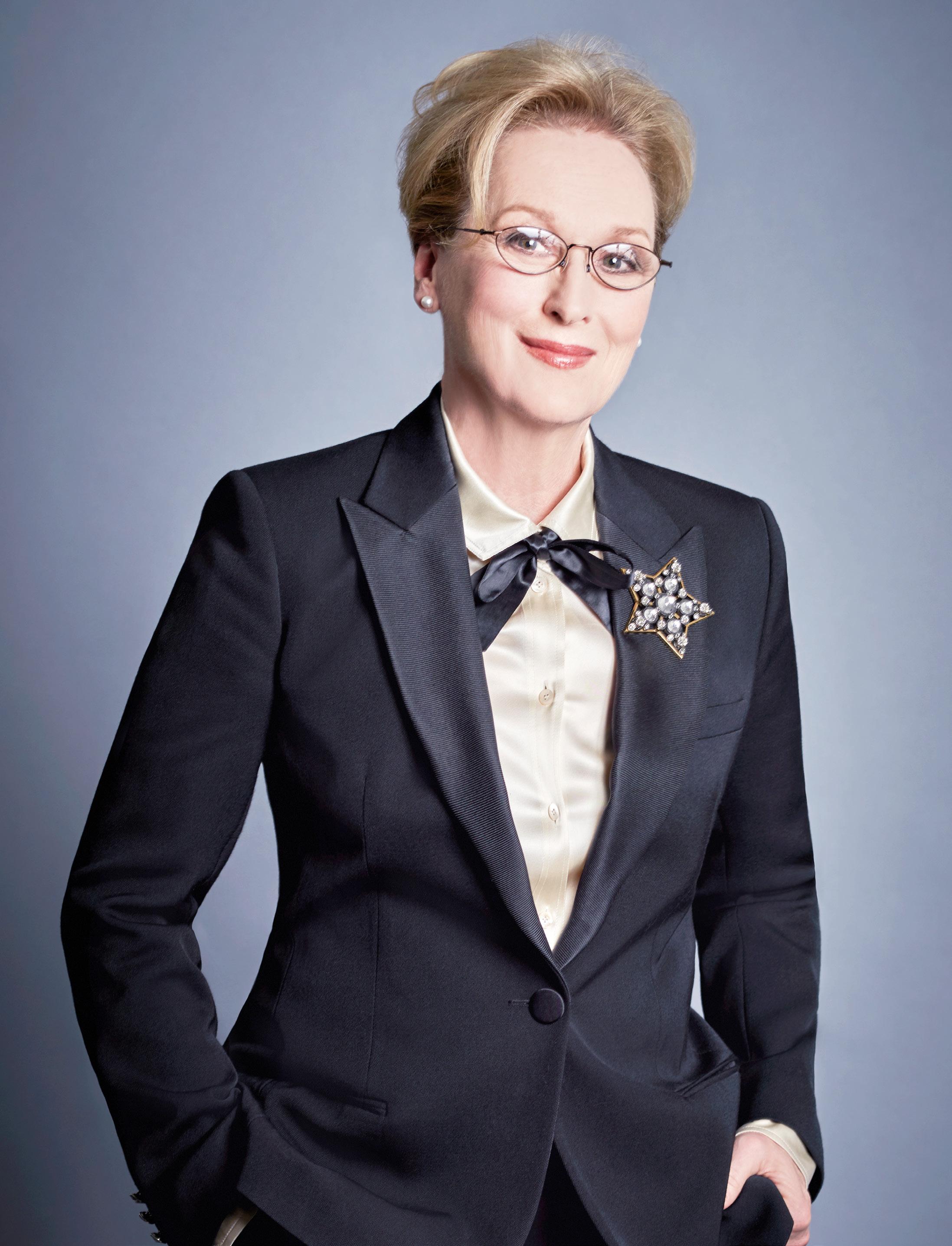

“She
is a great actress, probably the best of her generation, and has given one wonderful performance after another.” Roger
Ebert, film critic
Meryl Streep’s body of work is a captivating display of versatility and genius, unrivalled in its exuberance. Streep, a recipient of the 2023 Princess of Asturias Award for the Arts, is regarded as one of the best contemporary actresses. “Few actresses in American film history have the versatility of Meryl Streep, an actress with a wide range of registers and a mastery of all genres, including comedy, drama and musicals, among others,” said Pedro Almodóvar, 2006 Prince of Asturias Laureate for the Arts, who submitted Streep’s nomination. “She does it all so well and all so naturally and truthfully.” It is truly remarkable for any actor to possess such tremendous influence at the box office in the movie industry. However, it is an unparalleled achievement in the 100-year history of American cinema for an actress to attain such extraordinary power.
The Princess of Asturias Award for the Arts 2023 is one of the latest recognitions commemorating Meryl Streep’s extensive acting career, which has flourished over nearly five decades on the silver screen. The jury said that Streep has “developed a brilliant career that given life to full and complex feminine characters which inspire reflection and a critical spirit in the spectator.” They also highlighted the “honesty and responsibility she brings to her choice of roles, at the service of inspiring and exemplary narratives,” as well as her commitment to being “a tireless activist for equality.” Queen Letizia and King Felipe VI honoured Streep with Spain’s prestigious Princess of Asturias Arts Award alongside their two daughters during a ceremony in October in the northern Spain city of Oviedo.
In her acceptance speech for “this prestigious prize from one of the most deeply gifted countries and cultures in the world,” Streep focused on the vital role of empathy in connecting actors and audiences with characters who appear—or speak—differently from themselves. She proposed that this capacity for empathy could benefit everyday life, offering a valuable form of outreach and diplomacy in broader contexts. “We are born with fellow-
feeling, empathy, and a porous shared humanity. Babies will cry just on seeing the tears of another. But as we grow, we set about to tamp down those feelings, and suppress them the rest of our lives; supplant them in favor of self preservation or ideology, and to suspect and mistrust the motives of others. And so we arrive at this unhappy moment in history.” Streep expressed optimism as she acknowledged the pull to understand the “counter-intuitive instinct we have: to care about strangers, the imaginative ability we have to follow the stories of people outside our tribe as if they were our own. “In our world, in our increasingly hostile, volatile world, I hope we might take to heart another rule every actor is taught, that is: it is all about listening.”
Pedro Almodóvar, following the conferral of the 2023 Princess of Asturias Award for the Arts on Streep, lauded her exceptional talents, affirming that “Meryl Streep is unquestionably a deserving recipient of this year’s Princess of Asturias Award for the Arts.”
The Princess of Asturias Awards, distributed annually by the foundation bearing the name of Spanish Crown Princess Leonor, encompass a total of eight categories spanning the arts, literature, science, and international cooperation, among others. These awards
“The great gift of human beings is that we have the power of empathy”, says Meryl Streep. “Empathy is at the heart of the actor’s art.”
Every director has sought her out, supported her, and showcased her talents—Spielberg, Nichols, Eastwood, Pollack, Zemeckis, Wajda, Benton, and Daldry, to name but a few. In exchange, they have consistently received her best performances. Yet, she is also an artist and icon who has never shied away from publicly denouncing the precarious position of women in the film industry. Streep has always been aware of the challenges surrounding their portrayal in Hollywood movies, and she has remained committed to embodying their many facets, varieties, dilemmas, and struggles. During an onstage conversation at the 2024 Cannes Film Festival, where she received the Honorary Palme d’Or, Streep finally witnessed the change and expressed her admiration for actresses who transition into production after achieving fame on the big screen.
rank among the most esteemed in the Spanish-speaking world. With a staggering list of 21 US Academy Award nominations (winning three) and 33 Golden Globe nominations (winning eight), Streep holds the record for the most nominations in the history of both prestigious awards. Streep is one of just two living actresses who have won the Academy Award three times. Her first win was for Best Supporting Actress in Kramer vs. Kramer, for which she also received the Golden Globe in the same category, followed by second and third for Best Actress in Sophie’s Choice and The Iron Lady. Streep’s illustrious career has also earned her recognition from various other esteemed institutions, including two Emmy Awards, two Screen Actors Guild Awards, a Cannes Film Festival award, five New York Film Critics Circle Awards, six Grammy Award nominations, two BAFTA awards, and an Australian Film Institute Award. In 2004, she received the American Film Institute’s Life Achievement Award, a testament to her enduring impact on the industry. Apart from being honoured with multiple acting awards, Streep was bestowed with the prestigious title of Commander in the Order of Arts and Letters by the French government in 2002, recognising her immense cultural contributions. In 2010, she was elected an esteemed honorary member of the American Academy of Arts and Letters. The subsequent year marked her receipt of the distinguished Kennedy Center Honor. Her remarkable achievements in the entertainment industry were further acknowledged in 2017 when she was presented with the esteemed Cecil B. DeMille Award, a Golden Globe that celebrates lifetime achievement.
From her early breakthrough performances in The Deer Hunter and Kramer vs. Kramer in 1978, Streep left critics and audiences in awe, instantly establishing herself as a captivating new presence in American Cinema. However, it was her breathtaking portrayal of a Polish Nazi camp survivor in Sophie’s Choice, which earned her an Oscar in 1982, that solidified her as a role model for fellow actresses and aspiring talents.
With the success of major worldwide hits like The Devil Wears Prada, Mamma Mia!, Julie & Julia, It’s Complicated, and the later
ones such as The Iron Lady, Into the Woods, Florence Foster Jenkins, The Post, Big Little Lies, and Don’t Look Up, she is more popular than ever.
Streep’s filmography is graced with a myriad of iconic and intelligent films, ranging from Manhattan and Silkwood to The Bridges of Madison County and Doubt. Each performance showcases her insight, depth, range, and virtuosity, earning her the title of the best actress of her generation, as praised by esteemed film critic Roger Ebert: “She is a great actress, probably the best of her generation, and has given one wonderful performance after another.” From Shakespearean classics to ABBA-inspired musicals, from emotionally charged dramas like Sophie’s Choice and Kramer vs. Kramer to charming comedies like Julie & Julia and The Devil Wears Prada, she effortlessly embraces every genre with sheer breadth and artistic joy, making her one of the most exhilarating cultural icons of our time.
Born Mary Louise Streep in Summit, New Jersey, she pursued theatre instead of opera, graduating with a drama bachelor’s degree from Vassar College in 1971 and earning an M.F.A. from the prestigious Yale School of Drama in 1975. During her time at Yale, she displayed her chameleonic brilliance, drawing attention and admiration from all. “It was immediately apparent,” said thendean Robert Brustein, “that she was destined for greatness.” Throughout her career, Streep’s talent has remained unquestionable, and she has astounded both actors and directors alike. Her costars, such as Robert Redford, have marvelled at her effortless command over her craft. Directors, like Alan J. Pakula, have considered it a heavenly privilege to work with her. “If there’s a heaven for directors, it would be to direct Meryl Streep your whole life,” said Pakula. Molly Haskell, a renowned film critic, observes that Streep’s remarkable late-middle-age career is characterised by not only effortless performances but also a profound impact on audiences, leaving them in awe of her dazzling dexterity and audacity. “She’s proving now, in the freedom and prosperity of a spectacularly attractive late middle age, that she can do effortless as well as strenuous, ensemble as well as star, enjoy rather than



hide behind her talent. More than that, it’s as if audiences who’d been lulled into a catatonia of admiration or vexation were forced to wake up and take notice of the dazzling dexterity and audacity of this woman who’s amassed a body of work that’s phenomenal any way you look at it.”
Beyond her extraordinary talent as an actress, Streep has become a revered figure known for her wisdom and advocacy on social issues. She has used her platform to raise awareness on various subjects, including gender equality and female empowerment. Streep exemplifies unwavering dedication to the National Women’s History Museum, displaying remarkable generosity by making substantial contributions to this esteemed institution. Notably, she selflessly donated the entirety of her $1 million earnings from her role in The Iron Lady to further support its noble cause. In addition to her philanthropic endeavours, in 2015, she took it upon herself to establish the Writers Lab, a visionary initiative aimed at empowering female screenwriters over the age of forty to flourish in their craft and elevate their voices in the film industry. Streep’s unmistakable voice also made a significant impact on the Girl Up movement, one of the world’s largest organisations dedicated to empowering women. She lent her talents as a conarrator for the film Girl Rising, which delves into the stories of girls in various countries like Nepal, Ethiopia, India, and Cambodia. Together with her ex-husband, Donald Gummer, Streep established the Silver Mountain Foundation for the Arts in the 1980s. This foundation has been actively supporting the arts, education, healthcare, and human services sectors. Numerous organisations have been fortunate recipients of generous contributions from Meryl and Donald’s foundation, including Oxfam America, New York’s Meals on Wheels, the Coalition for the Homeless, Women for Women International, and the Women’s Refugee Commissions, among others.
A committed advocate for women’s rights and gender equality, she serves on the advisory board of Equality Now. In 2018, she contributed to the documentary “This Changes Everything,” spotlighting gender discrimination in Hollywood. During the 2024 Cannes Film Festival, Streep was happy that the situation had changed considerably since more female executives were in top positions in the film industry. “There is some progress,” she said. “The biggest stars in the world are women right now, although Tom Cruise is probably way over the top. “It was very different when I began. Back then, everything was always centered around a male superstar. Female roles were secondary. Films are projections of the dreams of those who make them.”
A member of the American Academy of Arts and Letters and a Commander of the Order of Arts and Letters in France, Streep has garnered numerous honorary accolades. These include the César Award in 2003, the Donostia Award at the San Sebastian Festival in 2008, the Golden Bear Award at the Berlin Film Festival in 2012, the Stanley Kubrick Britannia Award in 2015, and the Cecil B. DeMille Award in 2017. Notably, she was honoured with the 2010 National Medal of Arts and the 2014 Presidential Medal of Freedom.
Throughout the past several decades, Streep has gracefully showcased the warmth and richness of her personal life. She has artfully integrated her family into her bustling world of premieres and award shows, turning these events into joyful family gatherings. Accompanied by her four children—son Henry Wolfe and daughters Mamie Gummer, Grace Gummer, and Louisa Jacobson—as well as her ex-husband sculptor Don Gummer, Streep has beautifully demonstrated the harmonious balance between her career and her loved ones.
In Hollywood history, Streep shines as a guiding star, illuminating the path for aspiring actors and inspiring us all to reach greater heights in our pursuits. What makes Streep the paragon of sophistication is not merely her exceptional acting skills or her enviable awards cabinet, but the profound impact she has had on the world of cinema and beyond. Her influence transcends the silver screen, touching the lives of countless individuals who look up to her as a symbol of elegance, integrity, and grace.
Six lesser-known personal facts about Meryl Streep, who believes that true happiness and success come from “being actually yourself, in the most vivid possible way you can.”
NAME: Streep was born Mary Louise Streep. She was named after her mother and grandmother, as well as her mother’s best friend. Meryl was the nickname her father gave her..
HIGH SCHOOL: Streep treated popularity as a role in high school by reading fashion magazines, dying her hair, and becoming a cheerleader. In her senior year, she was elected homecoming queen.
EDUCATION: Streep has an advanced degree from an Ivy League university. After graduating from Vassar College, she earned a Master of Fine Arts from the prestigious Yale School of Drama in 1975.
DESTINY: She briefly considered veering into law studies. However, Streep said, she slept through her board exams.
MARRIAGE: Streep had one of the industry’s longest partnerships. She was married to Don Gummer since 1978. In 2023, it was revealed that the pair had been separated for six years. Even after the divorce, the pair continue to be partners and have been supportive of each other on a personal and professional level.
CHILDREN: She has four children and five grandchildren. The oldest, Henry Wolfe (who uses only his first and middle names), is a musician, and the youngest, Louisa, is a model. The middle children, Mamie and Grace, are both actresses.
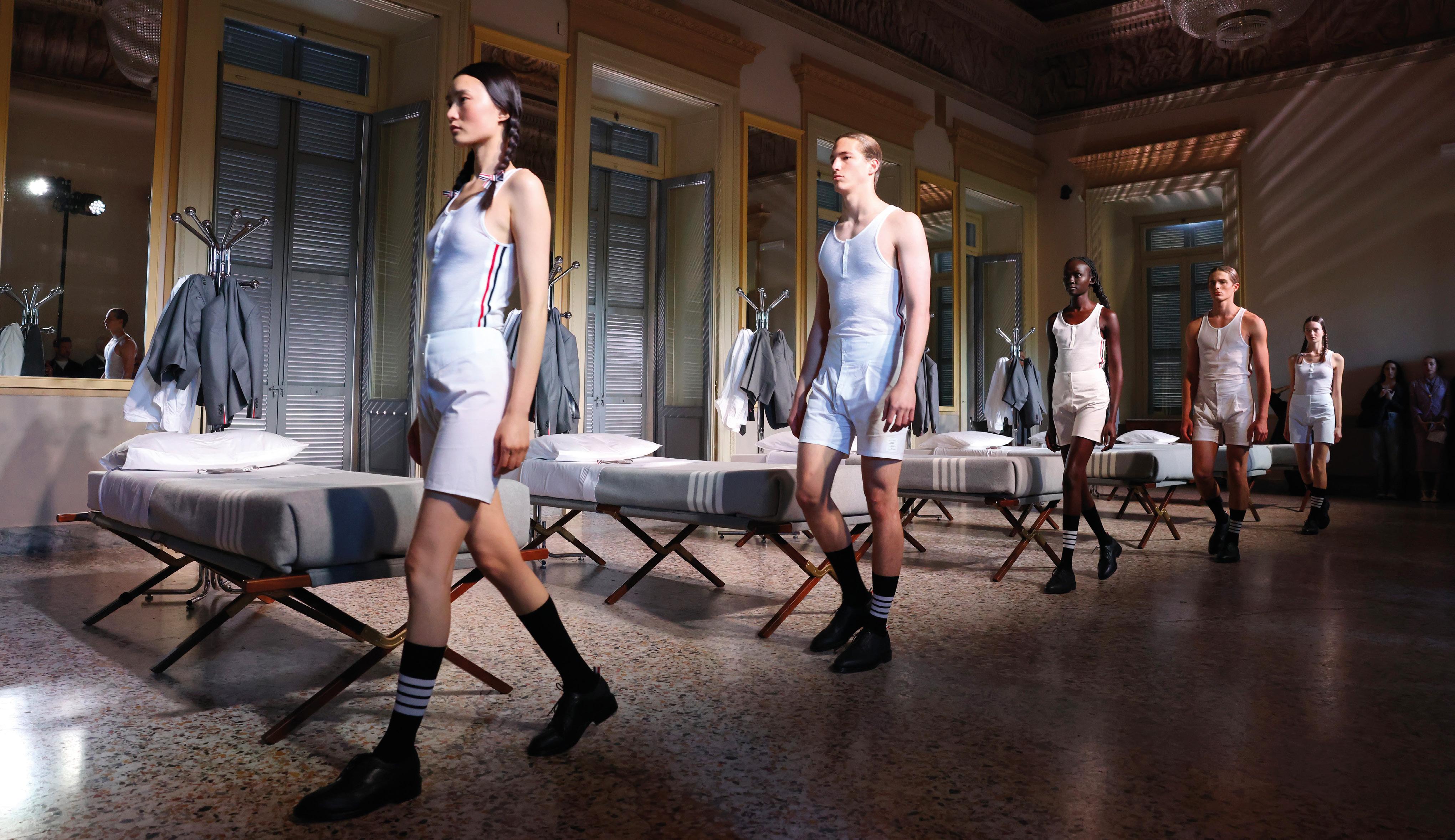

Grounded in a mutual commitment to perfection, the Thom Browne by Frette capsule home collection embodies the fusion of Frette’s rich legacy of masterful craftsmanship with Thom Browne’s distinct creative vision.
Renowned for approaching comfort with the finest fibres, studied details, and master craftspeople, Frette reflects Browne’s appreciation of heritage textiles and artisanal techniques. The collection introduces an iconic emblem of four bars, presented in a refined white and grey colour palette, which serves as a definitive expression of the designer’s contemporary American aesthetic. Infused with Frette’s unparalleled Italian craftsmanship, every meticulous detail reflects a commitment to excellence, from the mastery of intricate fabrics to flawless finishes and exquisite textures.
Cut from white cotton sateen, the capsule’s duvet and sheet sets are finished with Frette’s exclusive method (ideated in 1903), which enhances softness and imparts a subtle shine. The bedding is accented with a custom label and four lines of grey embroidery, a nod to Thom Browne’s signature emblem. The motif appears again in ivory atop a grey wool-cashmere blanket, throw, and decorative cushion.
Bath accessories include a set of plush guest, face, and bath towels and a quilted bath mat—each with a 4-bar border. In light grey yarn-dyed cotton velour, the bathrobe’s silhouette is informed by the classic trench coat and detailed with Thom Browne’s iconic wrwbw grosgrain trim along the cuffs and back collar. Its dressing gown counterpart is crafted exclusively of cashmere and trimmed with inwoven 4-bar. White gym towel with wrwbw grosgrain and white beach bag with grey 4-bar are constructed with soft terry cotton.
Utilising themes of the sublime, repetition, and individuality explored through uniformity, Thom Browne is known for subverting traditional design codes to recontextualize modern culture. His antithetical vision comes to life in surreal ways, mining the public consciousness for points of inspiration as disparate as the Bauhaus concept of Gesamtkunstwerk and fairy tales such as Cinderella. Thom Browne’s past works have included performance art and hand-made sculptures; architecture and proportion are often key elements in his fashion practice.
With ...TIME TO SLEEP..., his debut installation at Salone del Mobile, Browne has identified Palazzina Appiani, a succinct representation of neoclassicism, as an unlikely venue for a nap. An immediate dialogue emerges between the generous proportions of the hall of honour and six simple mid-century cots. Positioned in the centre of the hall, the cots are made up with custom Thom Browne by Frette bedding in fine cotton sateen, detailed with Browne’s signature four-bar insignia. The room is empty until it is not. One by one, six individuals enter. They are dressed for sleep. Yet, when they arrive at their respective beds, they do not get in. Instead, they dress for the work of their dreams; in Browne’s signature grey reinterpretation of the mid-century office uniform. Only when they are in their grey suits are they prepared to voyage to the dream world; sounds of slumber and lullabies escort their journey.
While they sleep, an uncanny yet synchronous relationship develops between the mundane activity of their naps and the symmetrical
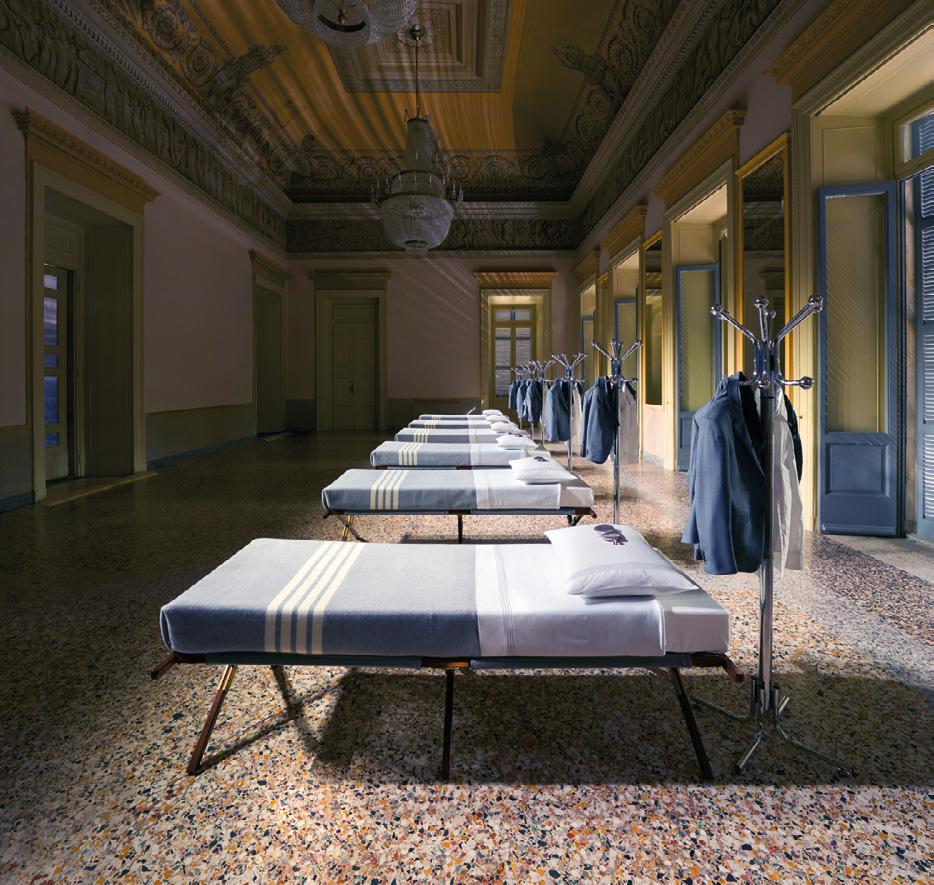

‘The sheets have to be pressed. And they have to be white. Never another colour for me.’ The collaboration is authentic, as Browne has been a long-standing customer of Frette and uses their bedding at his New York home.
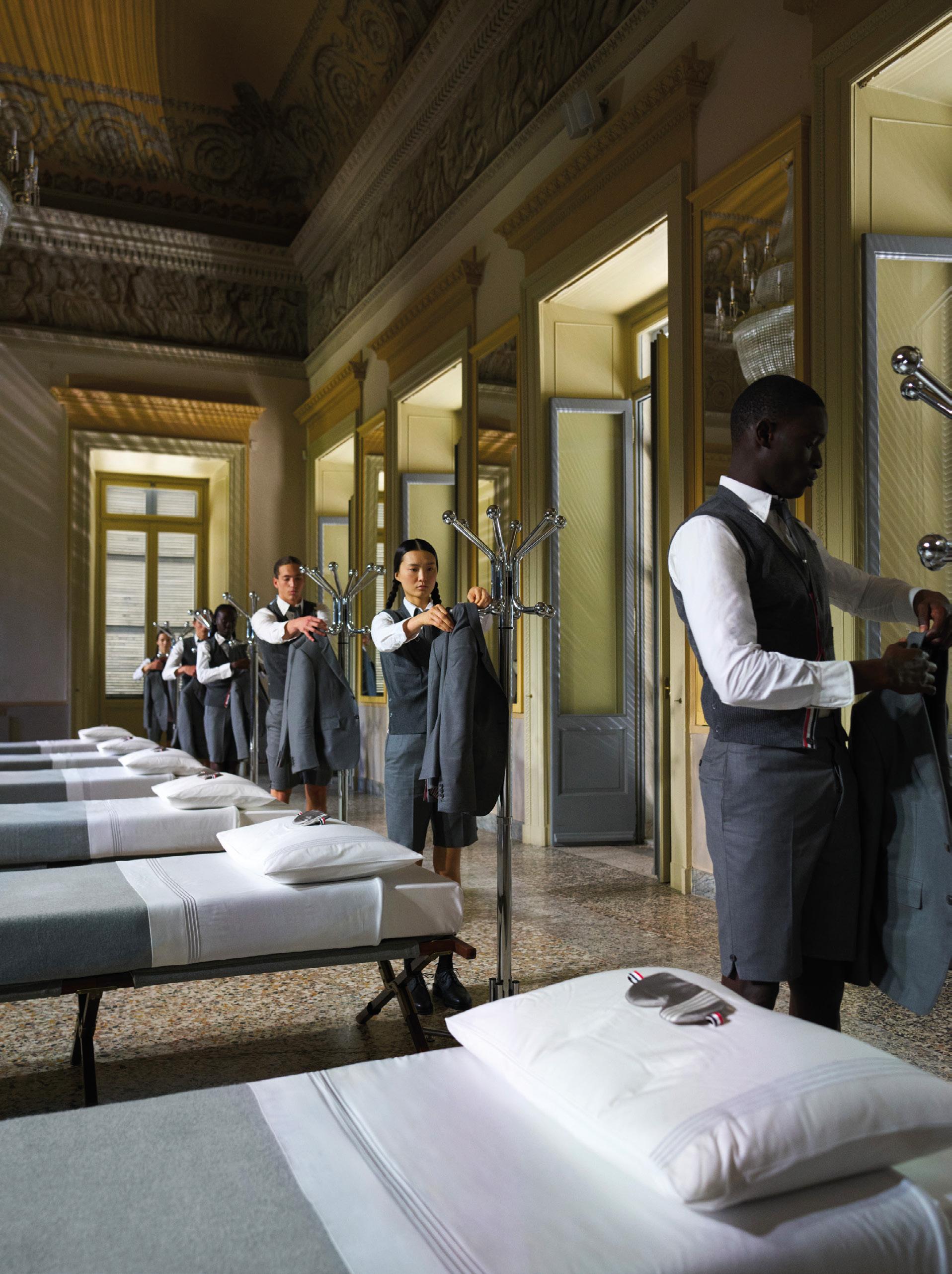
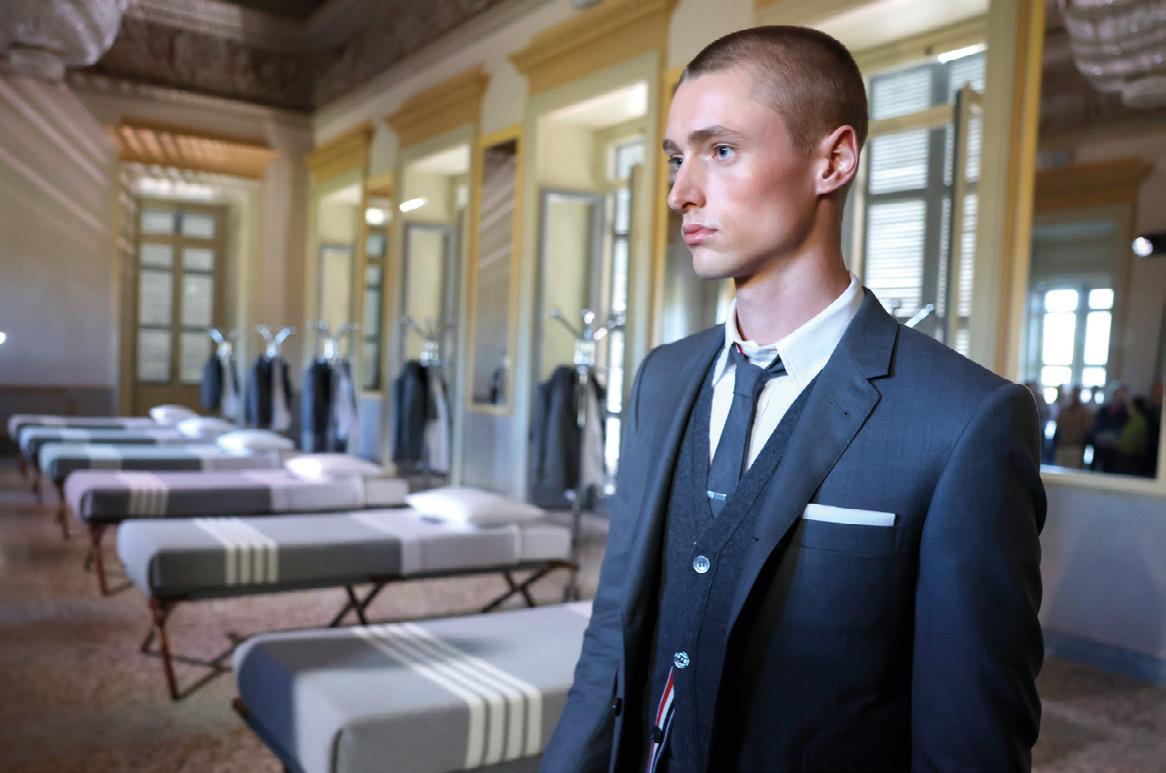

Browne emphasises that his fast-growing homewares mini-empire, which includes partnerships with Baccarat, Christofle, and Haviland, doesn’t necessarily need to rely on collaborations. However, he finds the process incredibly educational. As a long-time customer of Frette, Browne enjoyed discovering the remarkable savoir-faire involved in creating the house’s fabrics of the finest Italian craftsmanship.
Frette, the 160-year-old Italian brand—which also furnished the altar of St. Peter’s Basilica, the Orient Express, and more than 500 European royal families—had never collaborated with a fashion house before working with Browne. The brand’s chief executive, Filippo Arnaboldi, told The New York Times that while other labels have shown interest, none possessed “the right DNA or the right image that could have really been complementary”. Arnaboldi also believes the partnership will enhance Frette’s presence in underperforming markets, noting that Thom Browne “is very, very, very, very strong in Southeast Asia and China”.
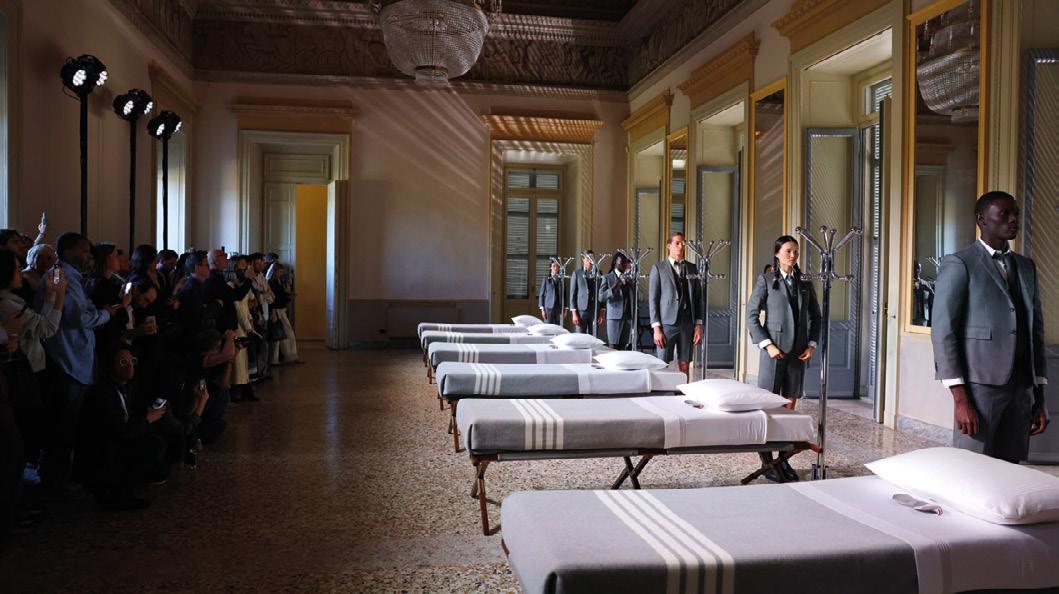
environment of the Napoleonic-era space. The performance and installation challenge the audience to question the role of dress in public life.
Consistent with the theme of repetition, ...TIME TO SLEEP... references Browne’s past performance art, such as his presentation in Florence at Pitti Uomo Immagine in 2009. Complete with 40 identical desks and clerks engaged in synchronised typing, that presentation introduced his practice to Europe. Past Thom Browne designs have been shown at the Victoria & Albert Museum, the Cooper Hewitt National Design Museum, the Museum of Modern Art, the Metropolitan Museum of Art, and Design Miami Basel. Thom Browne is widely recognised for challenging and modernising today’s uniform. By questioning traditional proportions, Browne’s designs consistently convey a true American sensibility rooted in quality craftsmanship and precise tailoring.
In 2001, Browne began his business with five suits in a small “by appointment” shop in New York City’s West Village and, in the years following, expanded his business to include complete readyto-wear and accessory collections for both men (2003) and women (2011). Browne has also become known for his highly conceptual

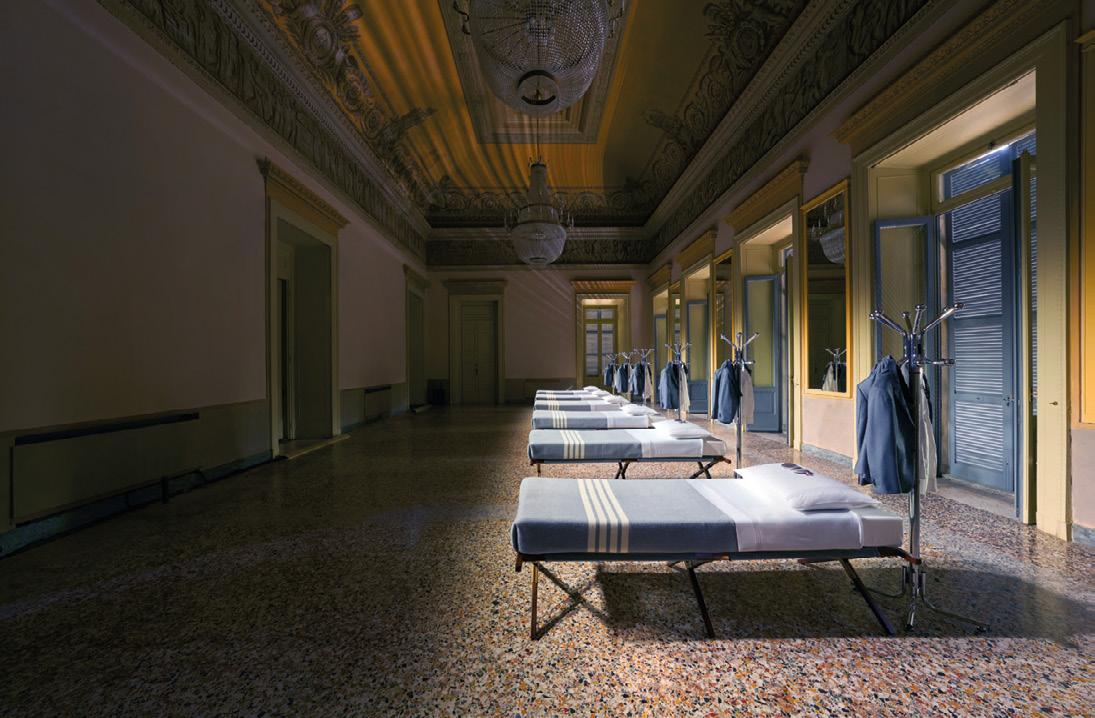
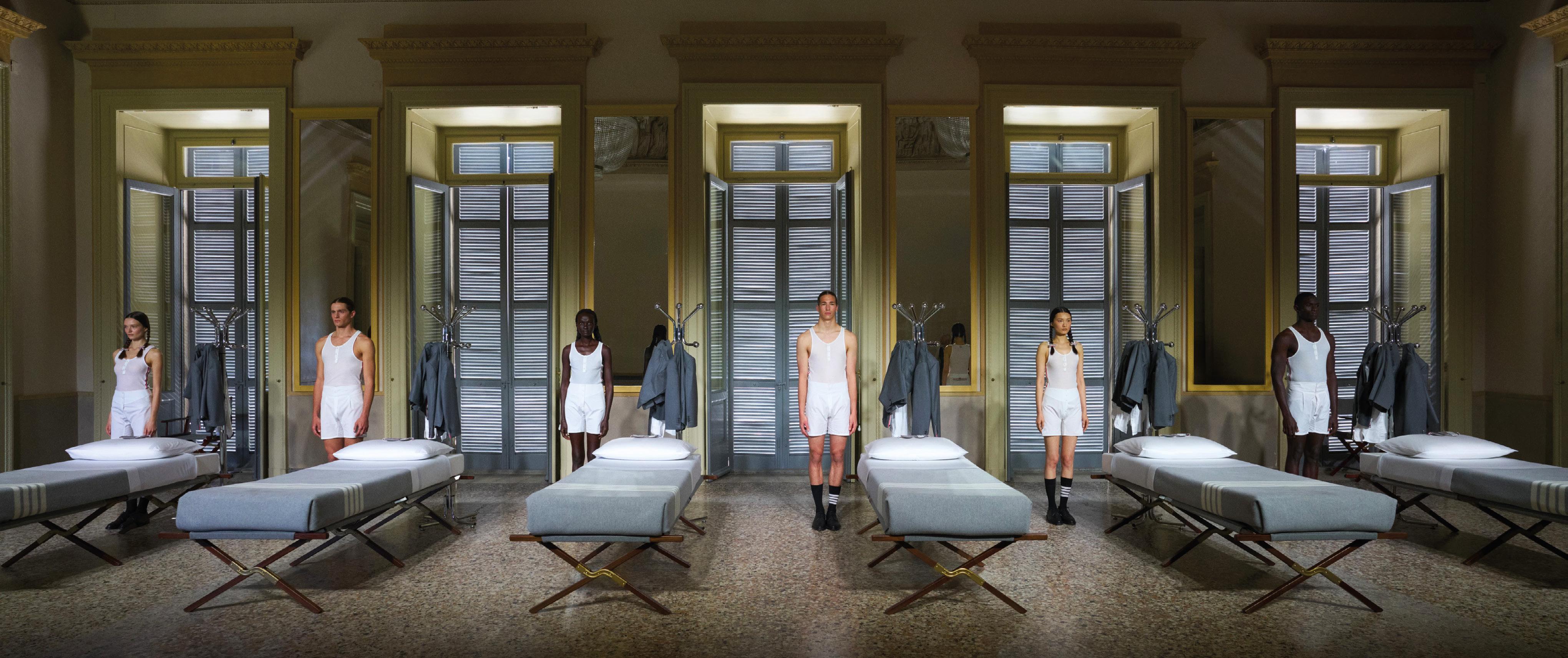
Browne says that collaboration with Frette will be an ongoing collaboration, not a one-off. Believing that creating an installation that transcends its specific context makes a product launch far more interesting and elevated, Browne chose the Grand Hall of Honour in Milan’s Palazzina Appiani for the presentation. The performance, entitled …TIME TO SLEEP…, took place in between six impeccably made beds arranged in perfect formation beneath the neoclassical frescoes commissioned by Napoleon for his family residence at the start of the 19th century.

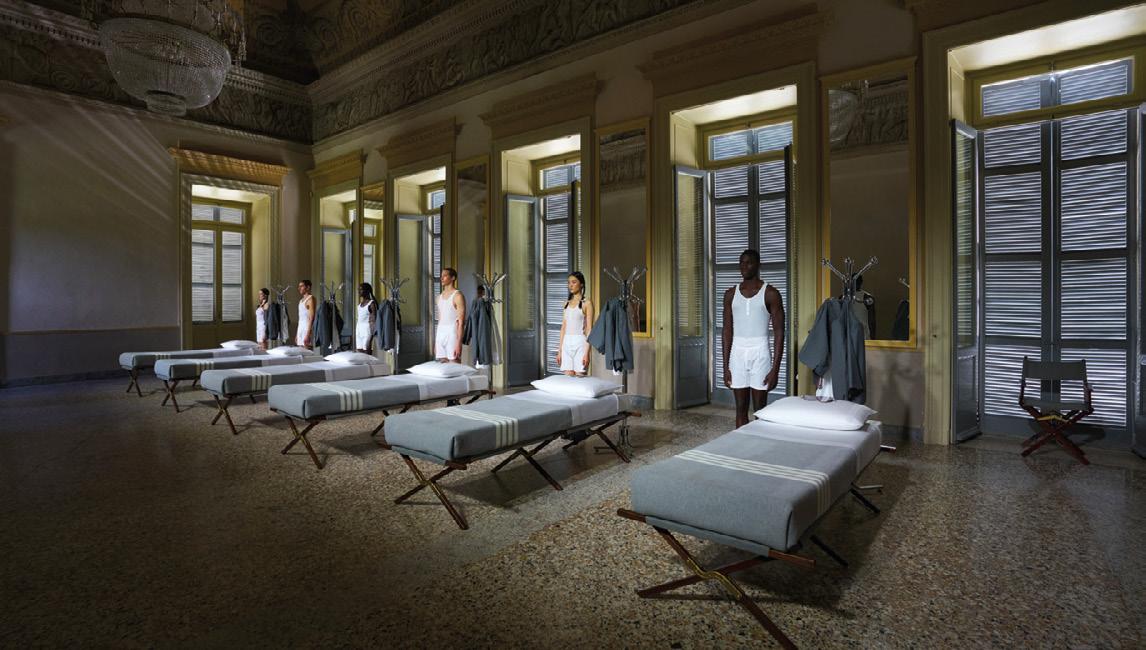

“I knew exactly how I wanted it to look—I wanted it to feel very classic”, said Browne in an interview with Vogue about the designs. The collection includes white sateen sheet sets, grey wool-cashmere blankets, and plush terry cotton towels. Naturally, each piece features a Thom Browne twist: the sheets are adorned with four lines of grey embroidery, referencing his signature stripe motif, while his tricolour grosgrain tabs are visible on the cuffs and back collars of the bathrobes. “It’s about focusing on a single idea, and letting people sit with that.”

Browne’s debut at Milan Design
Week pays homage to his first show in Europe at Pitti in 2009, where 40 models lined up beside corresponding desks and typed on typewriters.
Acknowledging it as one of the iconic moments of his career in the past two decades, Browne explained that with this performance, the aim was to contextualize the collection in a manner authentic to its essence, while also referencing the Pitti show. “Then it was desks, now it’s beds.”
runway presentations, which have gained global attention for their thought-provoking and dramatic themes and settings.
Browne has been honoured with the CFDA Menswear Designer of the Year Award (2006, 2013, 2016), the GQ Designer of the Year (2008), the FIT Couture Council Award (2017), and the Cooper Hewitt National Design Award (2012). His designs are recognised by museums around the world, including the Costume Institute at the Metropolitan Museum of Art, the Museum of Modern Art, the Victoria & Albert Museum, the Costume Museum at Bath, and the Mode Museum Antwerpen.
The brand is currently offered in over 300 leading department stores and speciality boutique doors across 40 countries and through 110 retail stores, flagships, and shop-in-shops in key cities such as New York, London, Milan, Tokyo, Hong Kong, Beijing, Shanghai, Seoul, San Francisco, Singapore, Vancouver, and Kobe. Since 2018, Thom Browne has been part of the Zegna Group, which currently retains 90% ownership and is publicly traded on the NYSE.
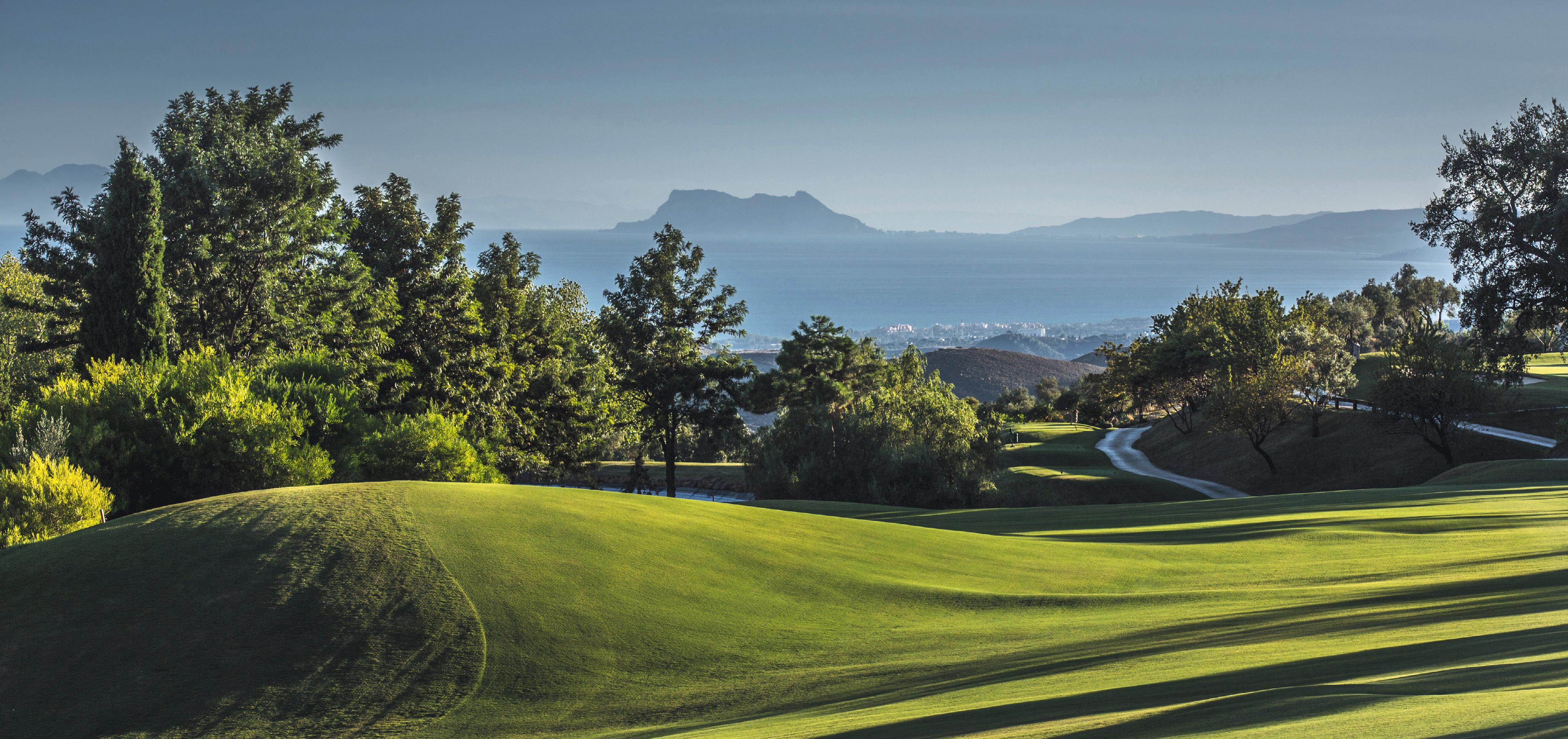
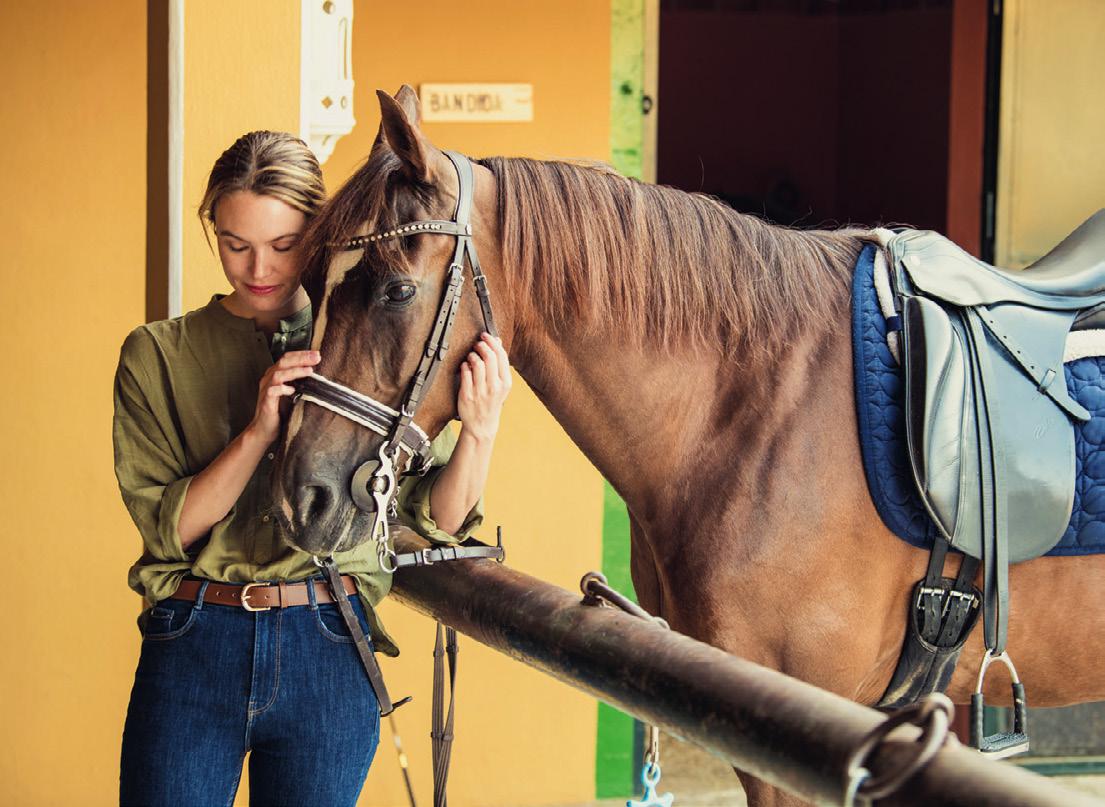





www.lazagaleta.com
